This article was last updated on: October 2018
This North Korea article is kind of long and thus is divided into seven (7) parts. You are about to start reading part three (3). Choose here any other part you may want to go to: | One (1) | Two (2) | Four (4) | Five (5) | Six (6) | Seven (7) |
War is a very present situation in this country’s life. It’s technically ongoing, as a matter of fact. And that makes it obvious that they should have a museum about the 1950-1953 war.
And indeed they do. The museum’s official name is “Victorious Fatherland War Liberation Museum”.
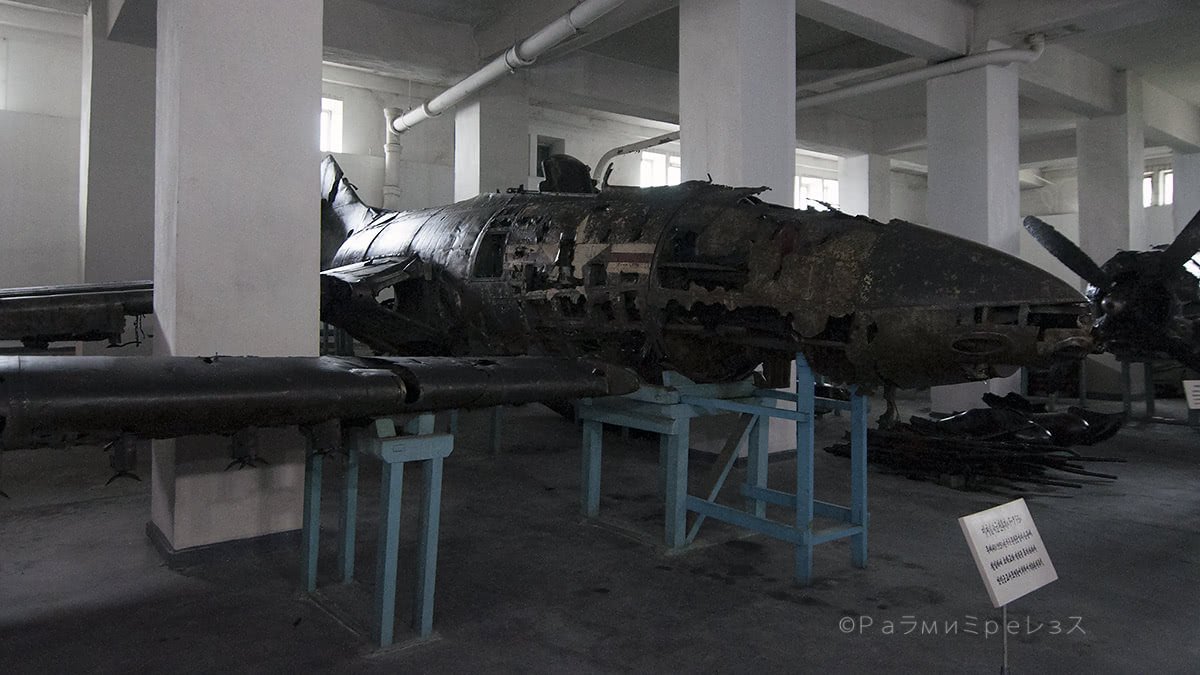
Inside, they tell you the history of the war according to the north. There are very interesting exhibits of many things, including downed enemy warplanes.
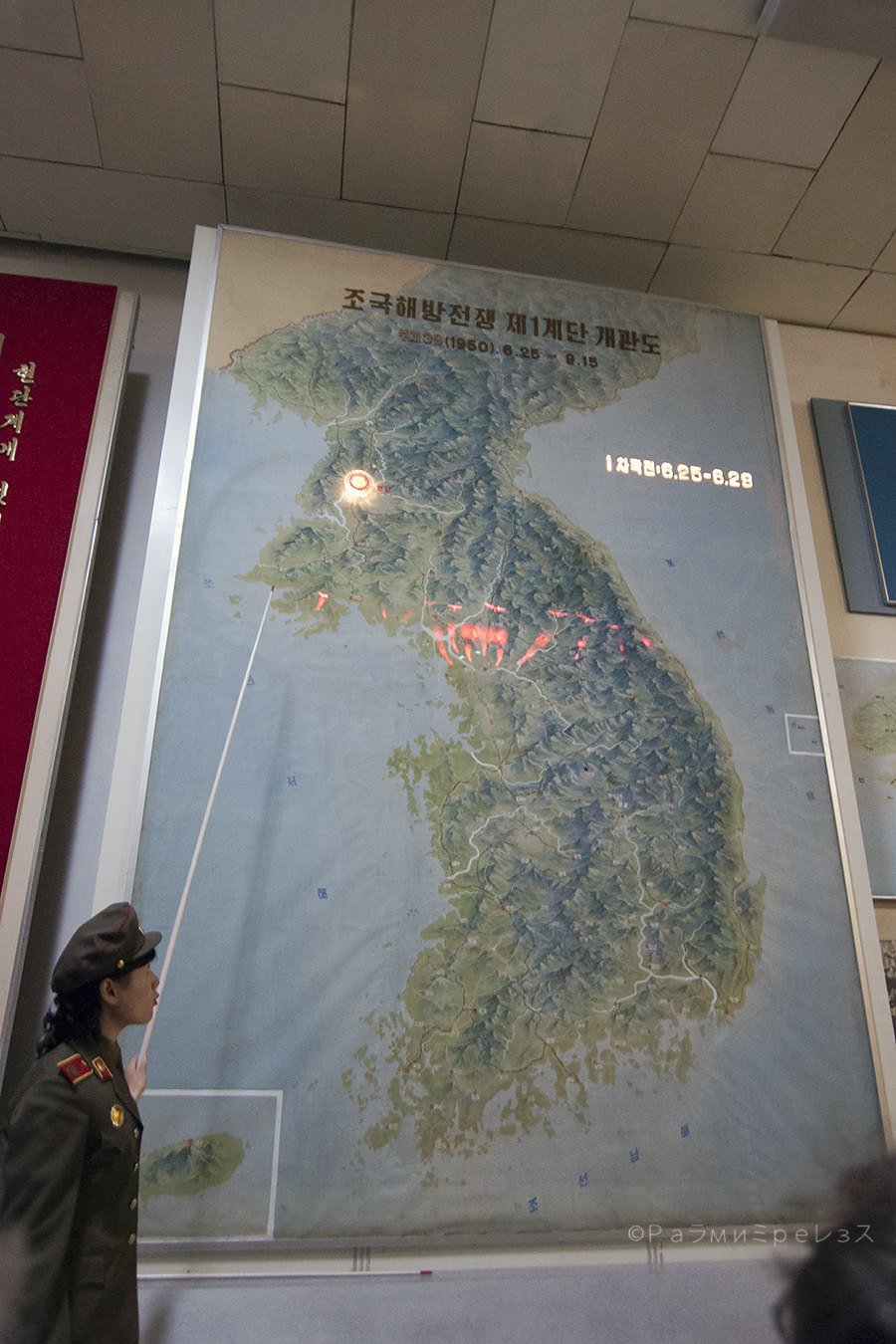
Ramírez.
Some newspaper clippings are on display, as well as the “confession” of a Helicopter Pilot that was downed in 1994 when he passed the border. Allegedly, because he was lost.
They shot at him, they downed him, his partner died, and they released him after 13 days. His freedom came only after having “confessed” to his terrible crime.
Those “confessions” are commonplace whenever North Korea captures someone.
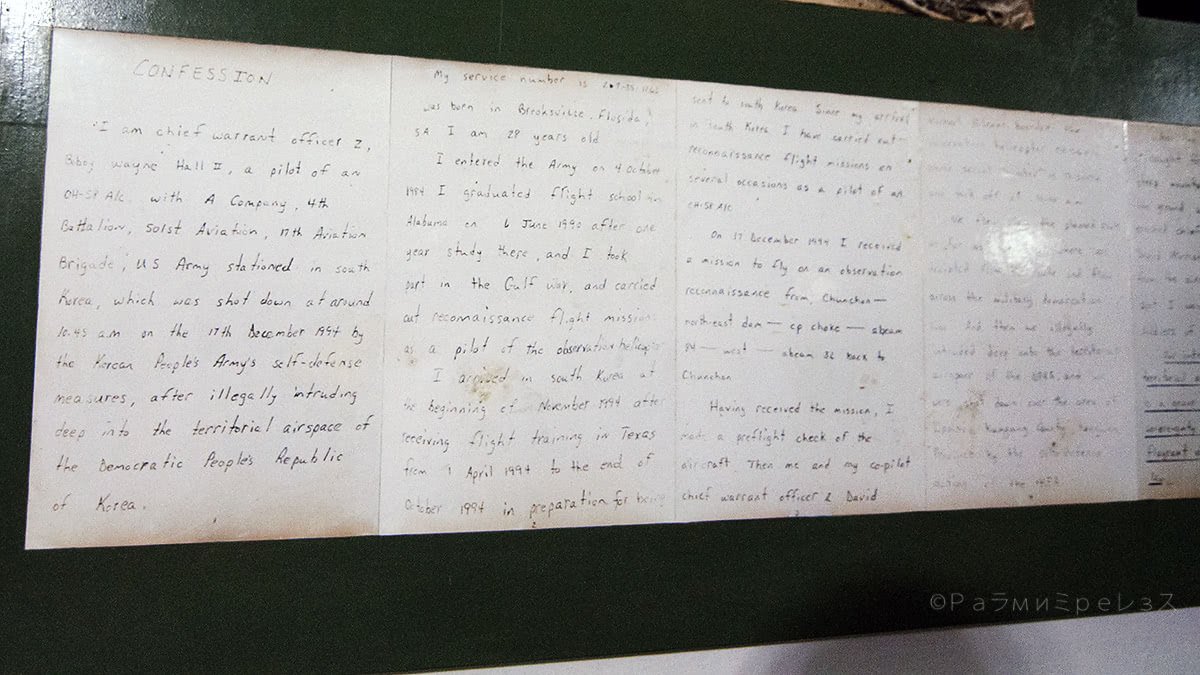
The building could have used better lighting when I visited.
My understanding is that they moved the museum to another location one year after I visited, and the new one is much better.
They also moved the USS Pueblo right beside the new building, but I’ll write about that later.

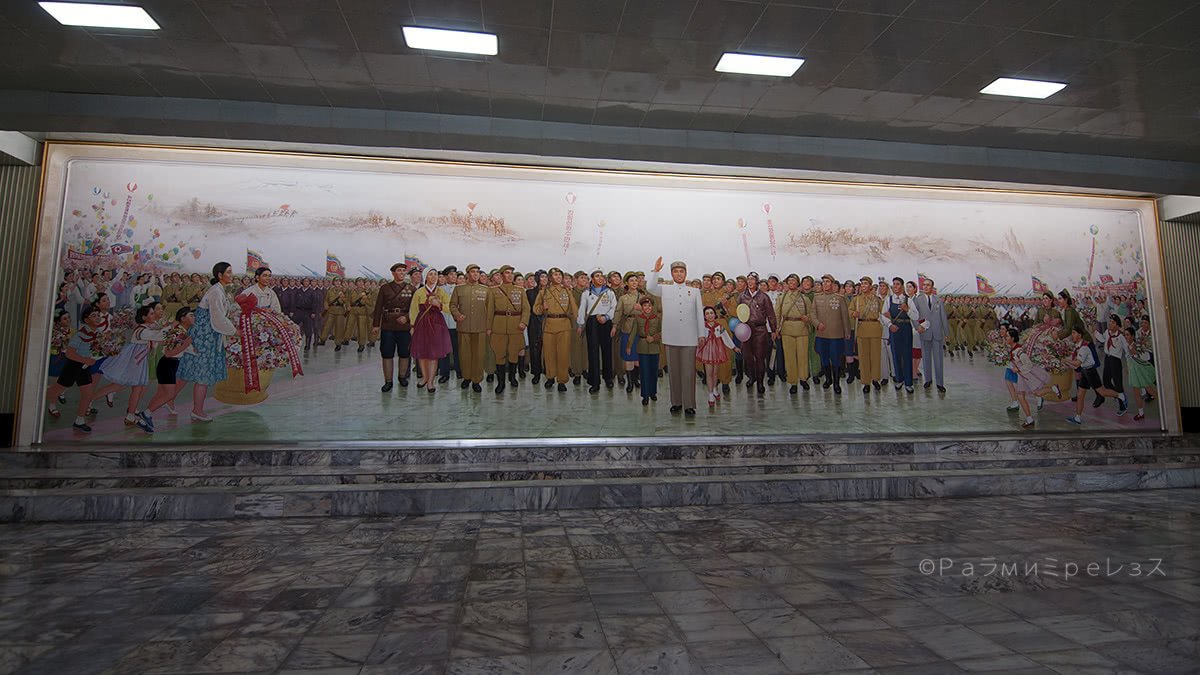
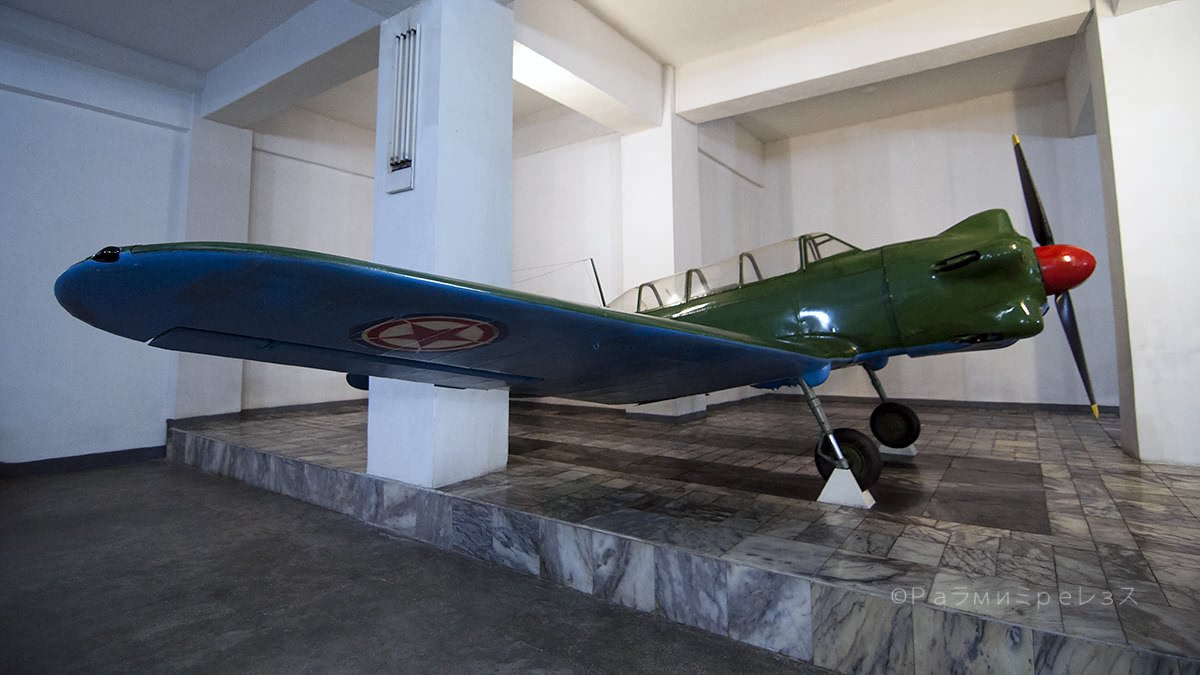
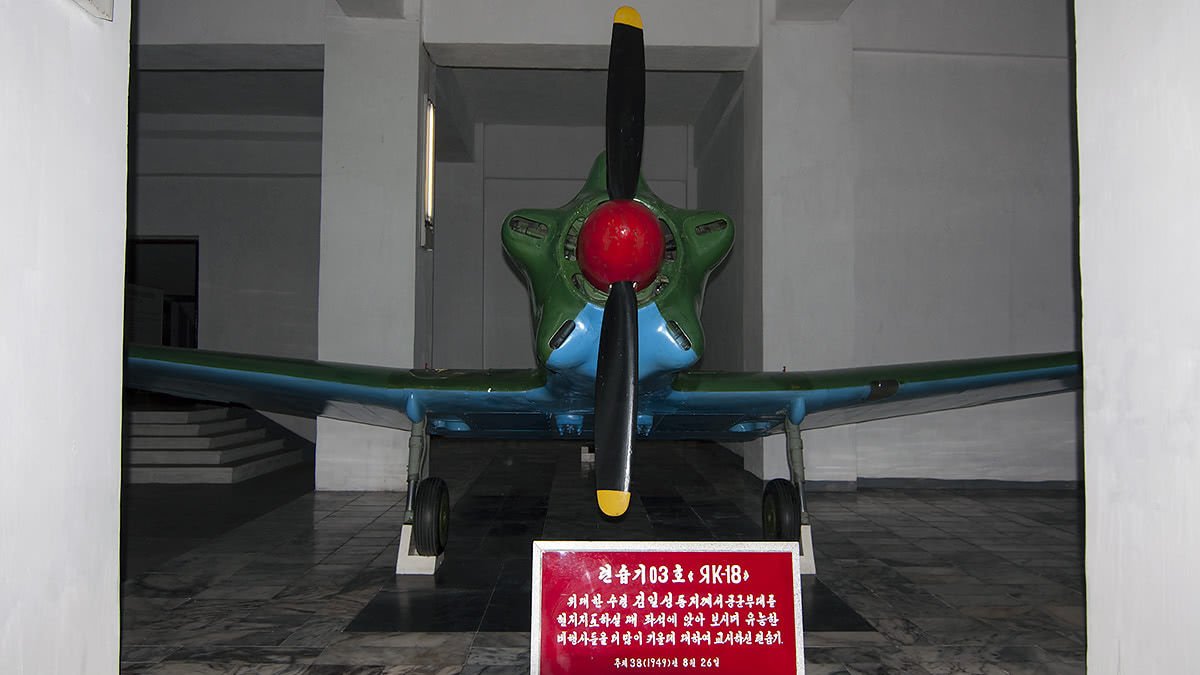

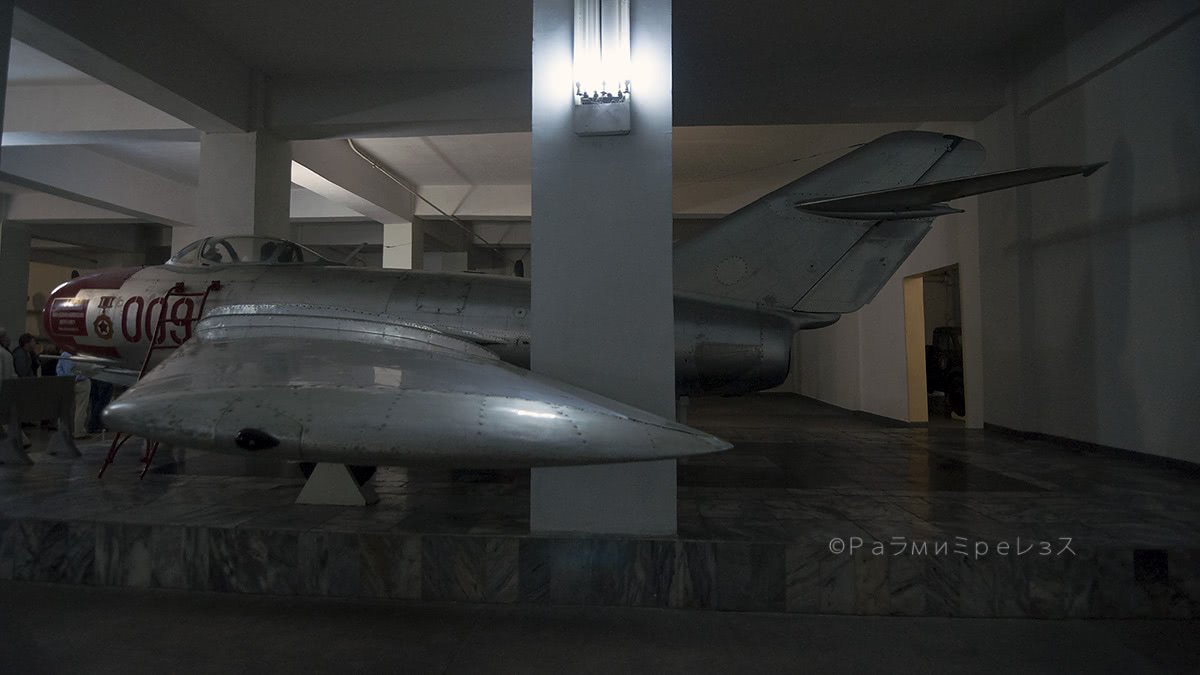
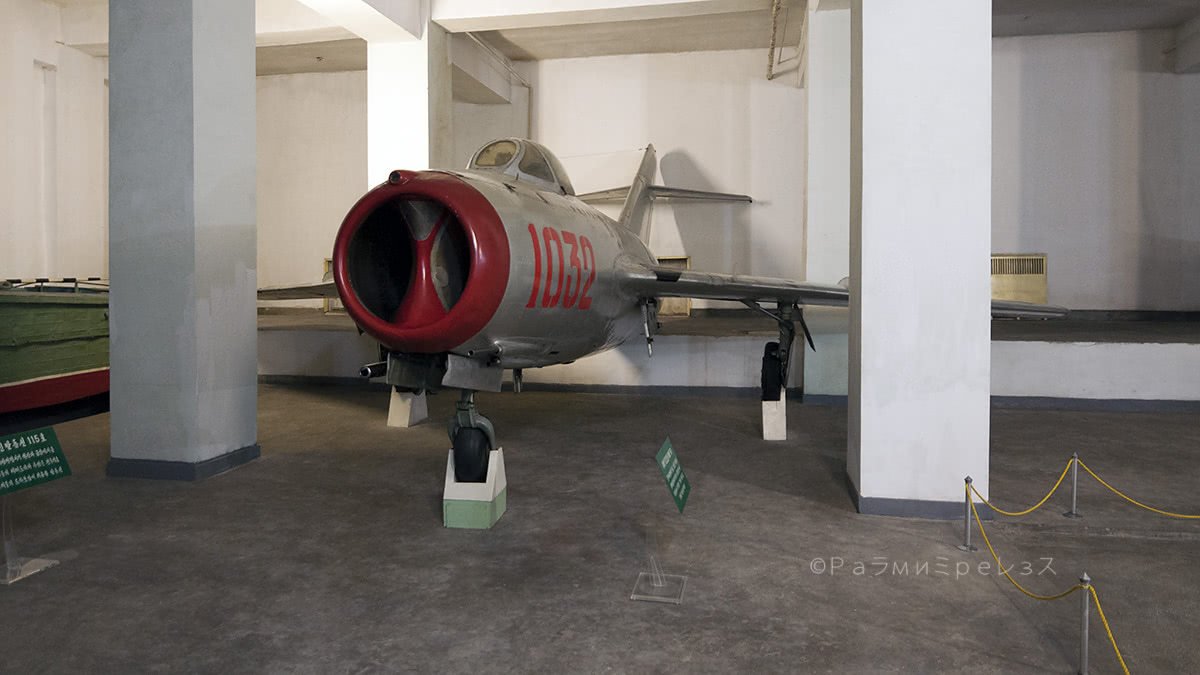
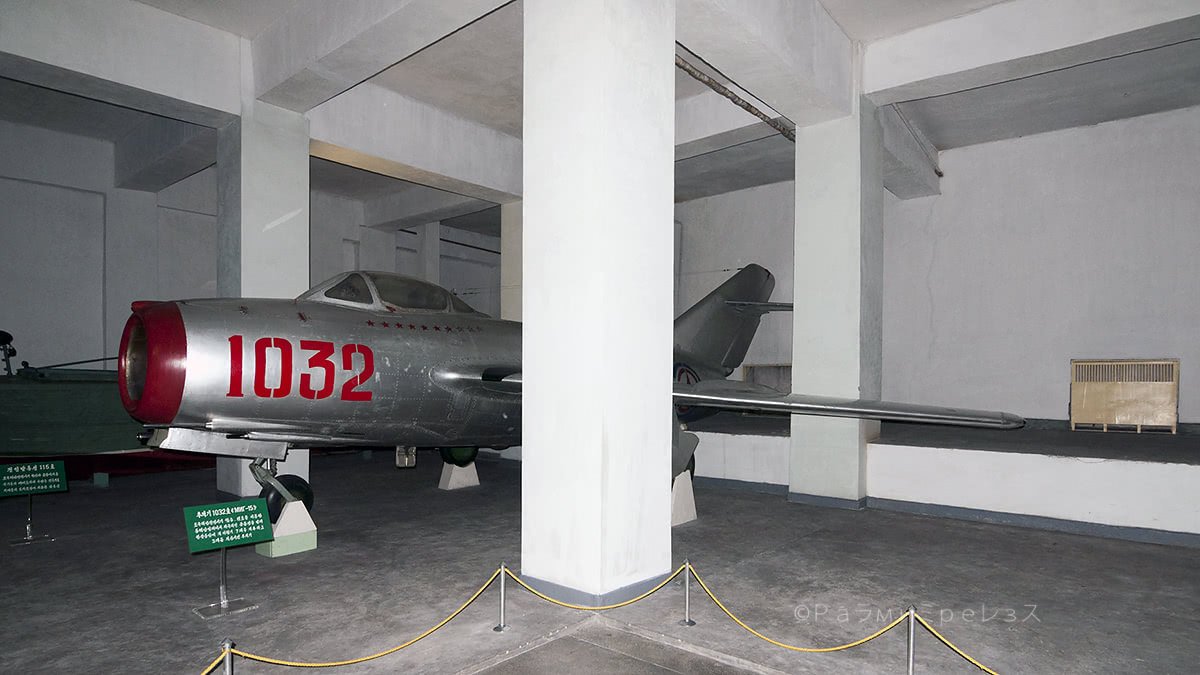
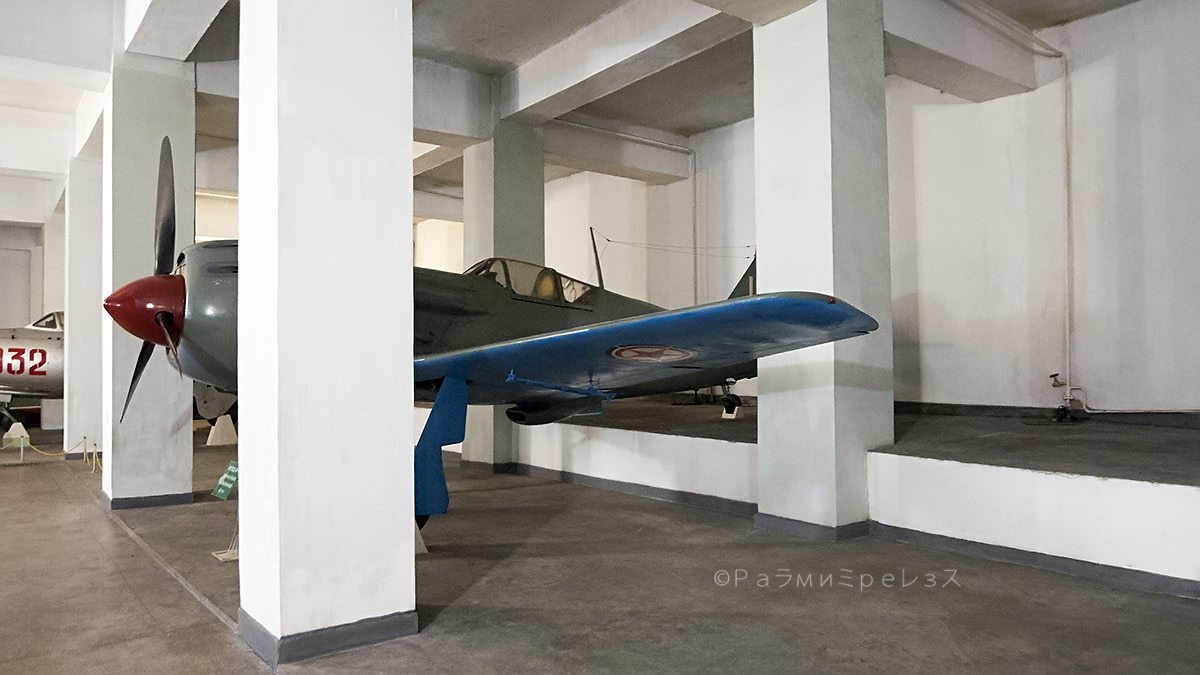
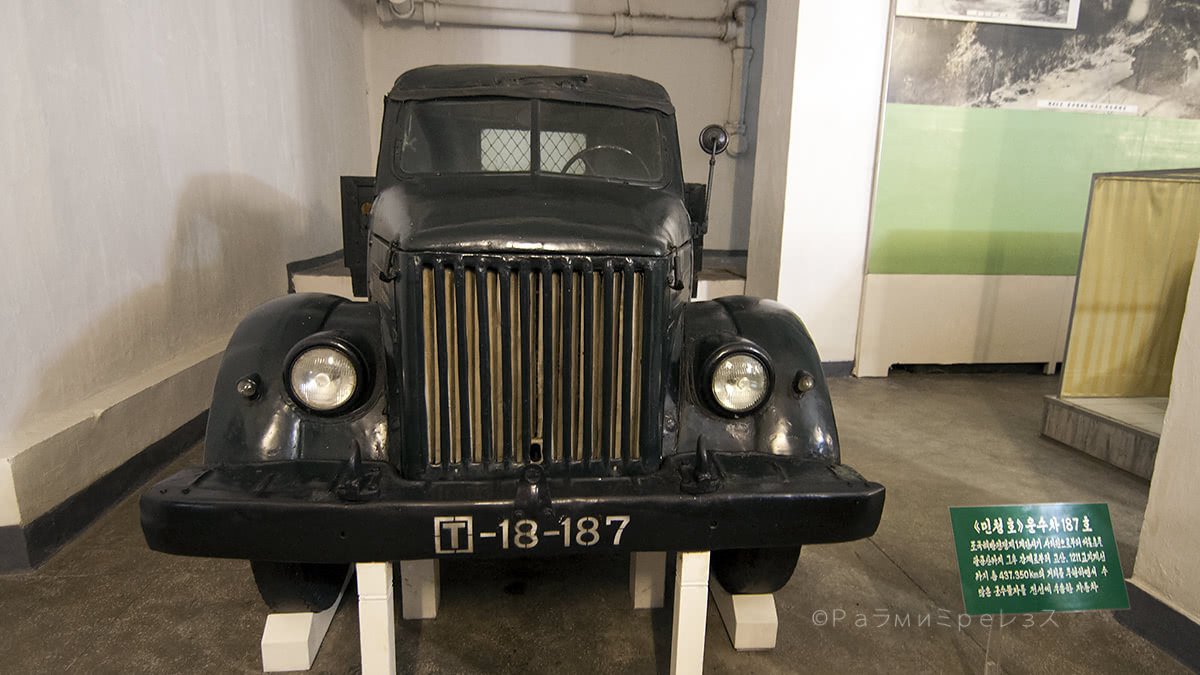

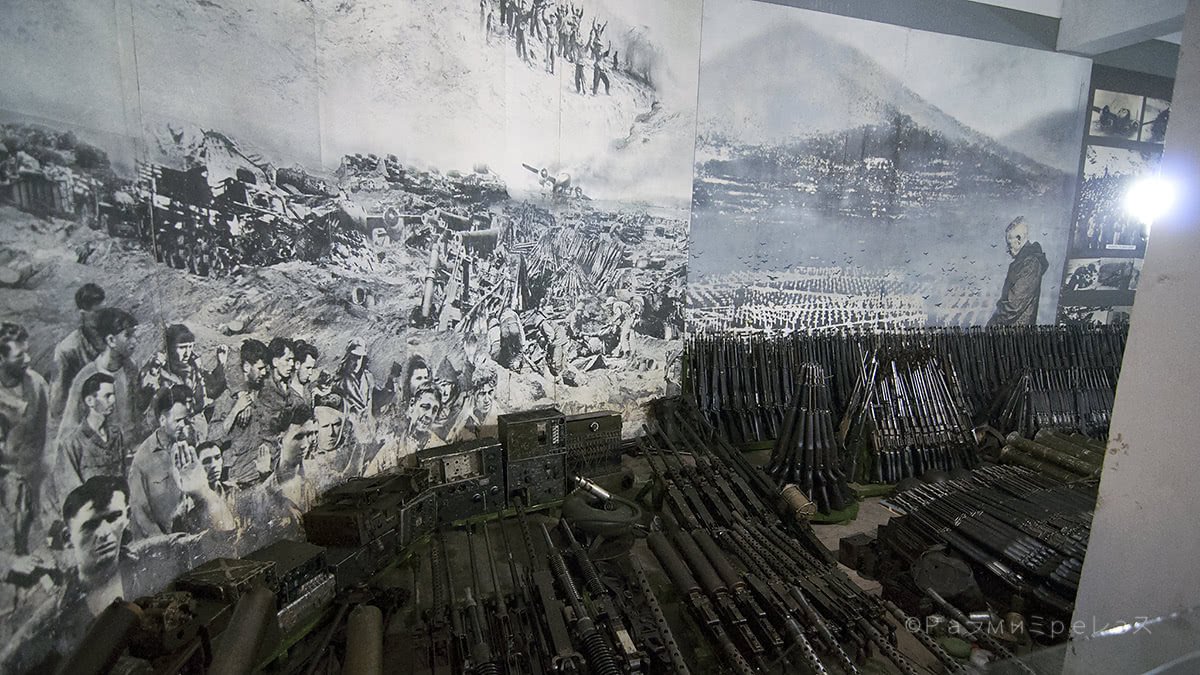
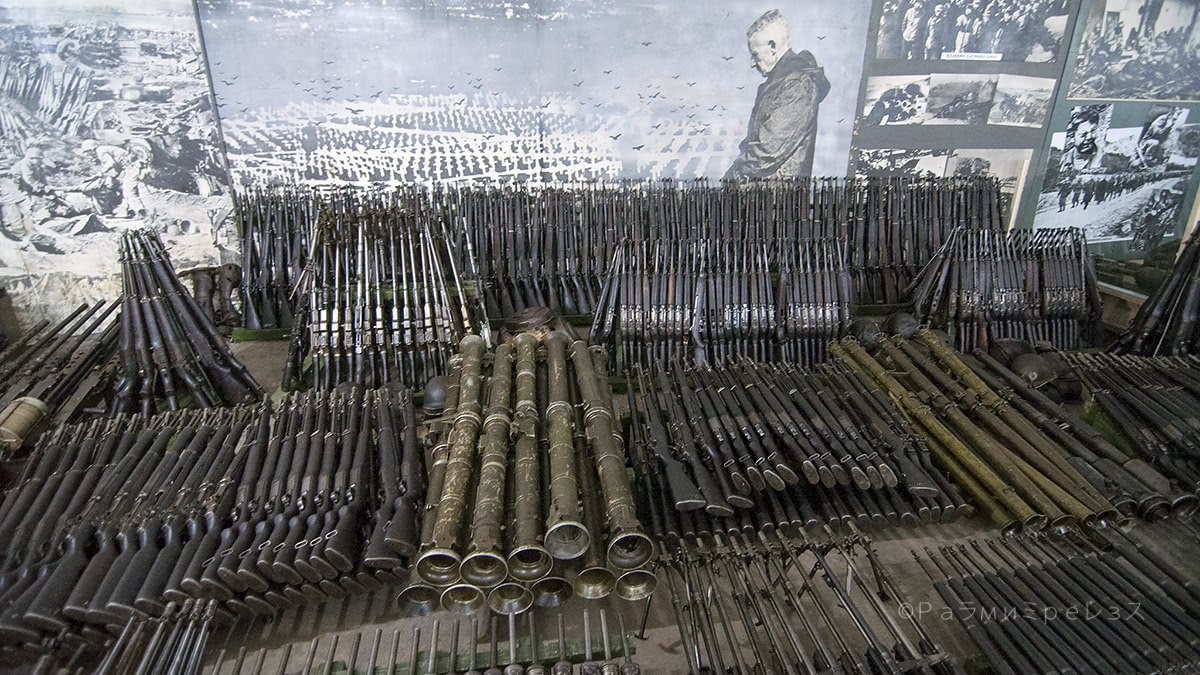
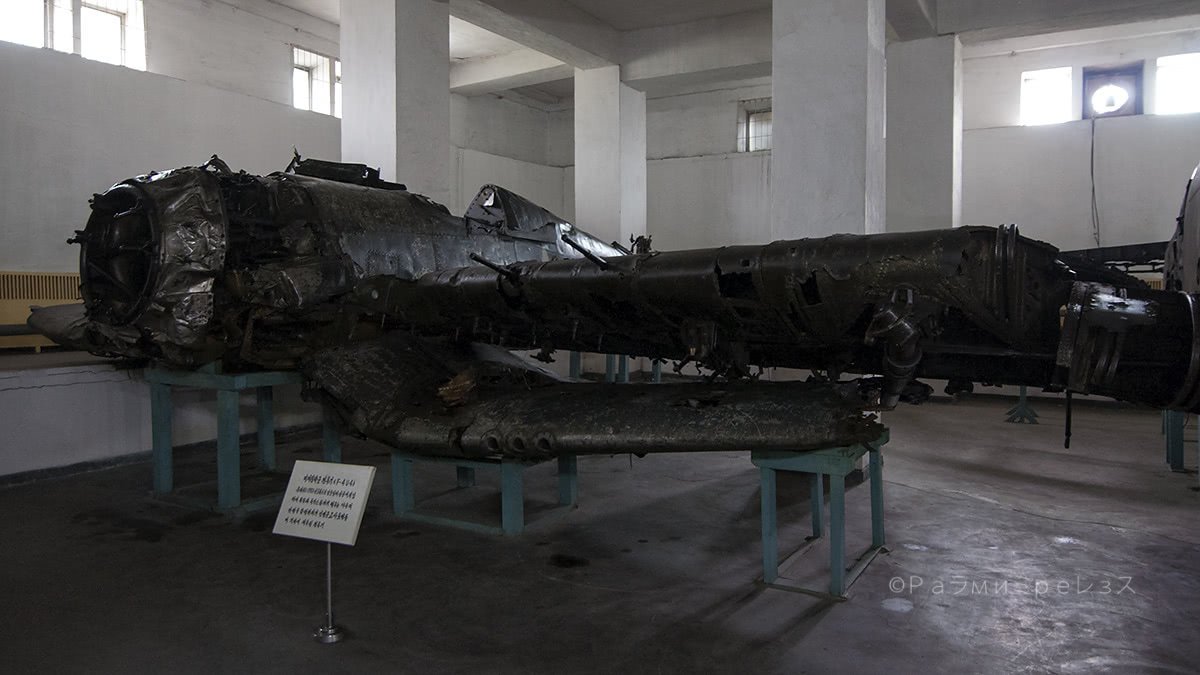
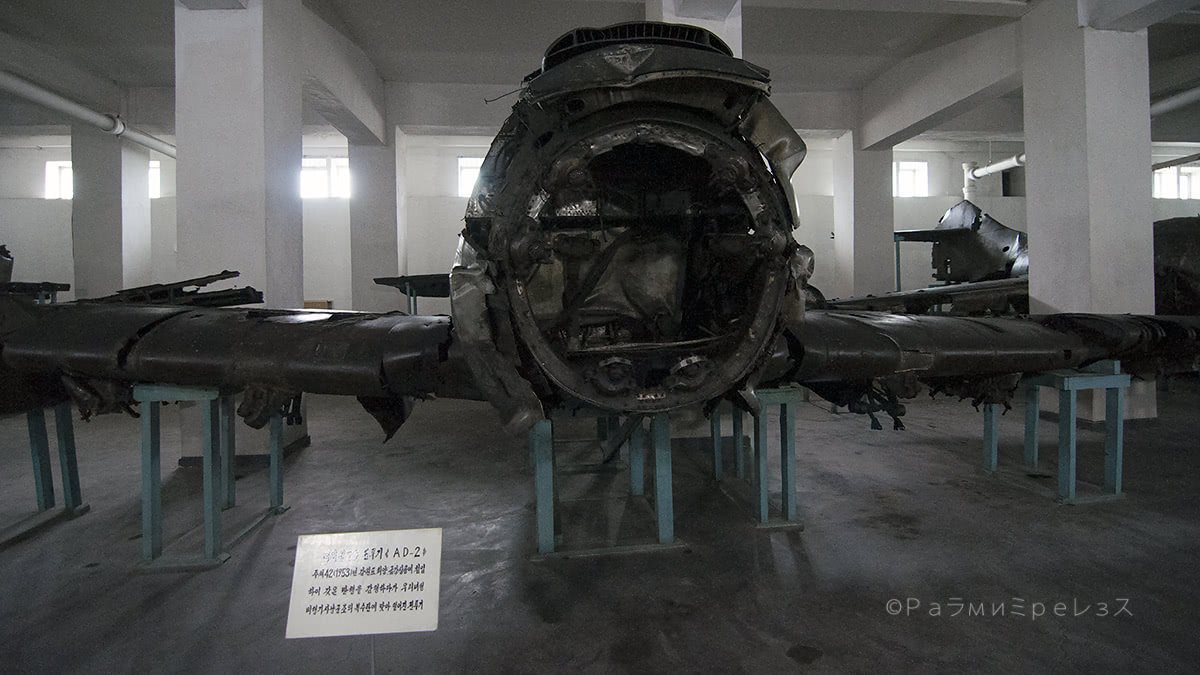

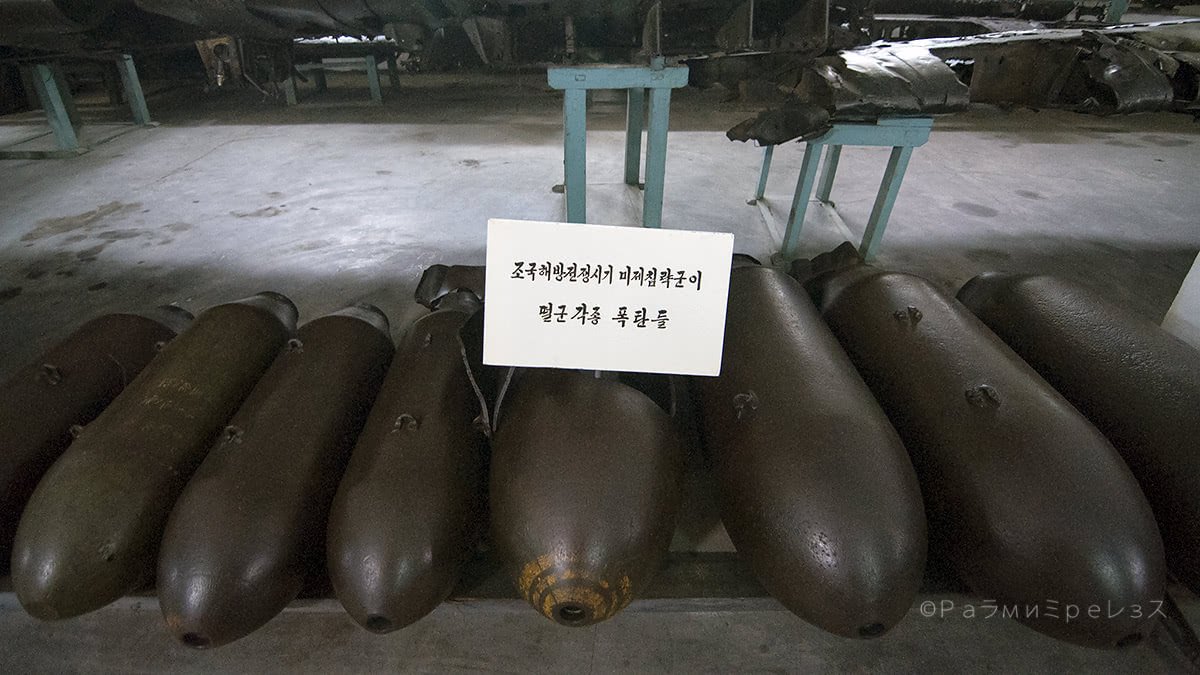

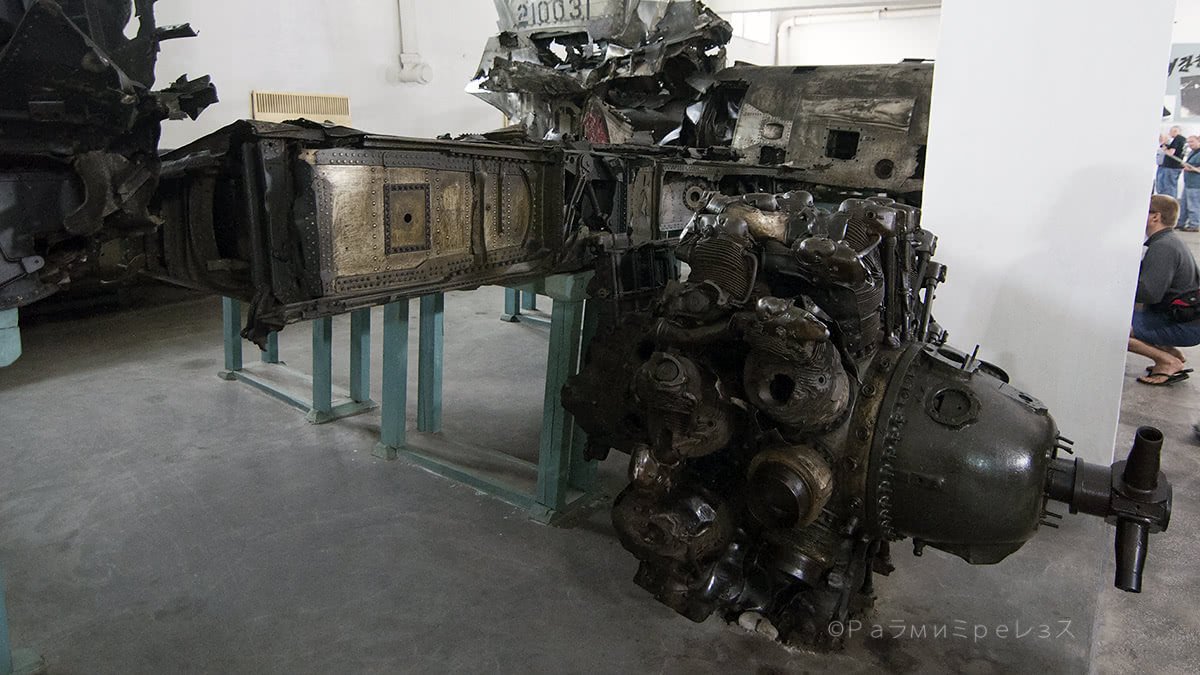
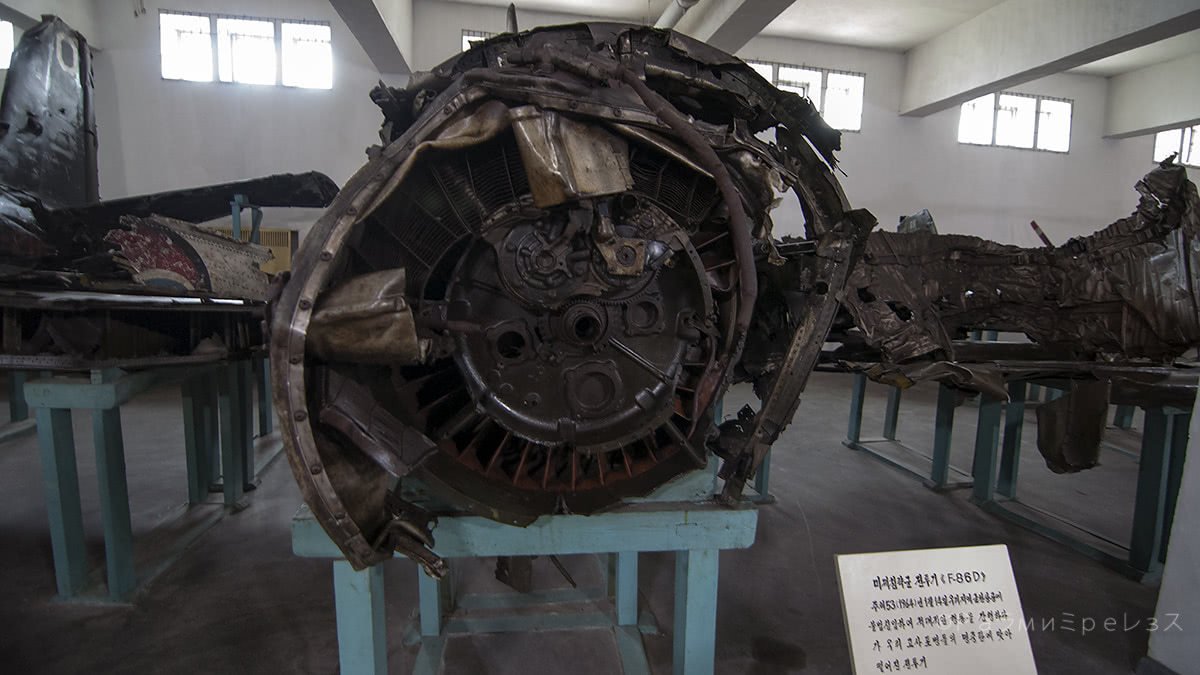
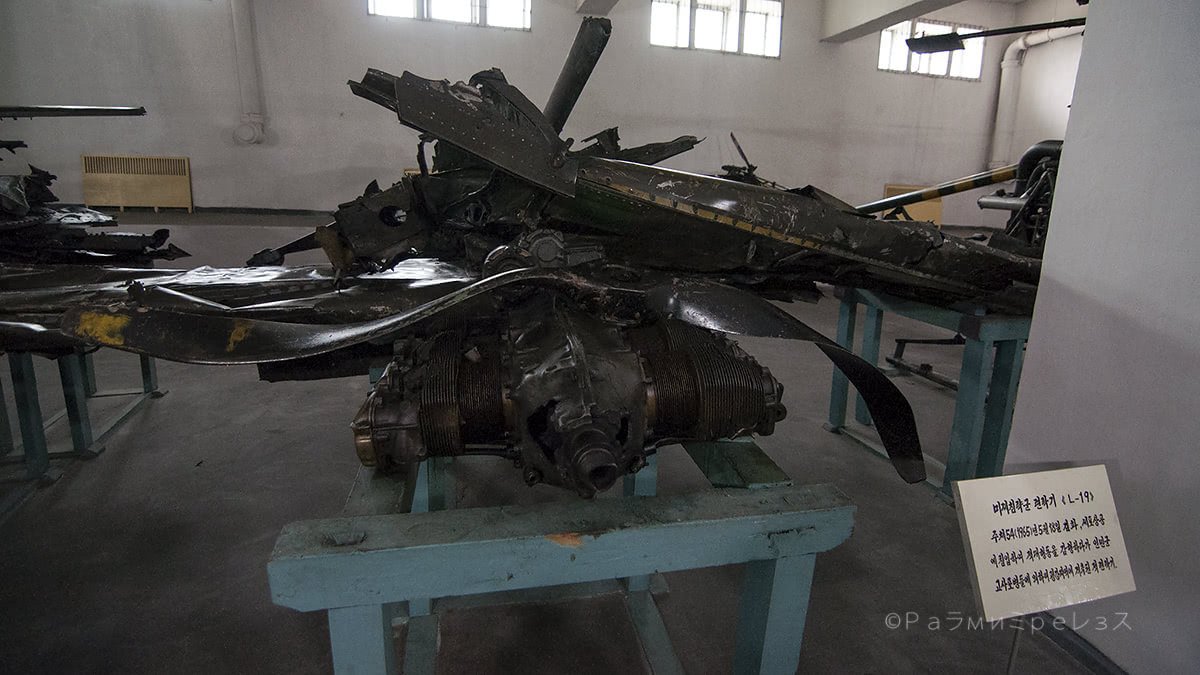
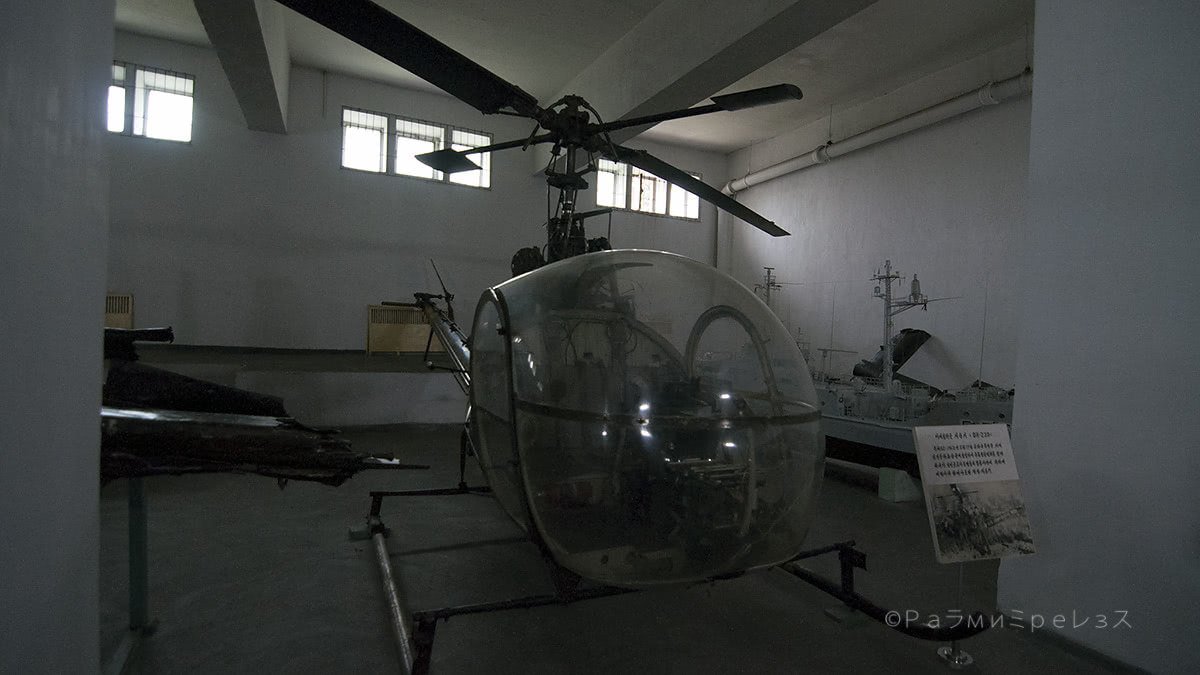
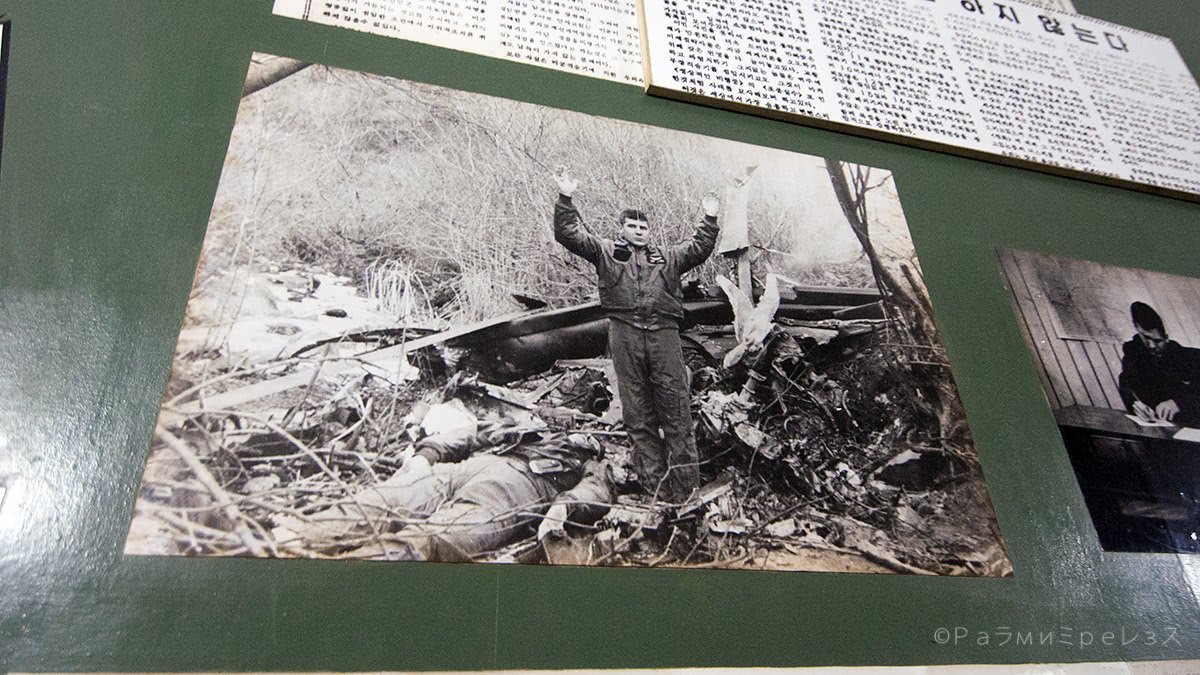
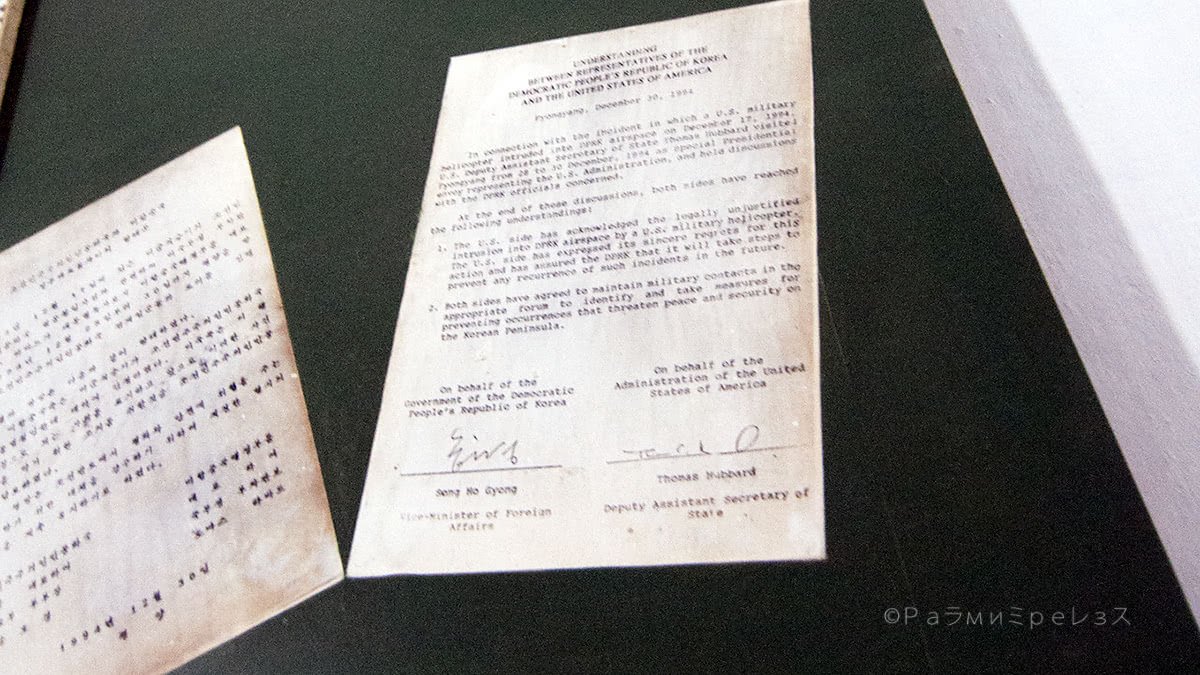
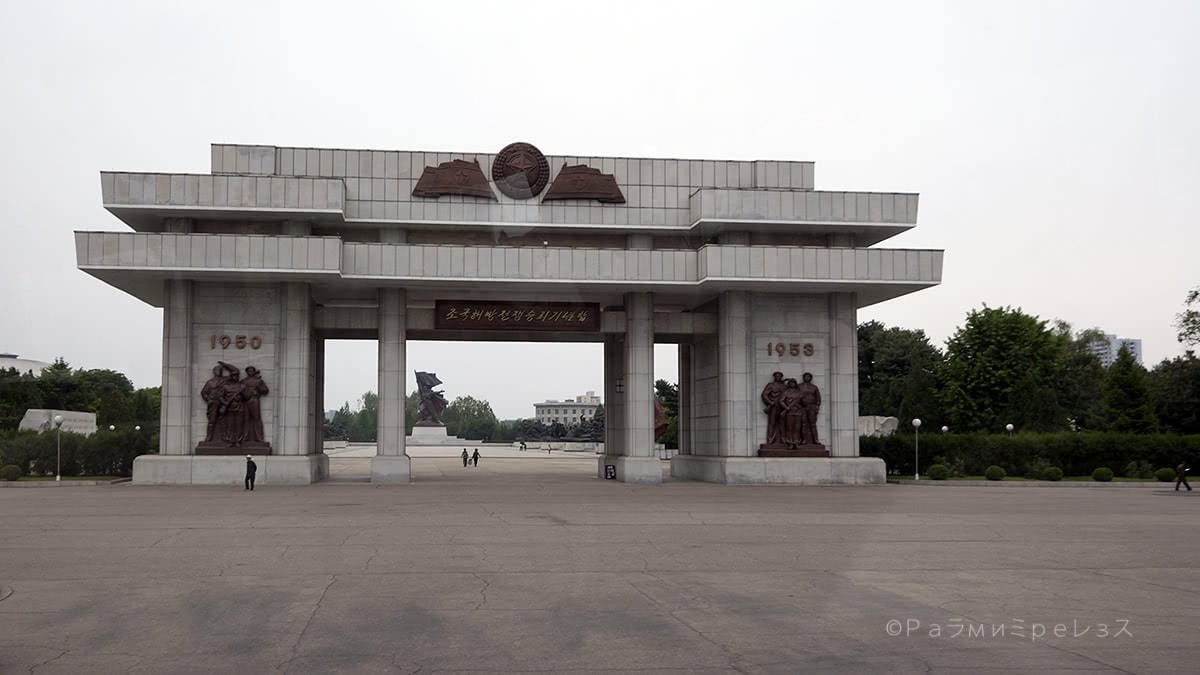
Victorious Fatherland War Liberation Museum
There’s also a very well-made (in my opinion) diorama about the Taejon Battle, one of the so many battles they had in the Korea war.
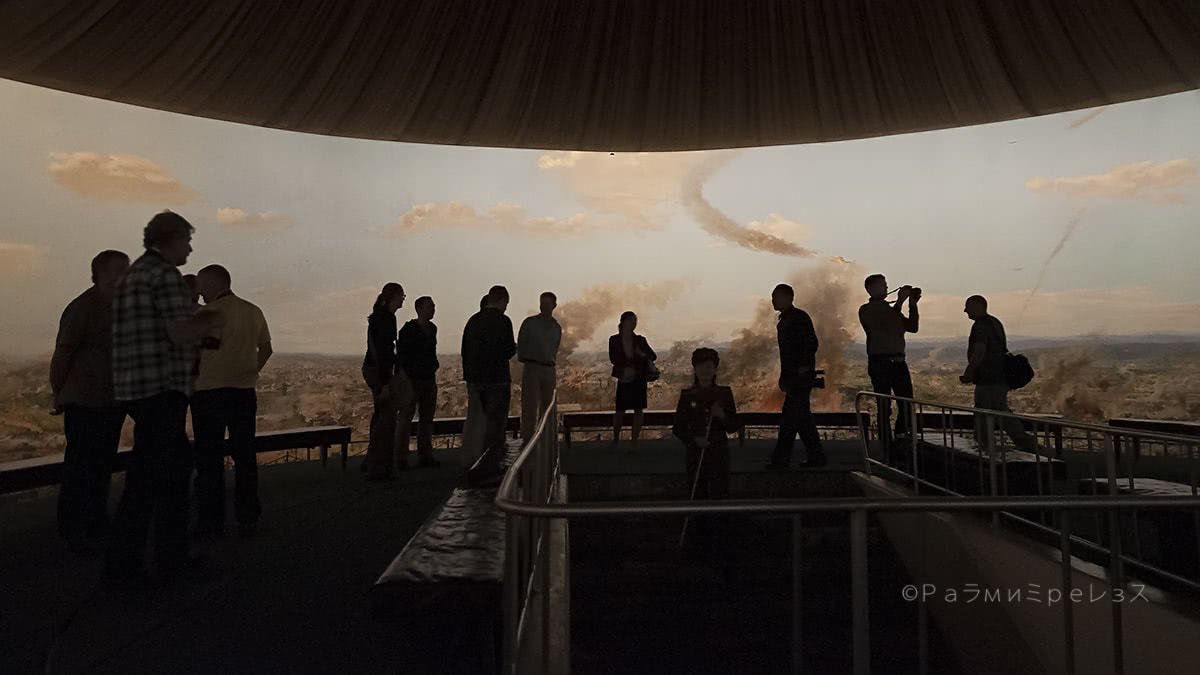
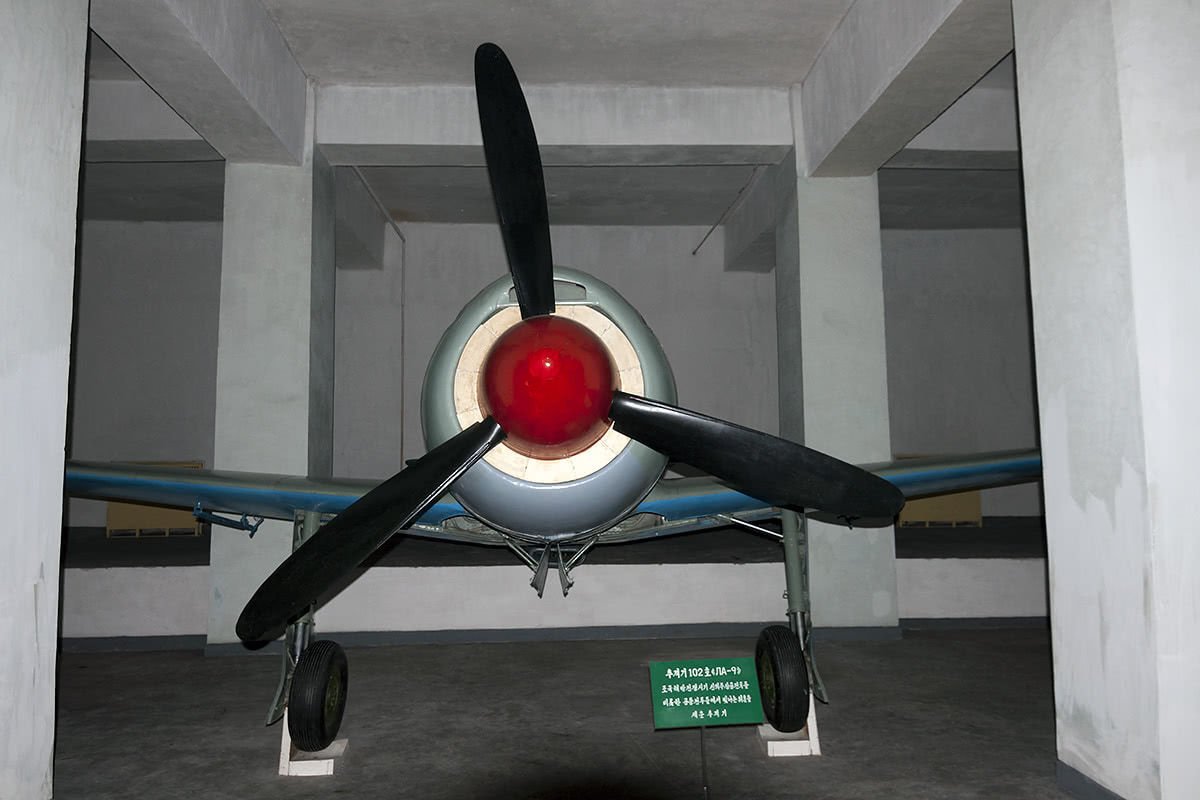
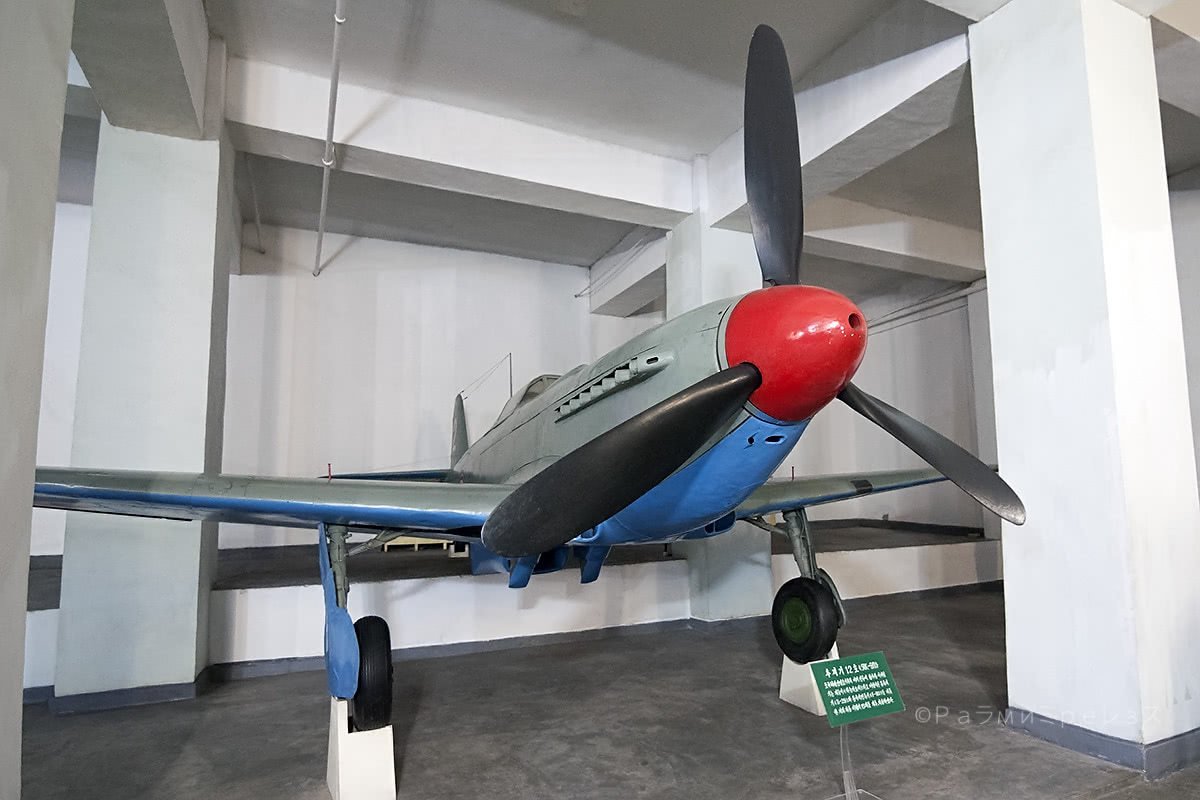
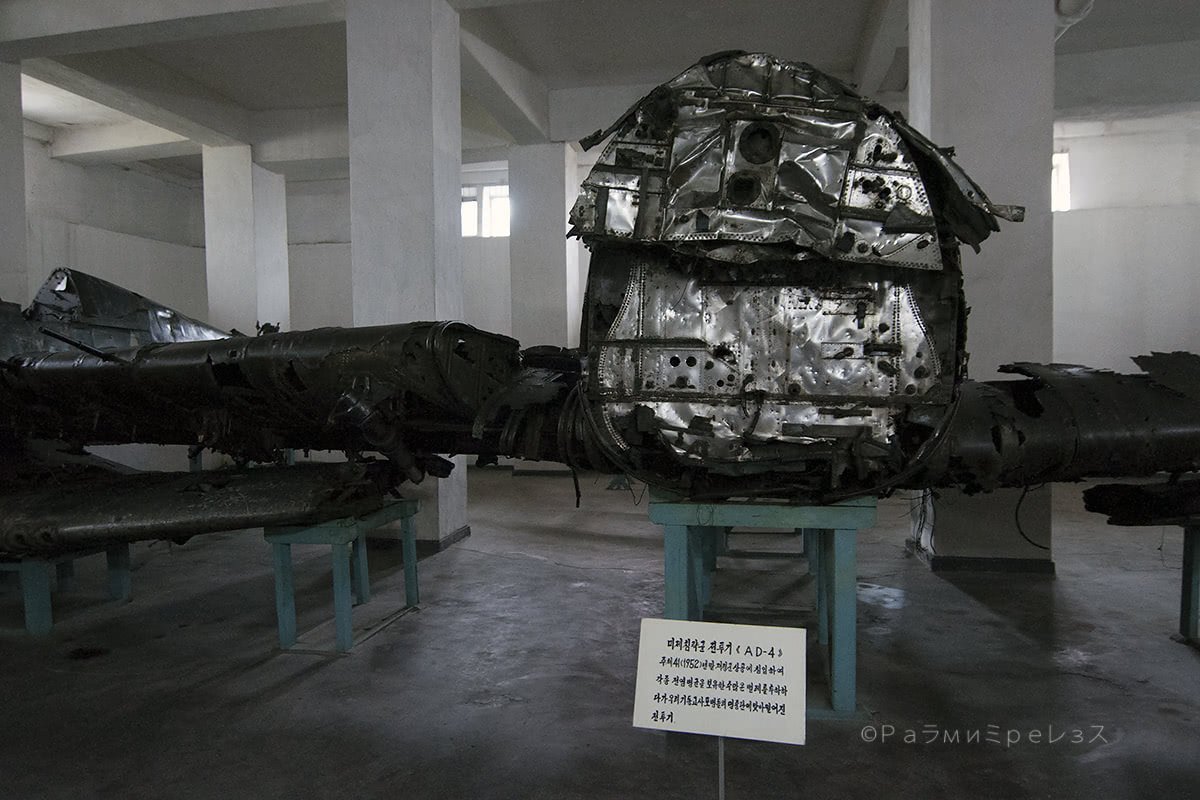
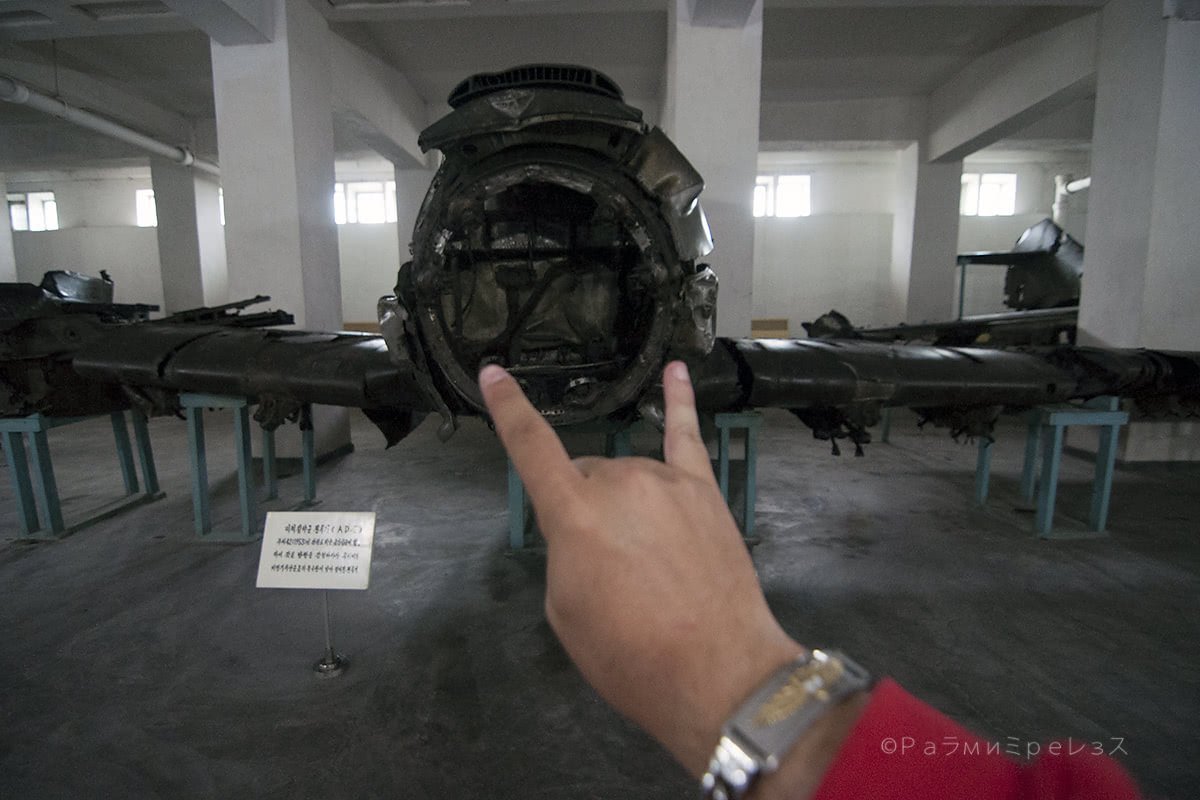
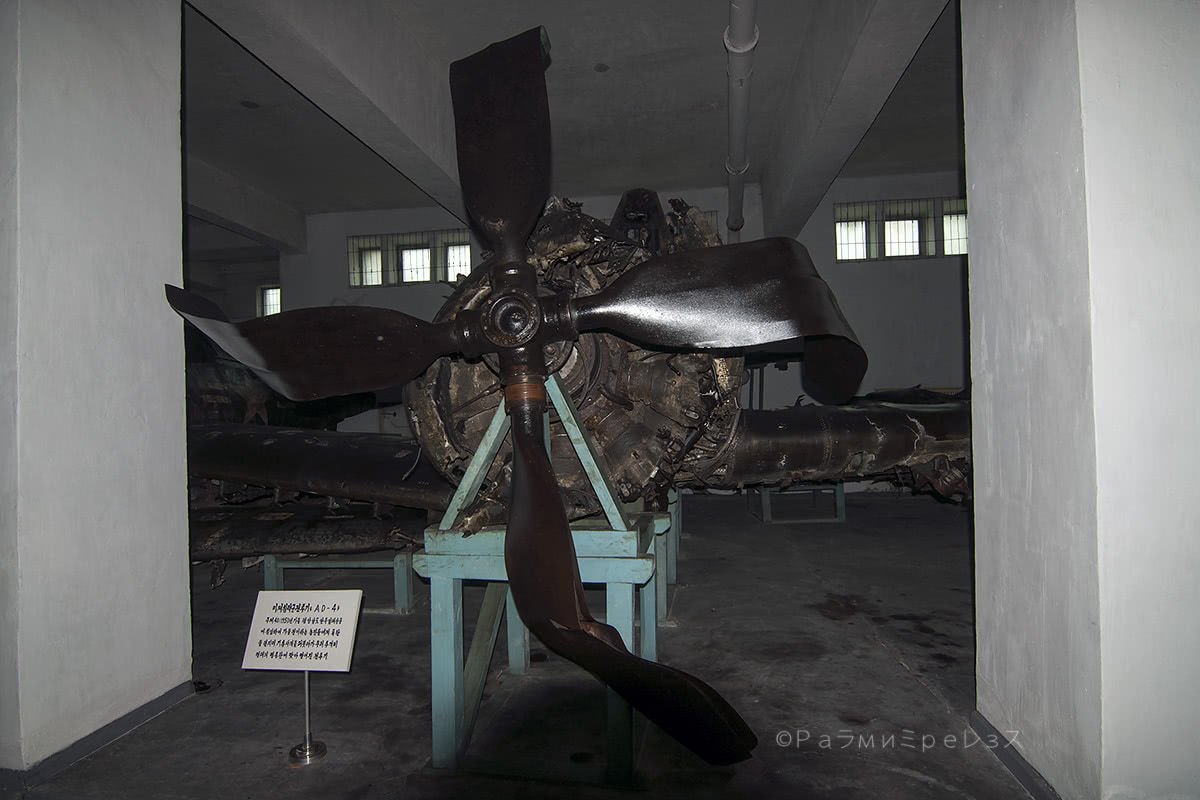
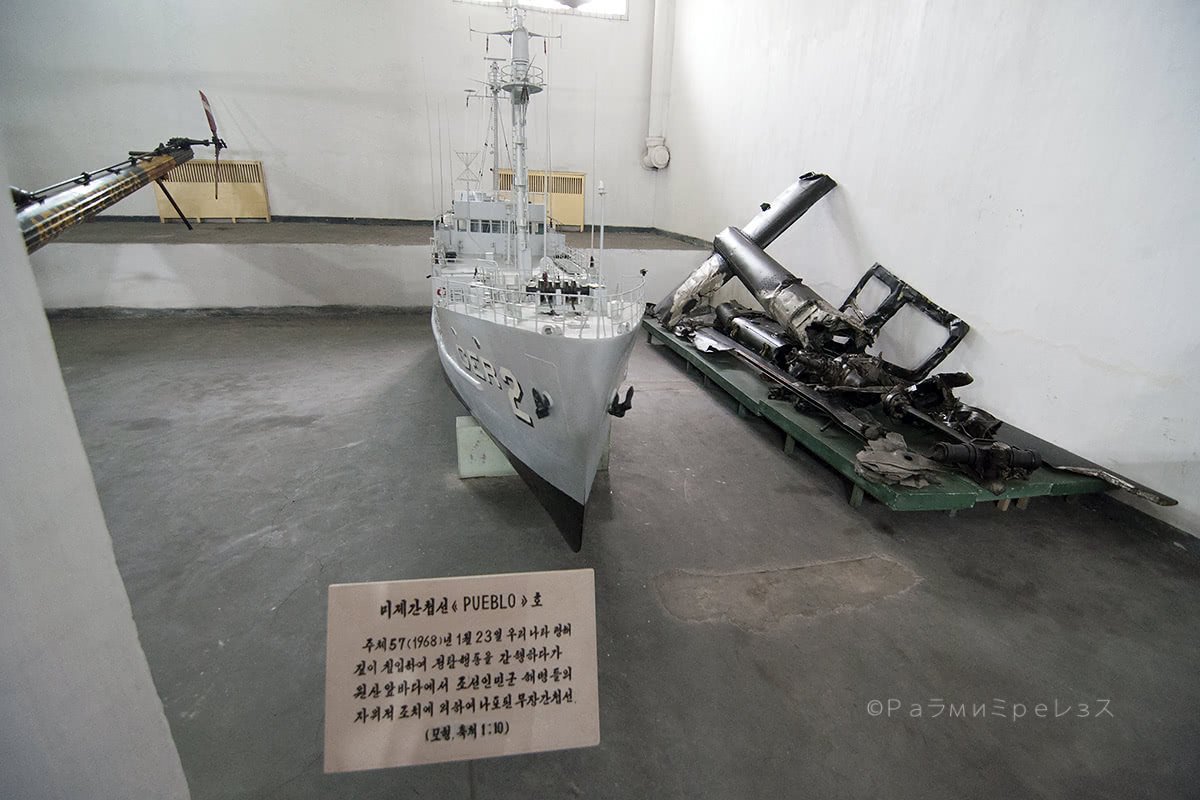
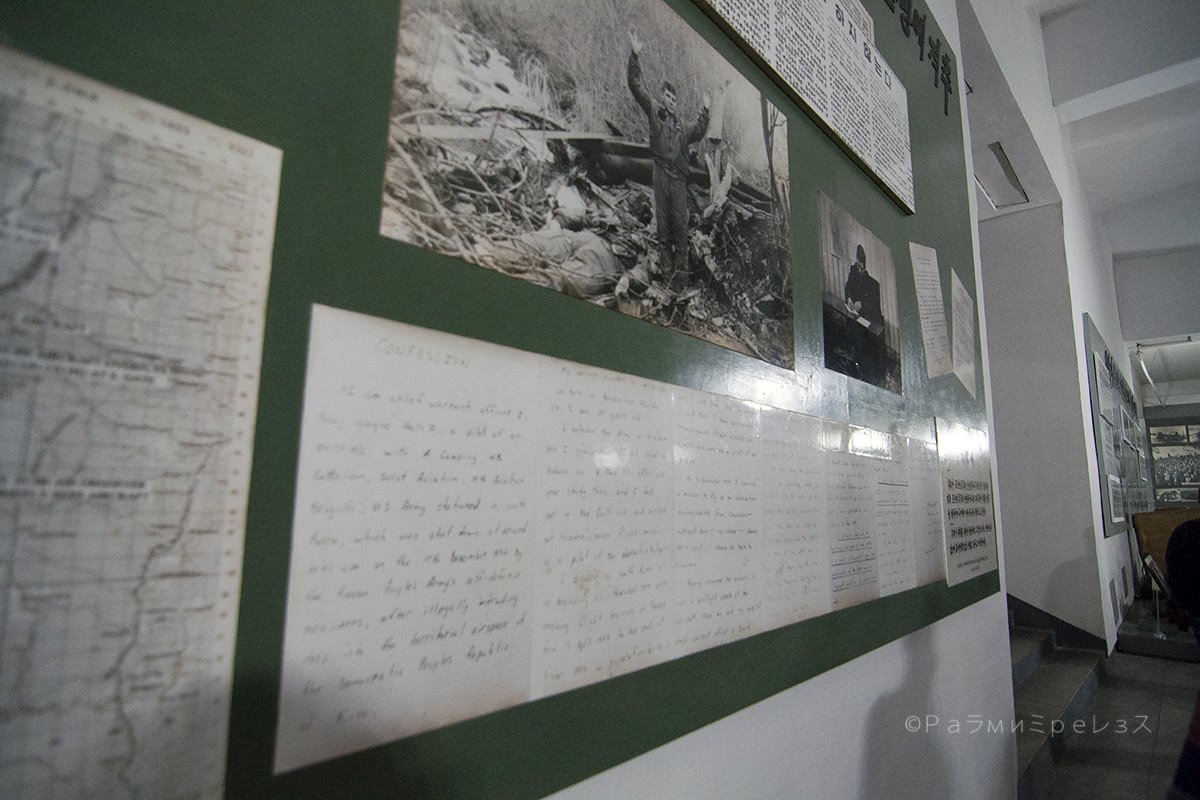

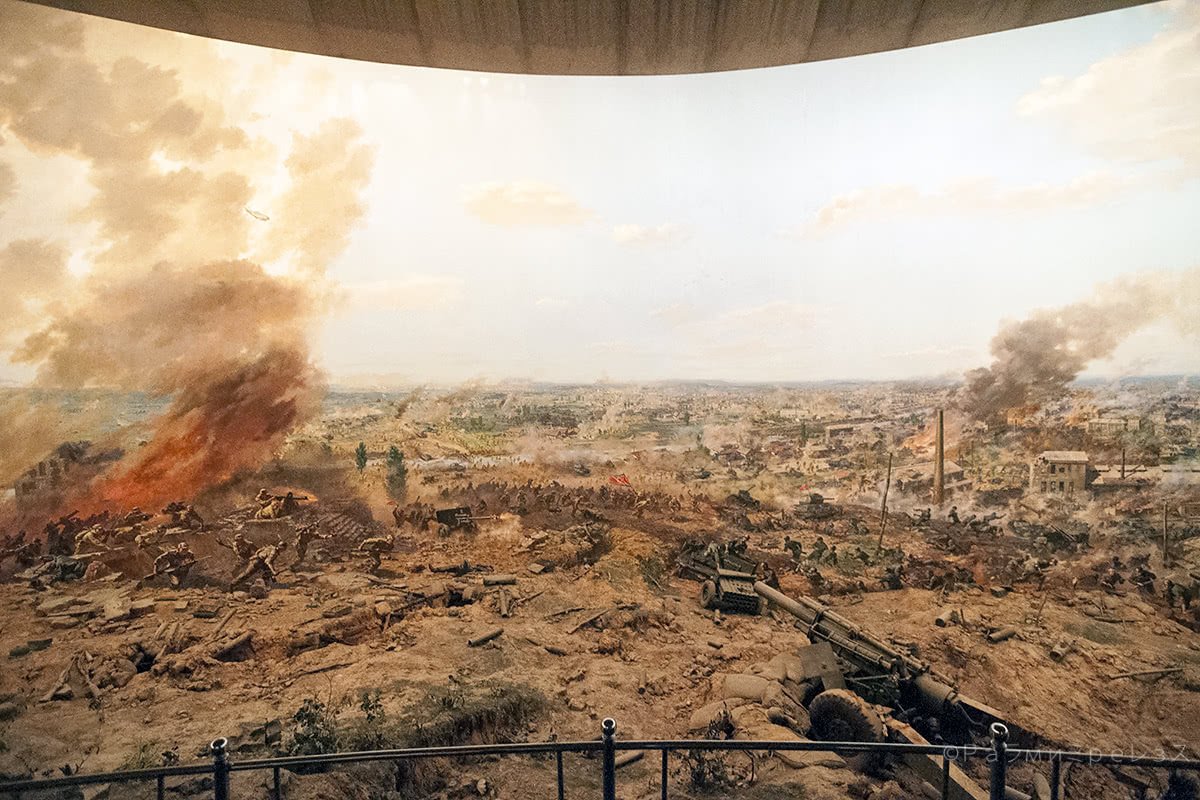
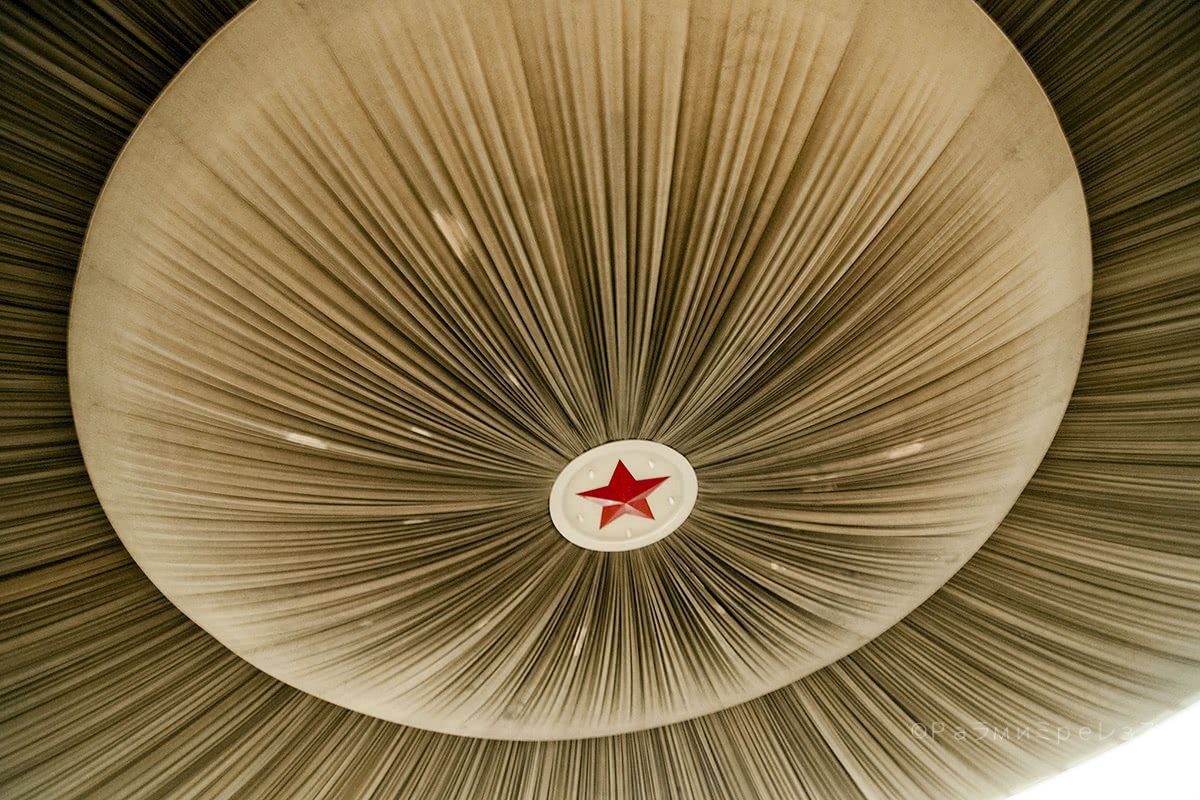
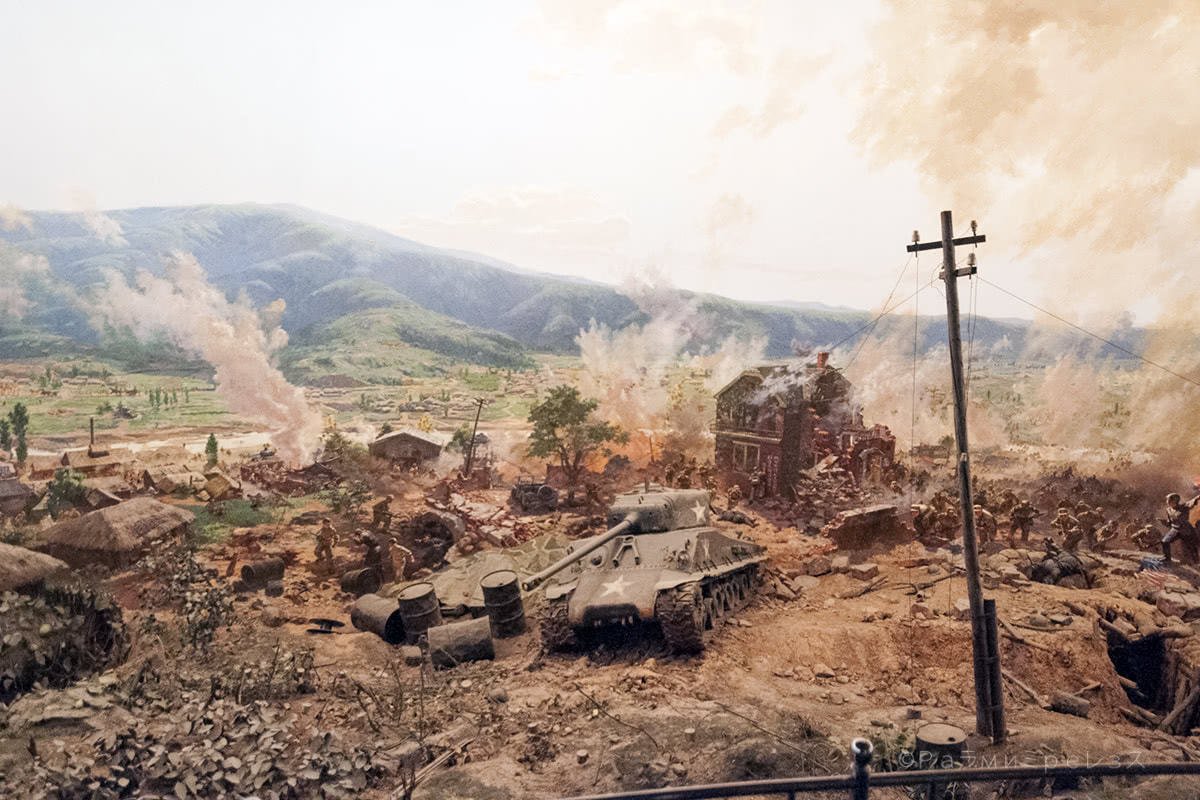
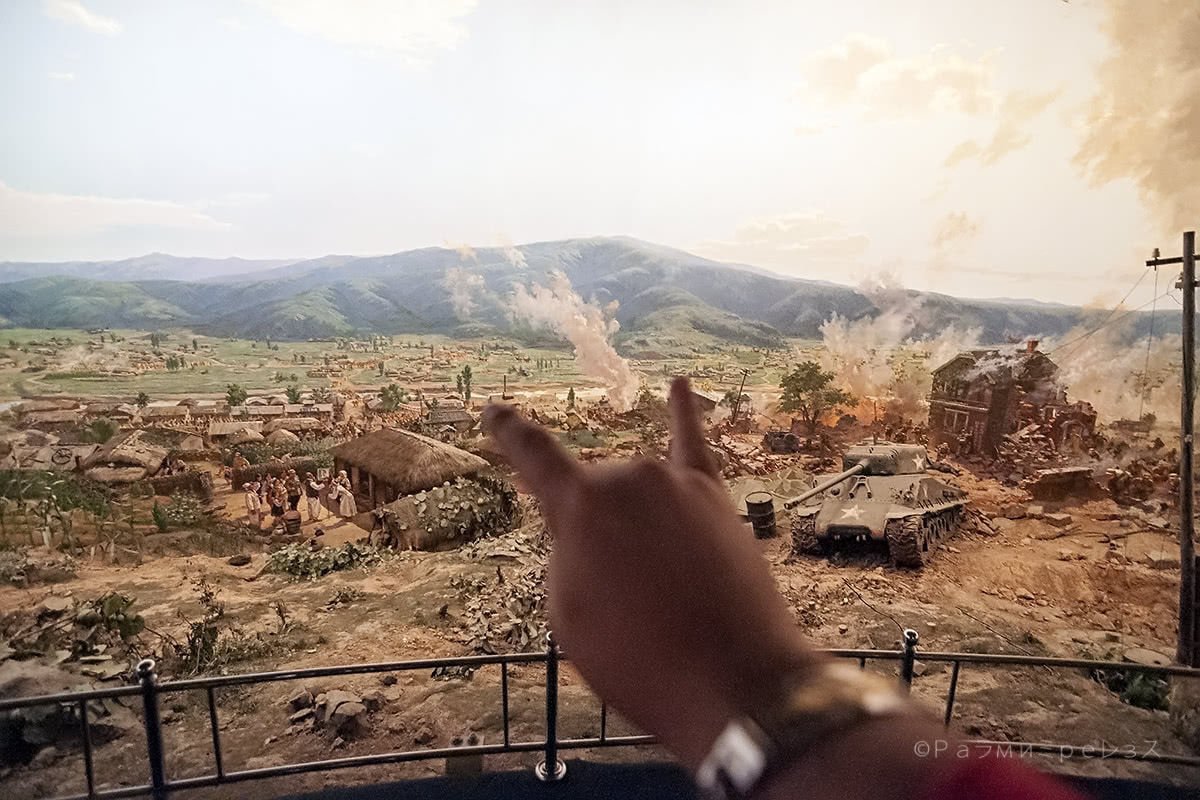
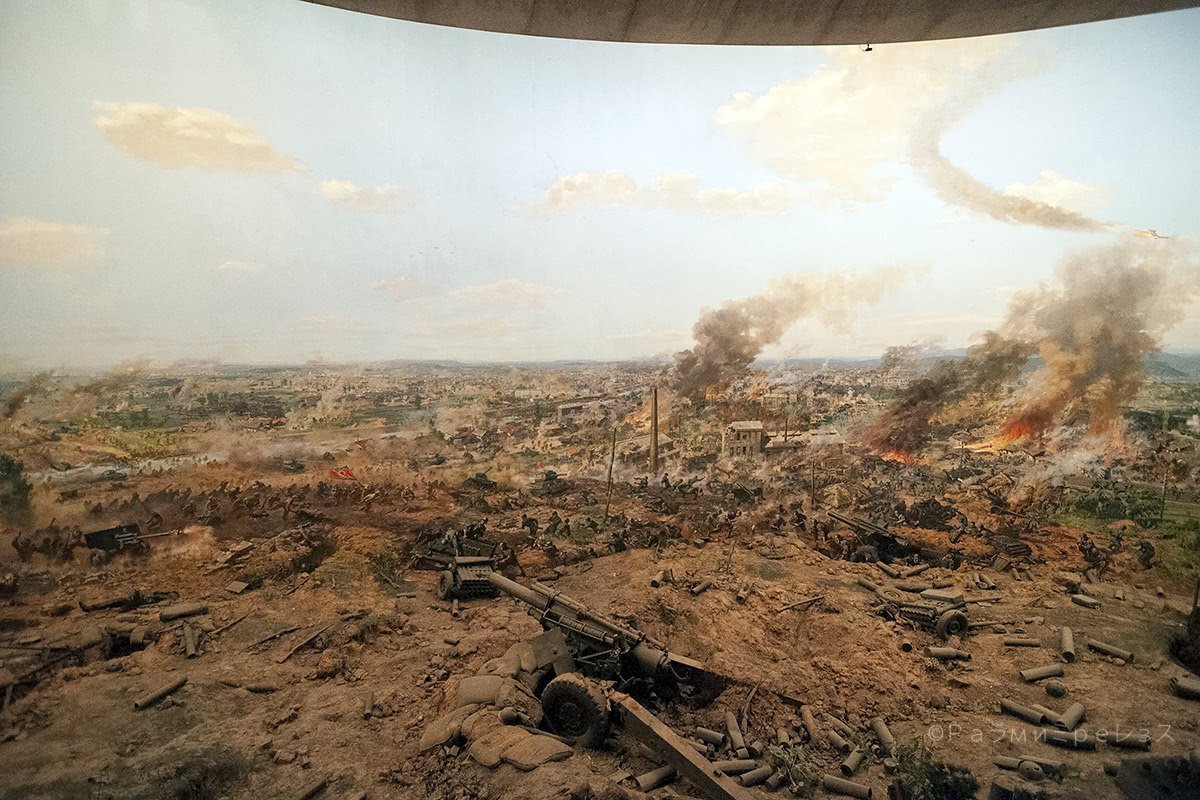
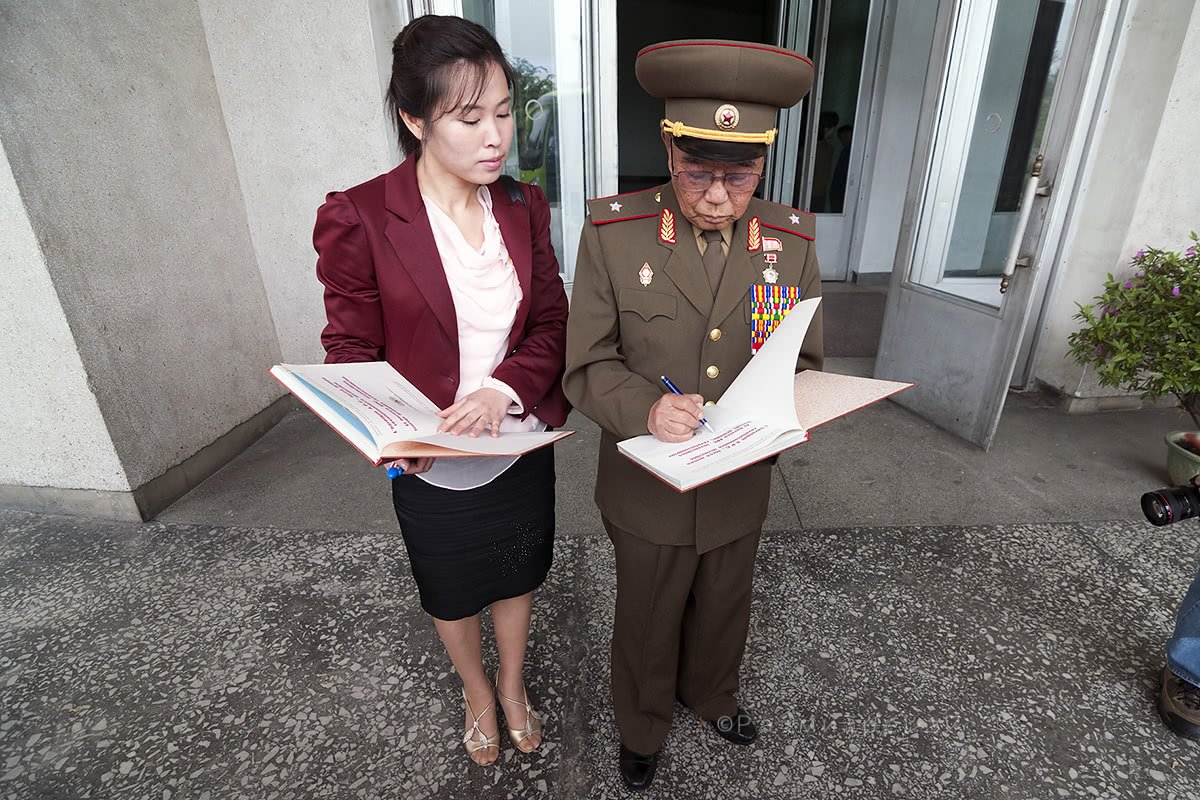
Victorious Fatherland War Liberation Museum and the Taejon battle diorama.
Since we were on an Aviation tour, we had the company of a retired officer of the Air Force that fought back then.
I bought a very crazy and cool book in two languages at the same time, and this officer signed it.
It’s the same book from which I got a couple of images for the first part of this article.
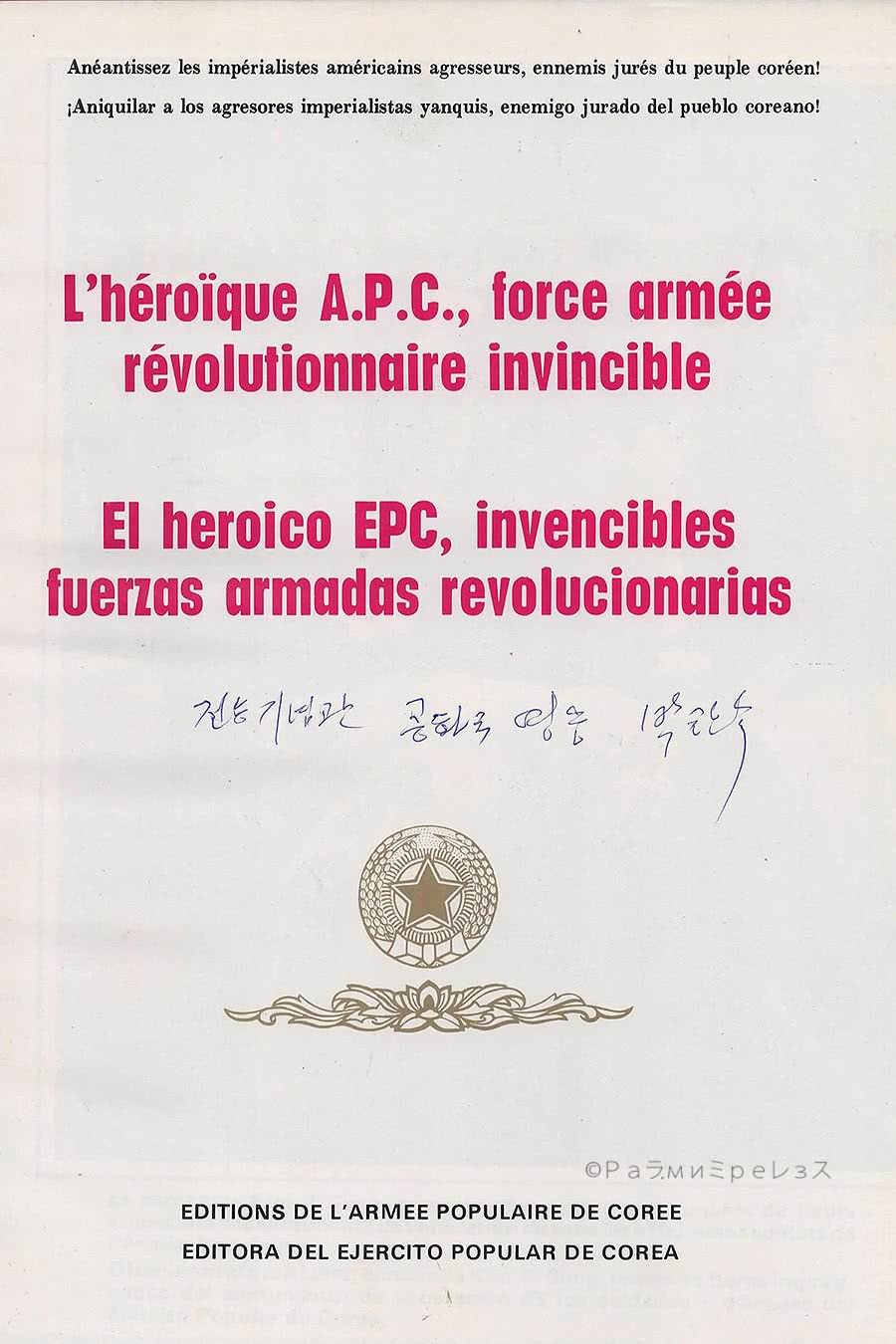
(Right below the photo when he was signing it).
Ramírez.
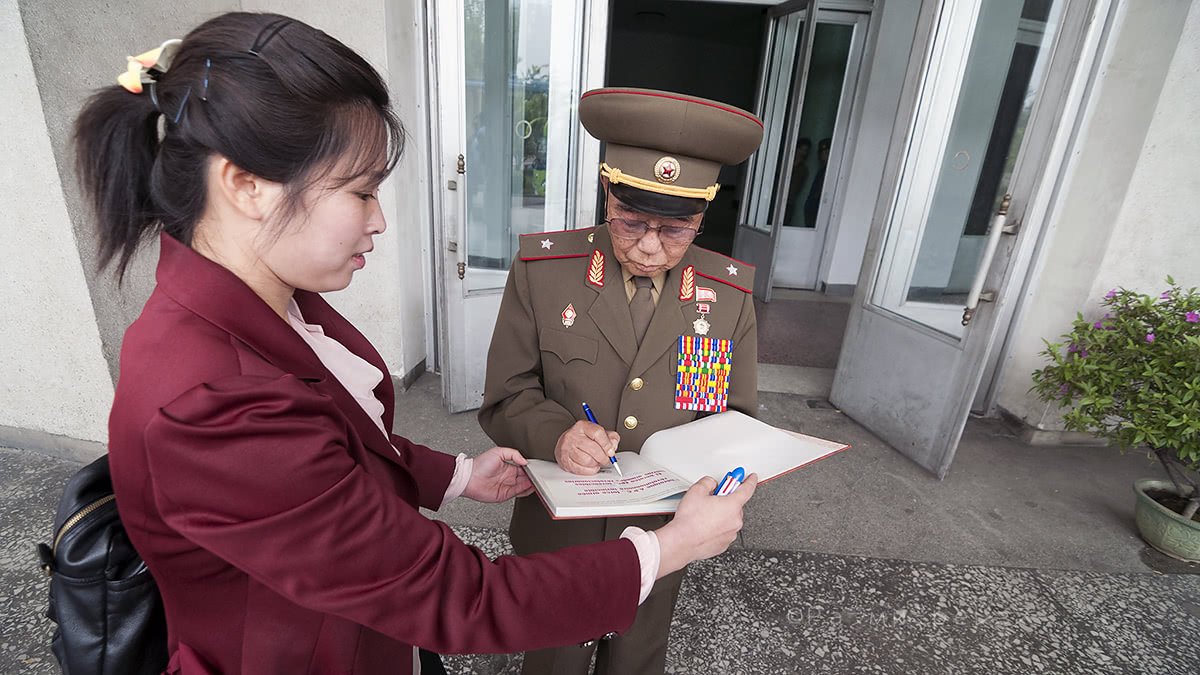
Keeping on topic, I also visited the USS Pueblo. The USS Pueblo is a vessel belonging to the United States navy that North Korea captured in 1968.
The vessel sailed from Japan very relaxed to spy on the Soviet Union and North Korea (normaaal). But close to North Korea it was intercepted and captured.
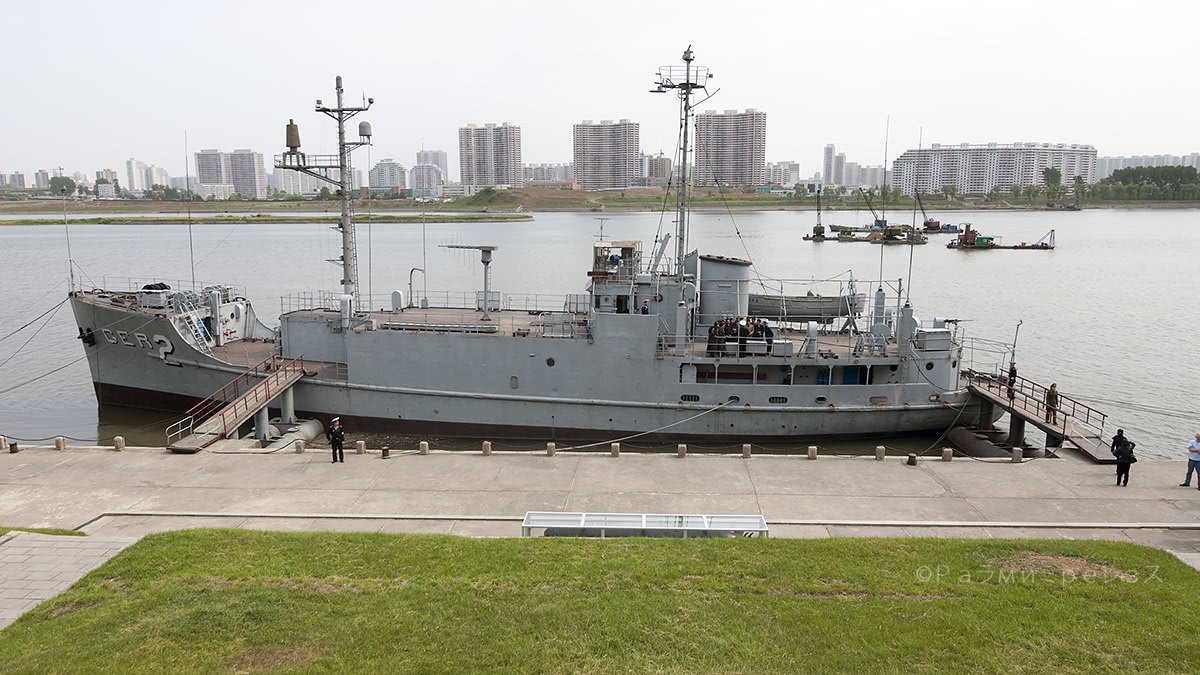
North Korea says it violated its territorial waters. The United States says the ship was in international waters.
The thing is, they couldn’t help the ship, and they had to let it be captured.
They took it to Wonsan at first, but then they moved it to Pyongyang.
While doing so, they passed in front of the US forces. They allowed it because they didn’t want to wreak havoc in view of who they were dealing with. And the fact that there were hostages.
In Pyongyang, it was in the Taedong river, where I visited it. Later on, I learned they moved it to another place, close to the new building of the war museum in which I bought the book.
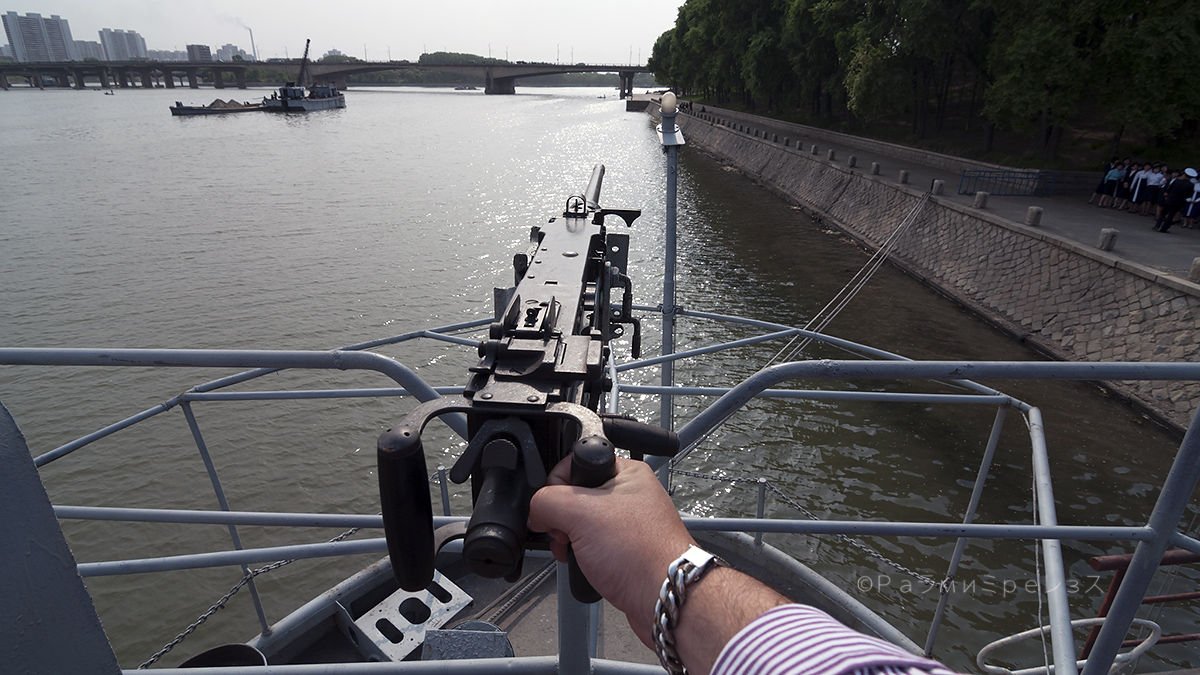
The ship is still officially commissioned in the United States navy. It is the only commissioned ship of their force that is captured by a foreign country.
Inside the ship, you’re allowed to go pretty much everywhere and see the documents that were aboard.
It’s something very interesting that I couldn’t fully do because time was of the essence. Had I had it my way, I would have remained there all day reading manuals and things.
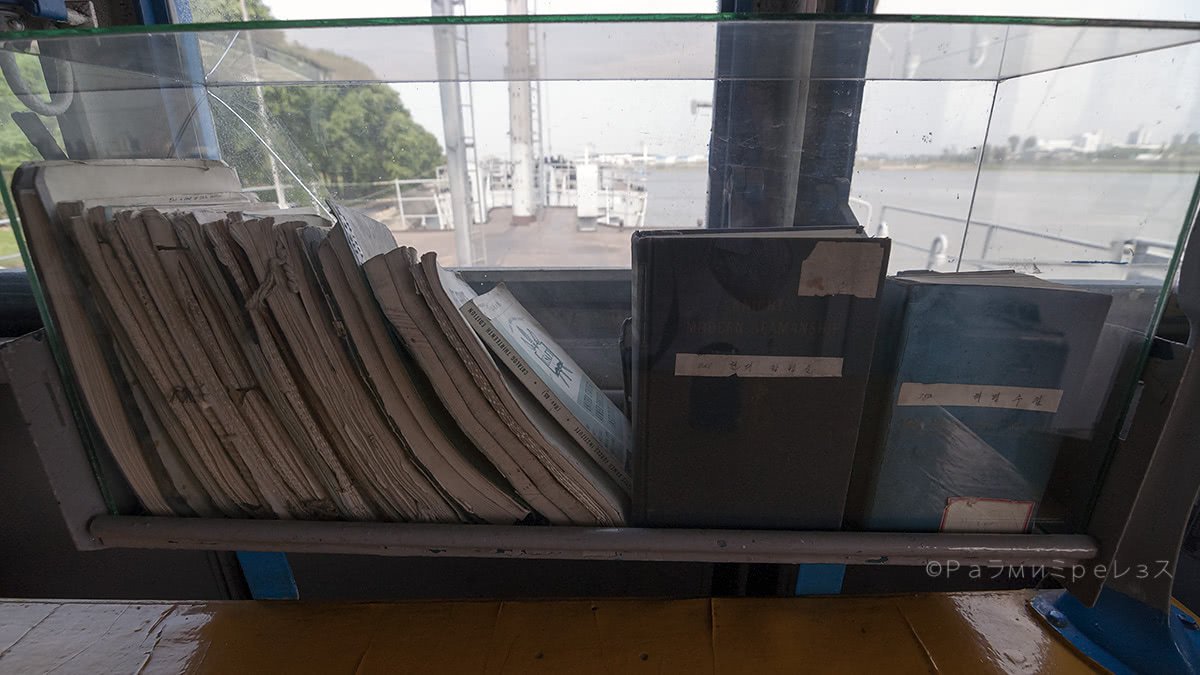
The incident ended with the remaining alive hostages being set free. Two died in the ship’s capture.
They were set free after negotiating, and after they “confessed” to the grave violation they had made in a written note.
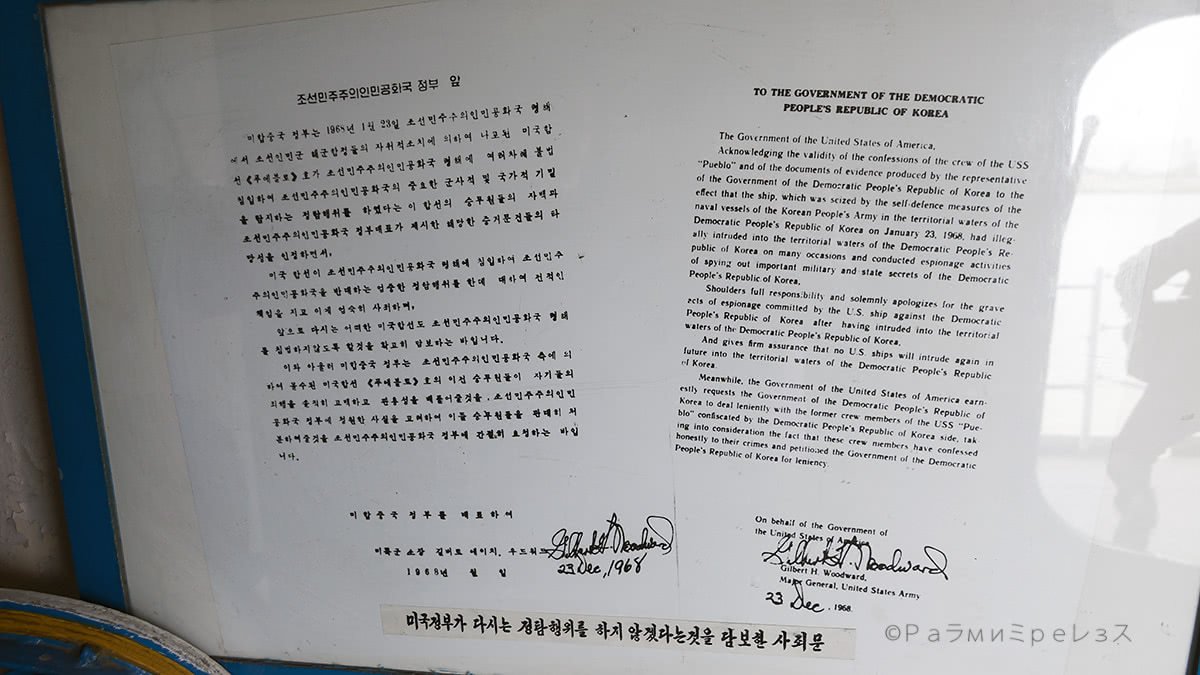
The note has a passage that says:
-“We paean the DPRK. We paean their great leader Kim Il-Sung”.
But when reading the confession, they pronounced “paean” as “pee on”. It changed the whole sense of the note, as you may see.
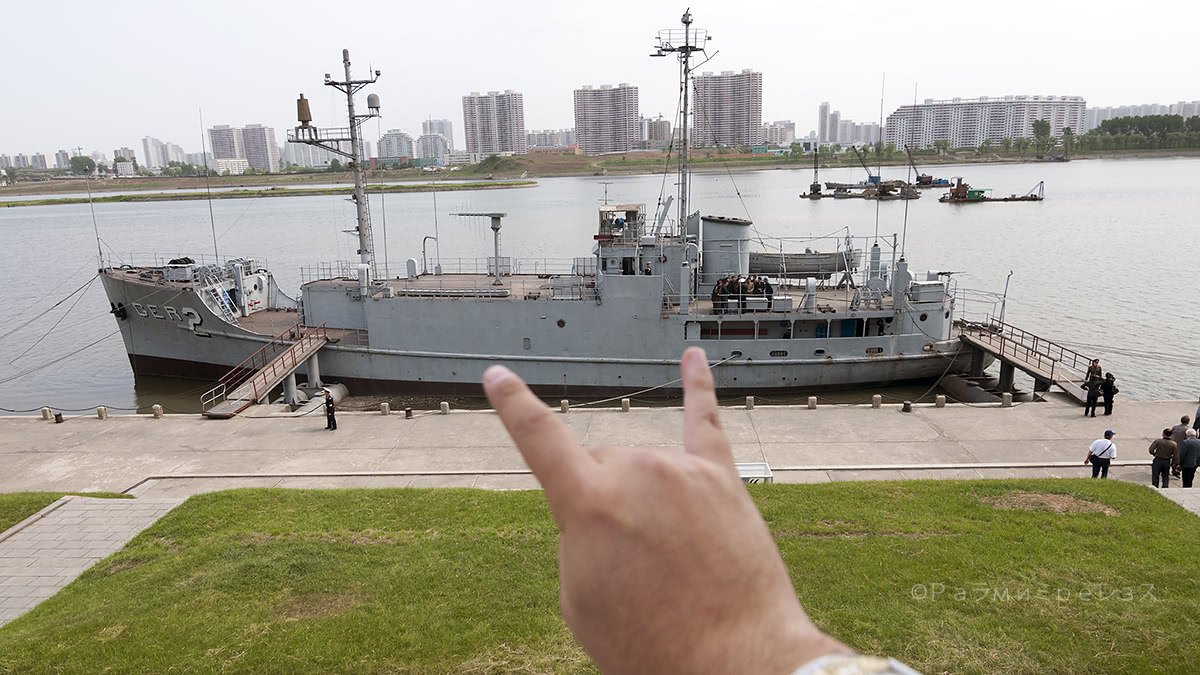
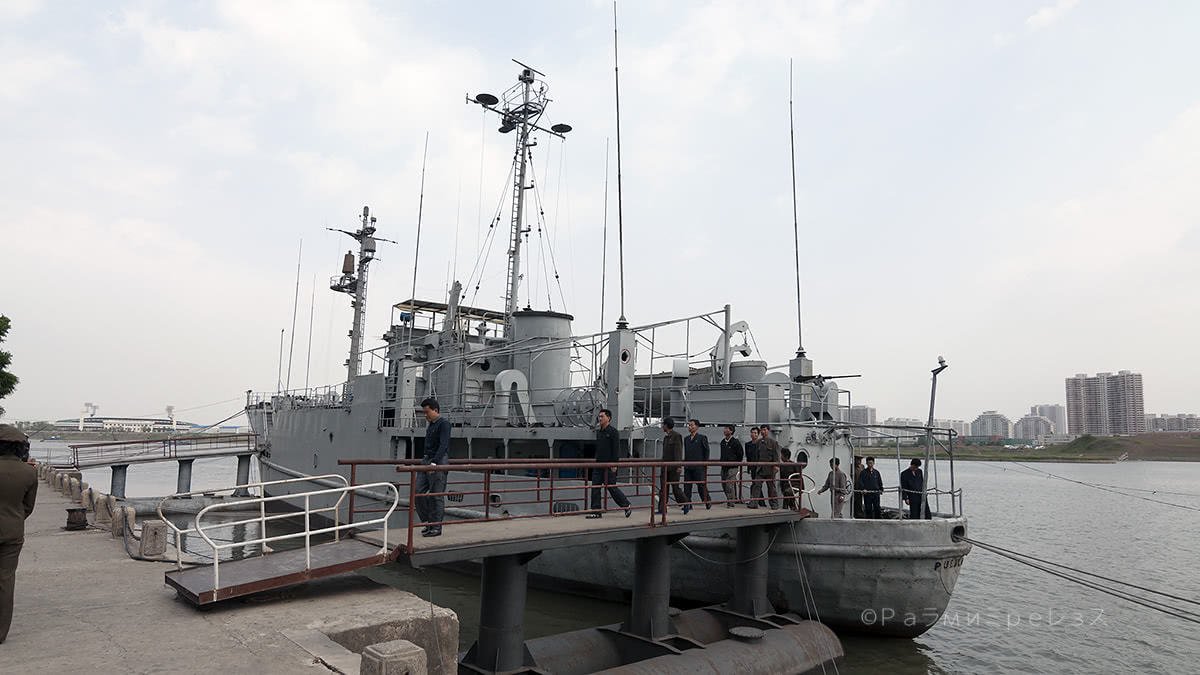
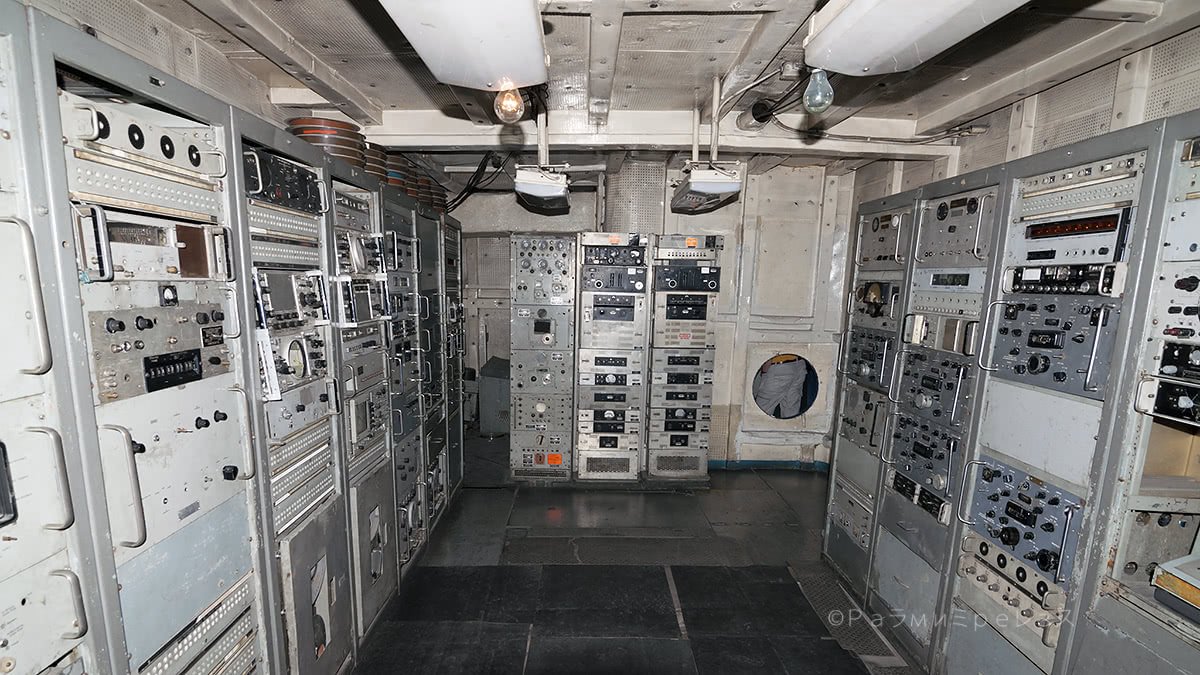
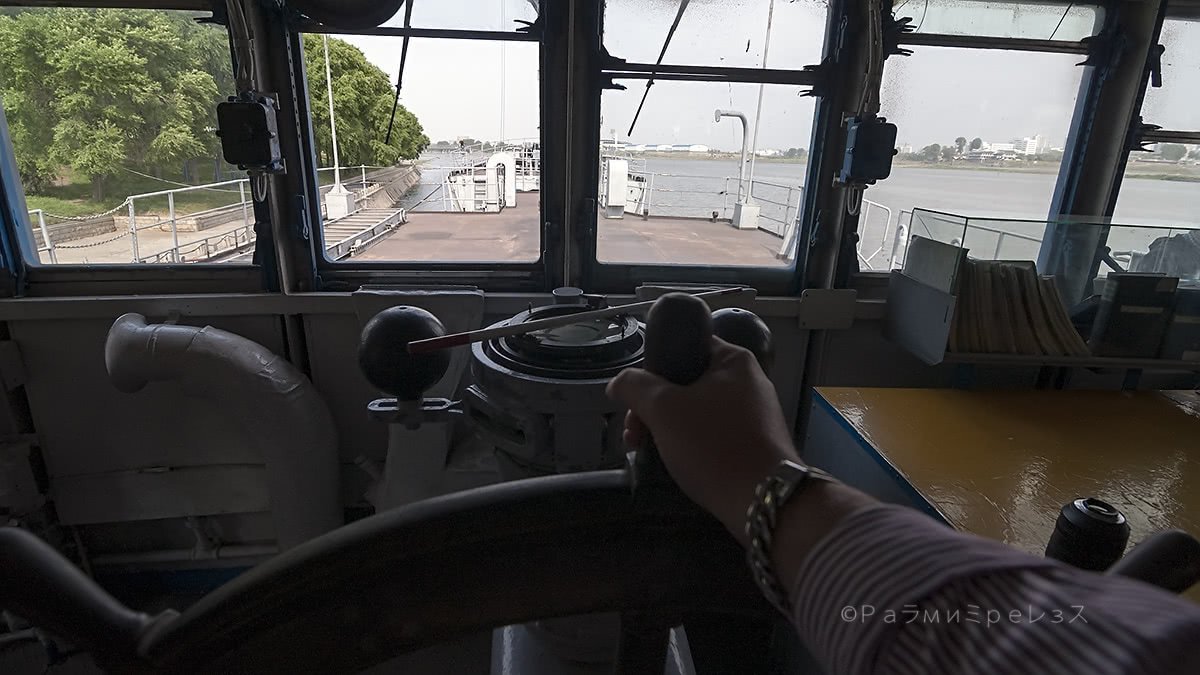
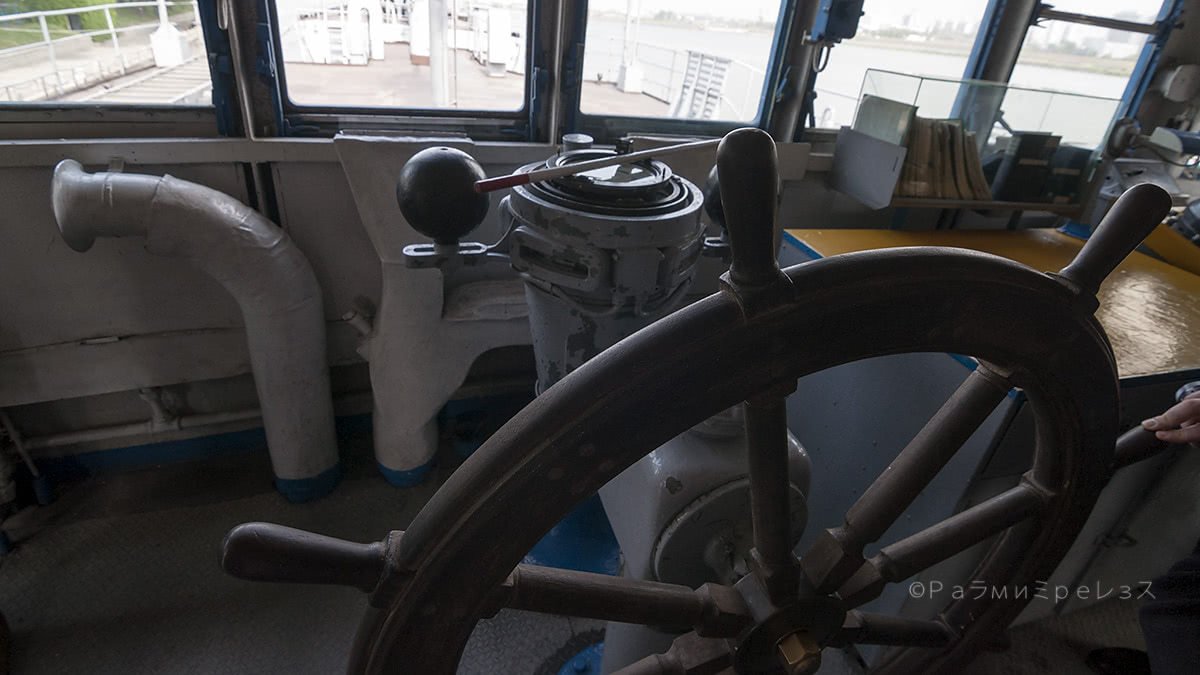
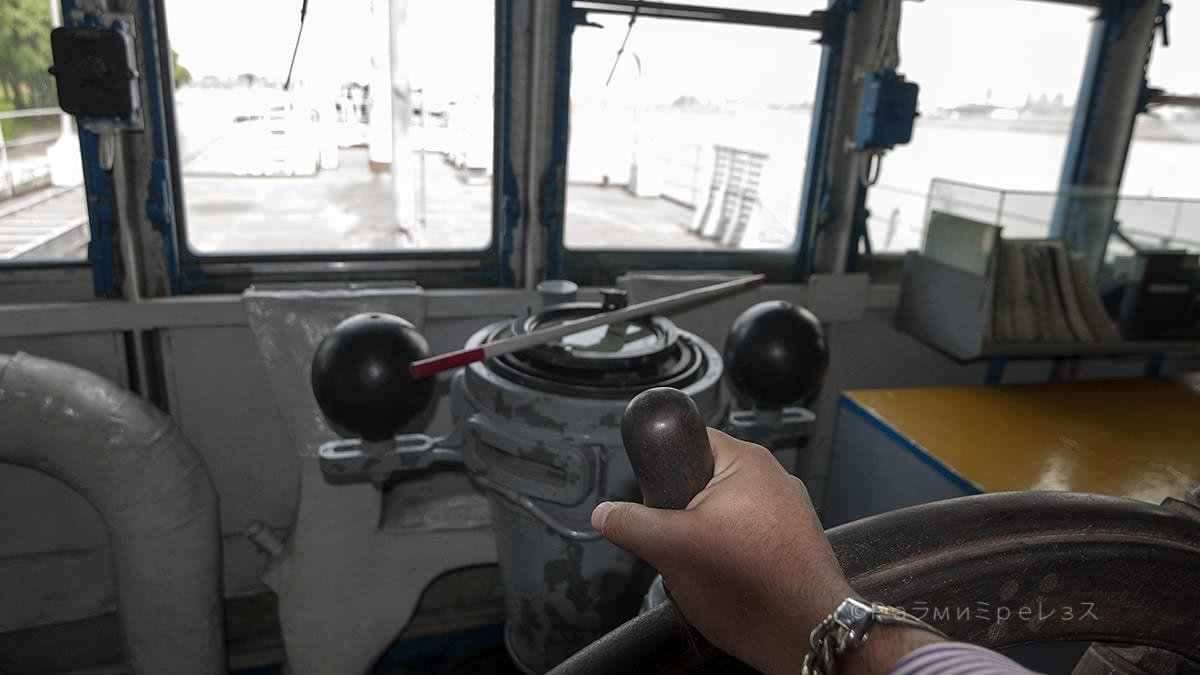
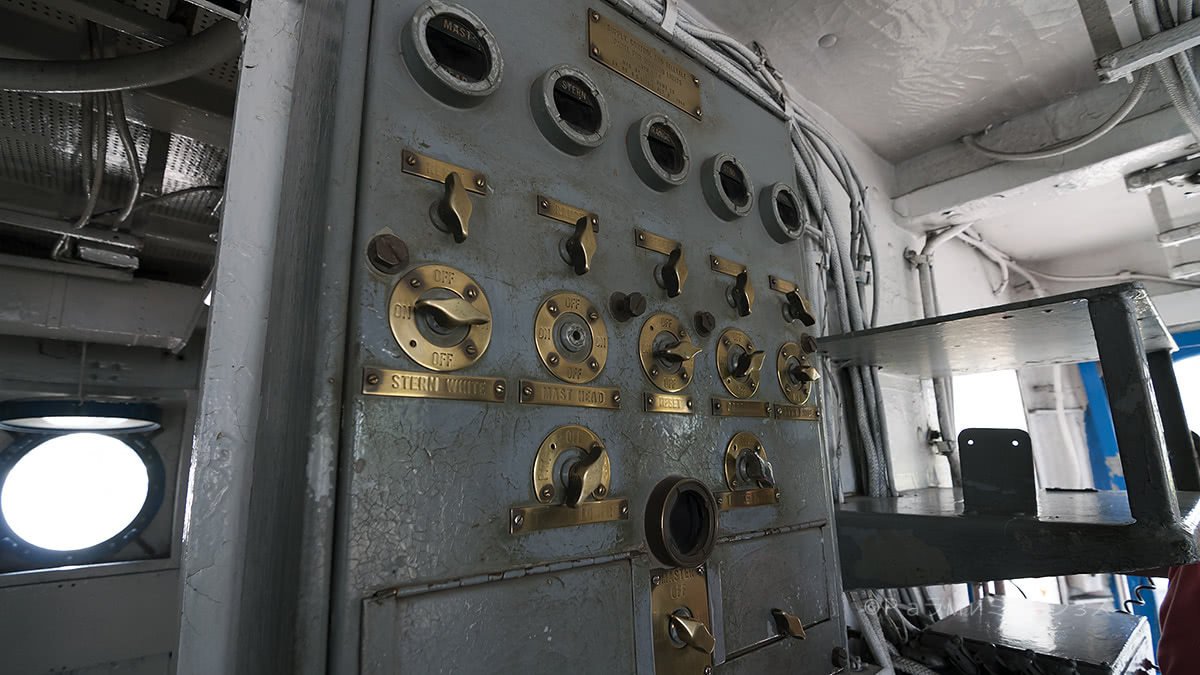
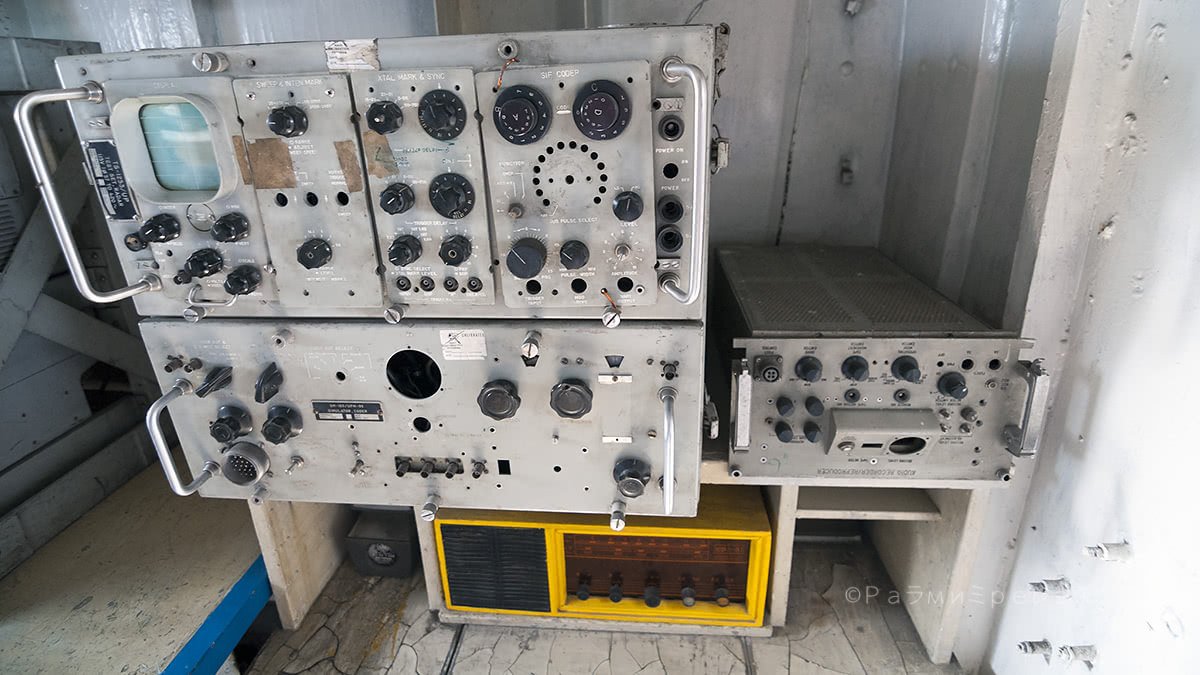
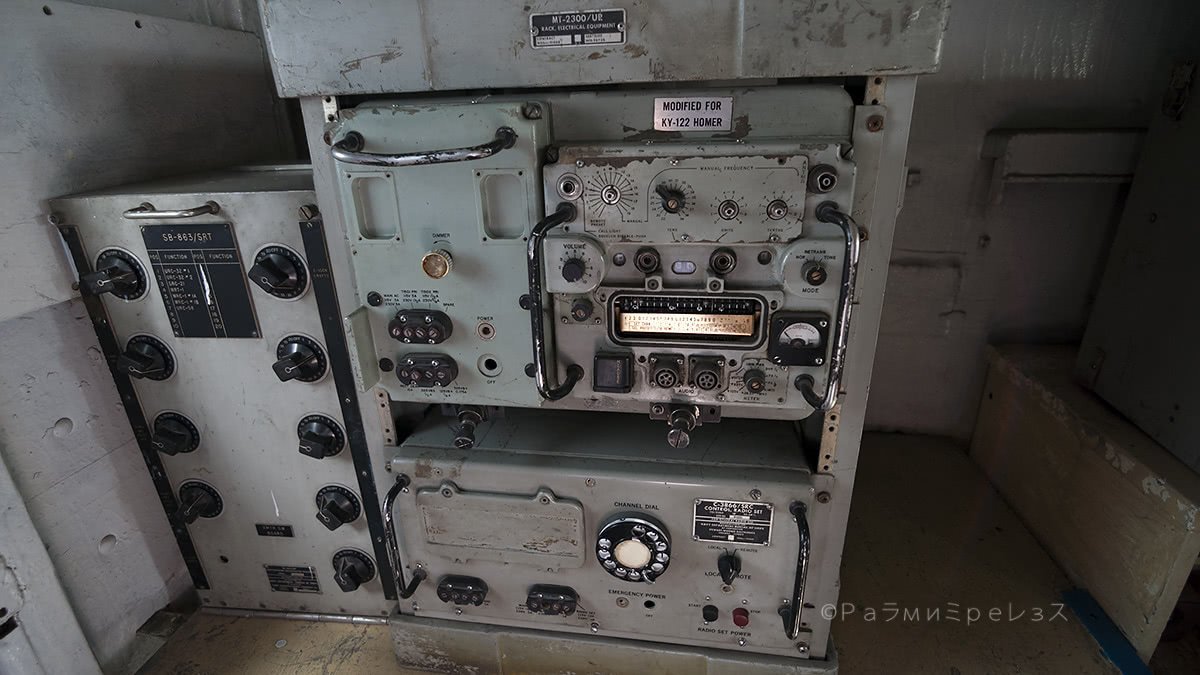

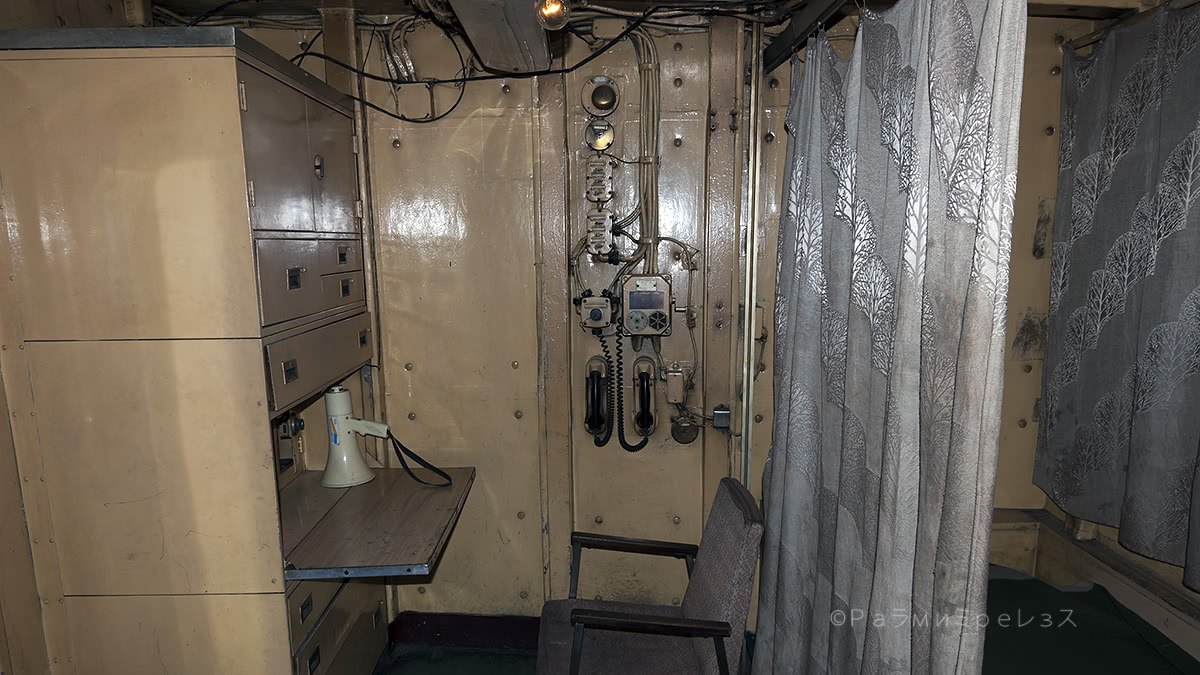
USS Pueblo.
They didn’t realise this in North Korea until it was too late.
I stayed in a hotel called the Yanggakdo. It’s located right on an island on the Taedong River. Pretty convenient for preventing the evil foreigners from escaping to have a stroll around by themselves.
The hotel is North Korea’s second tallest building after the Ryugyong (more on this later). They built it in the mid-90s.
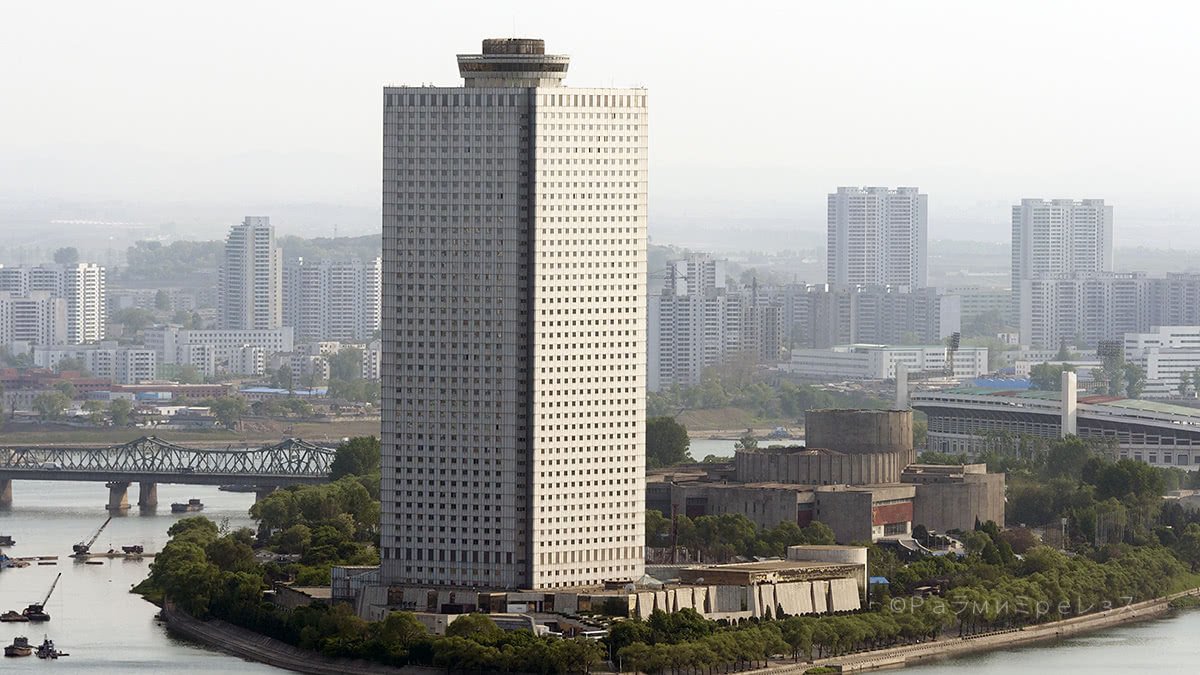
Generally, foreigners going to Pyongyang stay either at the Yanggakdo or the Koryo. There isn’t much you can do other than choosing a more luxurious room, or something along those lines.
Other than that, you know it’s most likely going to be one of those two. Where you finally end up staying depends on all the backstage logistics between the operator and the government.
The Ryugyong is supposed to be the third such option once it’s operational. There are other hotels in the city, but less than 10 are open for foreigners. And I guess there should be yet some more only for North Koreans.
Staying there is like returning to the 70s as far as furniture and decoration go. I thought it was cool because of that.
I felt quite sad due to the fact that in the lobby there were some little animals in a rather cramped aquarium. They just came and went, caaaame and weeent, caaaaaaaaame and weeeent all the time.
Something happened to me in the Yanggakdo. I was about to leave the room and my camera fell to the floor.
I saw the whole thing in slow motion and it was terrible. The lens hit the floor and it made a dent in a small piece of plastic, but other than that it still worked as usual.
I can’t describe with words the terror-filled seconds that went by from the moment I was aware of the hit, to the moment in which I tested the camera, and discovered it all worked as usual.
It couldn’t be that after having made it through customs with the camera it was going to be damaged right there!
What was I to do? Send it to Nikon service in Pyongyang? Yeaaah right!
Later, I replaced the plastic on a routine inspection in New York. Nothing else was damaged as a consequence of that fall. I love my lens!
In that hotel, the lift does not stop on the fifth floor, and you can’t go there. They say there’s a government team spying on guests to see what’s what, and it wouldn’t surprise me.
Not too long ago, a guy from the United States decided to venture there. He tried to steal one of those revolutionary slogan signs and created a huge problem!
They convicted him to 15 years of hard labour. At the time of writing this, he is still there, and if they are to make him serve the full-time it’s likely he won’t even leave there alive.
Although it’s most likely that they will use him as a bargaining chip to negotiate something with the United States. It’s been frequent with that kind of prisoners.

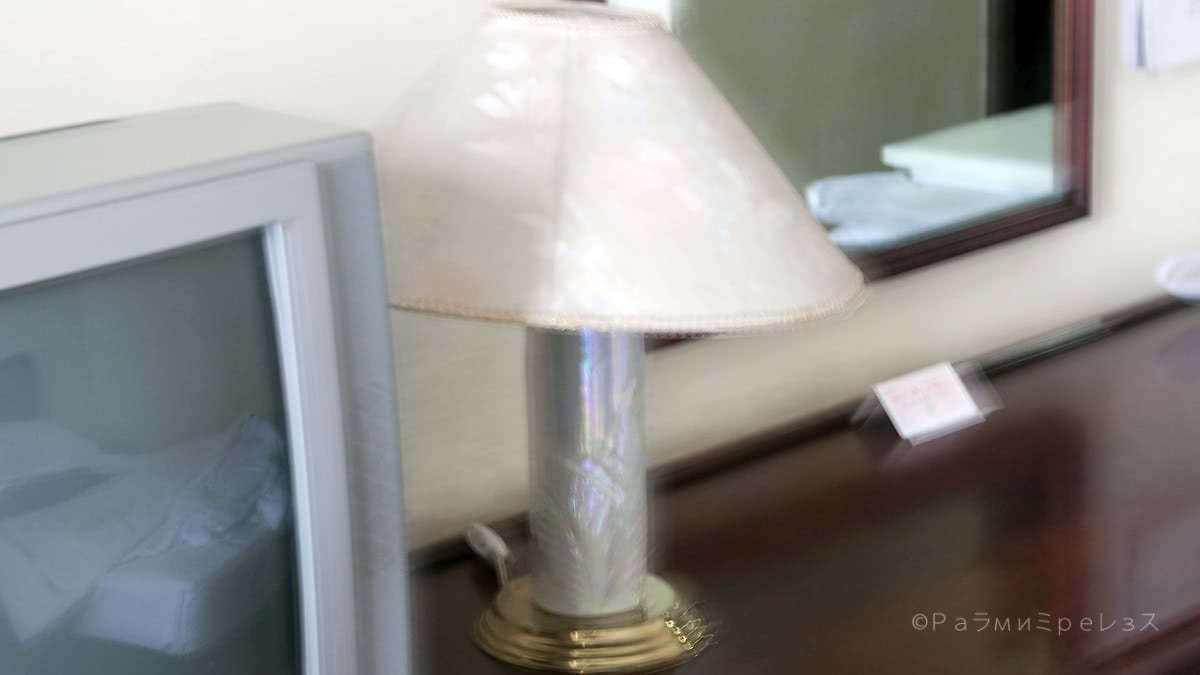
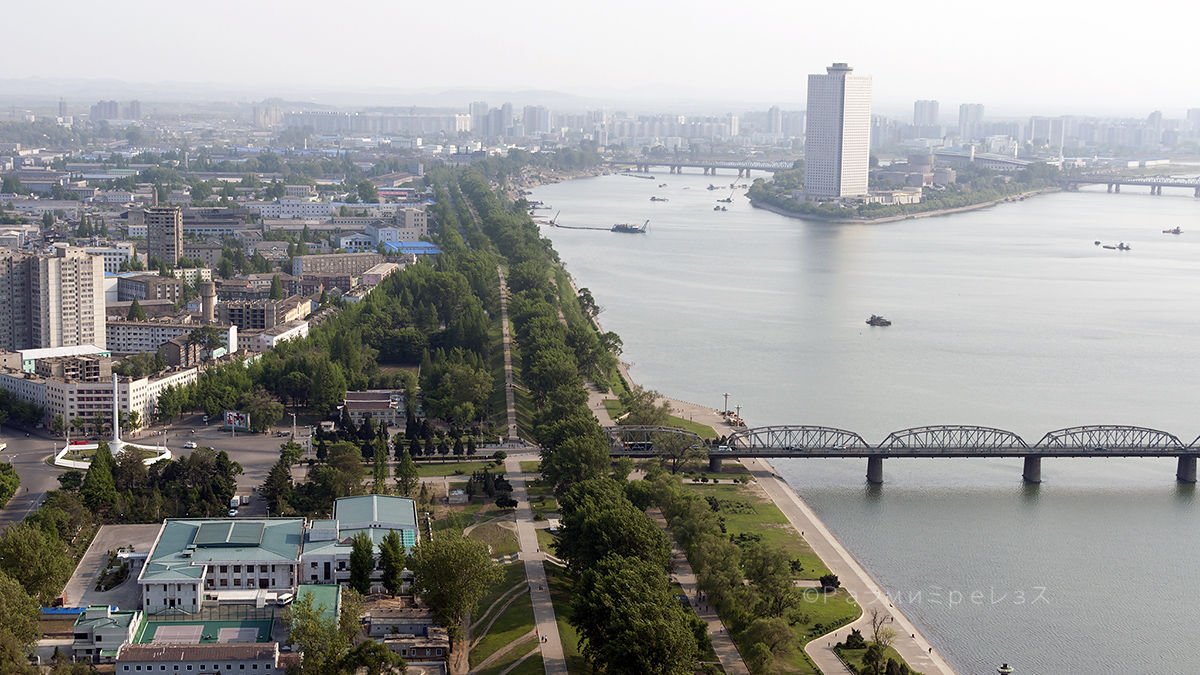
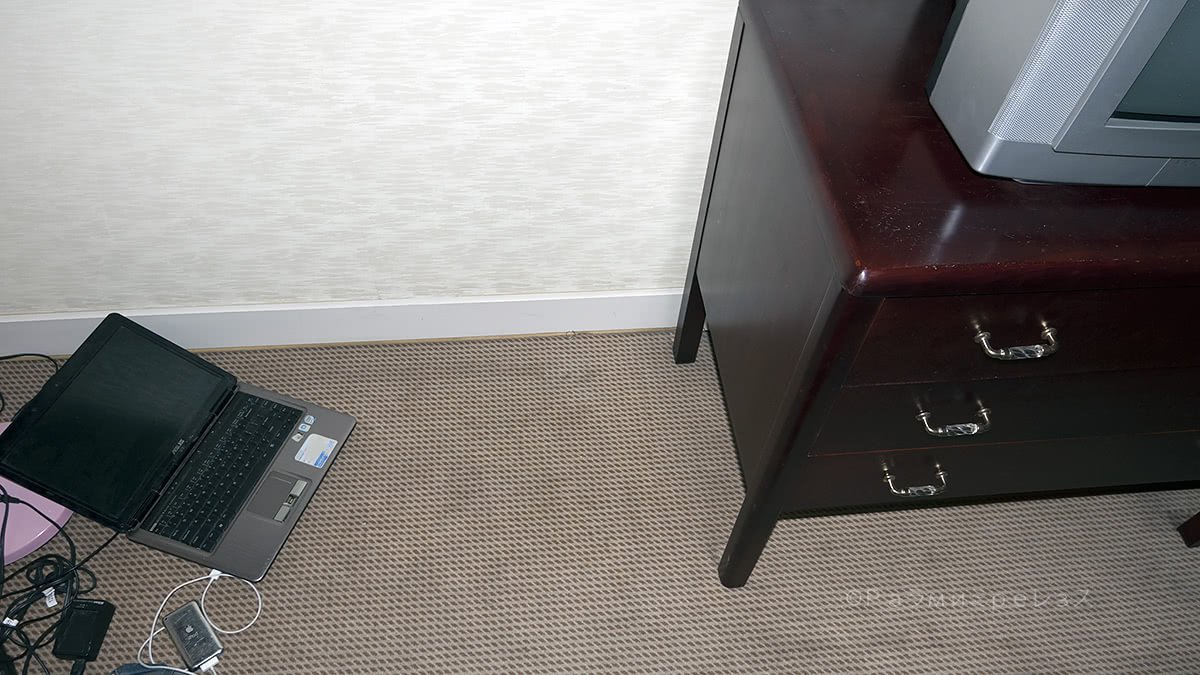
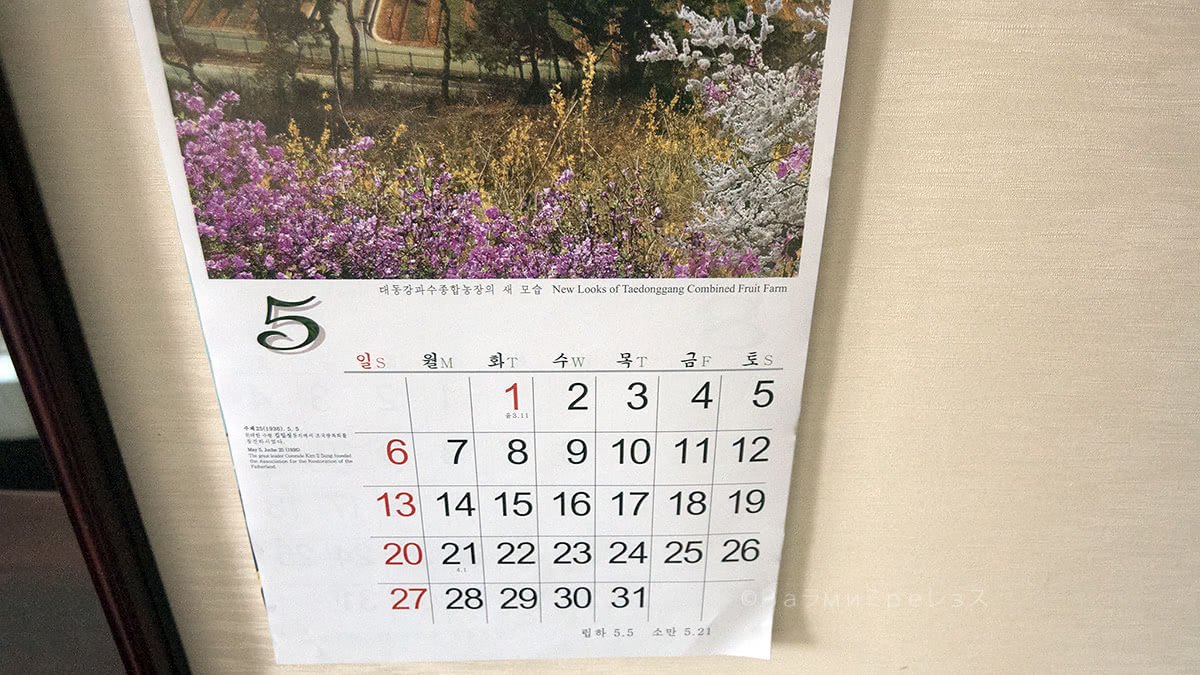
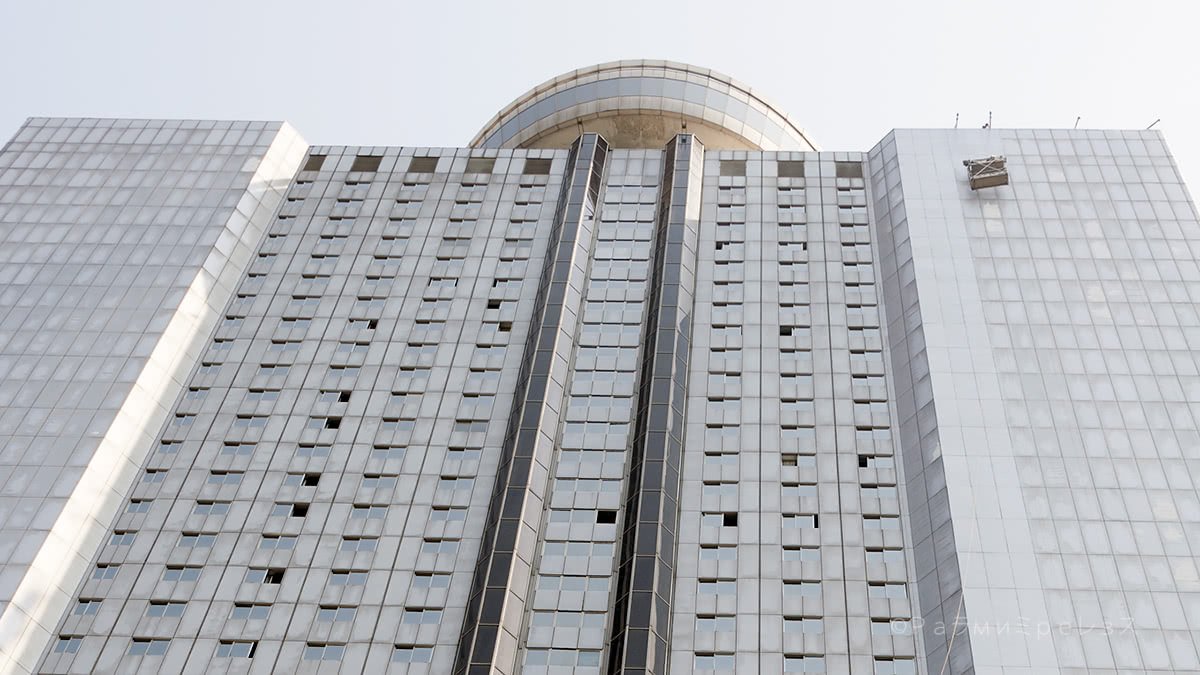
Yanggakdo.
From the hotel, there was a nice view of the city, the Taedong river, and the Juche Idea Tower.
Every morning, before I met my guides in the lobby to go out somewhere, by chance I would also meet another woman in the lift.
She looked like a guide as well, but I never knew for sure. She seemed to always be late and cursing in Korean.
She was always very stern-faced, with an expression that said:
-“Fuck this and fuck you”.
But she was beautiful as hell! I fell in love in Yanggakdo’s lift.
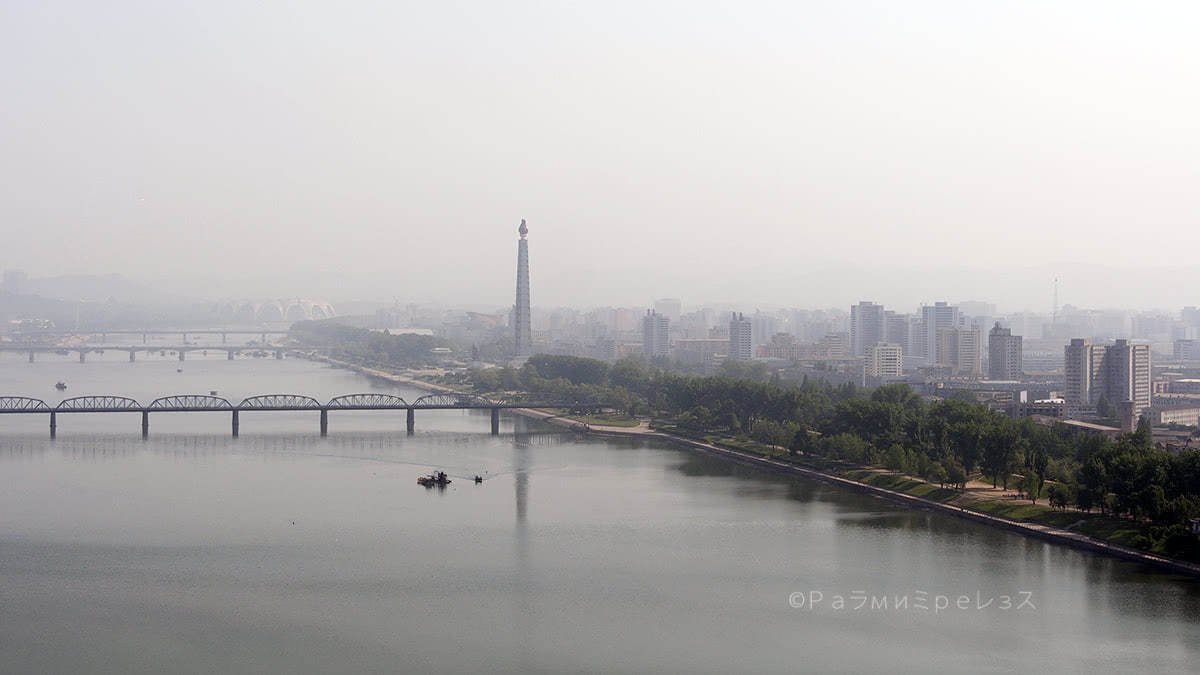
I was saying the Yanggakdo was North Korea’s second-tallest building. The tallest one is the Ryugyong hotel, and that building is craaaazy as hell mate.
There is a rumour about why they started building it. Allegedly, it was because, in the mid-80s, a South Korean building company finished what back then was the tallest hotel in the world.
They built that in Singapore. So North Korea said:
-“No way, we can’t be left behind”.
And started to build the Ryugyong.
They wanted it to be ready for the 13th World Festival of Youth and Students in 1989. A festival in which they invested lots of money. Allegedly, it was the north’s answer to the South hosting the 1988 Olympics in Seoul.
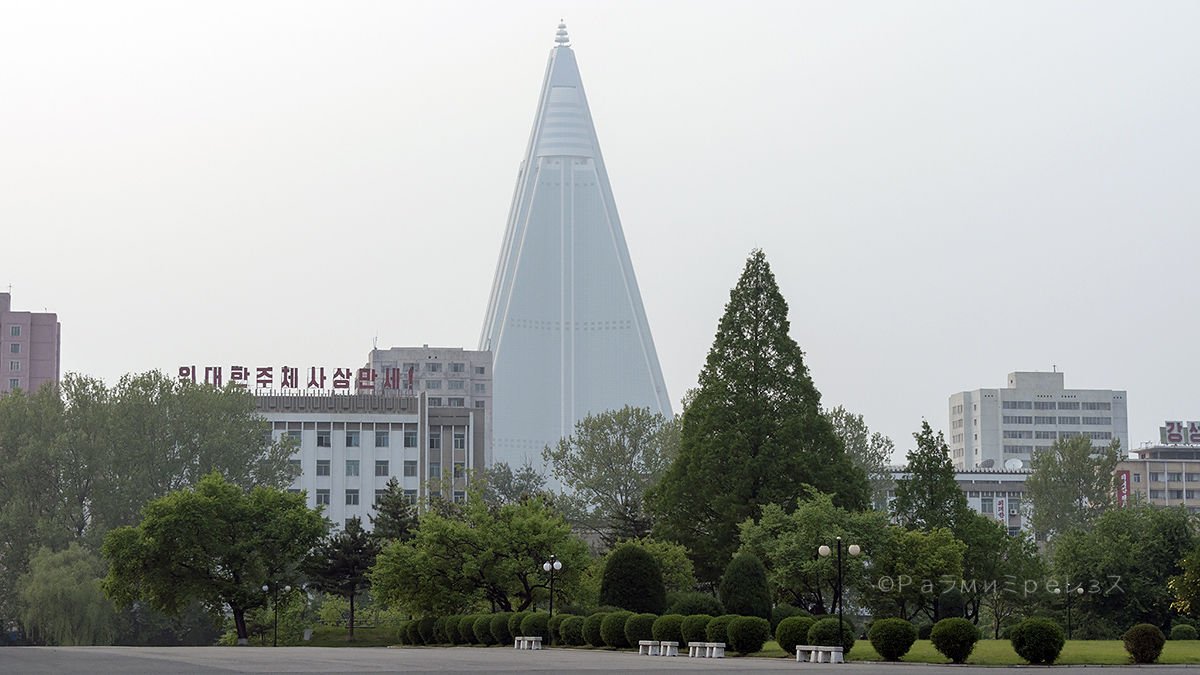
By the way, there’s a very nice documentary called “La Chica del Sur” (“The Girl From the South”).
It has scenes from that festival and the history of Lim Soo-Kyung. She is a South Korean woman that went to the North without authorisation.
She ended up in that festival, and when she returned to South Korea they put her in jail for that.
Anyway, the Ryugyong was supposed to be ready for that festival, but it wasn’t. After that, the Soviet Union disappeared and the economic crisis came for North Korea.
This implied having a half-finished building from the mid-90s, with only the inner structure finished. They say the government was severely annoyed with that unfinished white elephant in plain view.
Here in Colombia, such a thing appears to be a hobby, ask Bogota and the famous underpass. The thing is they had to endure like that for many years before the external facade was even finished.
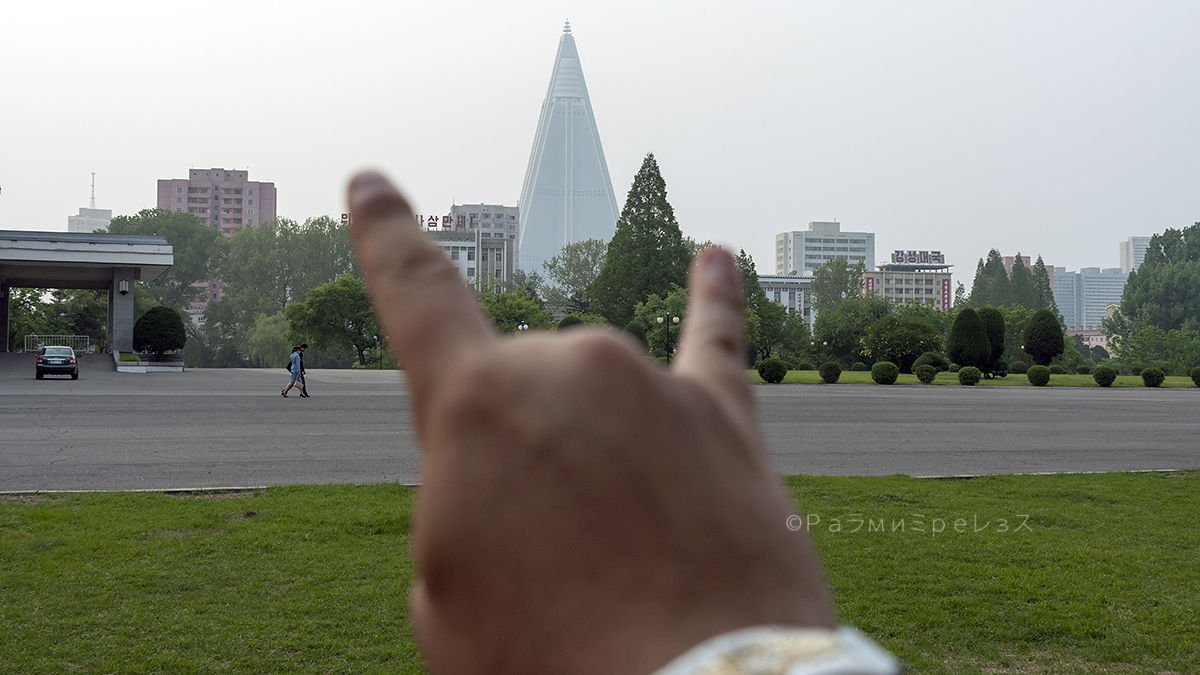
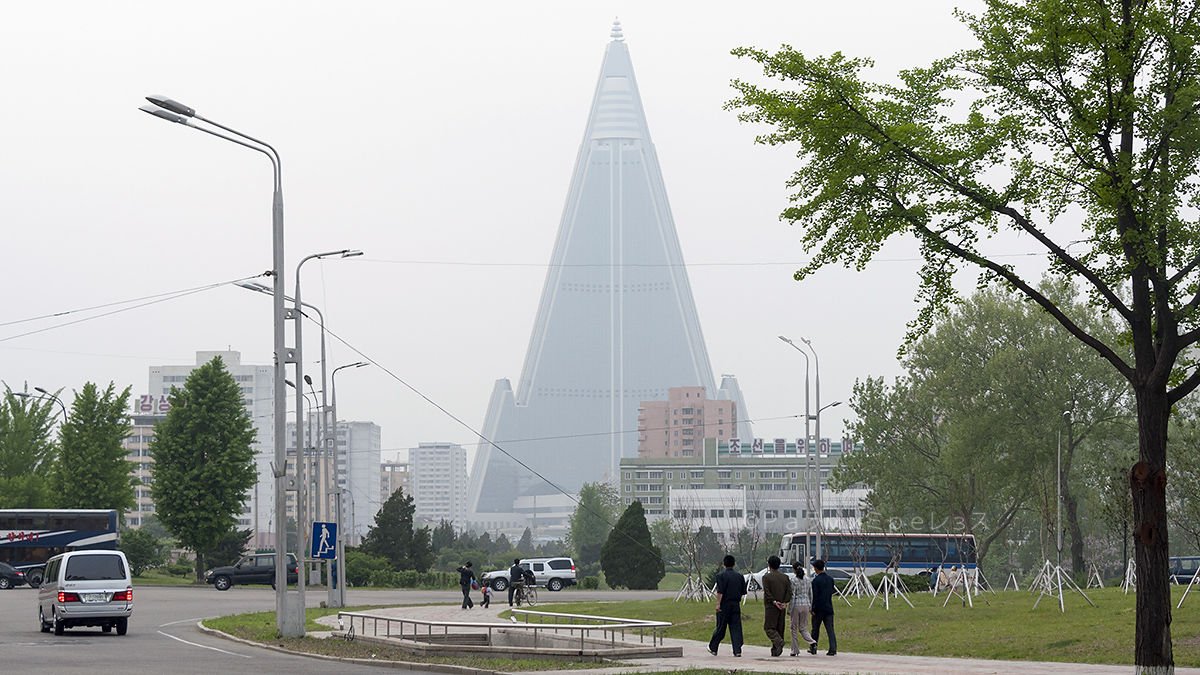
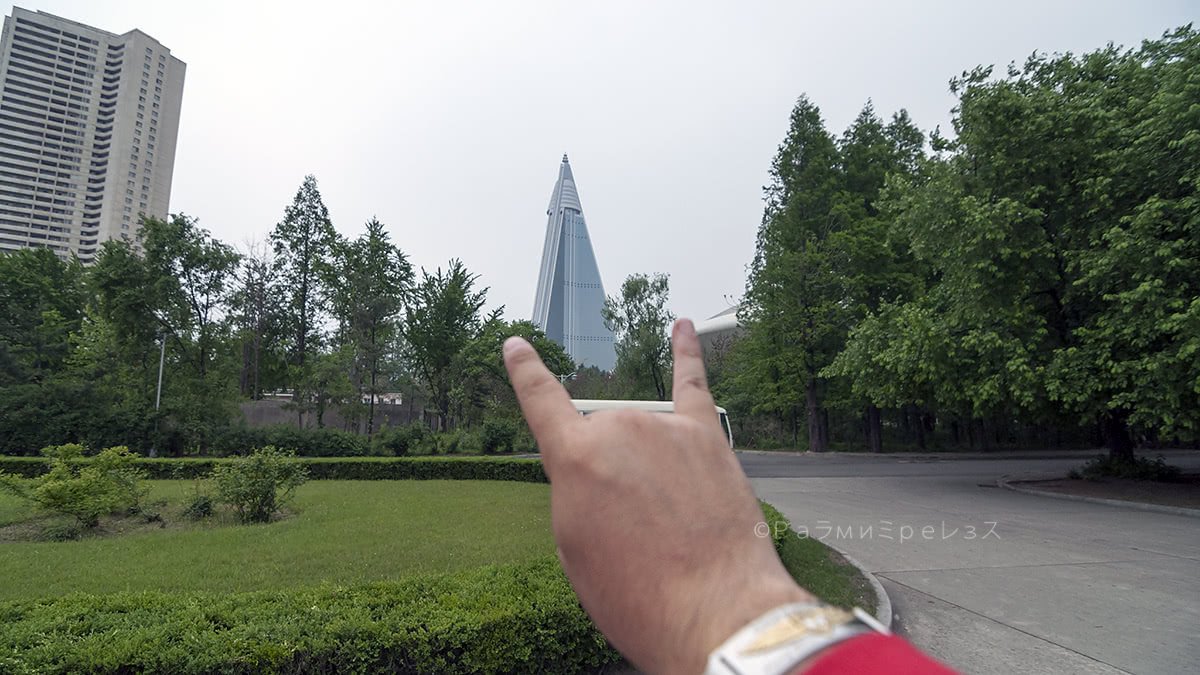
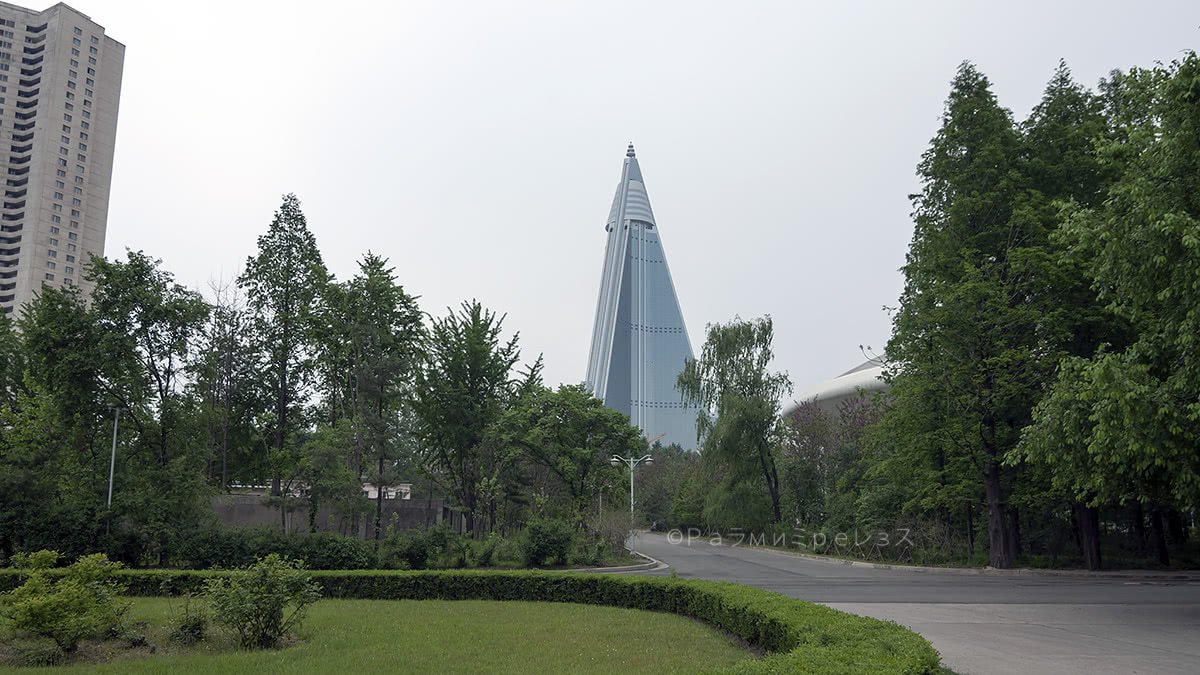
Ryugyong.
In 2008, they reached an agreement with an Egyptian company called Orascom. They were going to finish the building in light of the agreement. Orascom started working, and the exterior facade is already finished. But it’s still not been put to service.
Orascom is the same company that built the first 3G mobile network in the country. They say one thing didn’t have anything to do with the other.
Having seen Odebrecht and friendss I do believe it had everything to do indeed, but anyway… that’s not the topic here. And as you may know already, I know zilch.
It all backfired for them as far as I know. North Korea’s government does not want to allow Orascom to repatriate the earnings.
They have a convoluted situation with the exchange rates of the North Korean won against the dollar, Venezuela style.
Not only that, the government is setting up another competitor. And now Orascom is evaluating a merger just to try to salvage whatever they can.
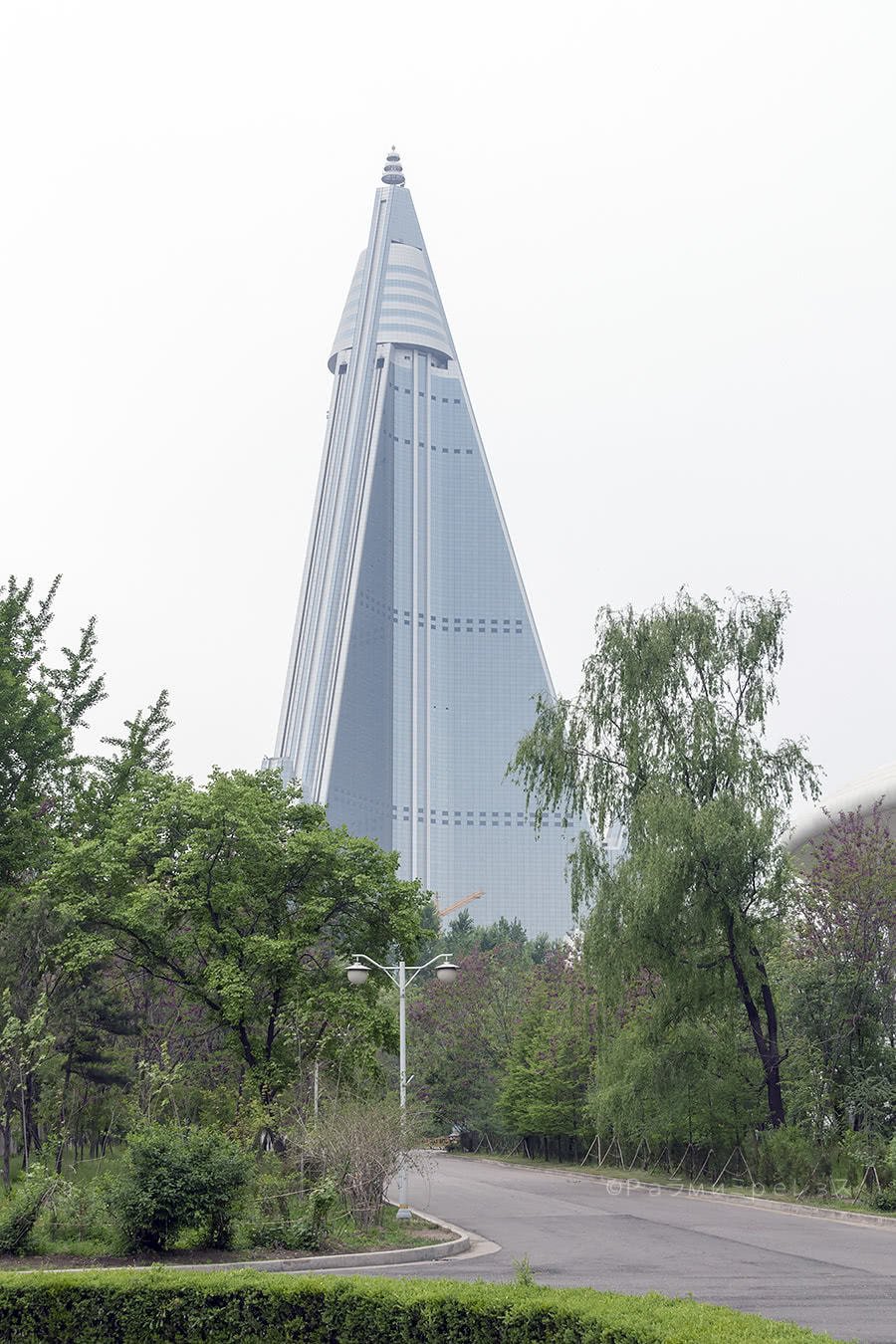
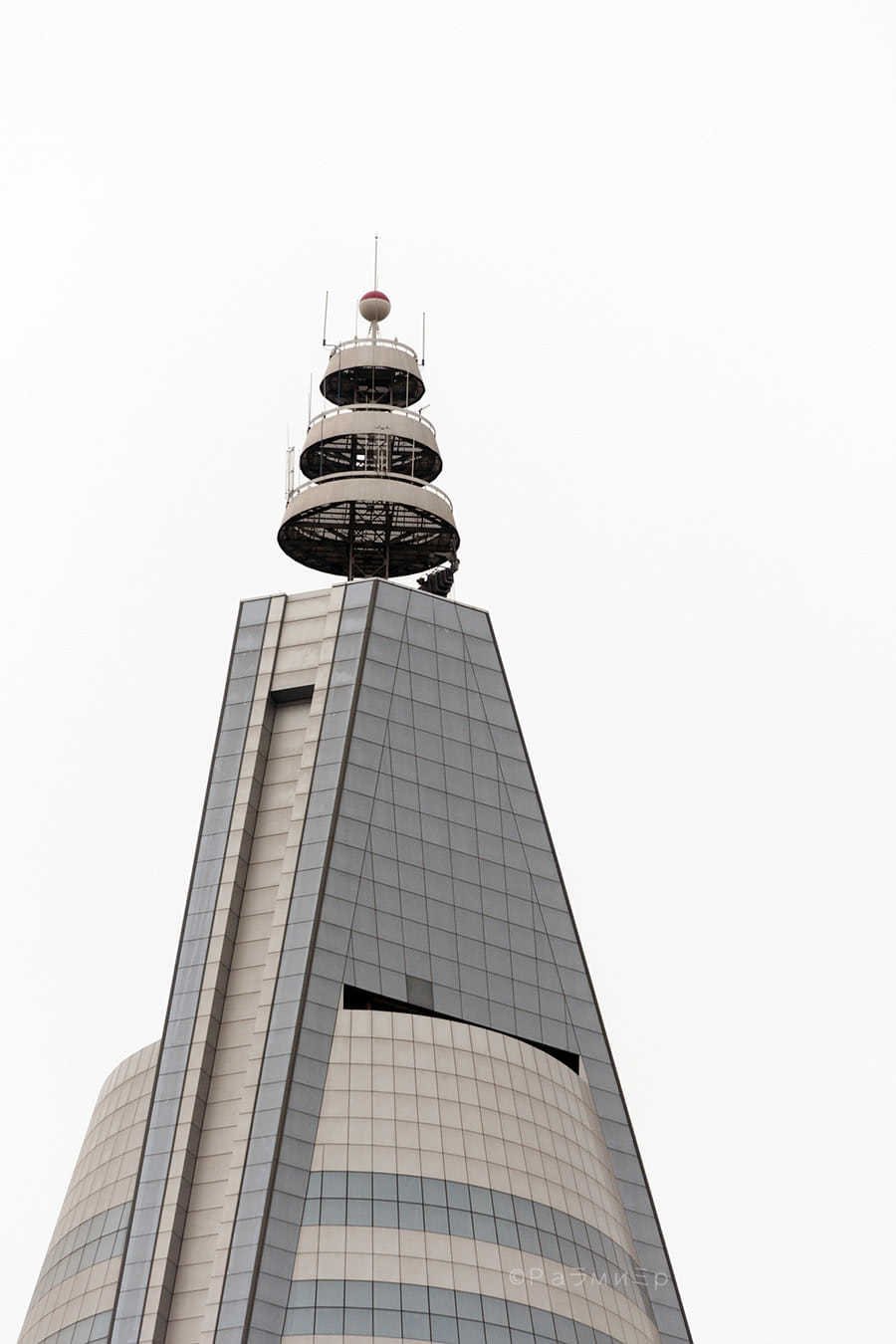
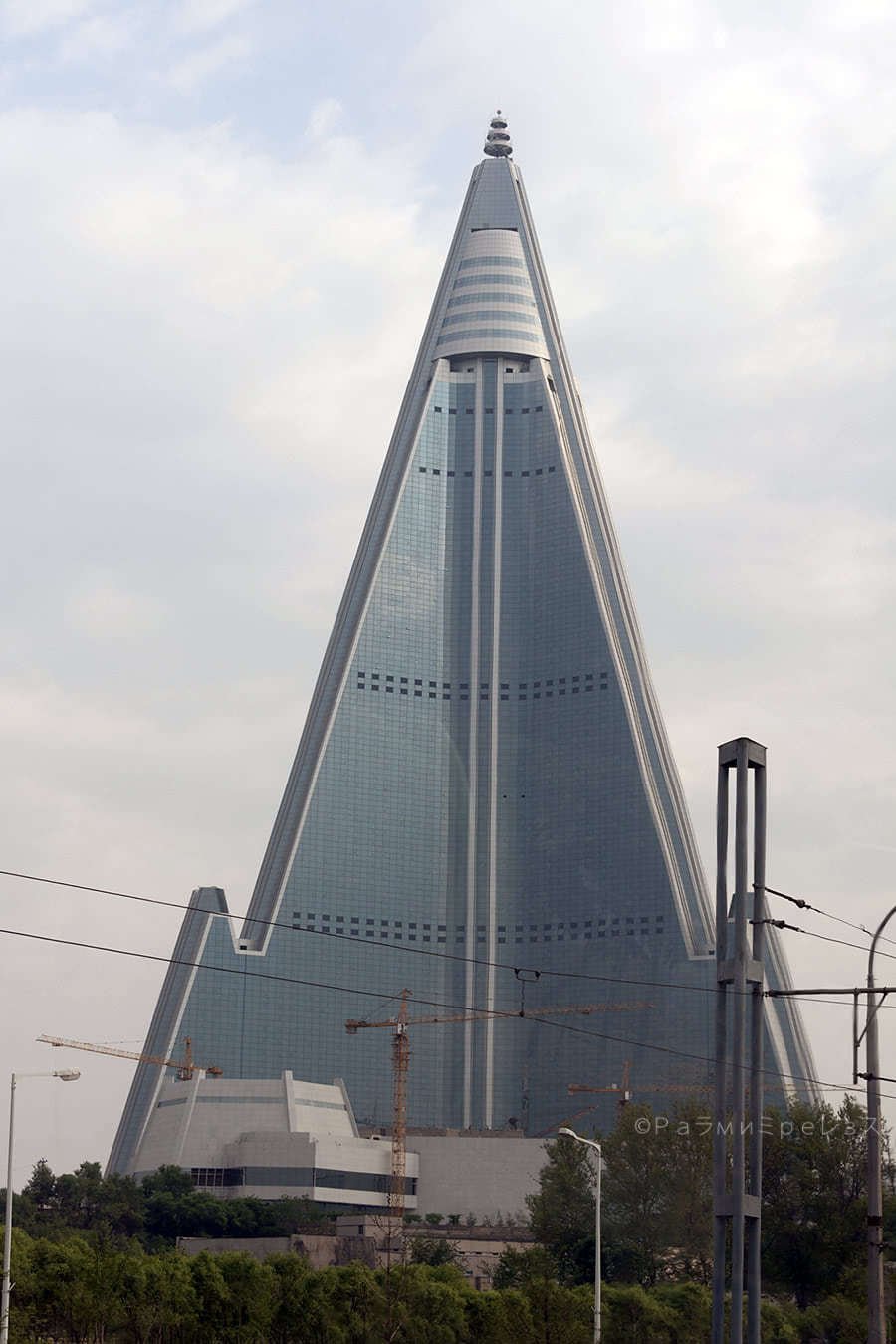
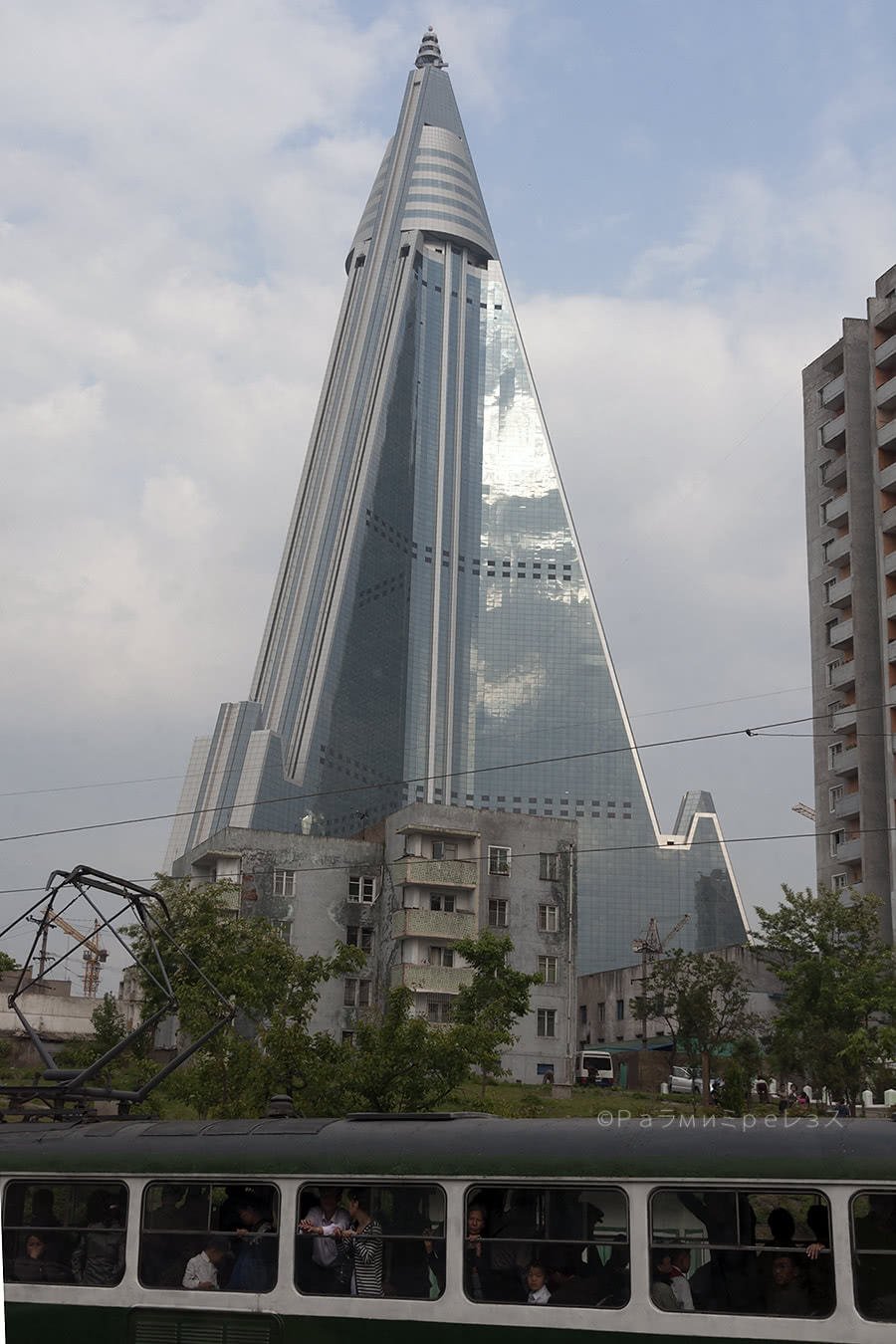
Ryugyong.
Besides the taxis I already mentioned, another curious detail was Pyongyang’s traffic in general. The image I had in my head was that of a totally desolate city in that regard, with huge but empty avenues.
It’s true the traffic does not come close to those traffic jams you find in Medellin or London. But it was much denser than I thought it would be.
And a variety of cars and makes could be seen, not only vintage Soviet, contemporary Russian, or Chinese.
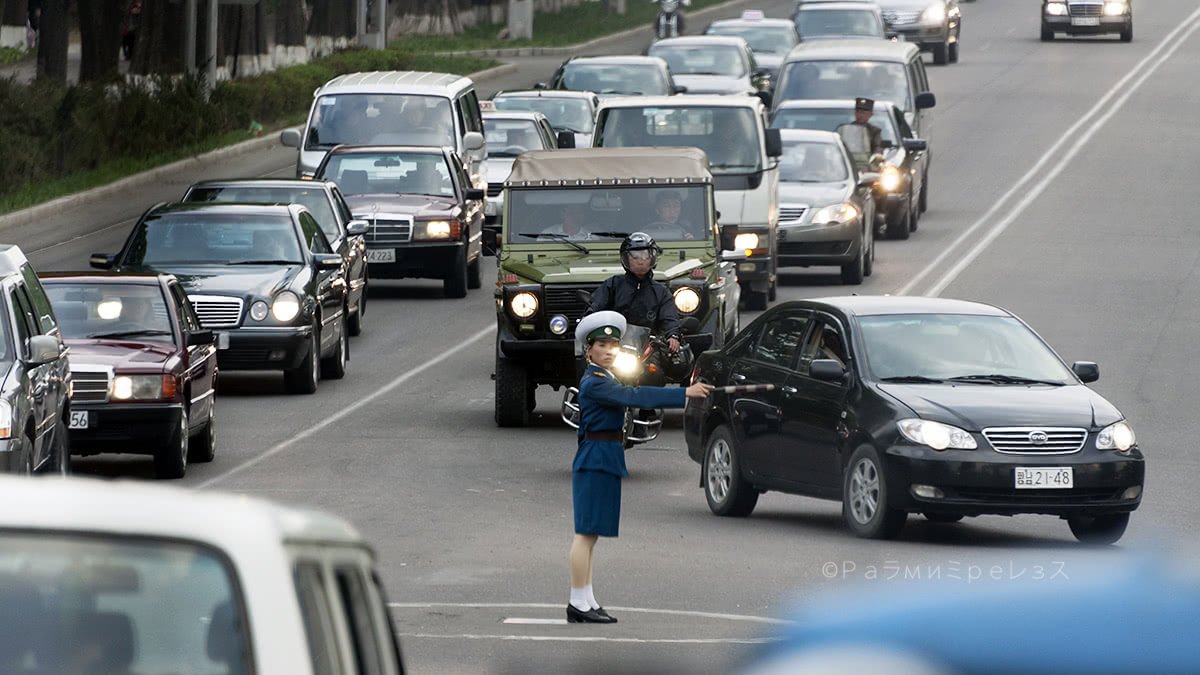
The somehow out-of-place American car could be seen (Ford or Chevrolet), Mercedes-Benz and even Toyota. That struck me as very curious.
They claim to hate Japan with their soul, but they use their cars. The fact that in Japan a car becomes very expensive to maintain in a roadworthy condition after 10 years helps the situation. After those 10 years pass they have two options: They can either export them or destroy them.
Granted, there’s always the eccentric Japanese person that loves his or her old car, and pays whatever it’s needed to keep it roadworthy. But it’s not the usual situation.
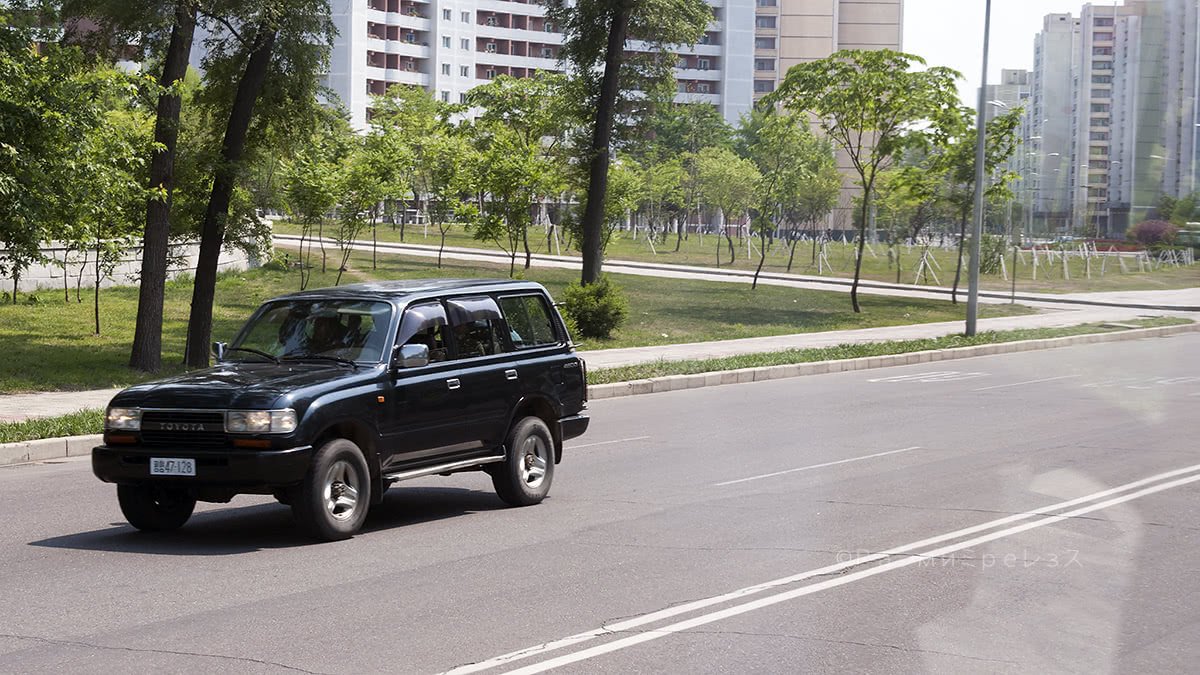
And destroying the cars is expensive as hell. So much so that often they choose to sell them cheap to an export agency, and the agency then handles the whole thing and profits from it.
Many used cars are exported from Japan. Well maintained as they do, and they’re sold in many countries around the world.
They’re present even in Peru after some Inca surgery to move the steering wheel to the other side. Singapore is another used car exporting power, using pretty much the same dynamics.
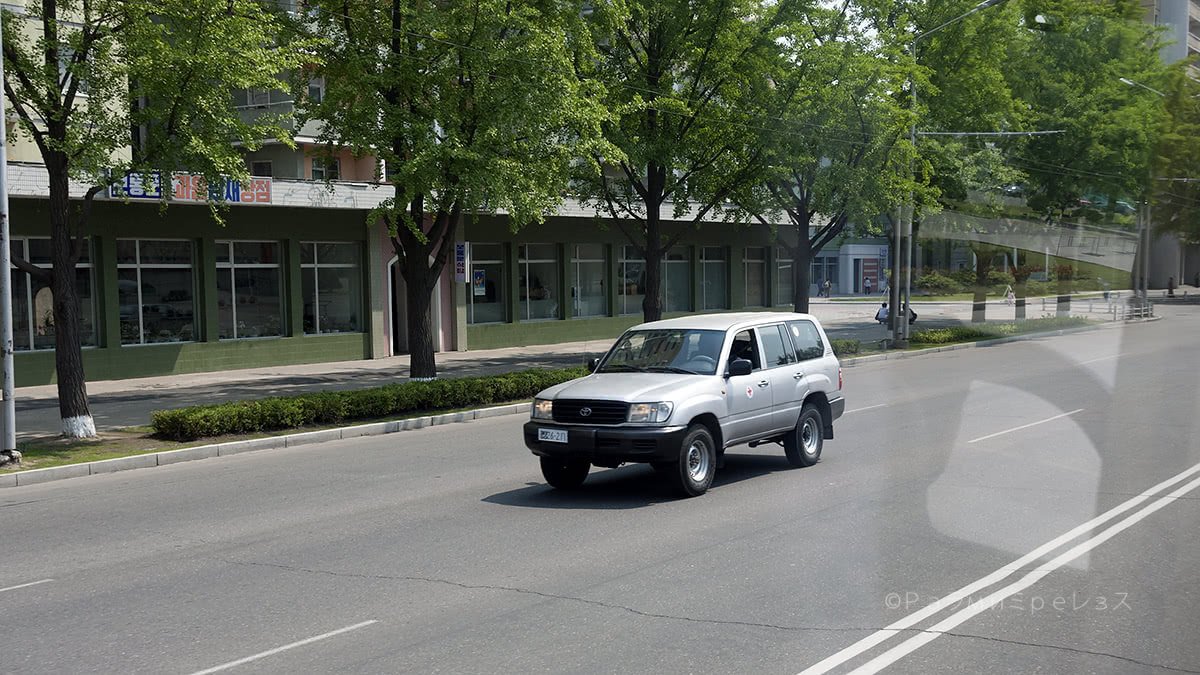
They export many of these cars to Russia as well. Around Vladivostok, some of them are bought by North Koreans, and so, these cars from the enemy end up in North Korea.
Furthermore, I even saw advertising from a local brand called Pyeonghwa Motors around Pyongyang.
That is pretty curious because traditional advertising shouldn’t exist in theory. Or at least not in the way we understand it in capitalist systems.
In theory, no one should be able to buy a car, other than the elite. On the other hand, I was in Pyongyang, right where the elite lives, so it wasn’t that crazy after all.
It needs to be mentioned too, inter alia, that there is a “backstage” capitalist economy that the regime tolerates.
They do it because they have to, and because they profit from it anyway. For the most part, it’s well hidden from foreigners, and it’s still technically illegal.
Perhaps, that economy has resulted in a small middle class that can afford certain luxuries that in theory couldn’t be had.
There’s a city called Pyongsong in the outskirts of Pyongyang. There, many rich people (for North Korea) live.
Most of that people have made their fortunes by importing stuff from China via the Dandong-Sinuiju pass and then selling them again… which means there’s a market, clandestine as it may be.
The main academic centres of the nuclear issue are also located in Pyongsong.
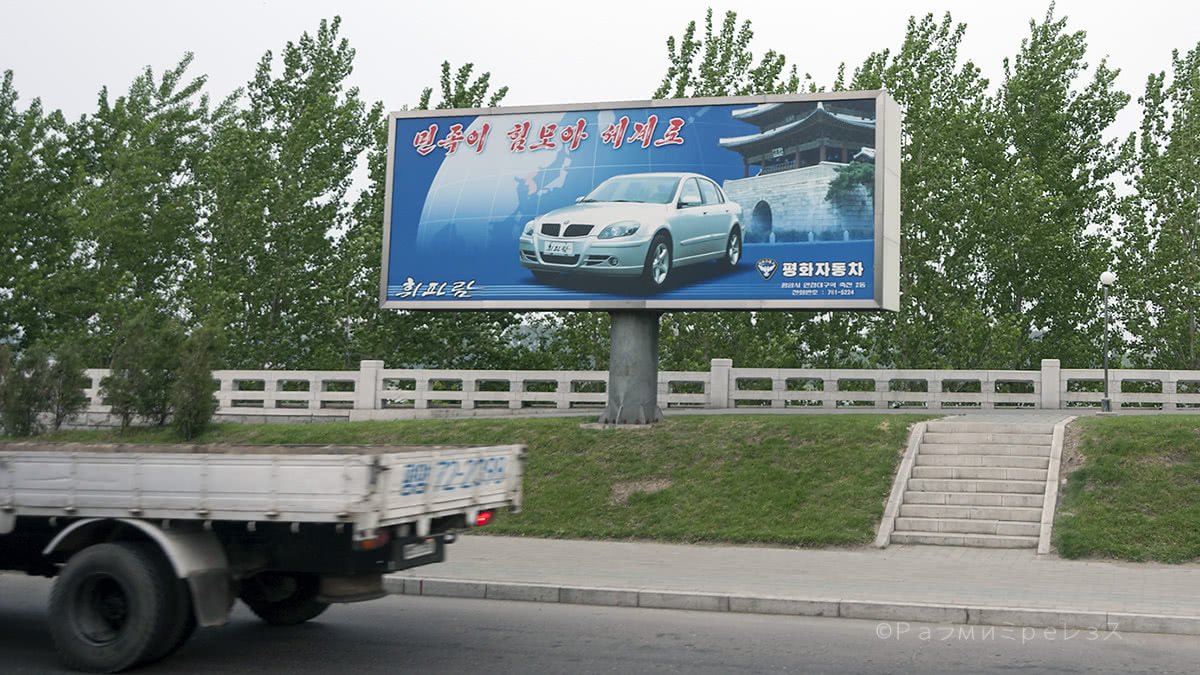
Traditional traffic lights appeared on occasion. But in general, they controlled traffic using some human traffic lights, usually women.
They would stand on a demarcated circle on the road. And with a whistle, and some robot-like movements they would control traffic. Some of them even looked kind of cute.
Human traffic lights.
I also saw this kind of human traffic control in Shenyang, China.
On top of all this, I was also able to visit the Mansudae Artist’s Studio. There, the country’s finest artists make works in painting, sculpture, and other crafts.
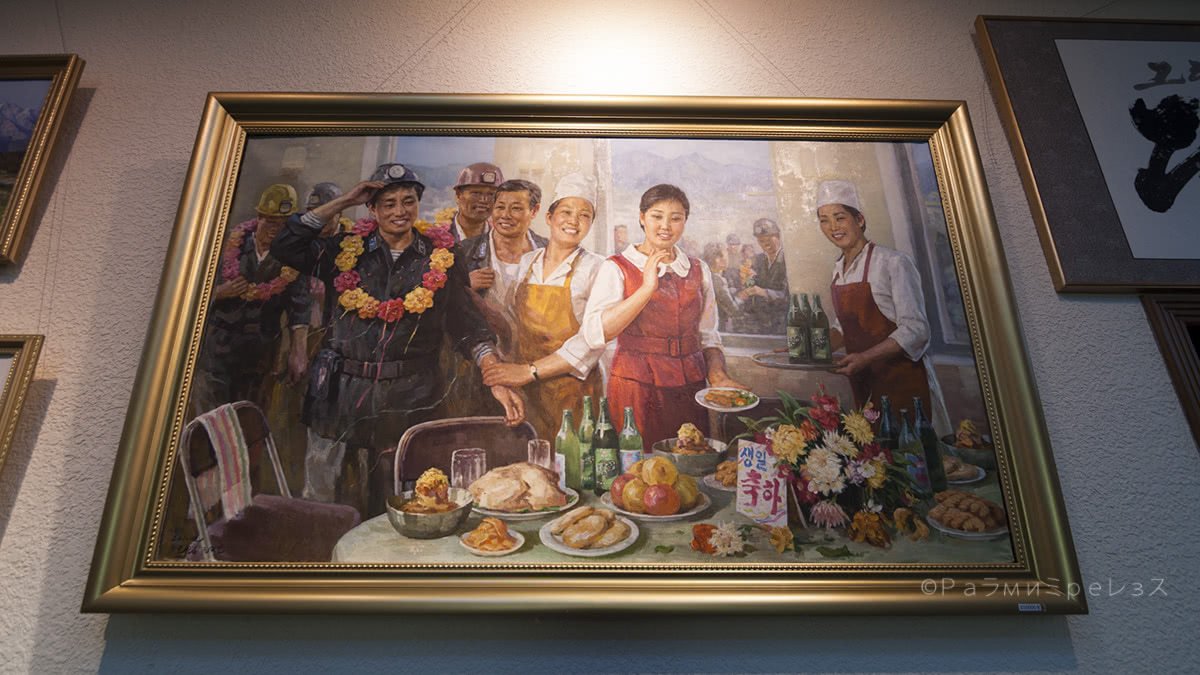
The art that can be made has to be about showing the regime in a positive light, obviously.
They’re even hired by other leaders in countries in Africa and elsewhere to make their own sculptures.
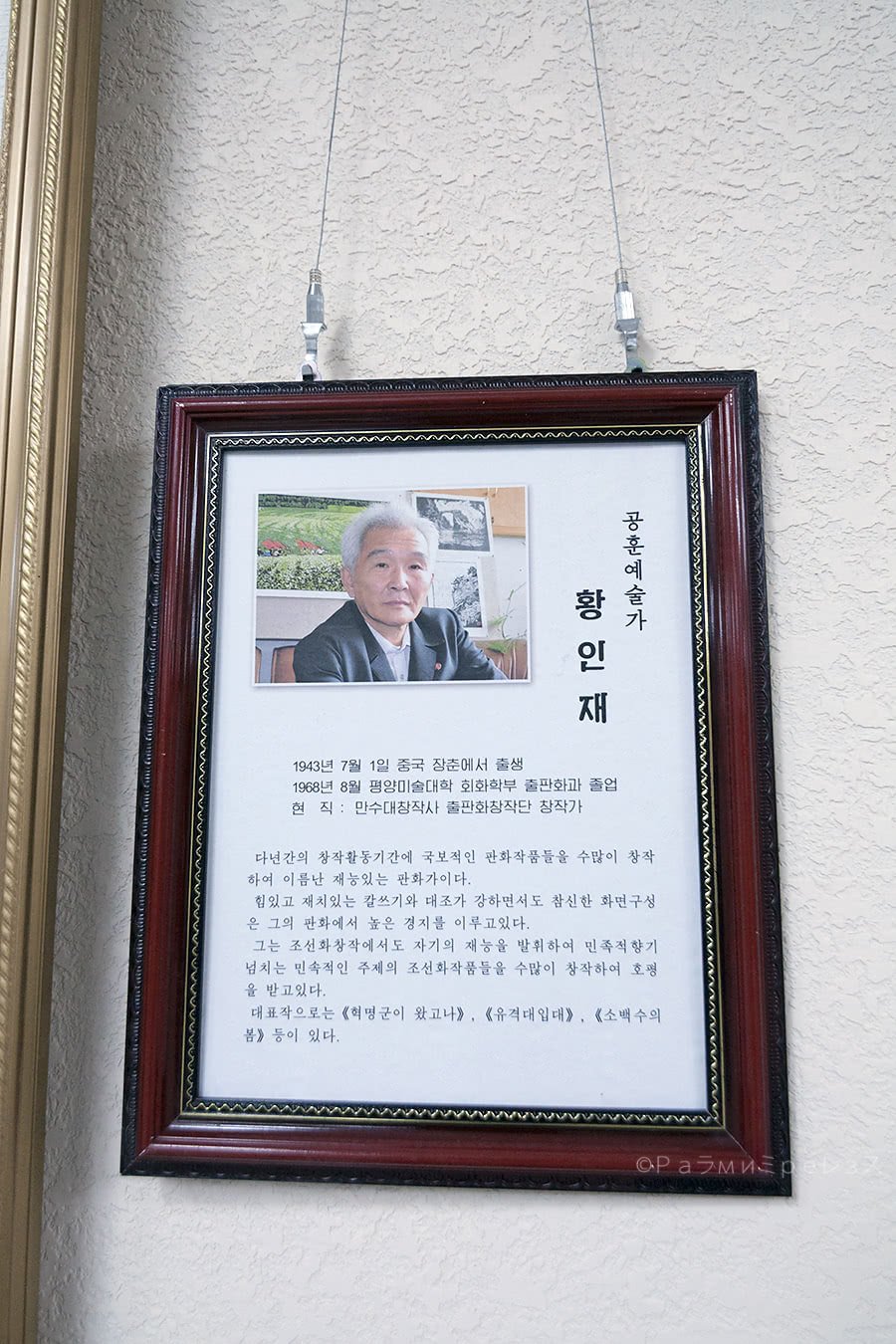
Ramírez.
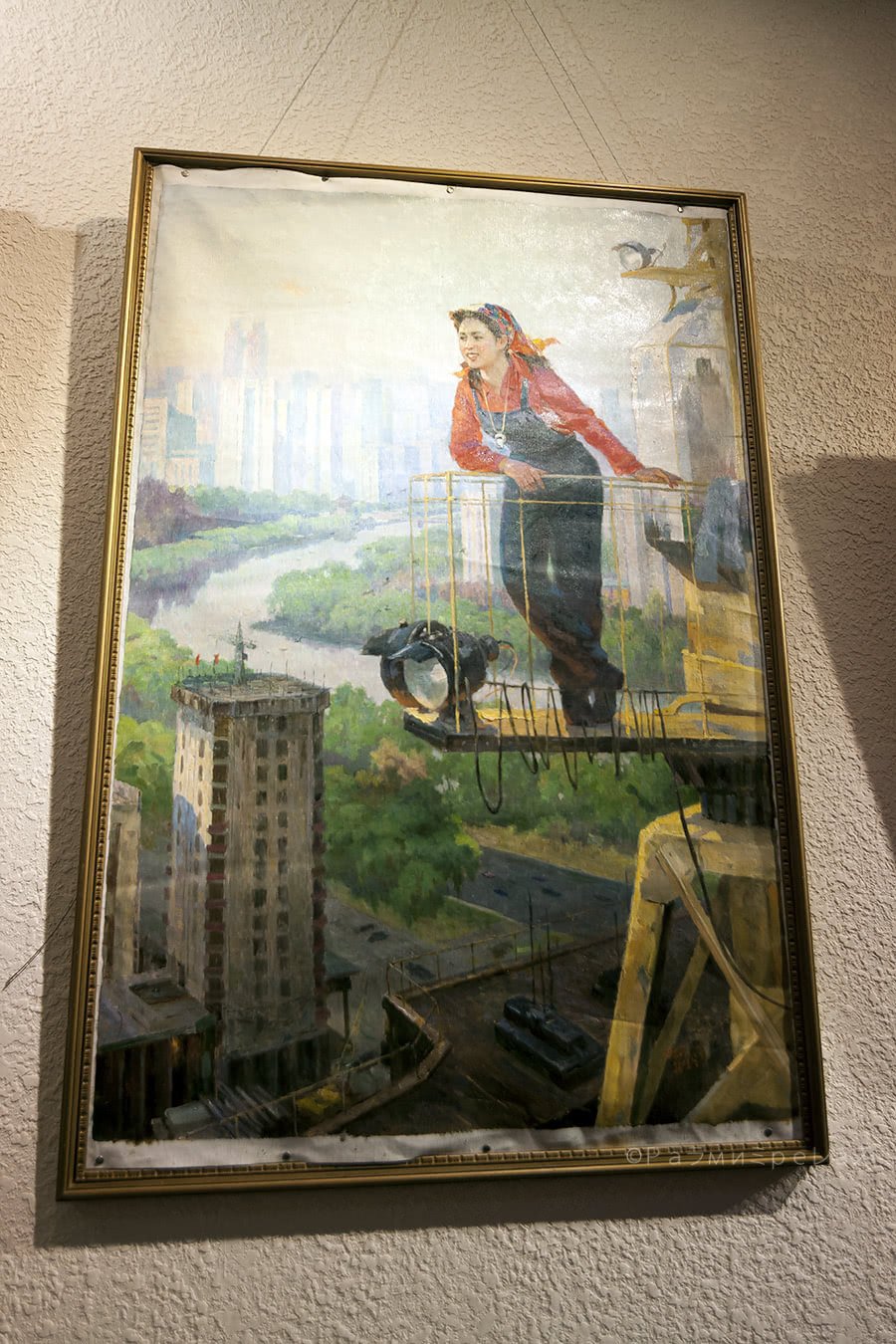
Ramírez.
Profits from this go to the state obviously. It’s not like the North Korean Henry Moore can charge whatever he wants and gets to keep that money.
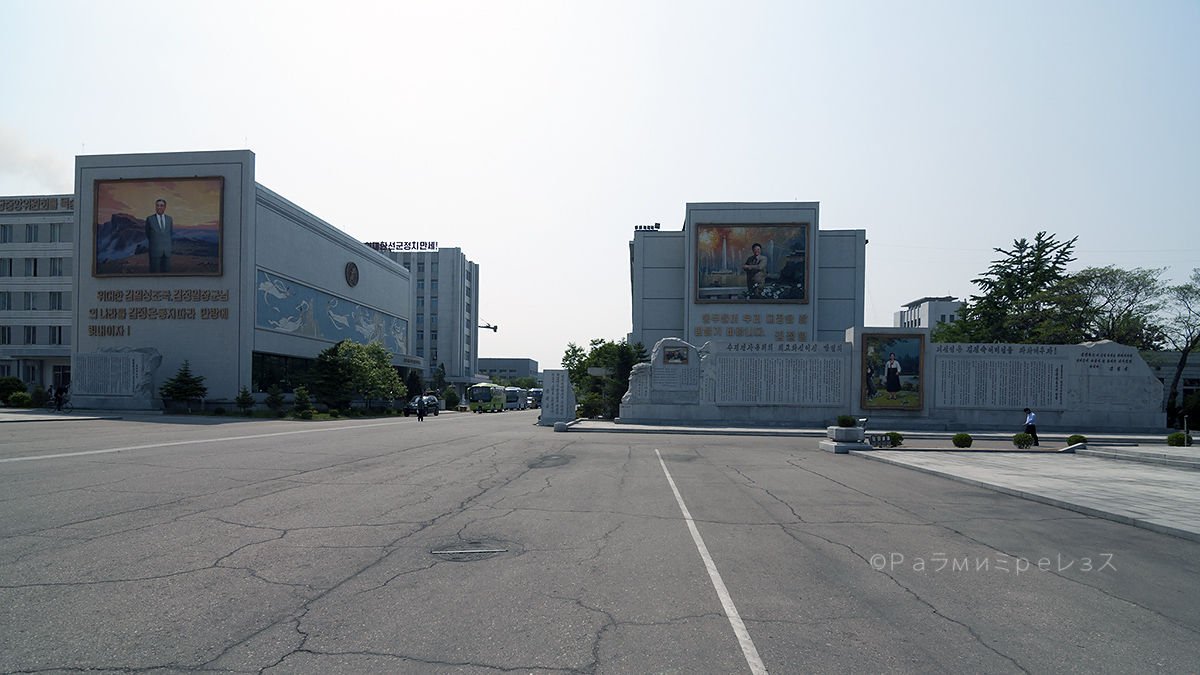
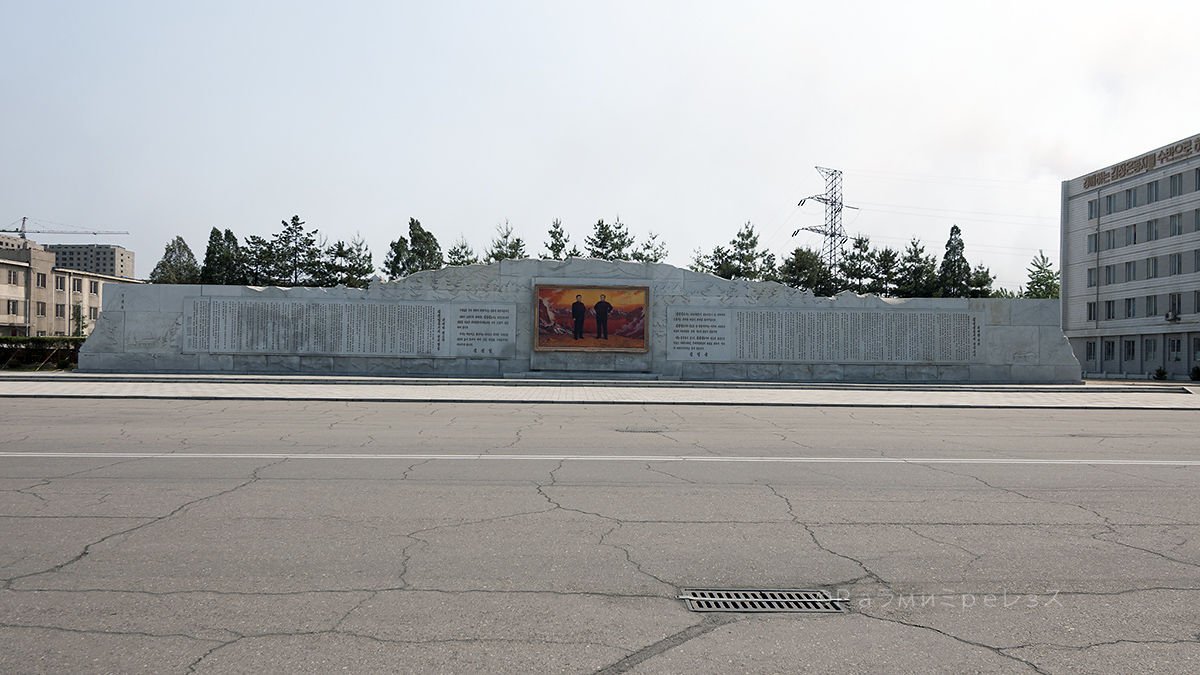
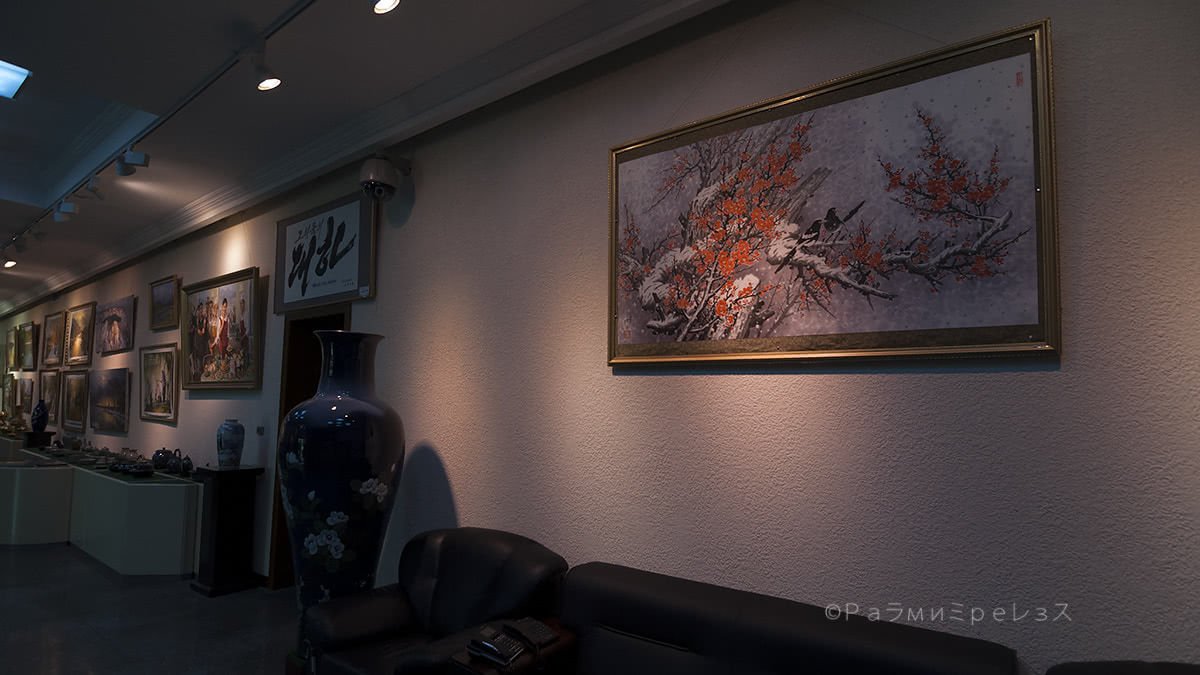
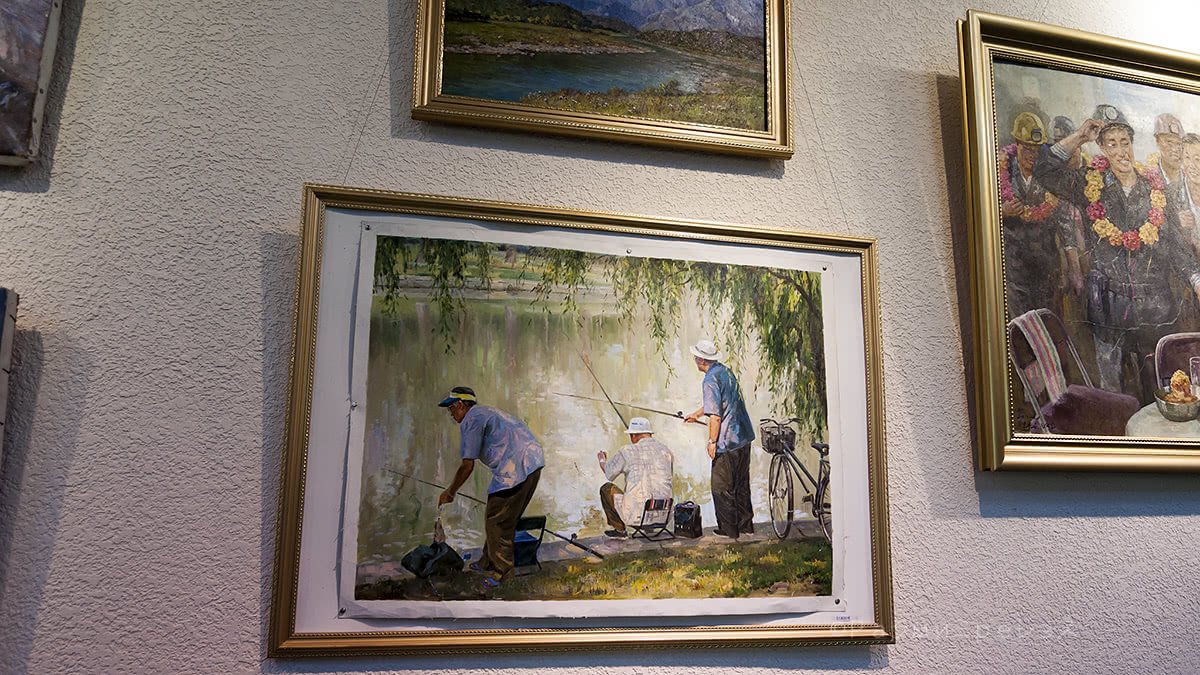
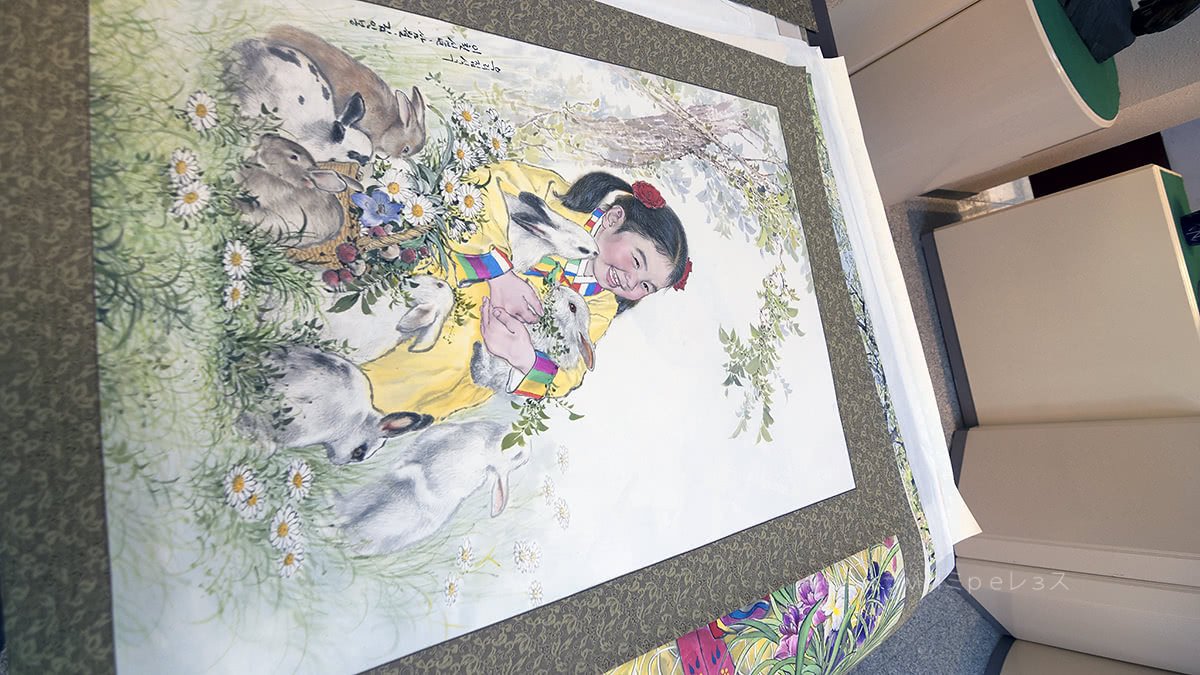
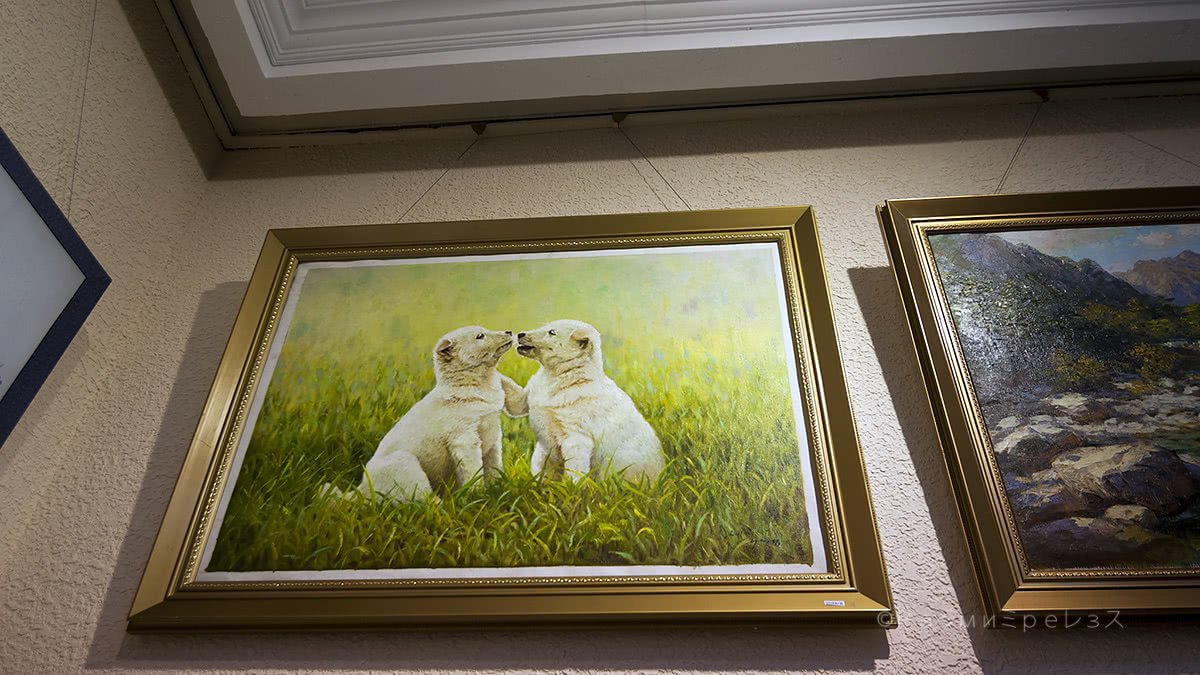

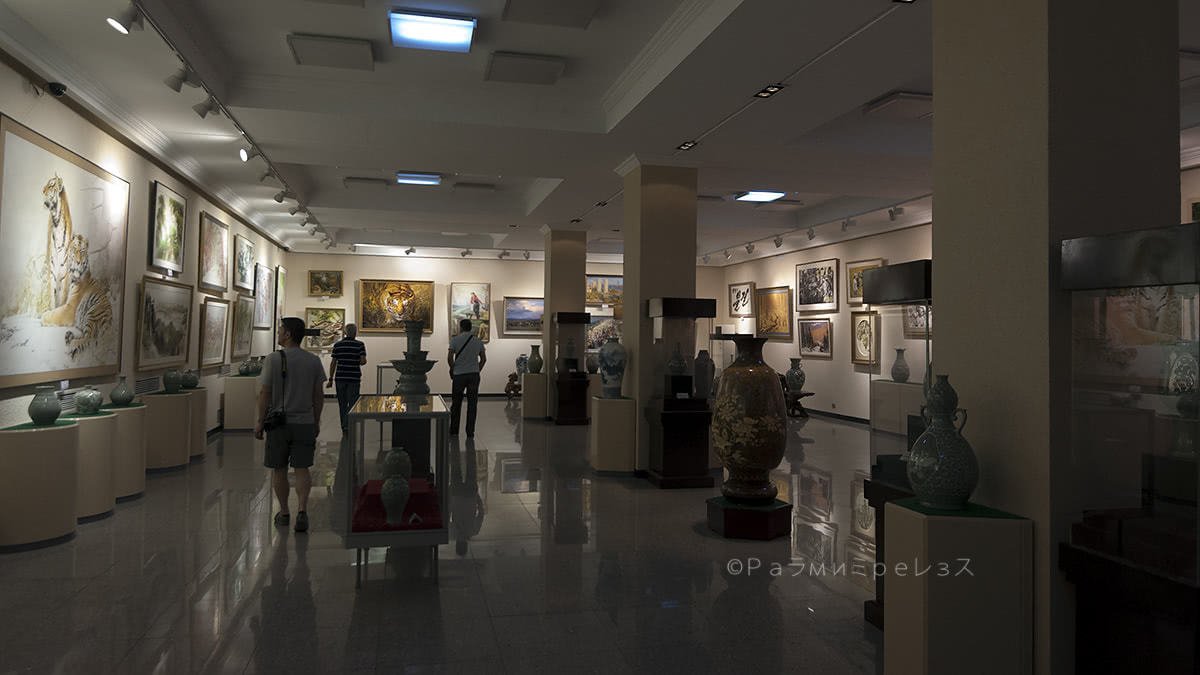
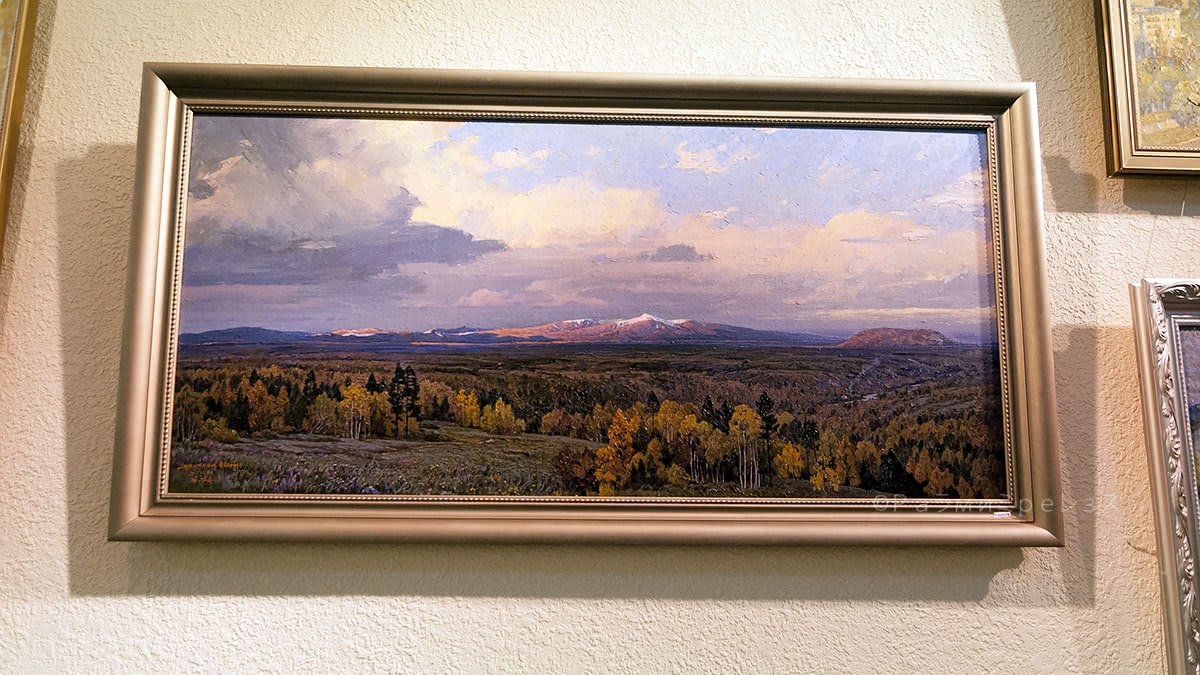
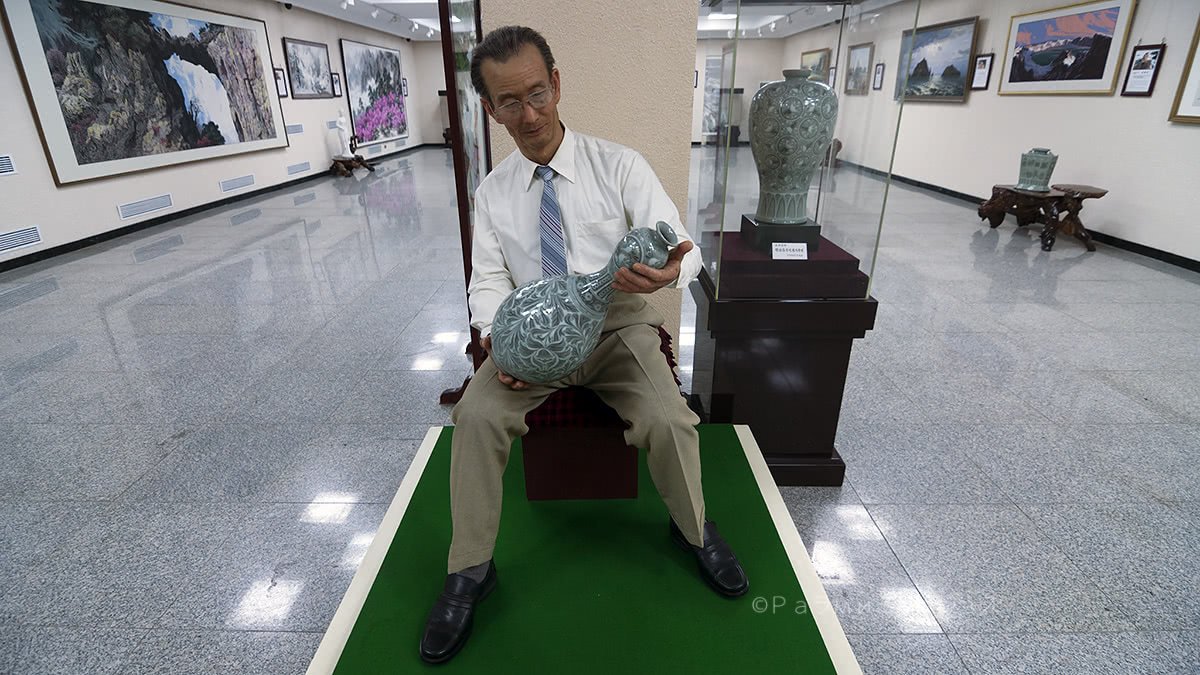
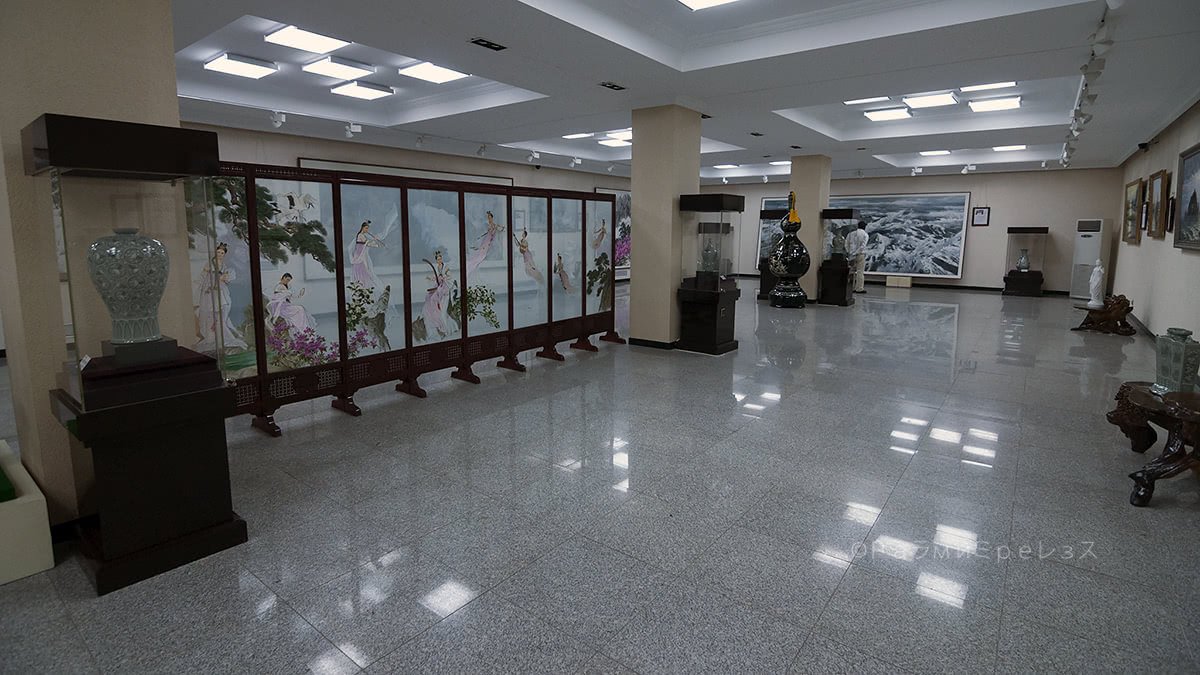
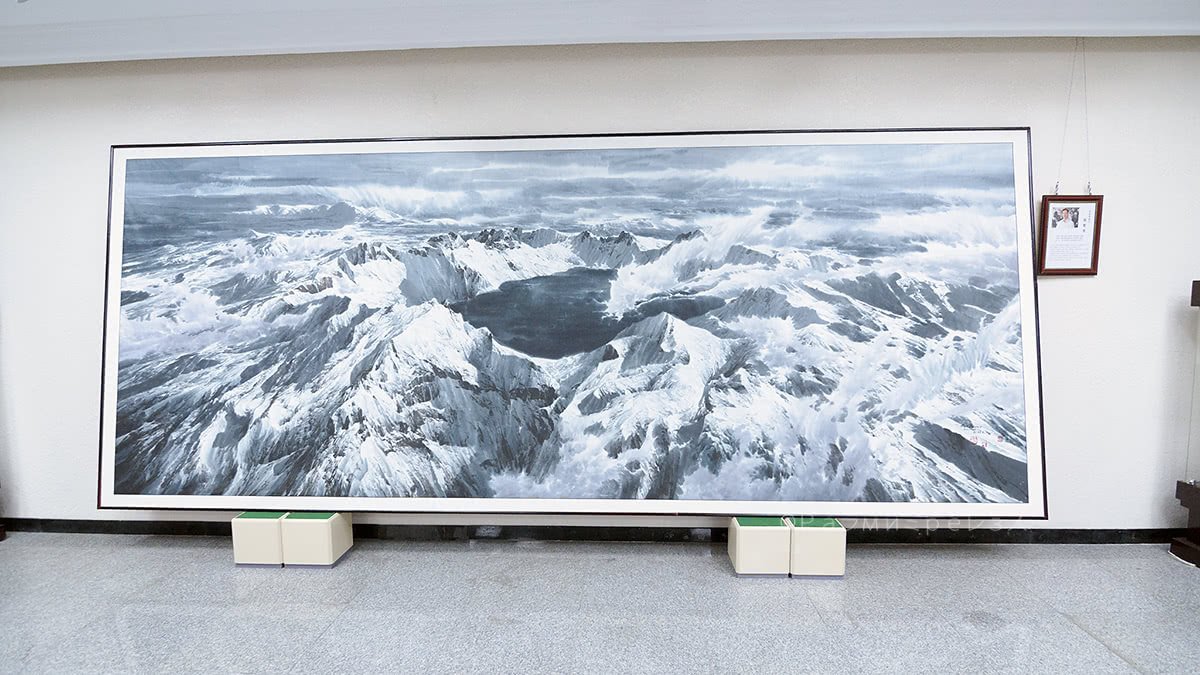
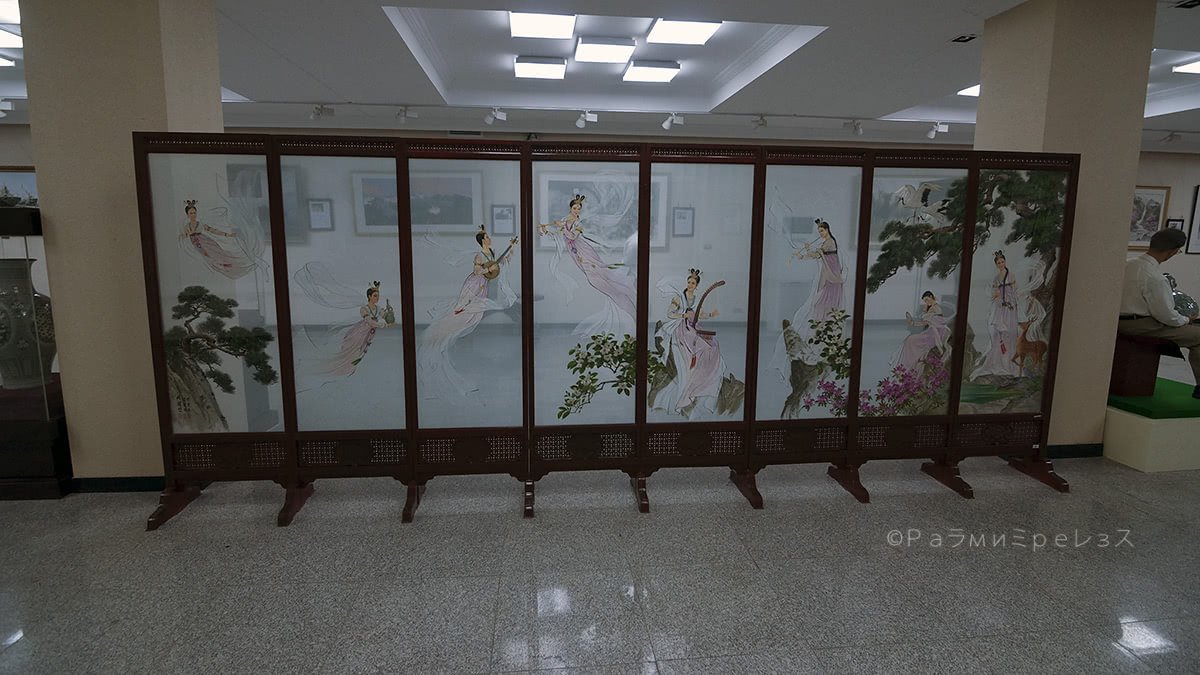
Mansudae Artists Studio.
I also walked around Kim Il-Sung Square. By far the most recognisable place in Pyongyang for someone who doesn’t know much about the city.
The military parades that are always shown in the news happen right there. It’s the place where the building with the North Korean flag can be seen.
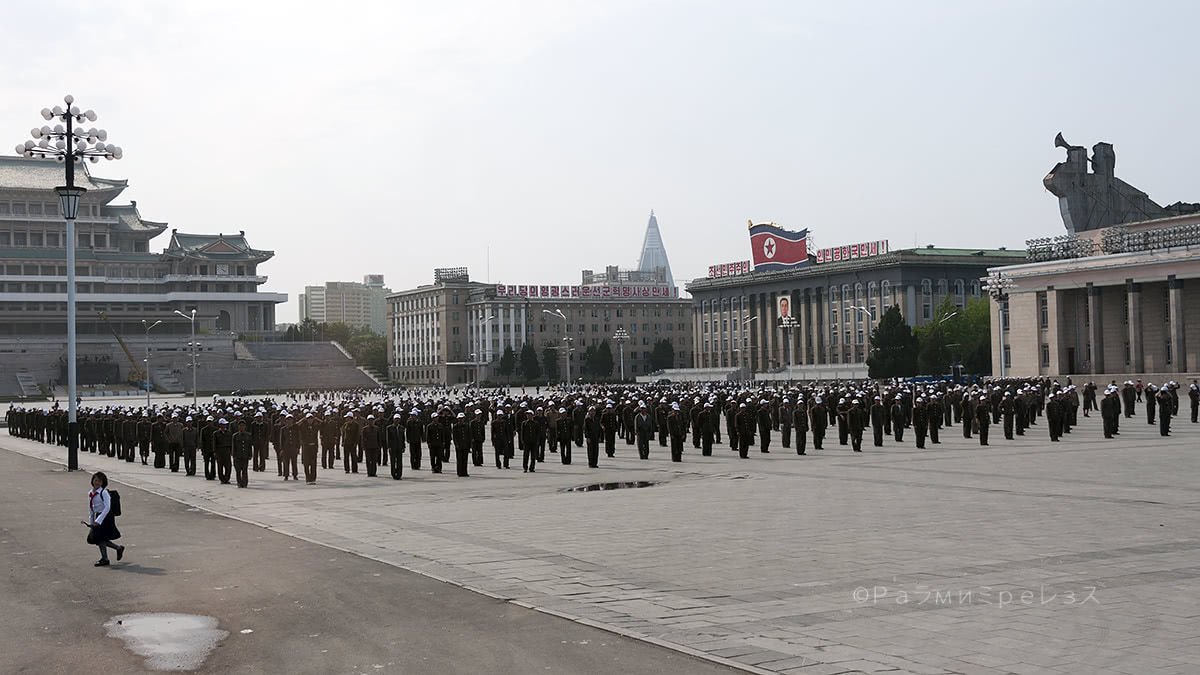
More than 100.000 people can congregate there with ease. There are some white dots on the floor so that people know where are they supposed to stand when there’s an event.
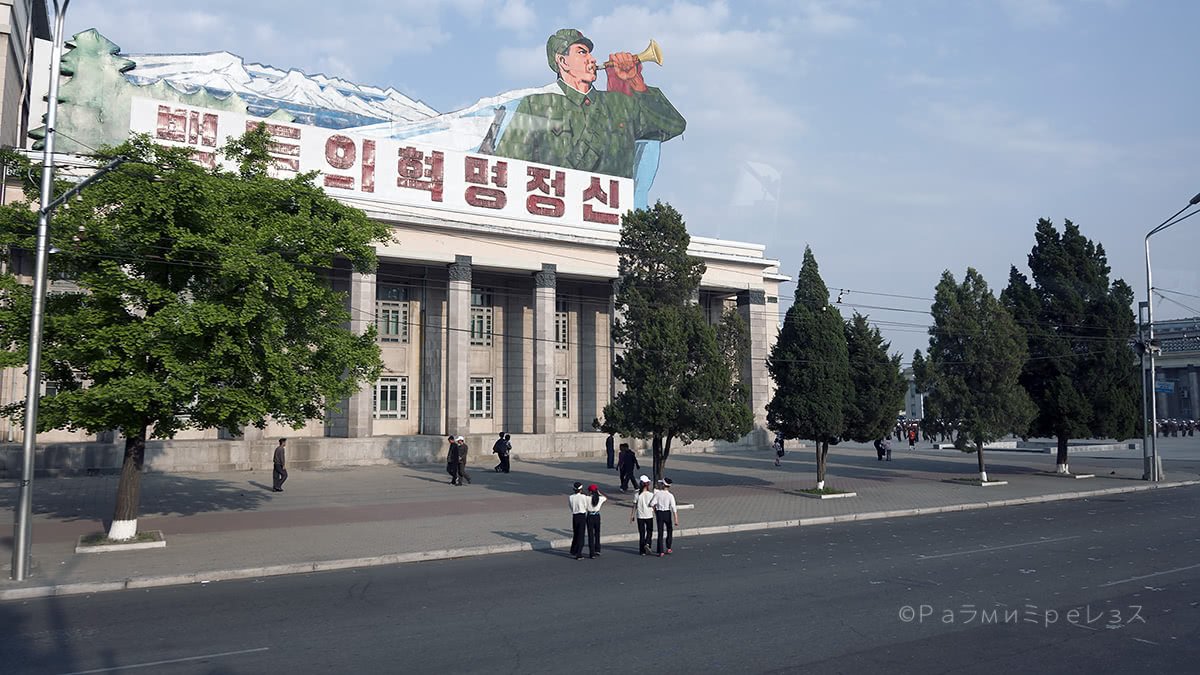
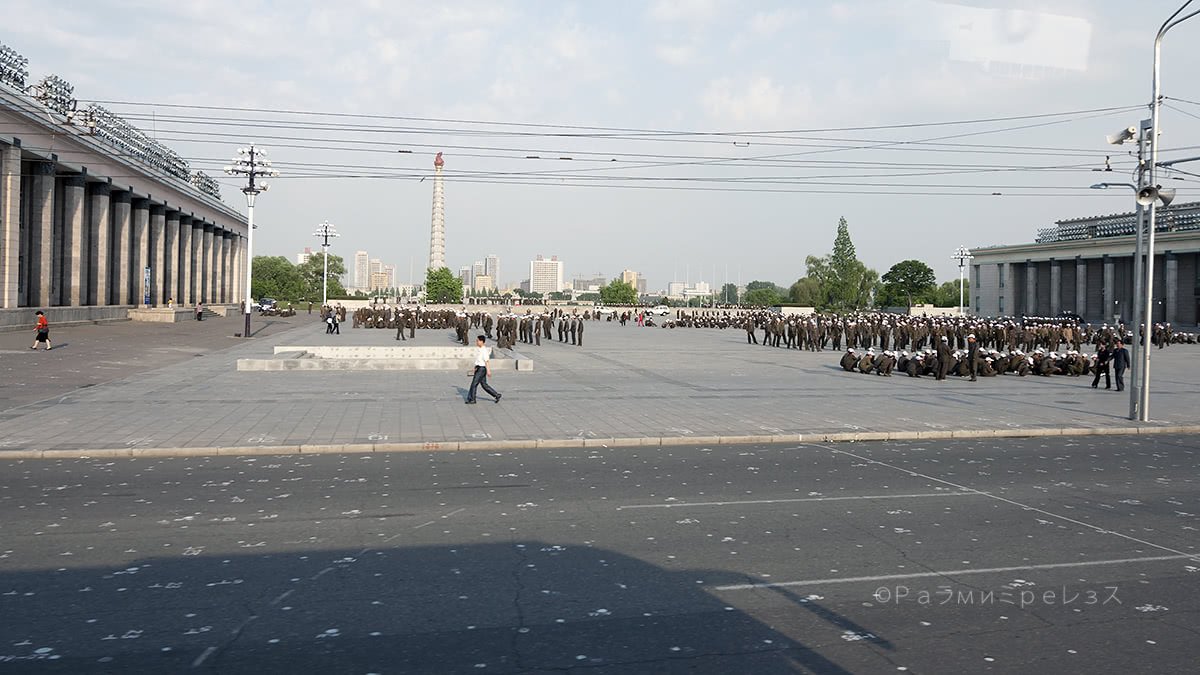
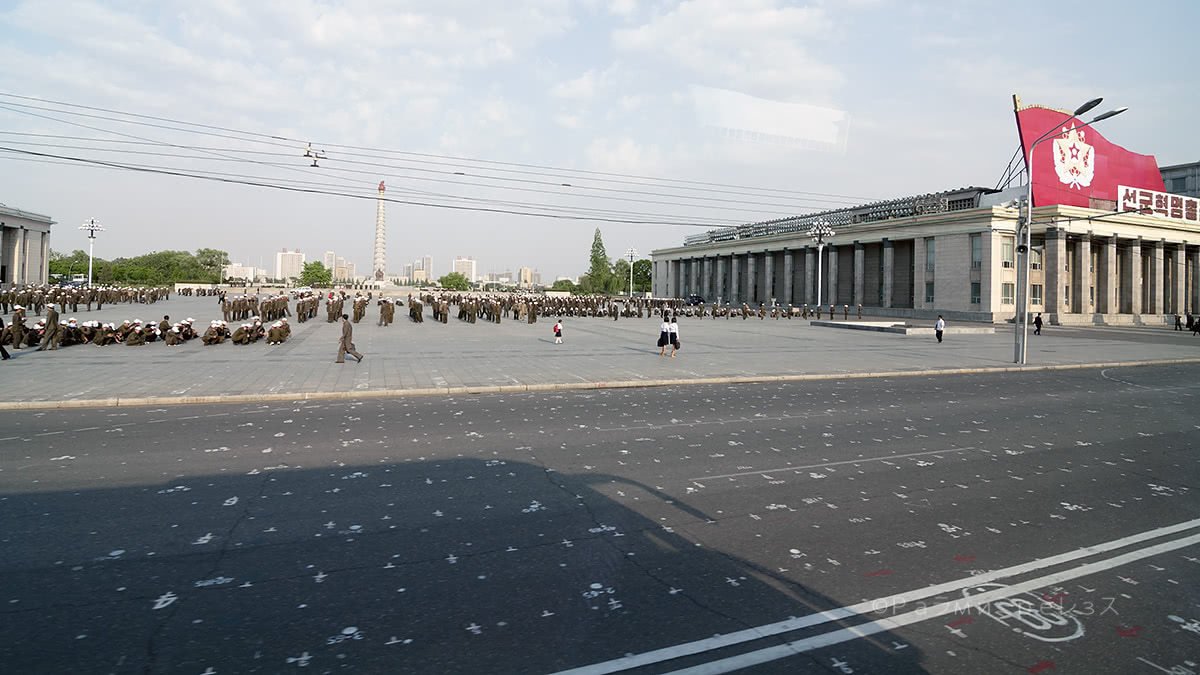
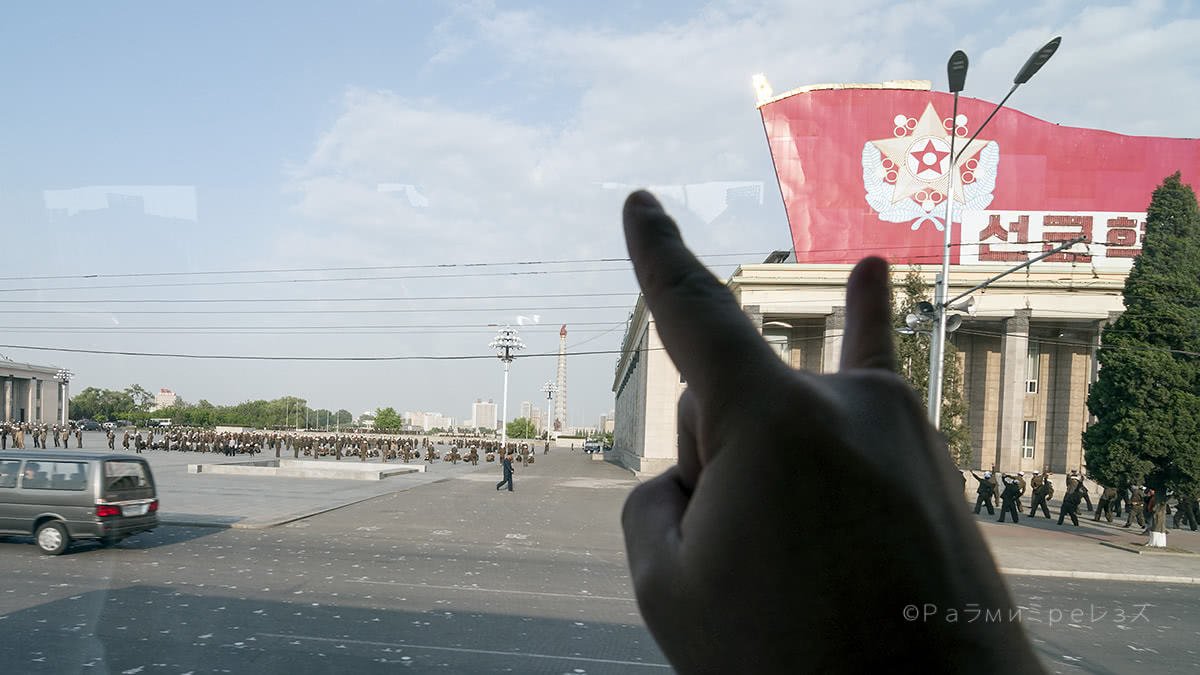
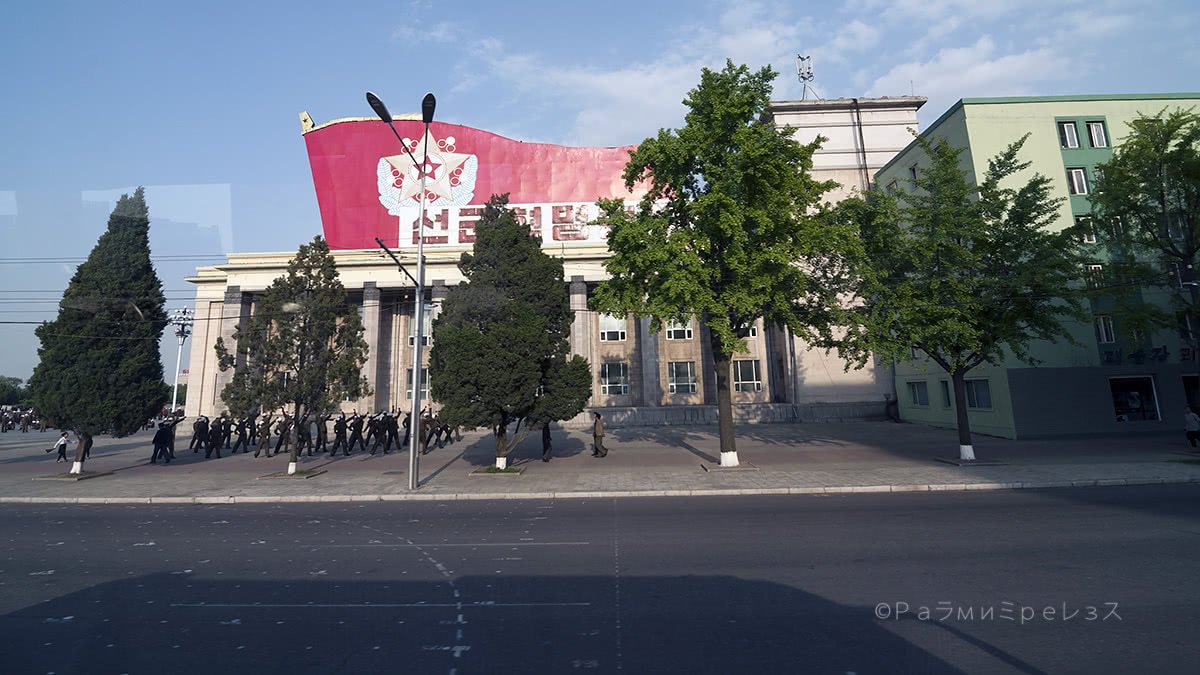
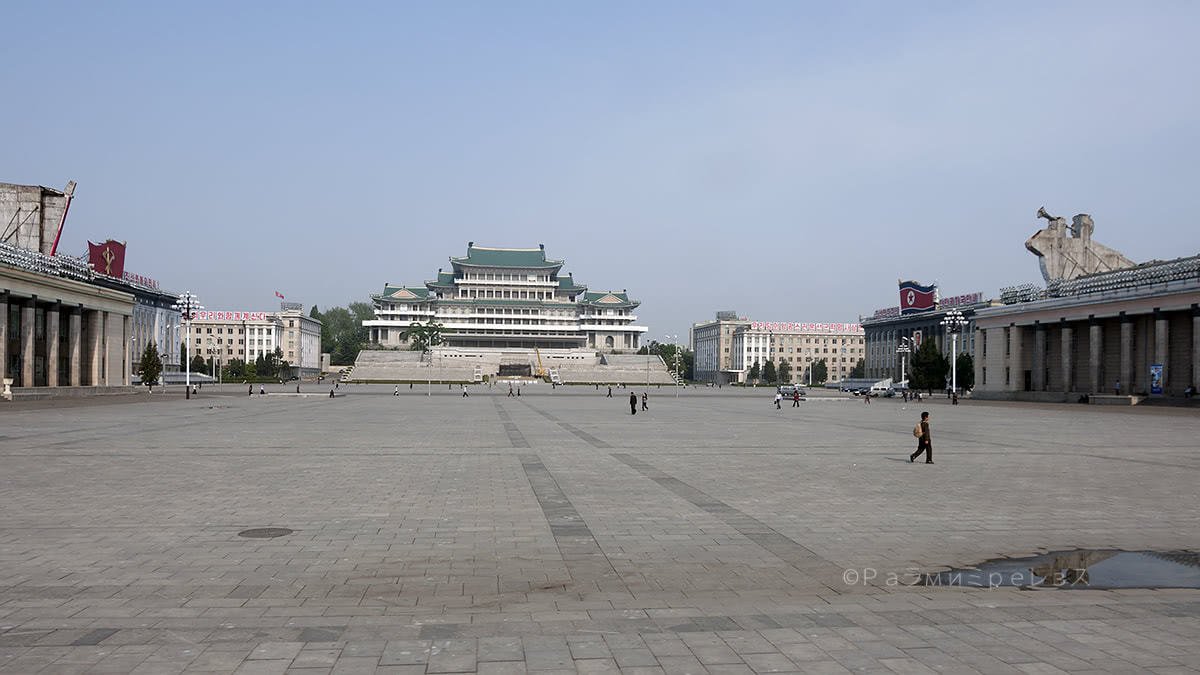
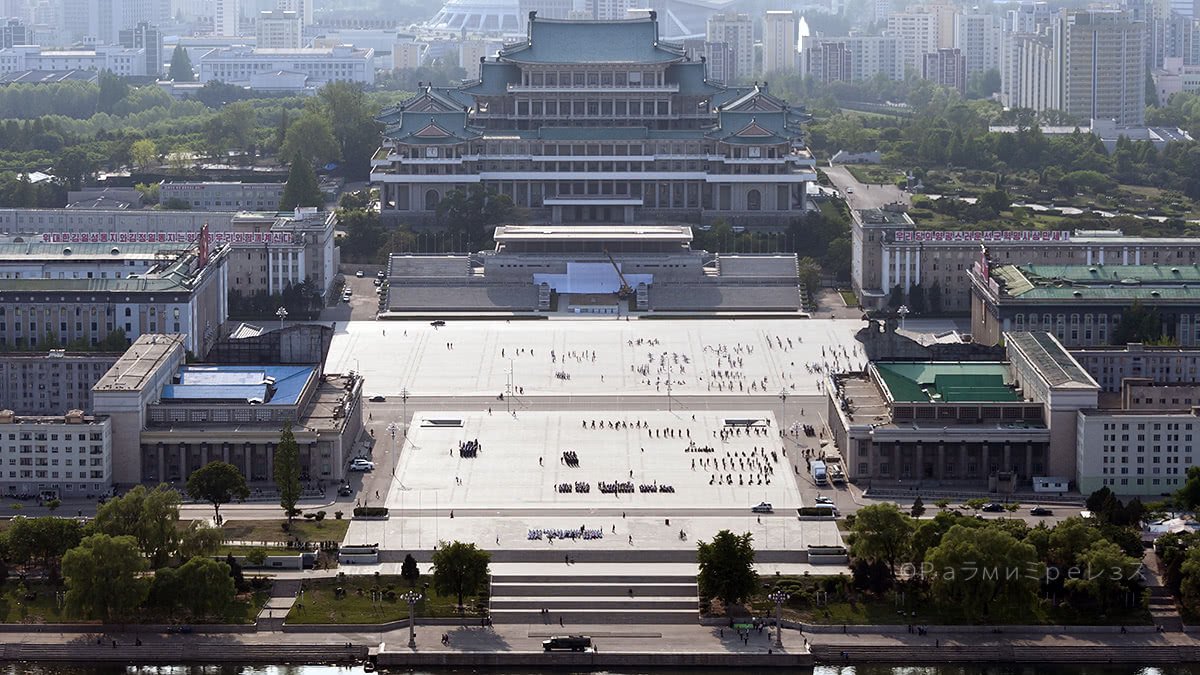
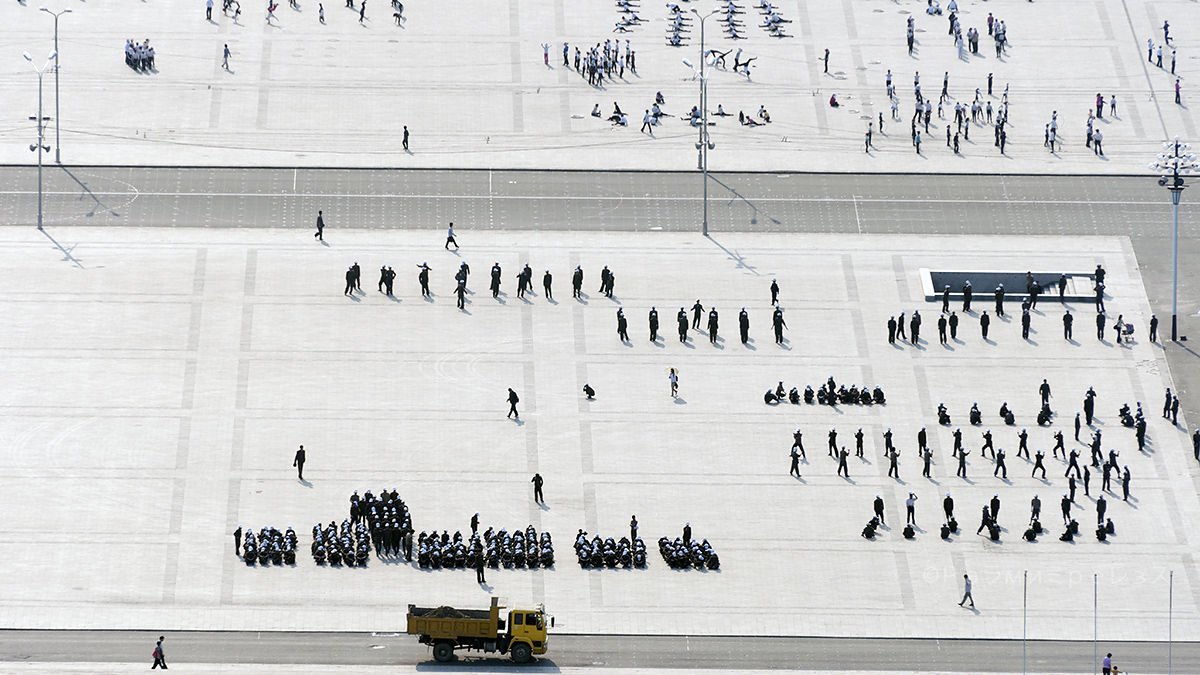
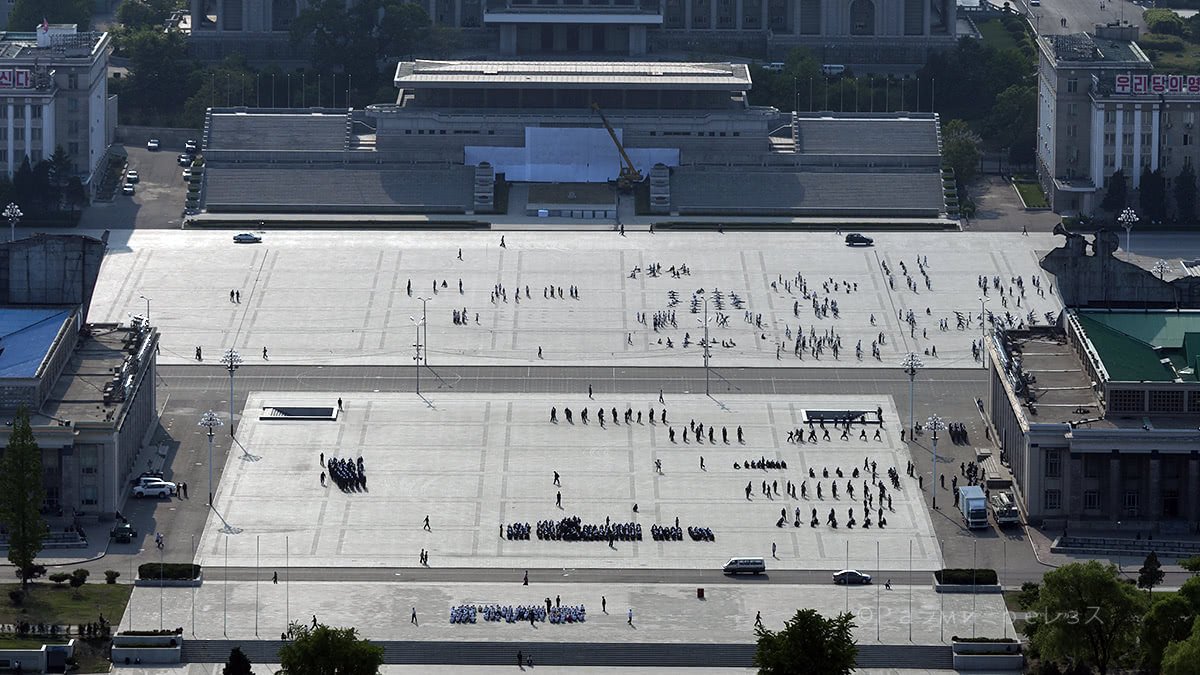
Kim Il-Sung square.
When I went, it was quite empty. I would have liked to see one of those parades in person.
Something curious is that about two blocks away from Kim Il-Sung square there was a DHL store, no less!
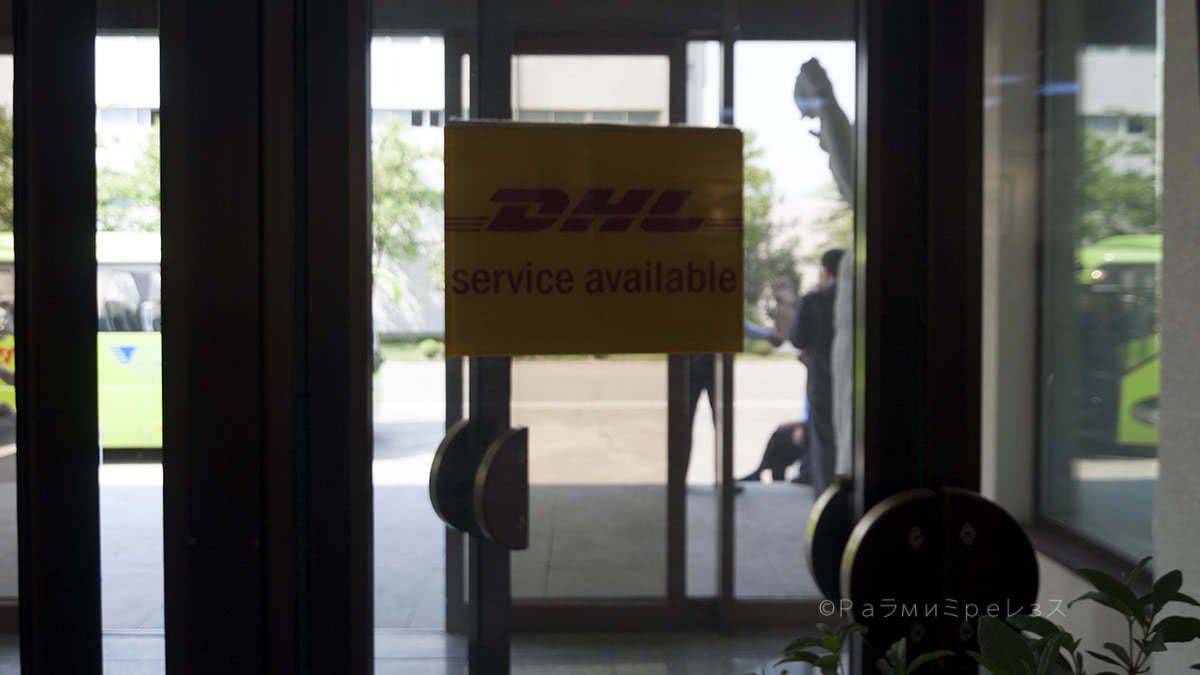
Those are some of the things that I visited and that I have to say about Pyongyang.
Nonetheless, I had the chance to visit places outside the city. I went by air, flying on super delicious Tupolev and Ilyushin Aeroplanes, and on King Long bus.
I also had the chance to take a joy flight. I departed Pyongyang and arrived back there again, on a delicious Antonov.
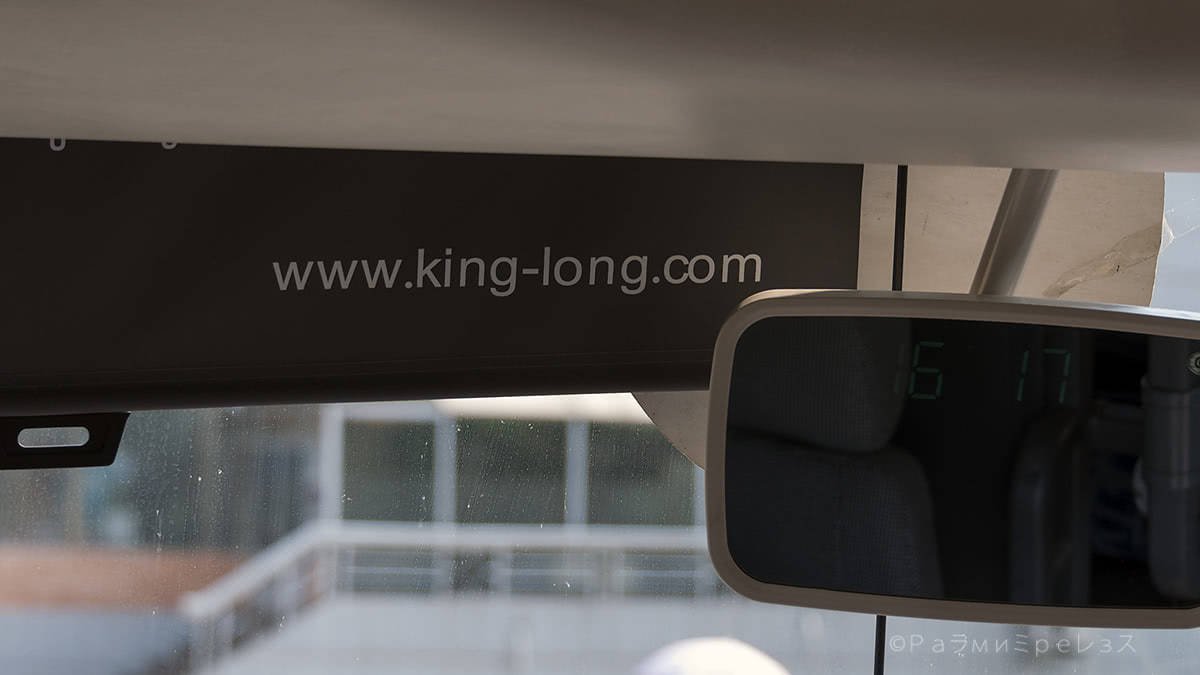
Before we continue with the places outside Pyongyang and the other flights, I leave you with this gallery. It has a variety of photos of the city that I didn’t use to illustrate anything of what I wrote before.
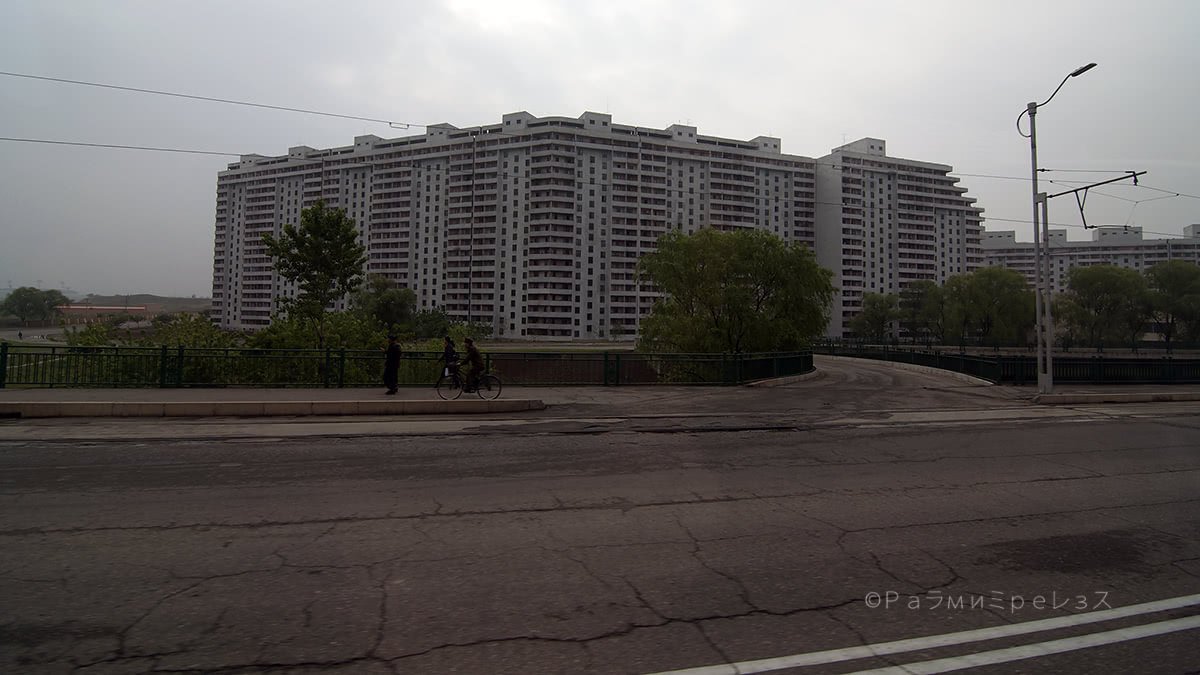
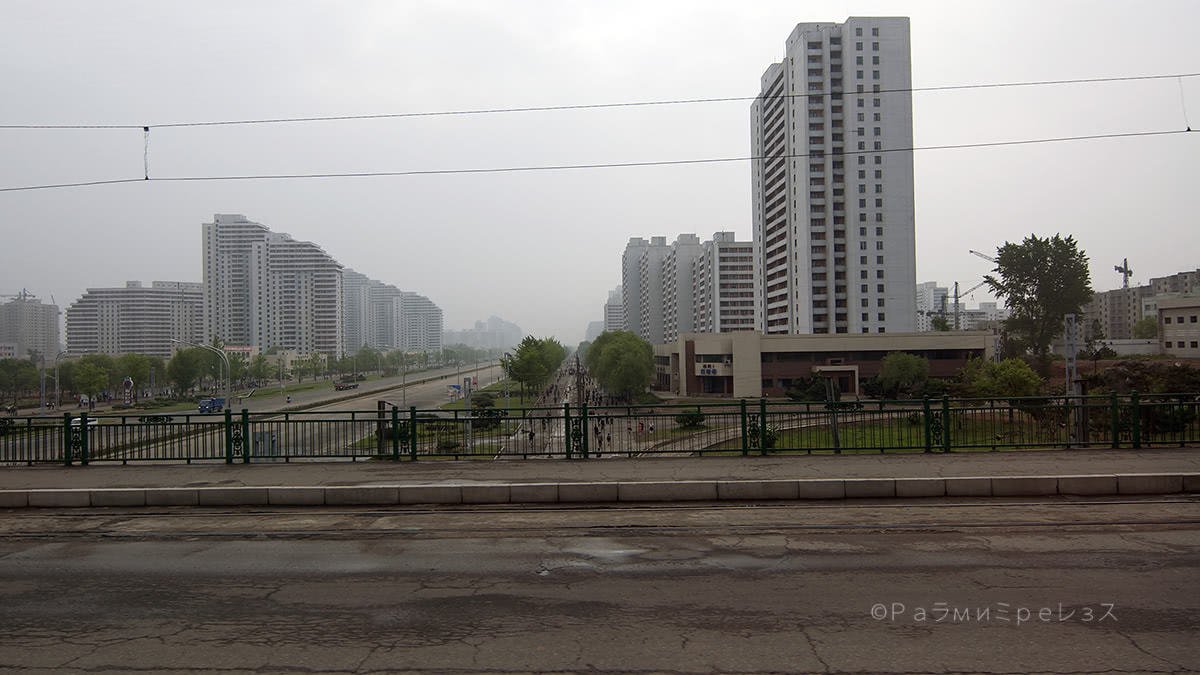
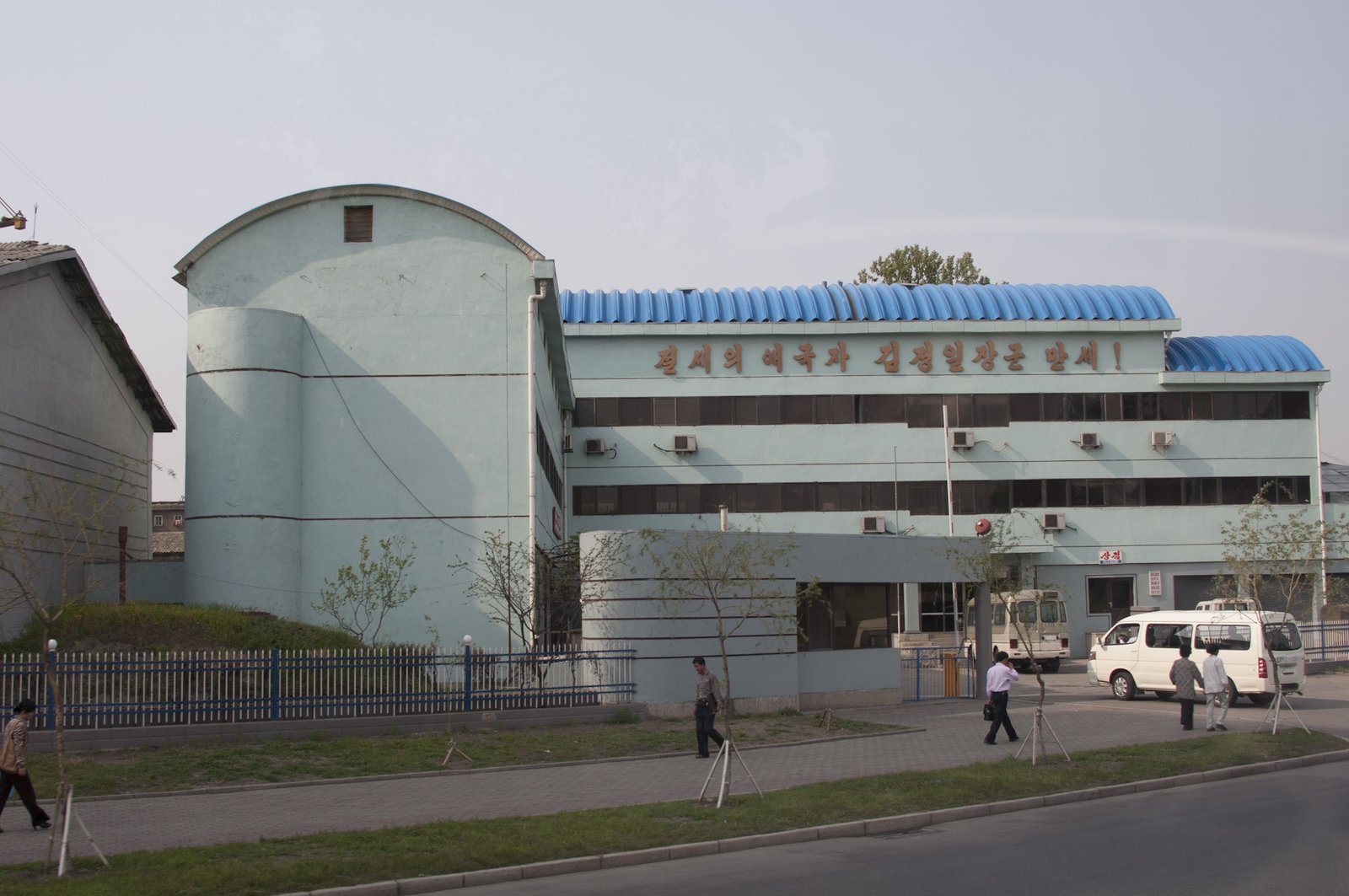
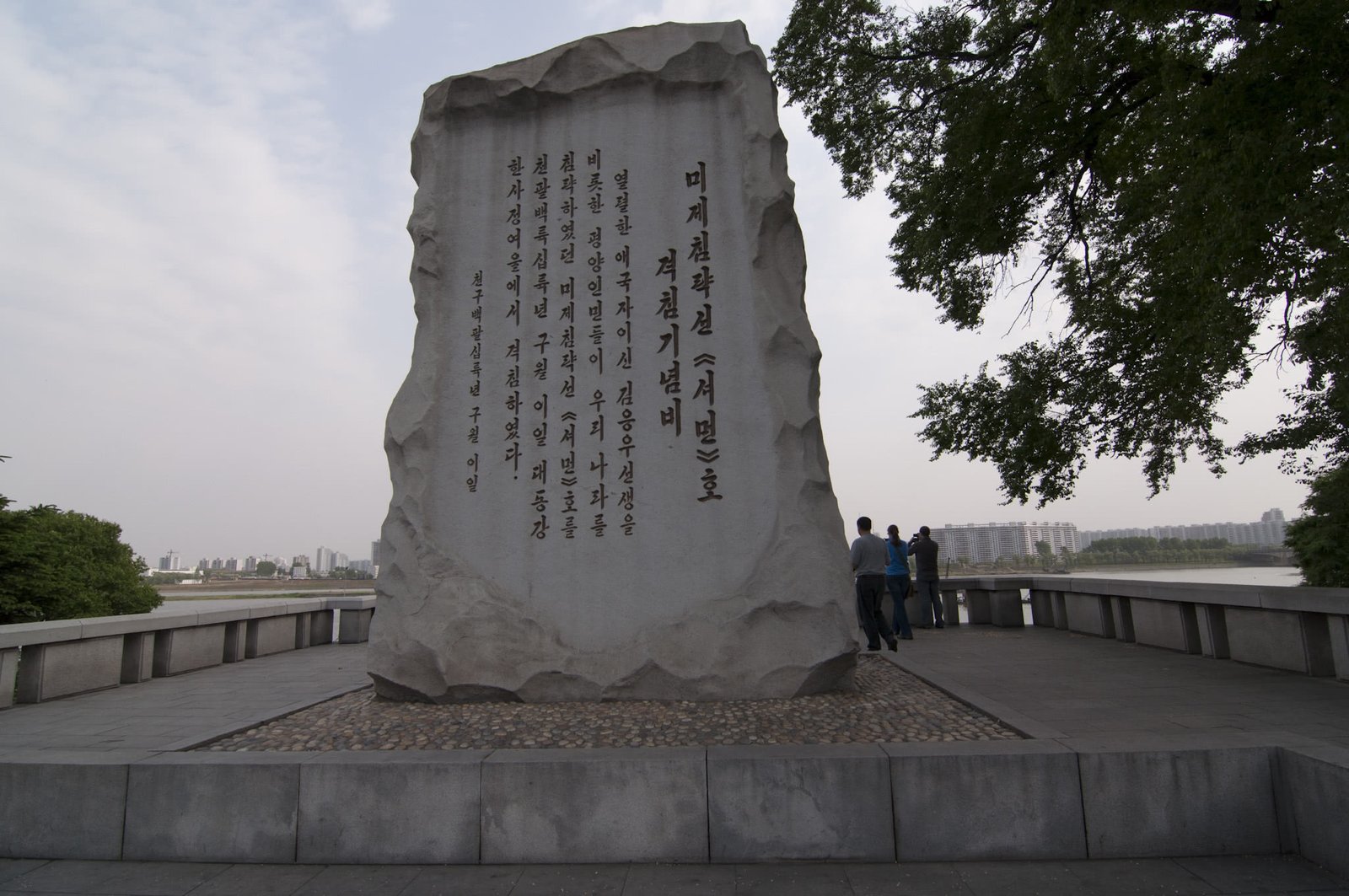
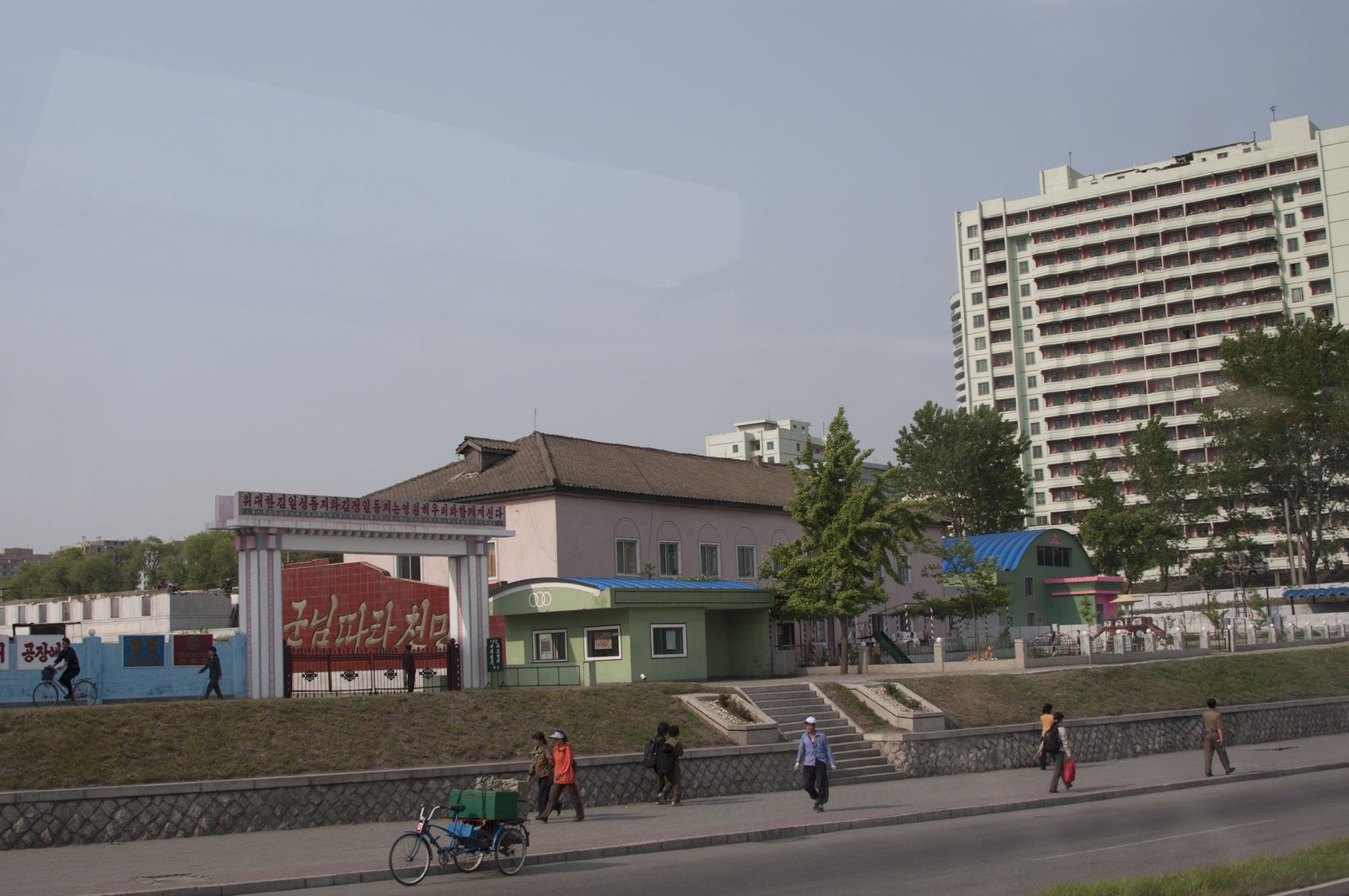
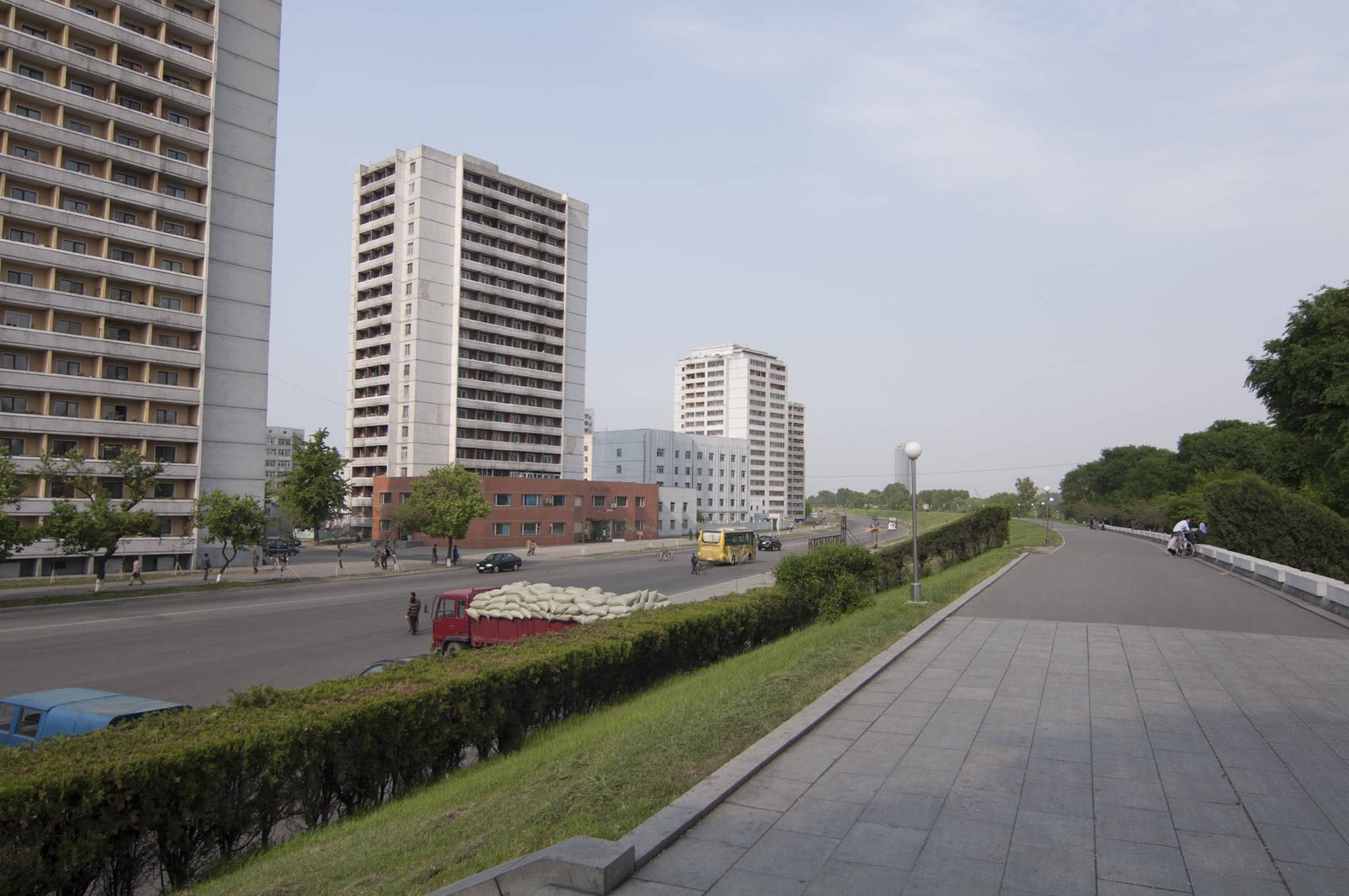
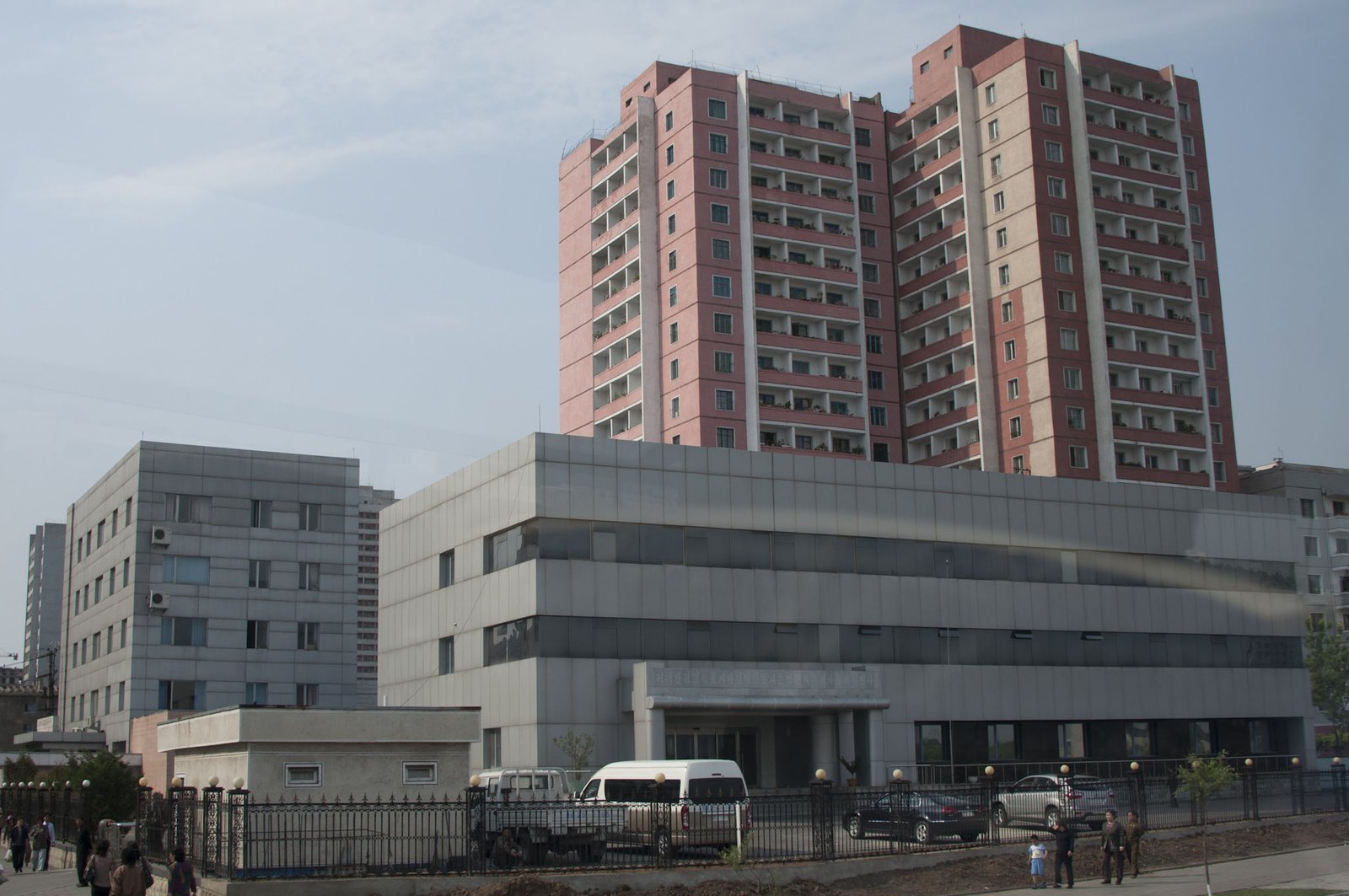
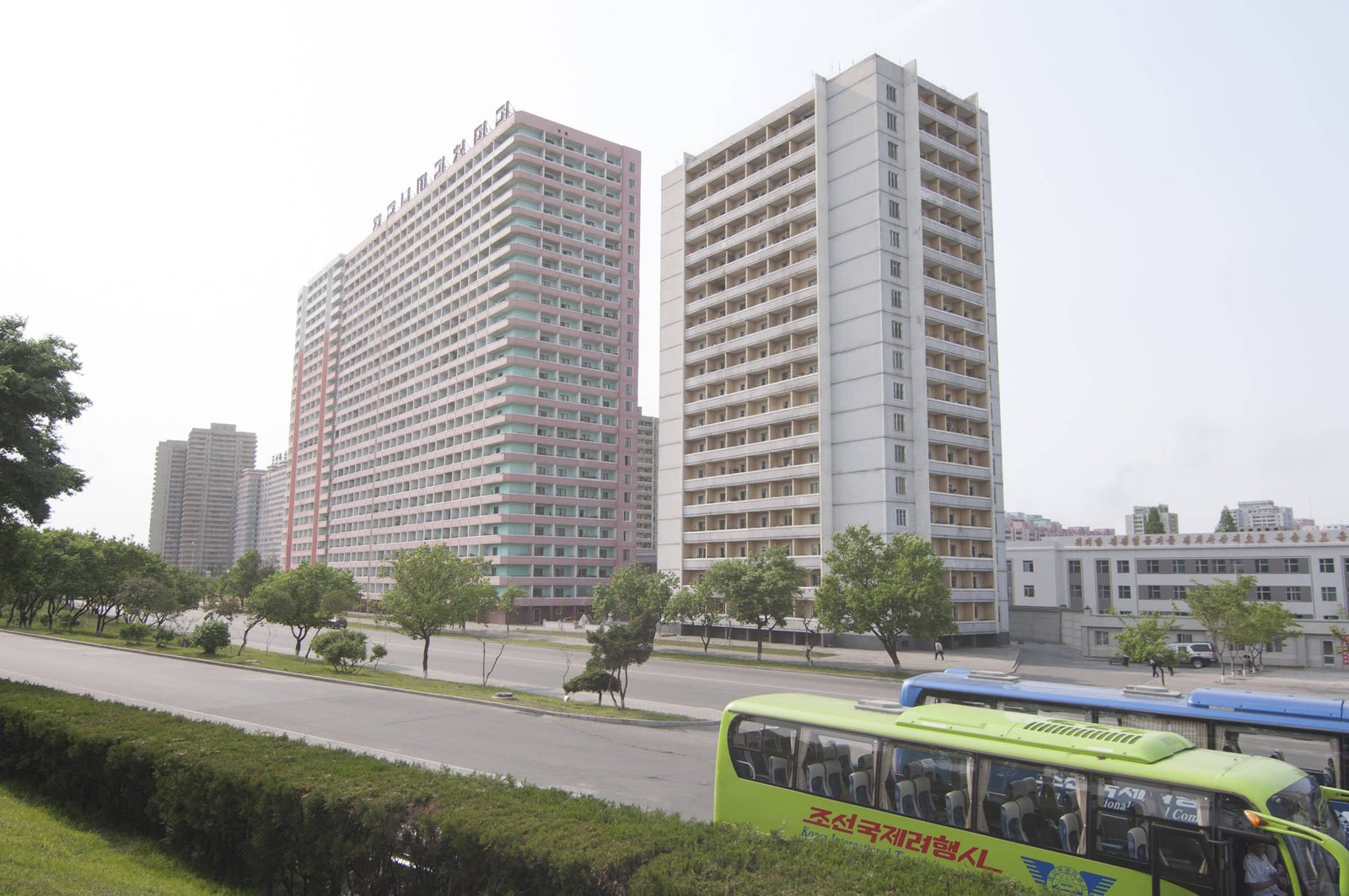
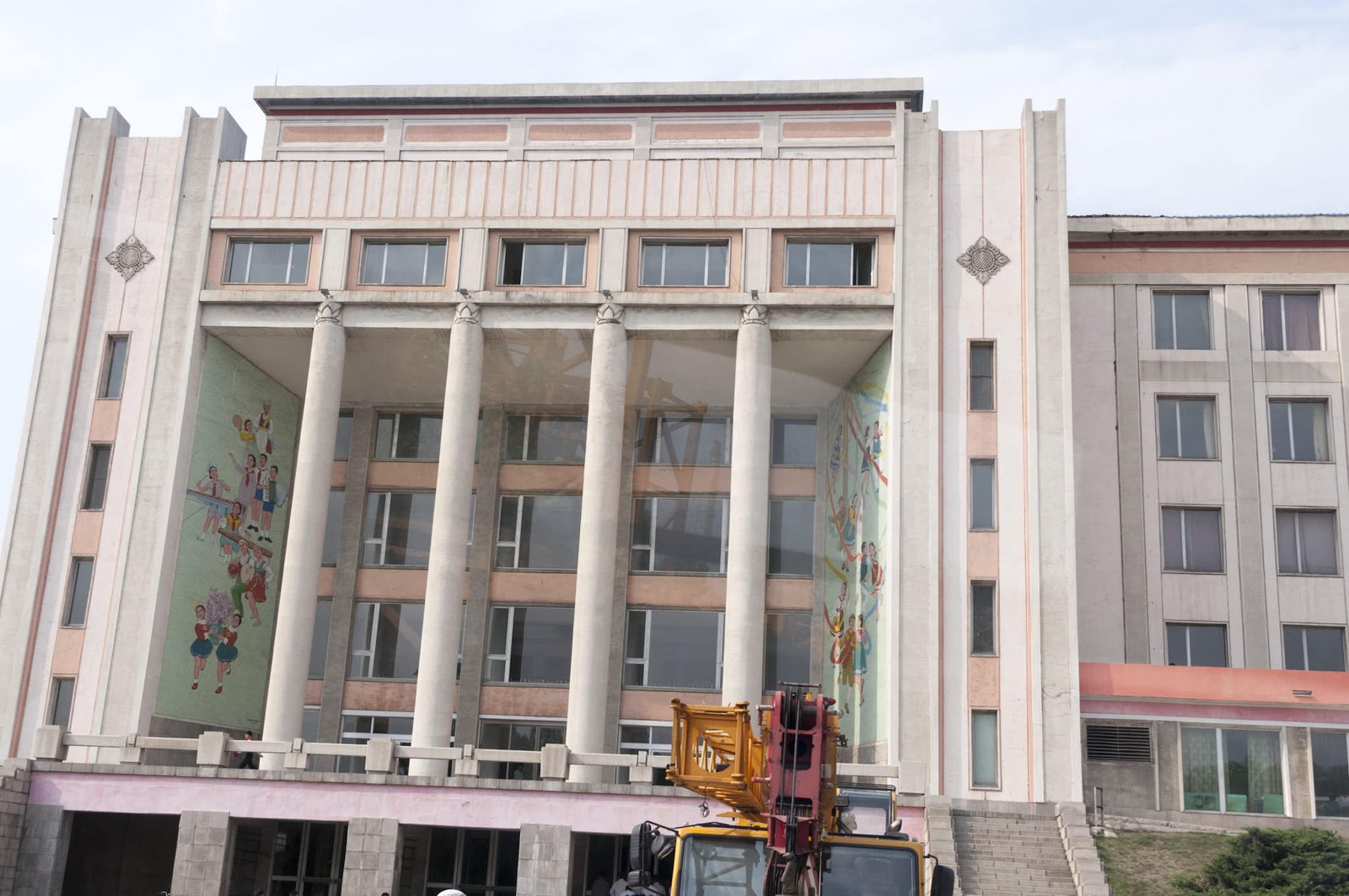
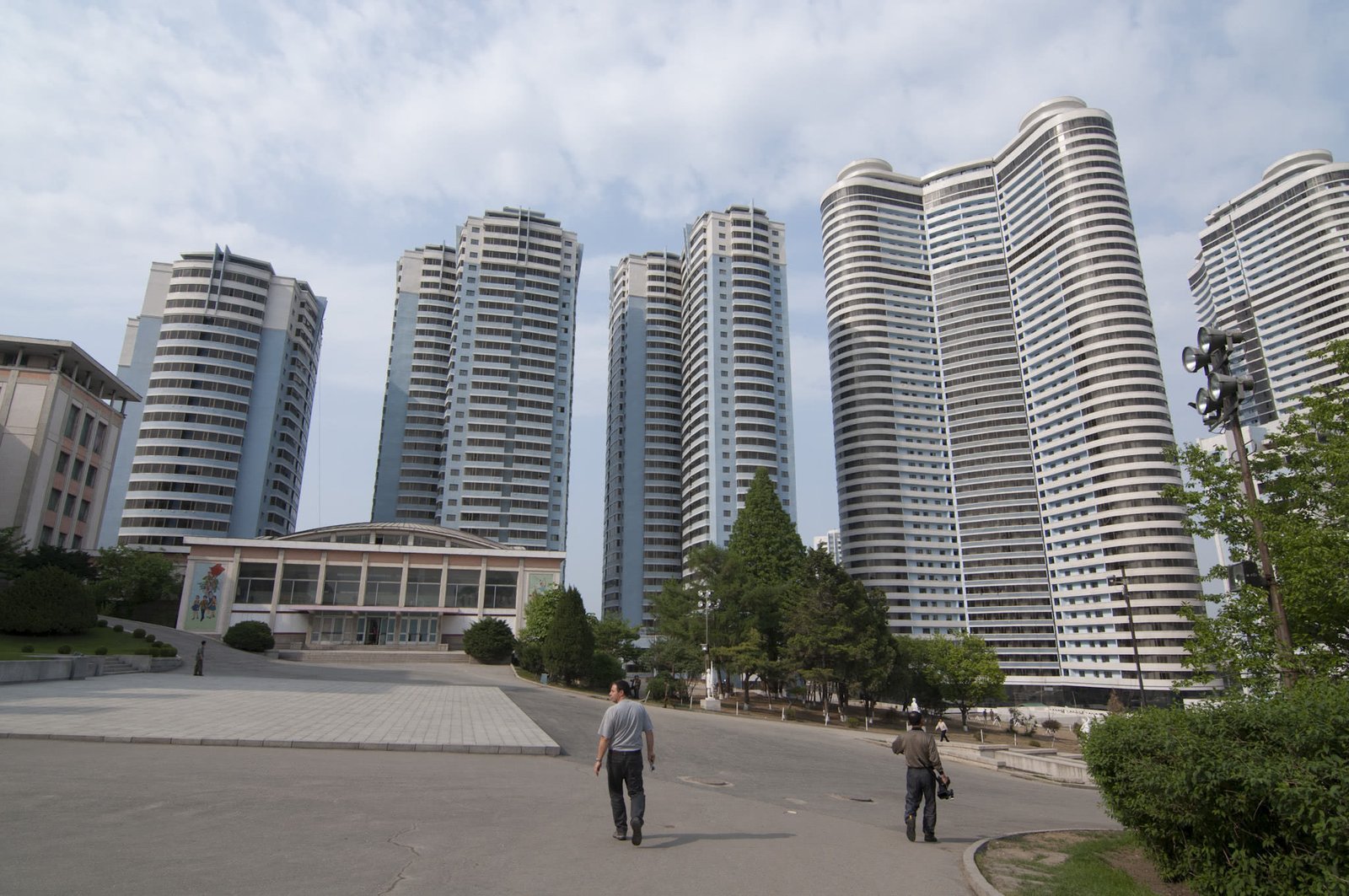

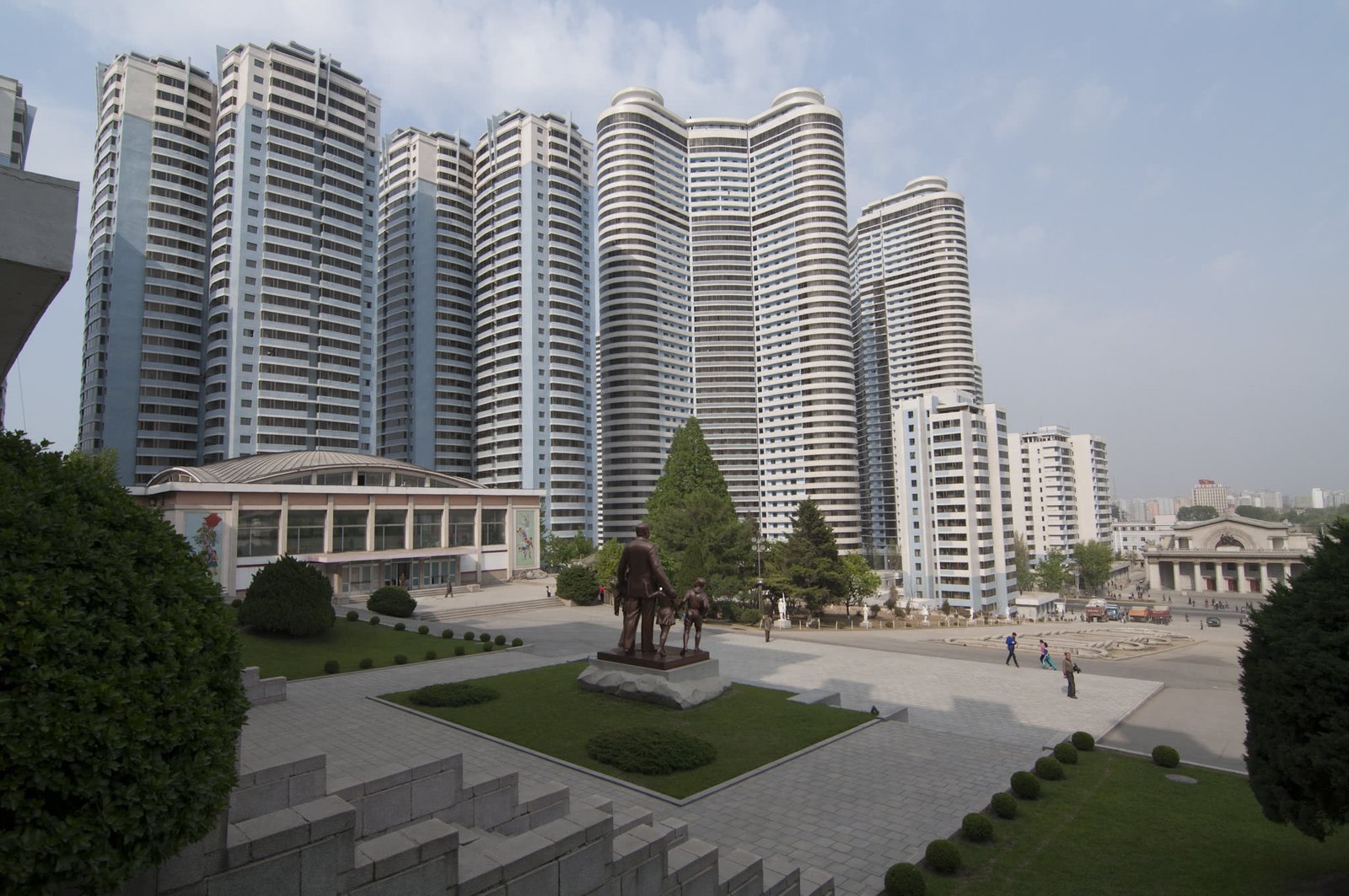
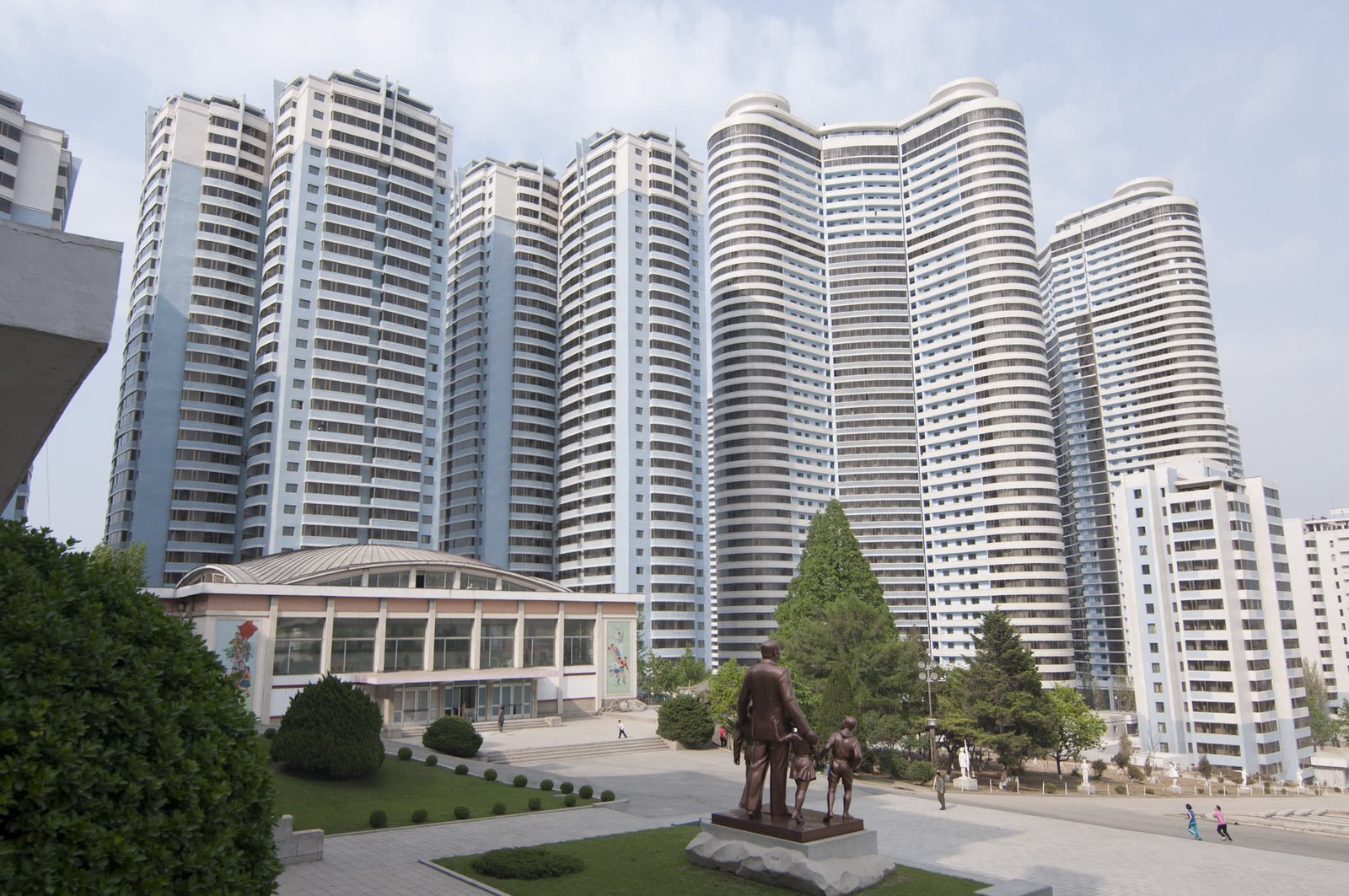
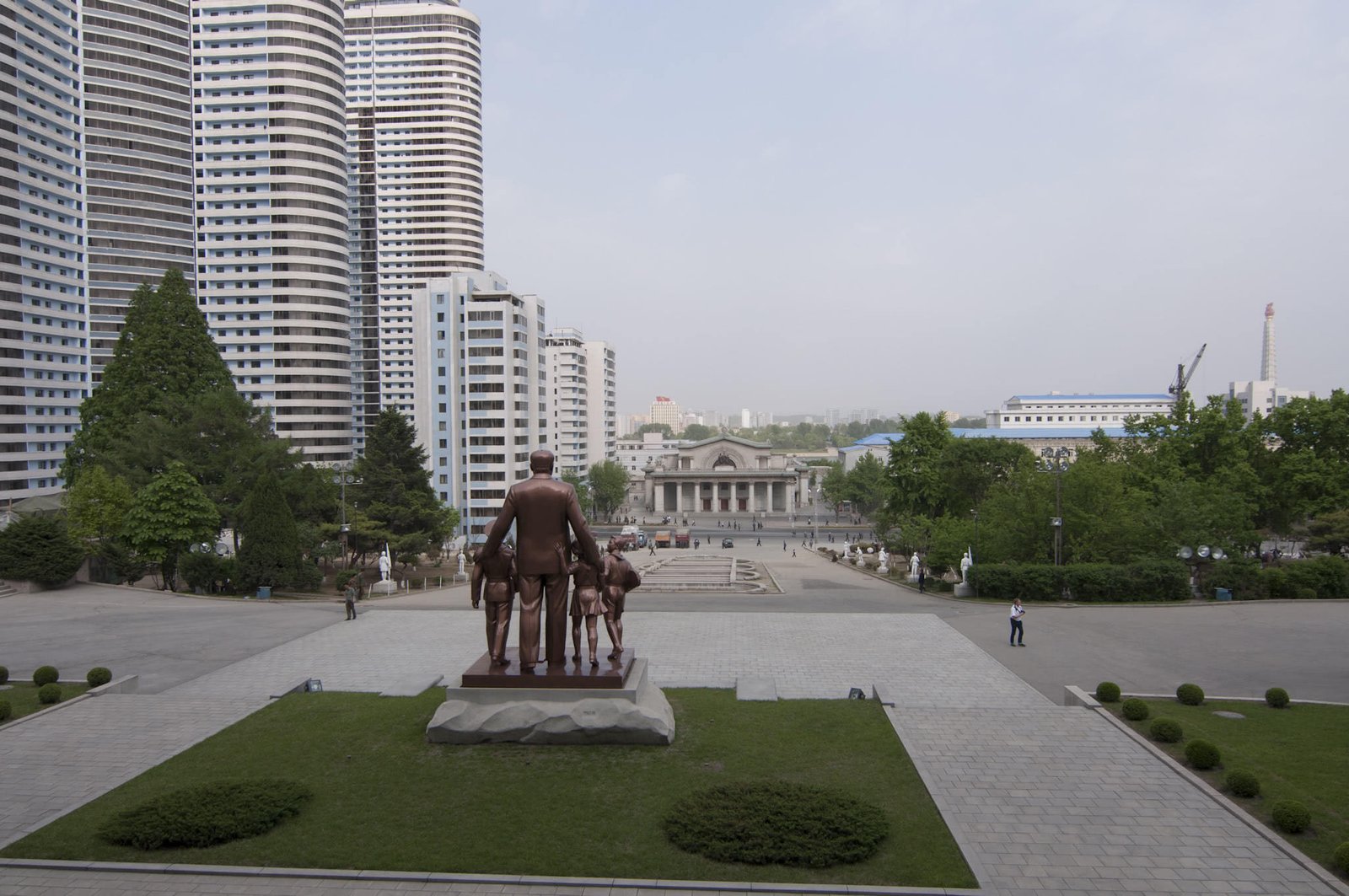
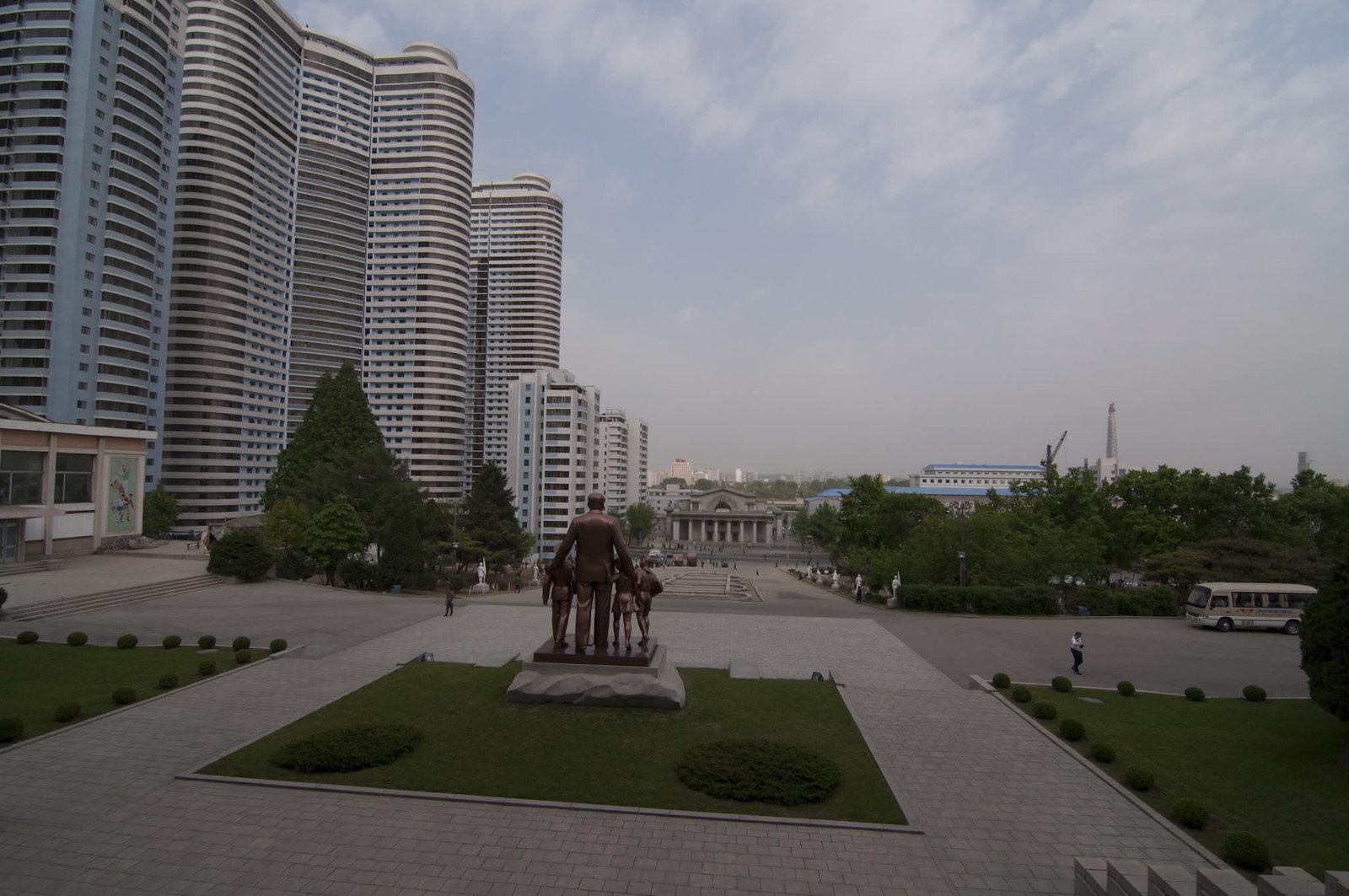
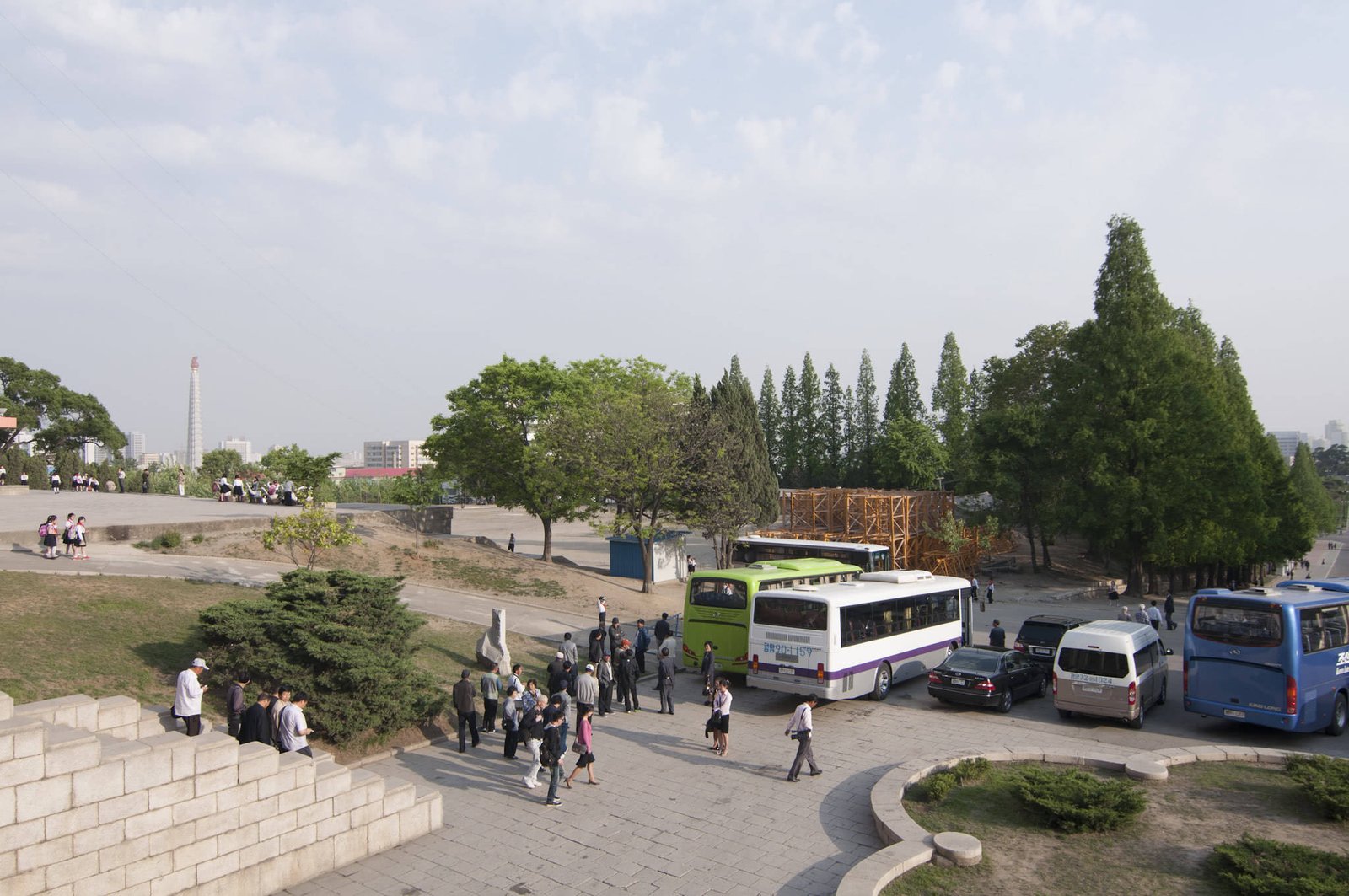
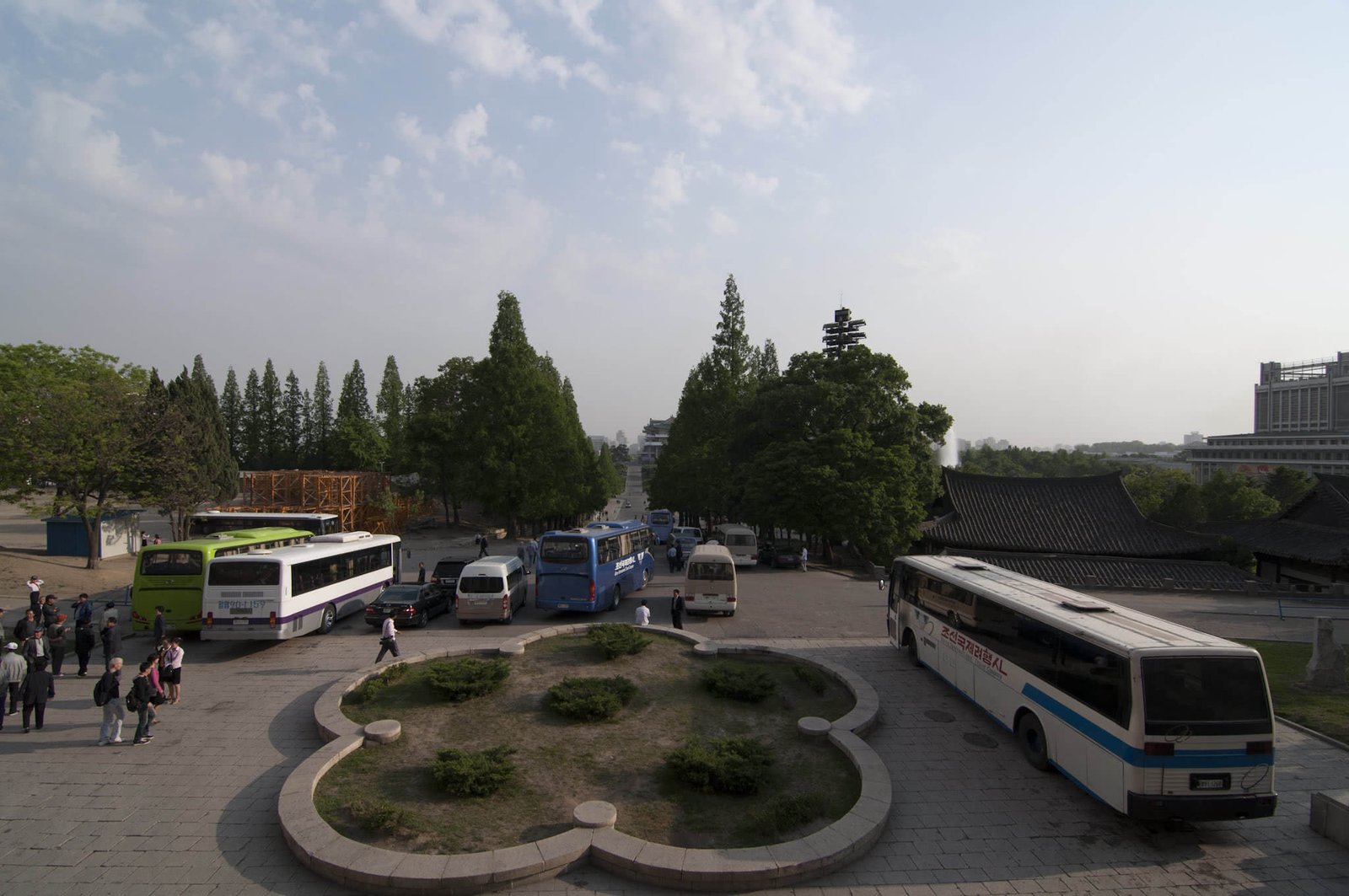
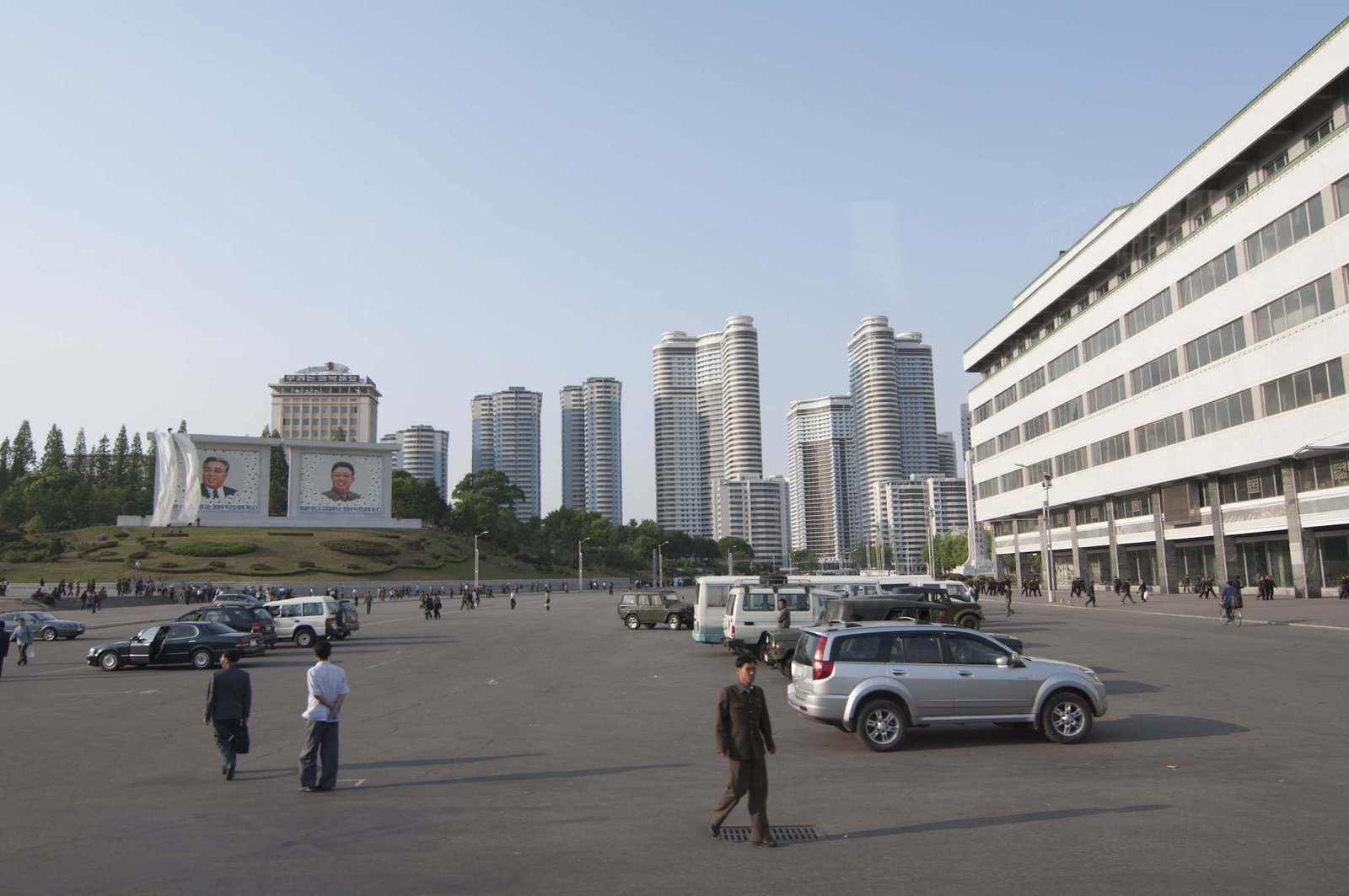
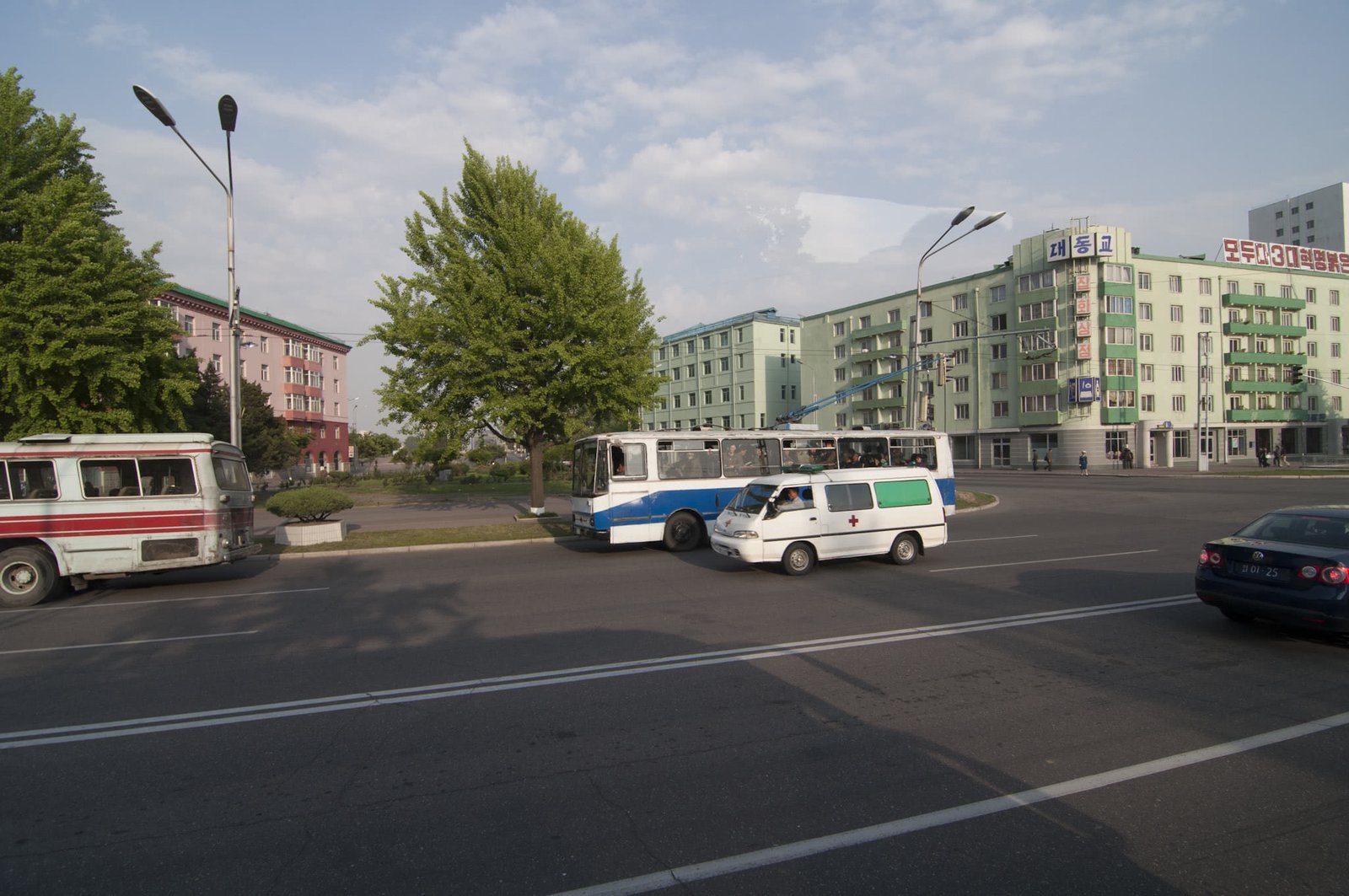
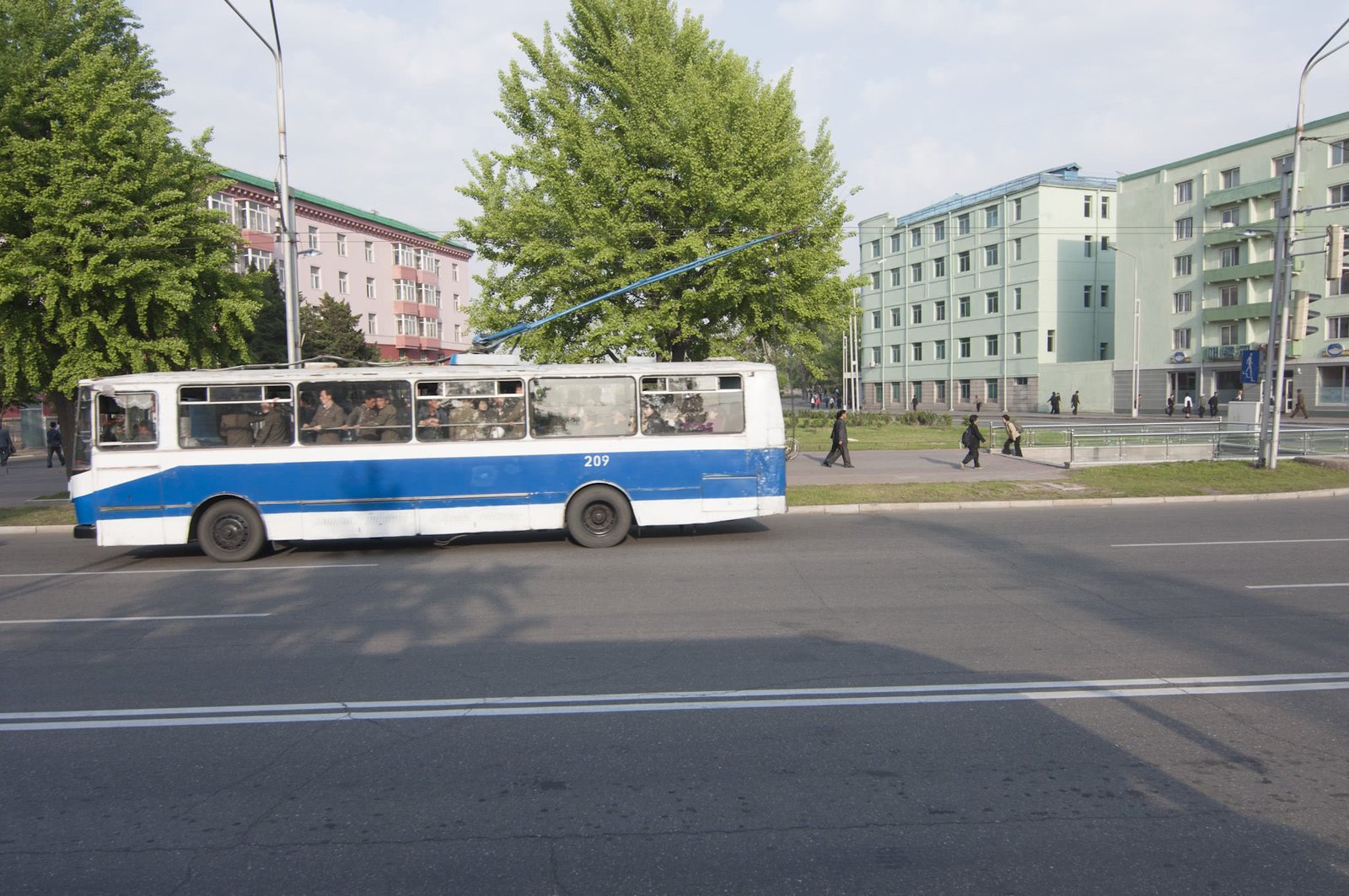
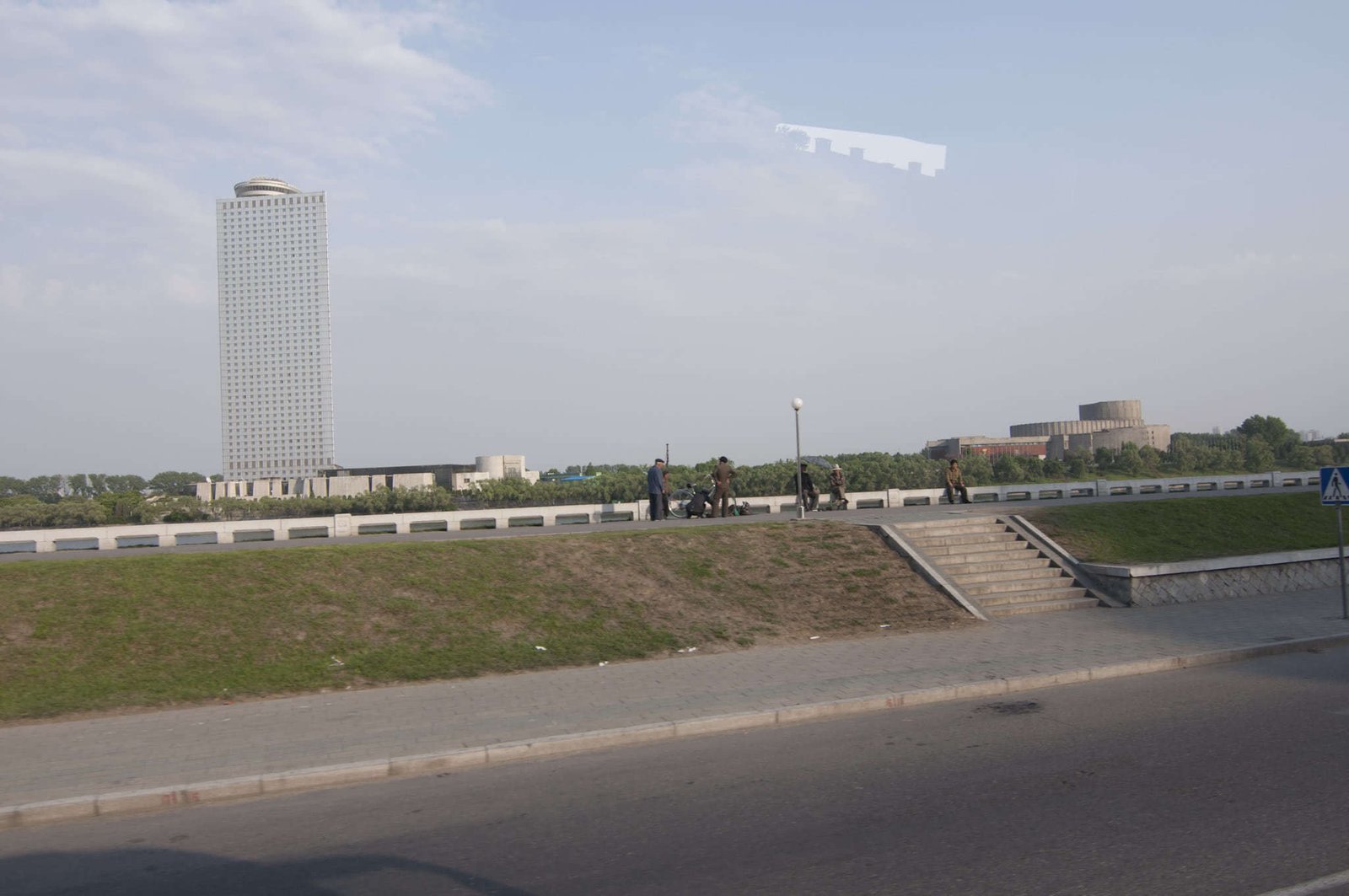
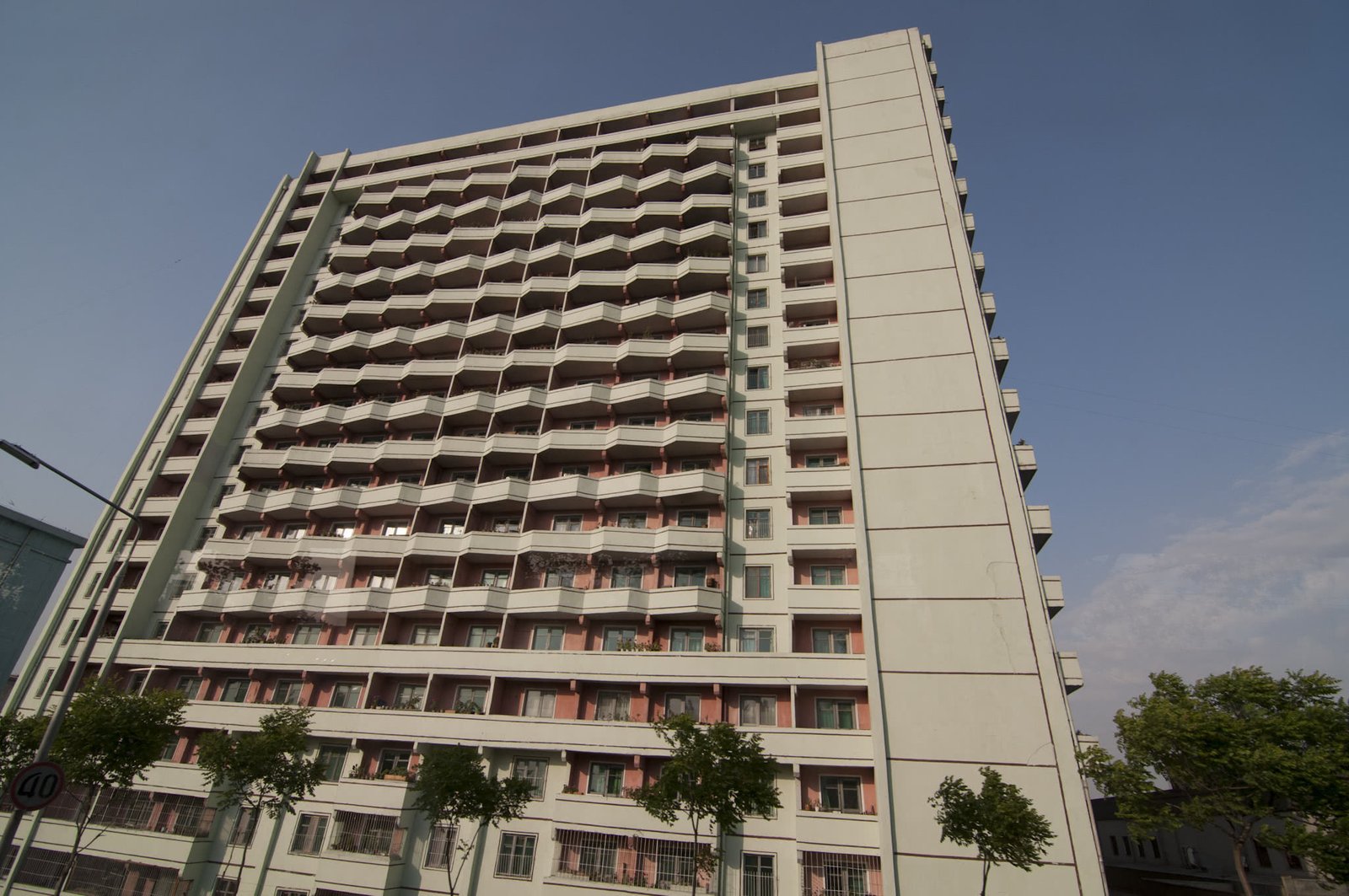
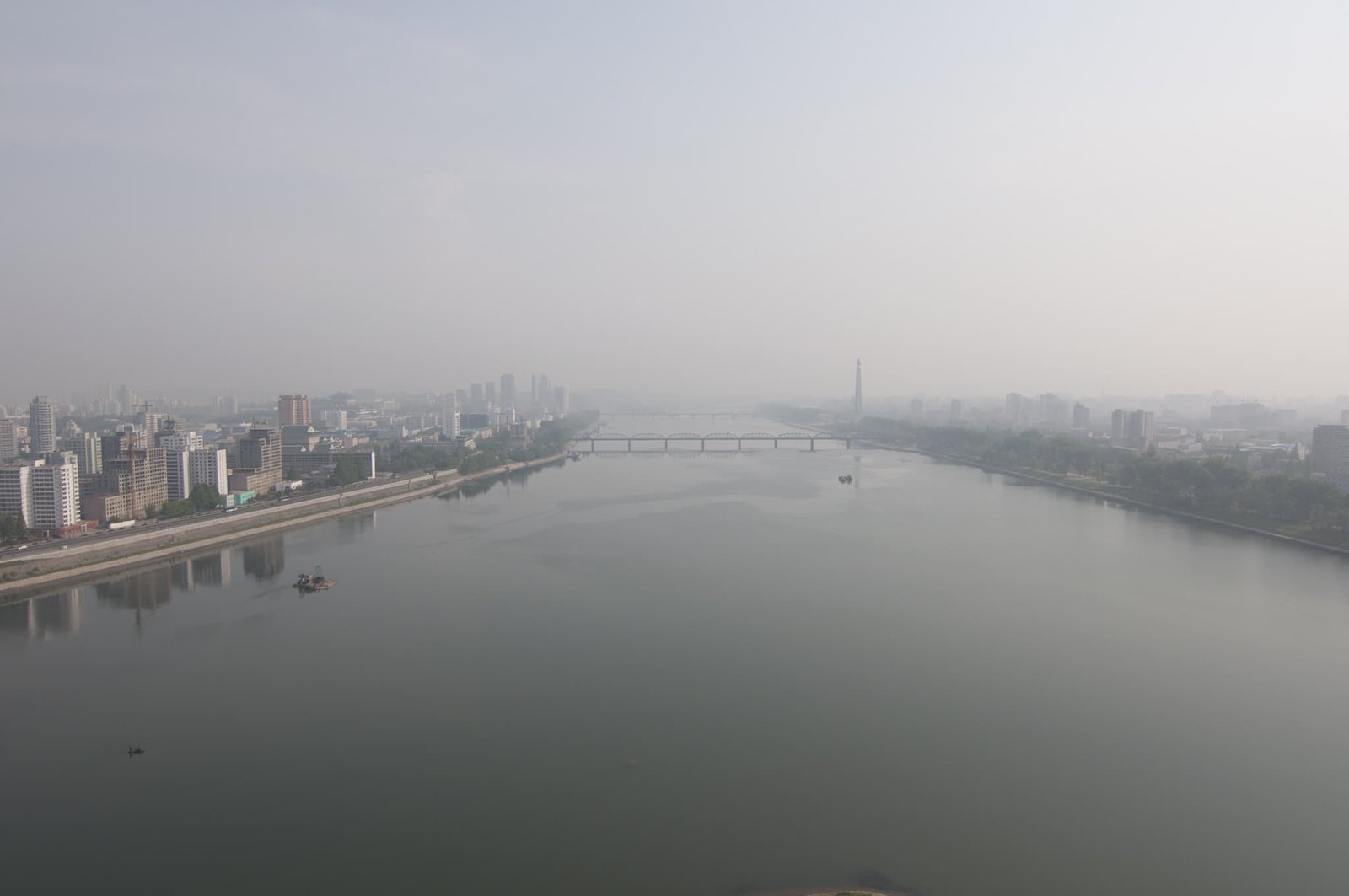
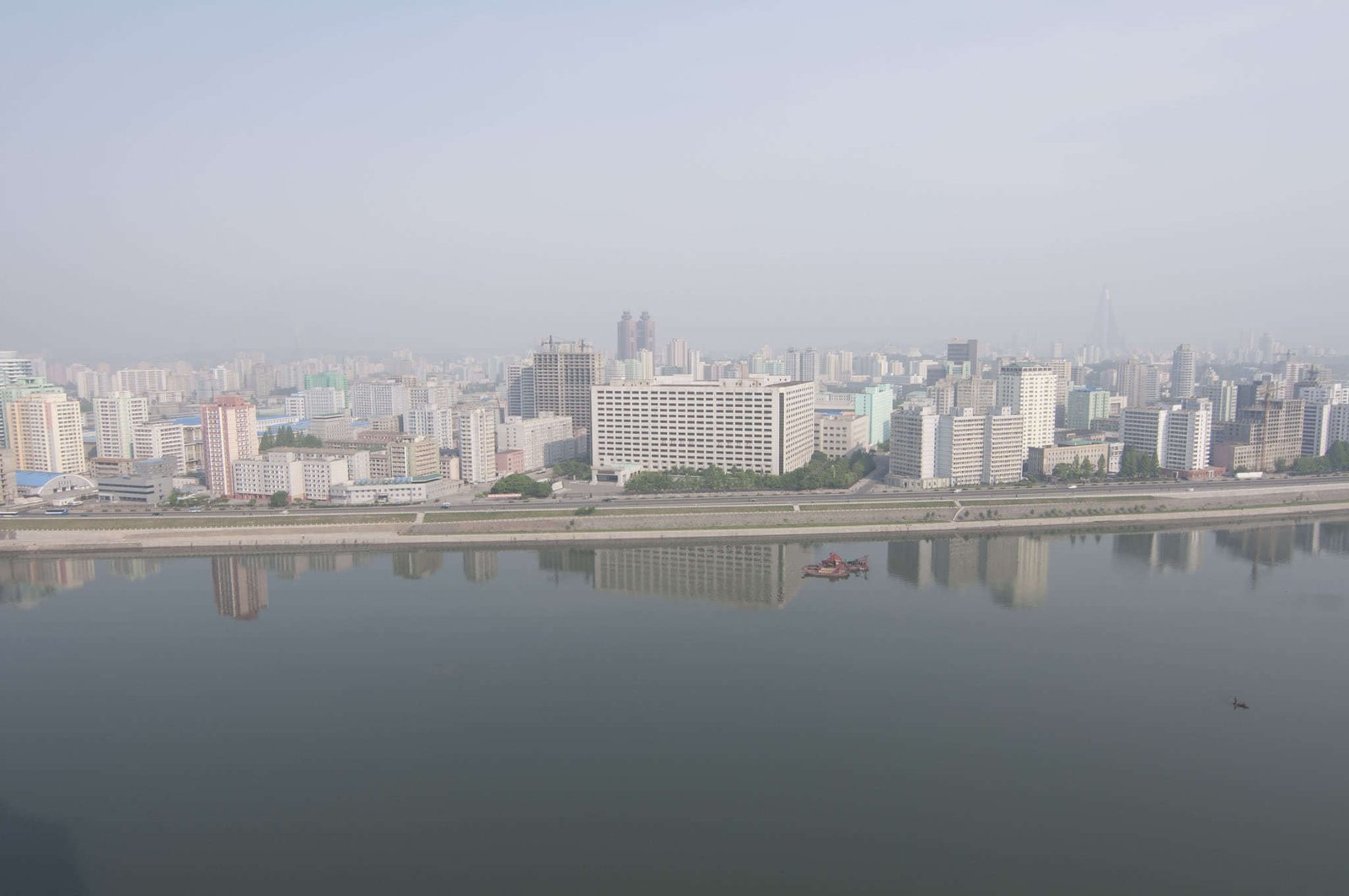
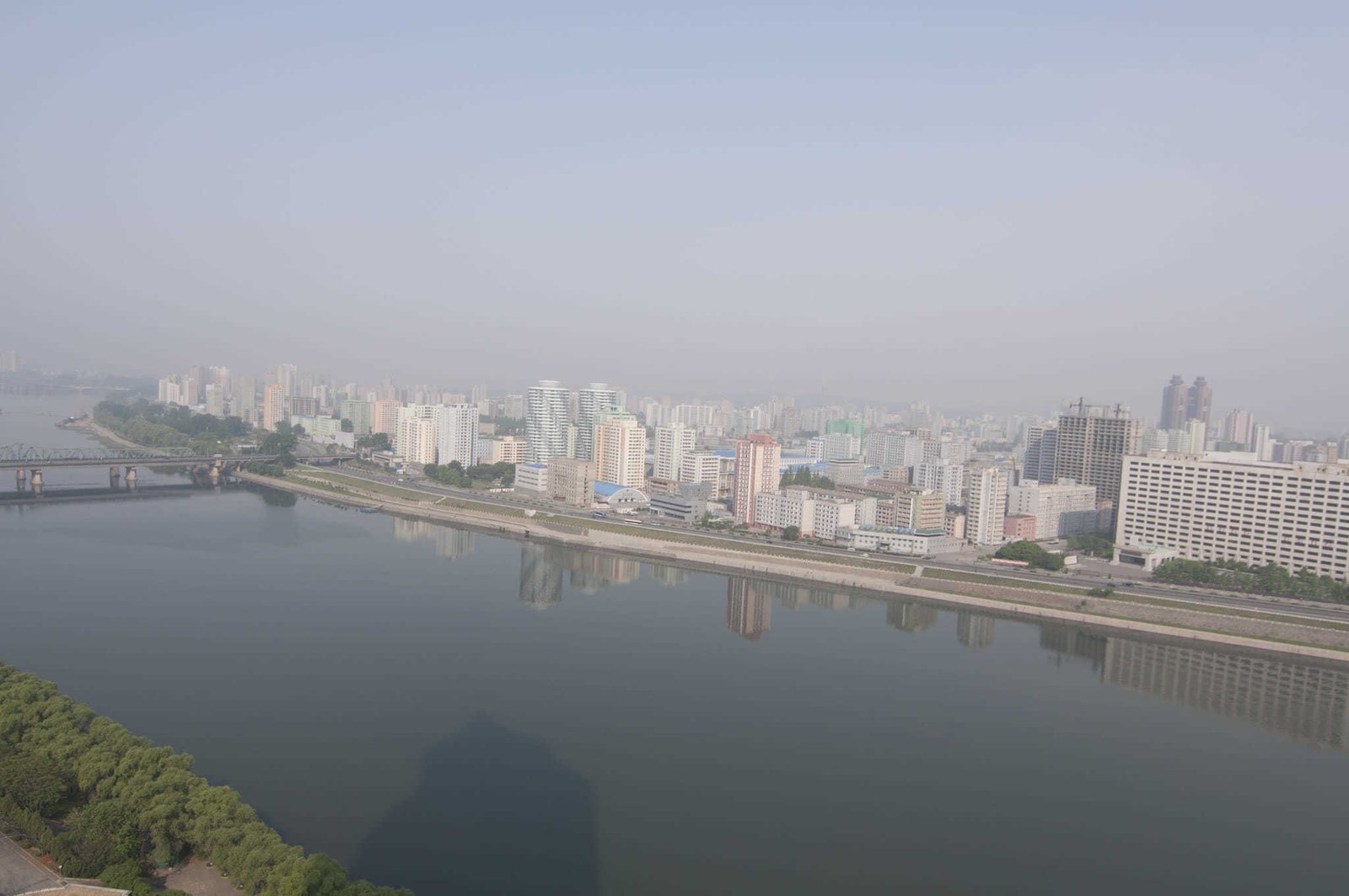
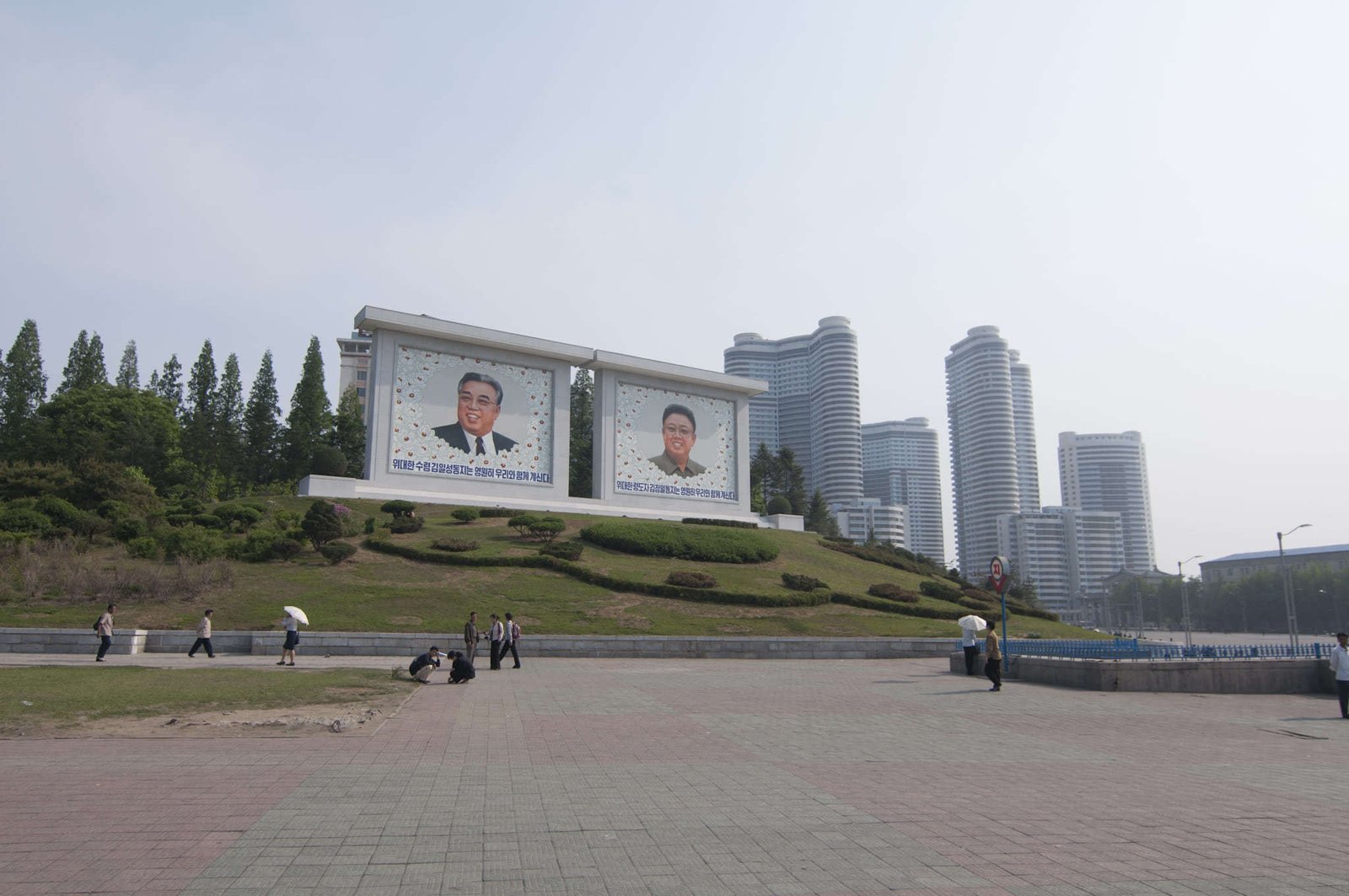
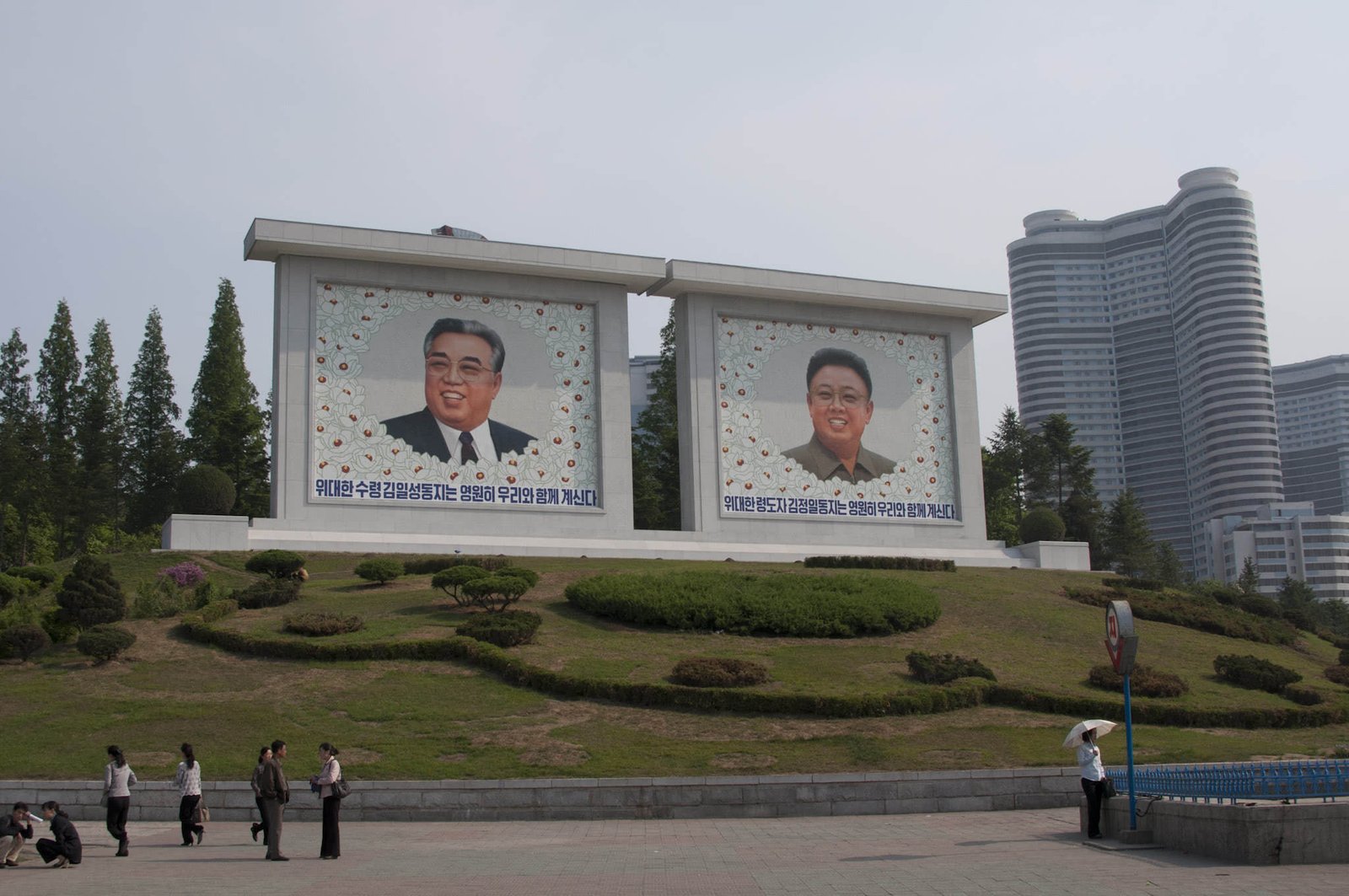
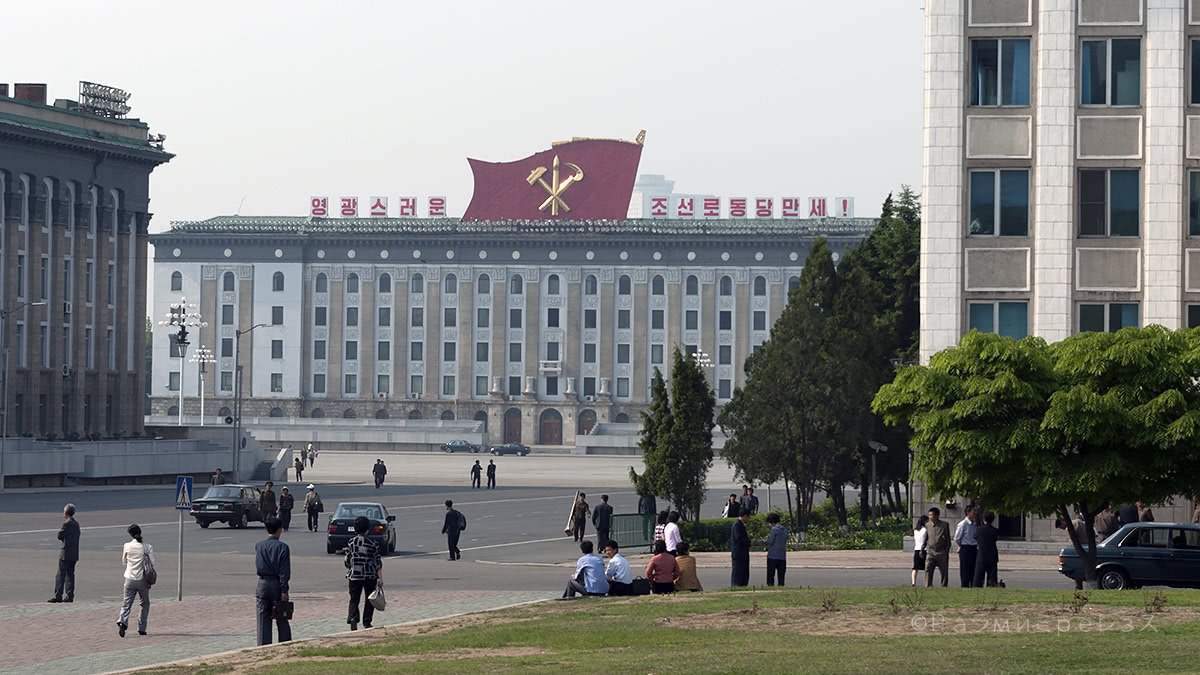
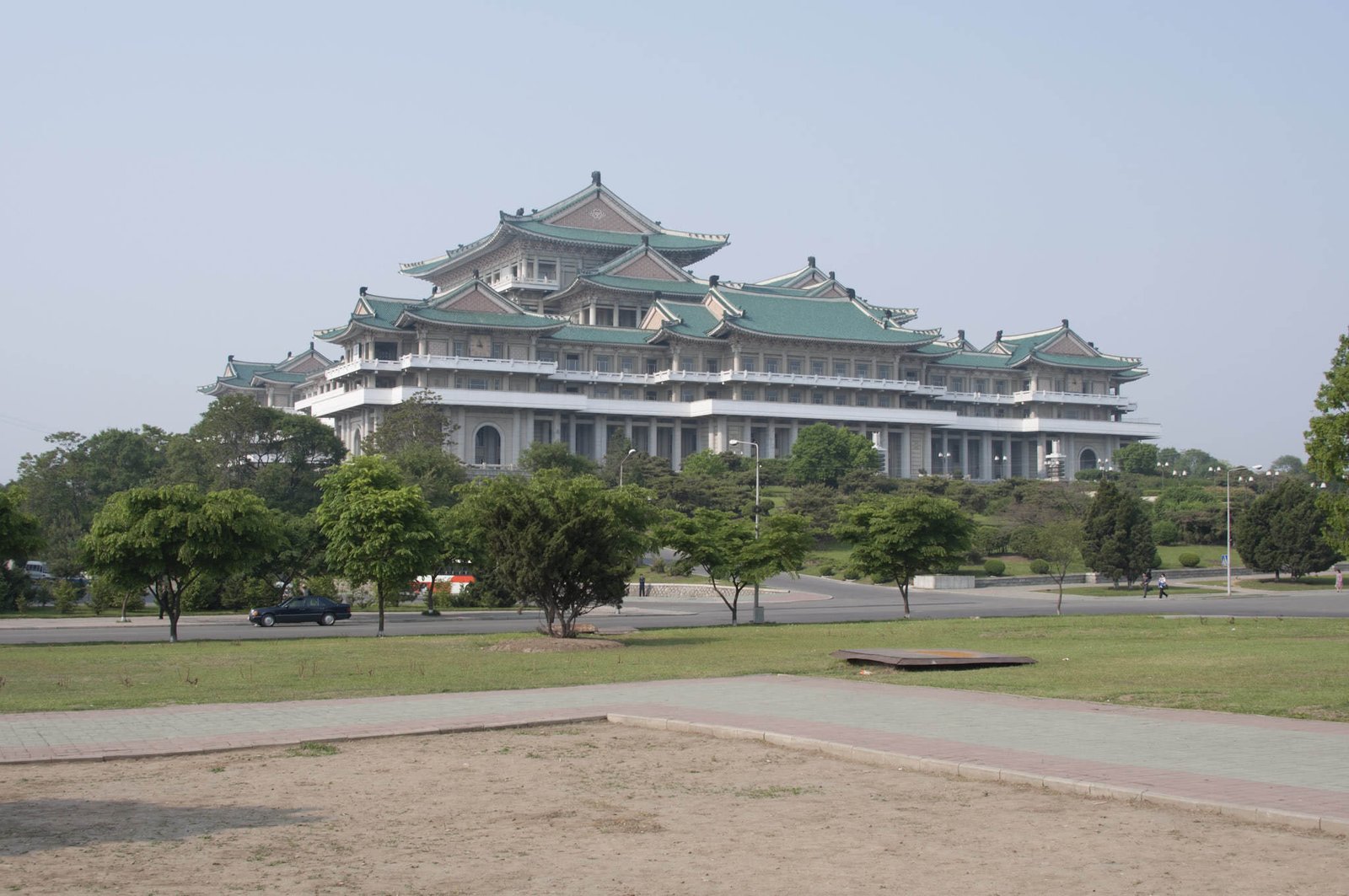
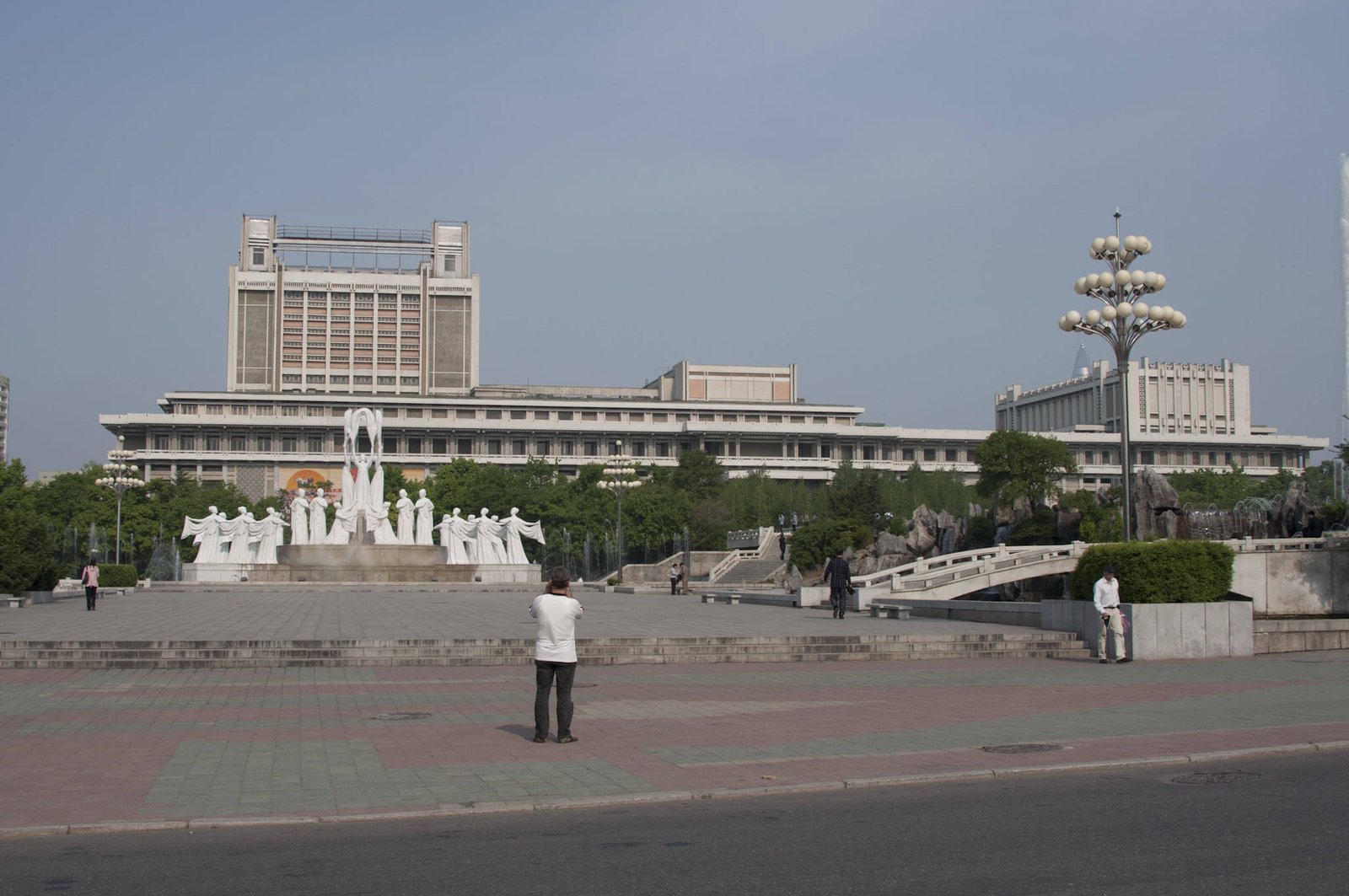
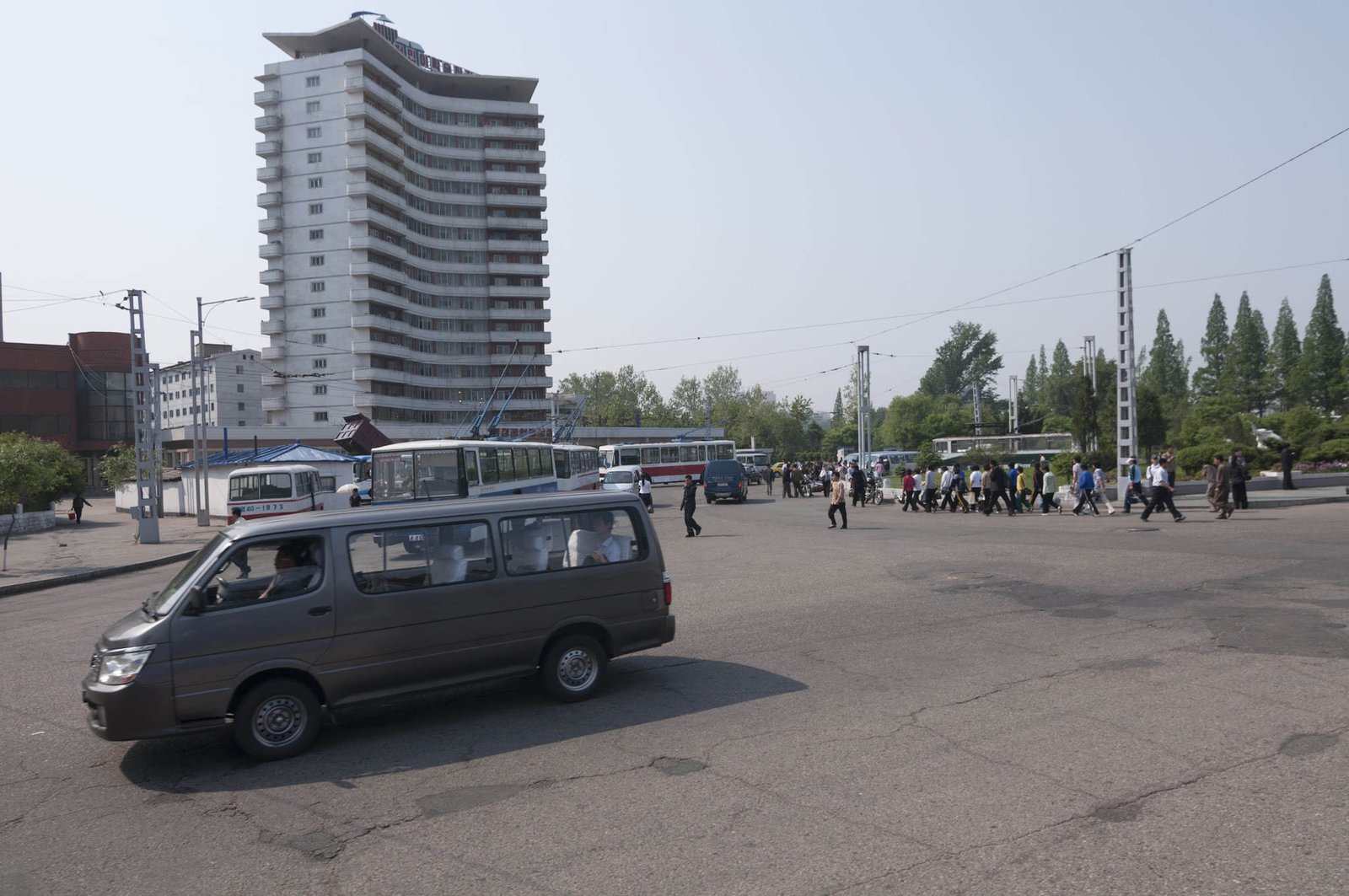
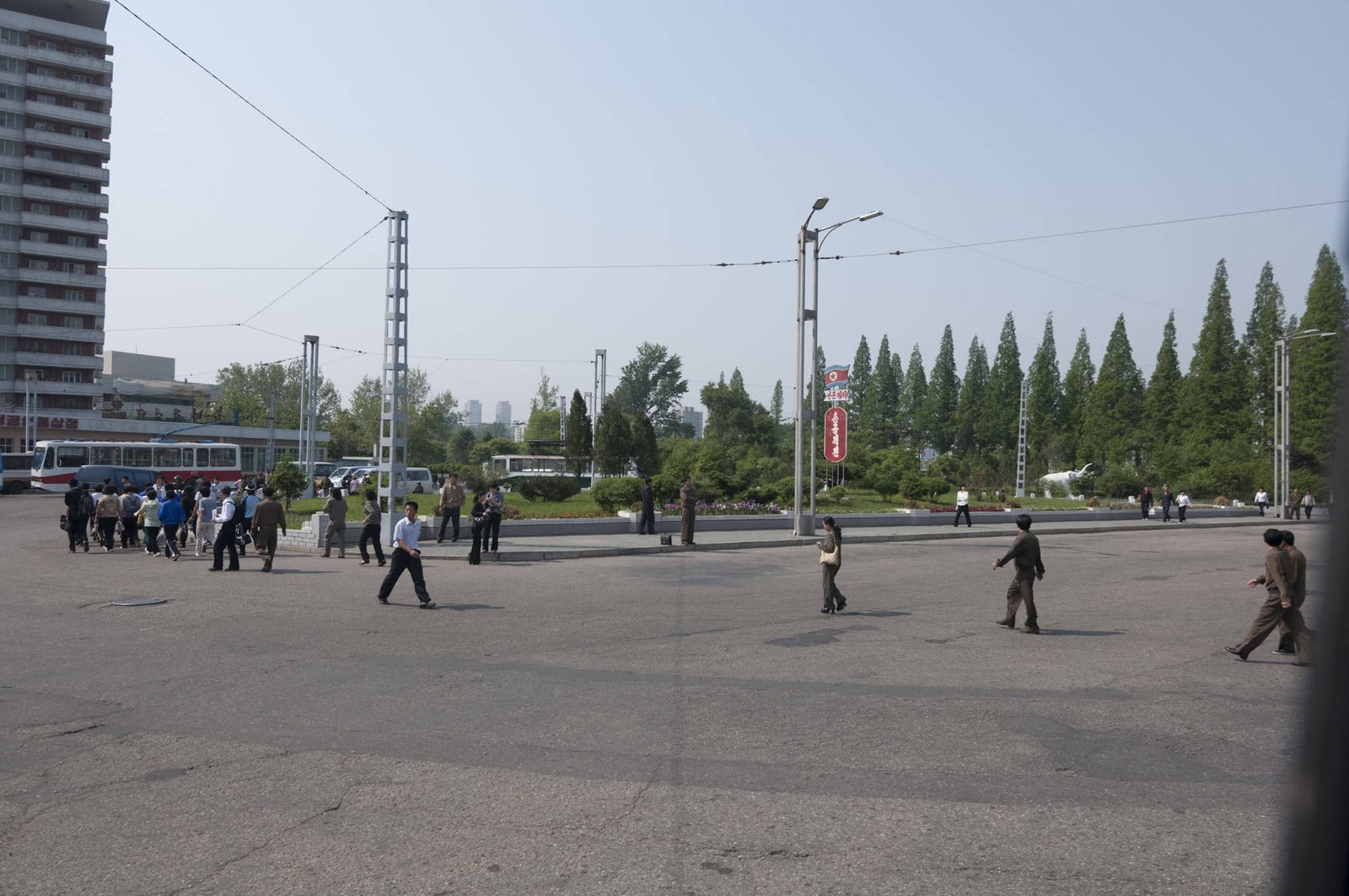
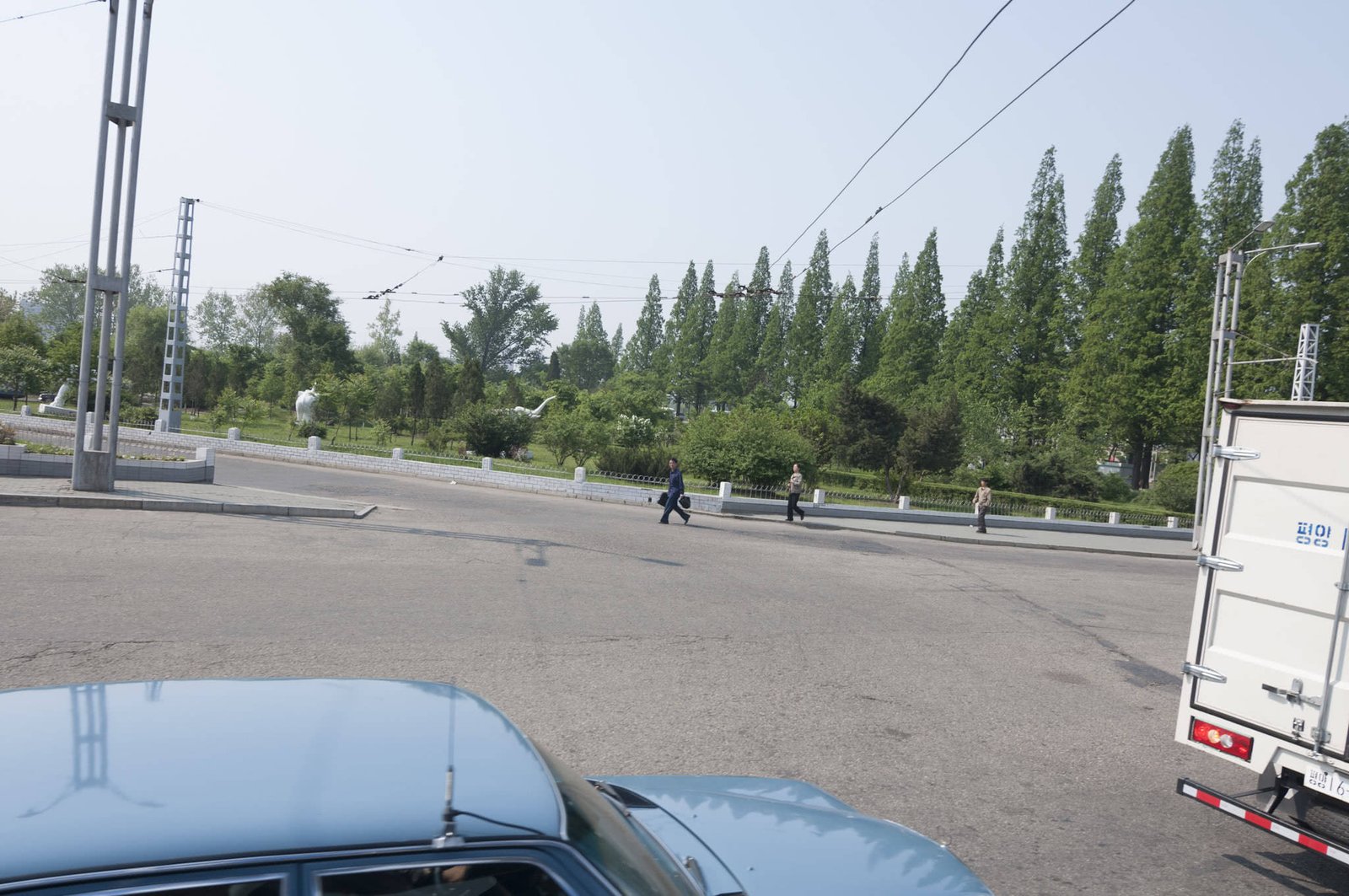
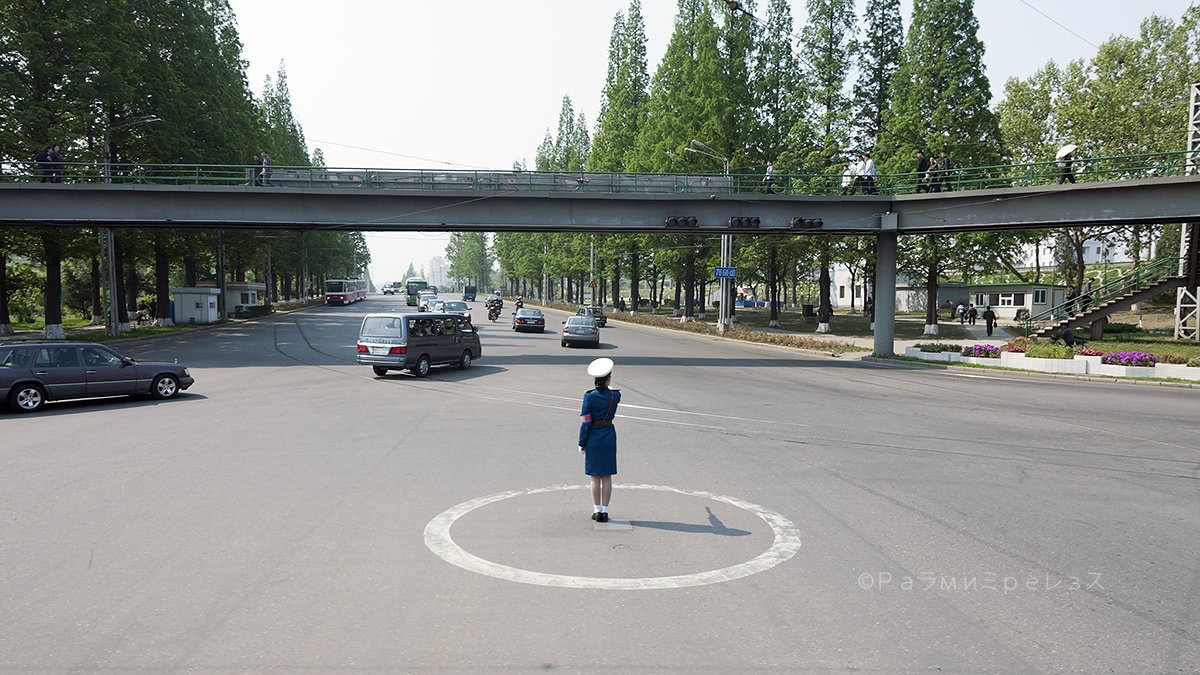

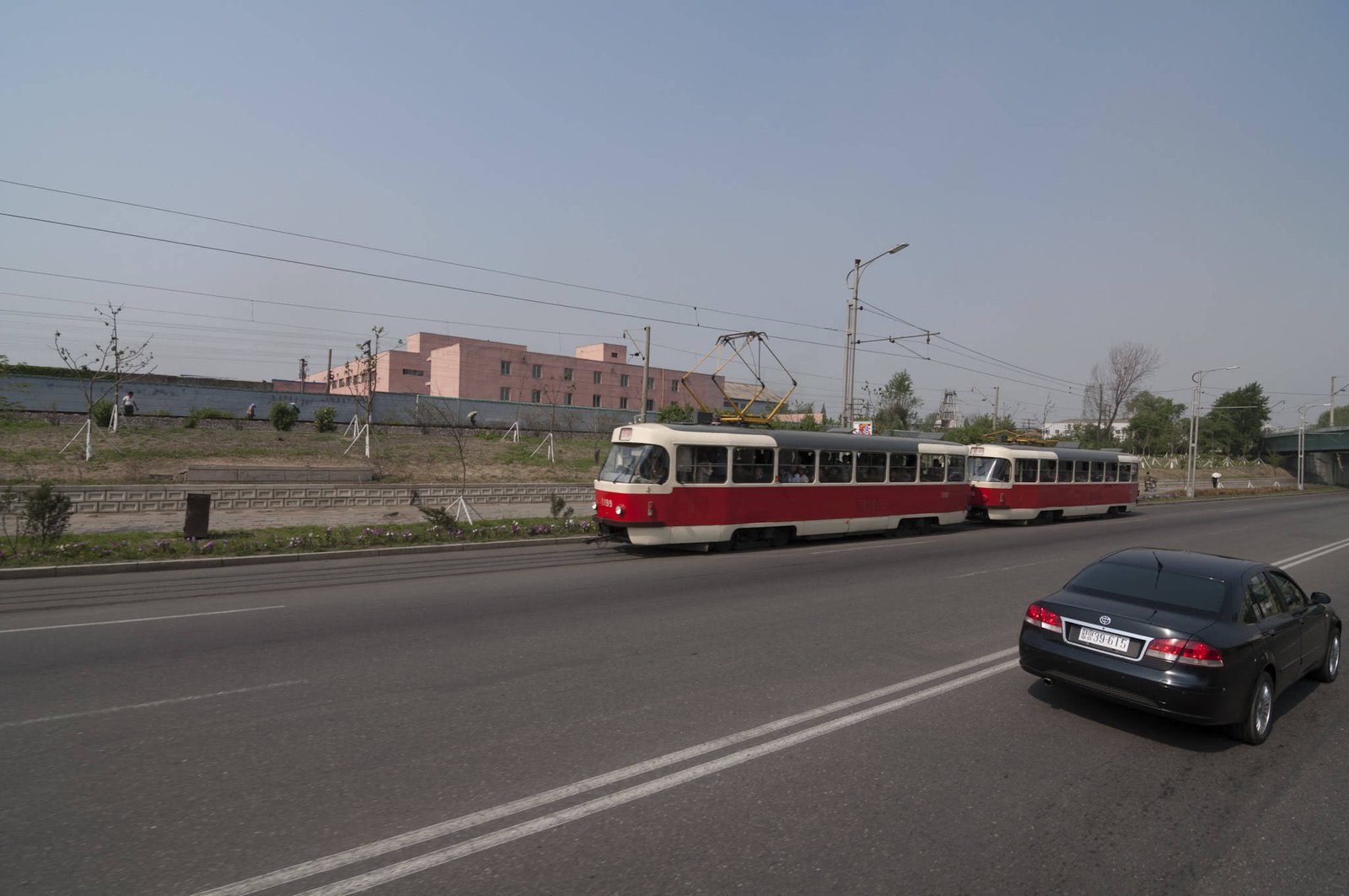
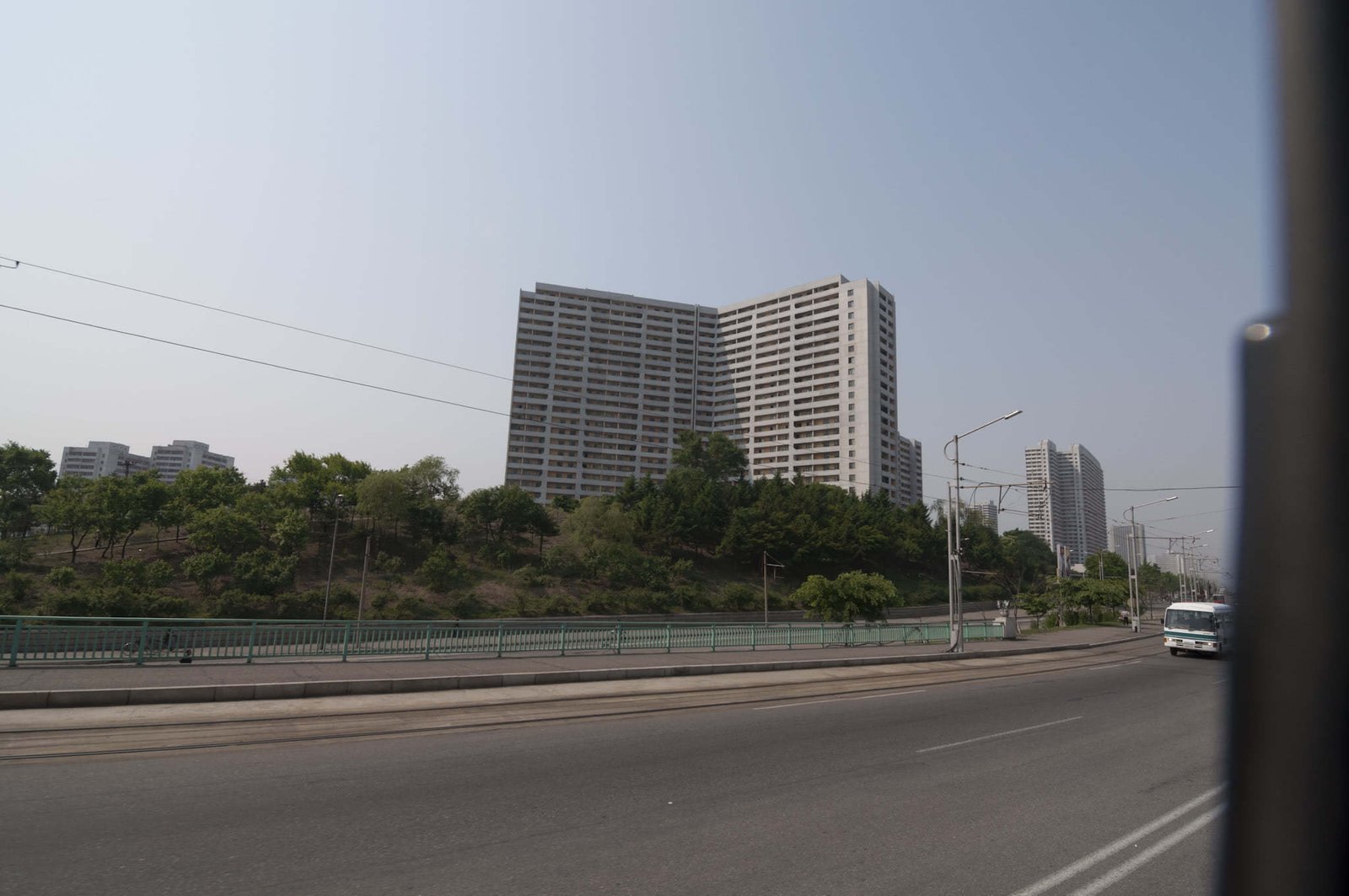
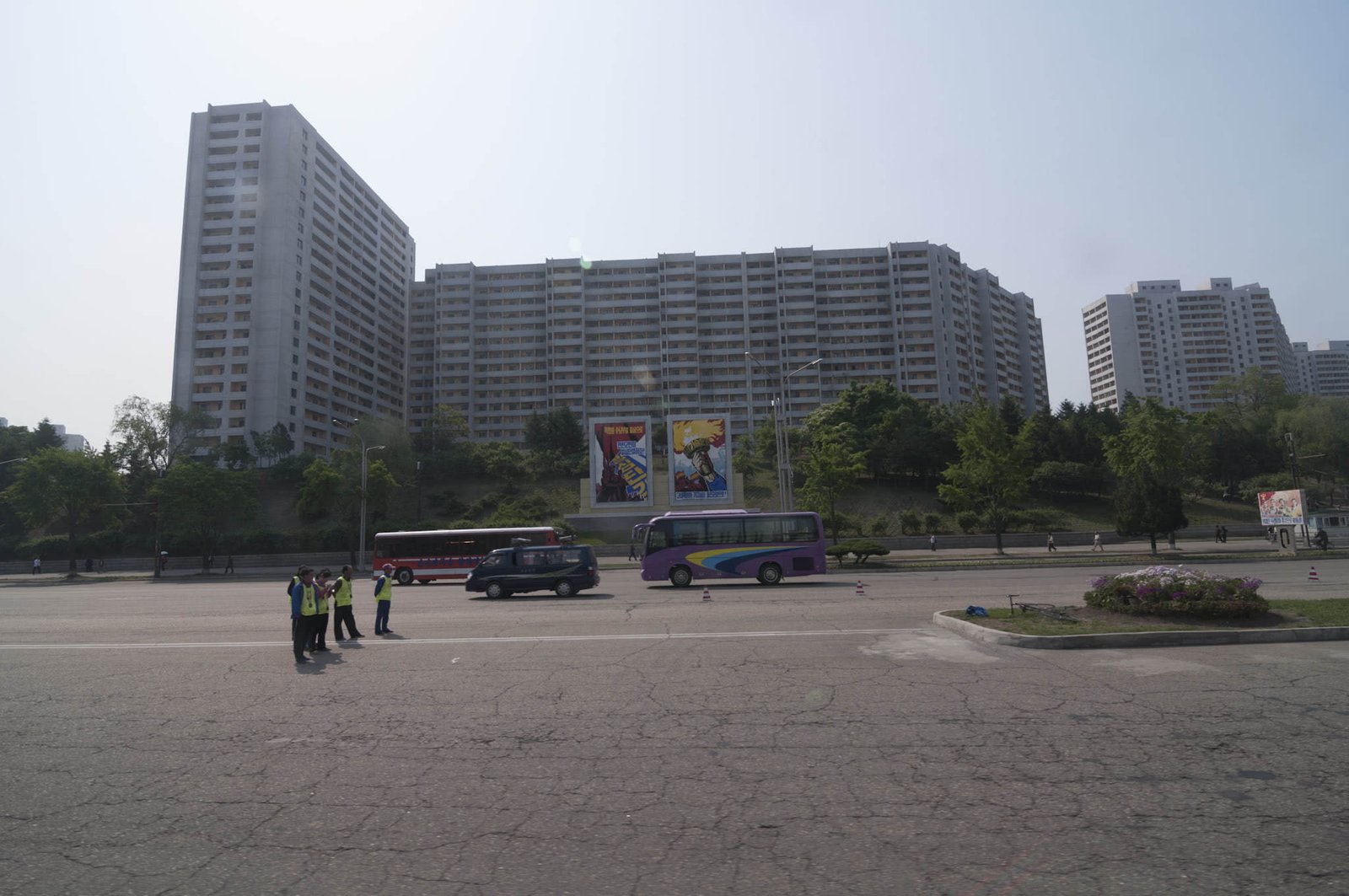
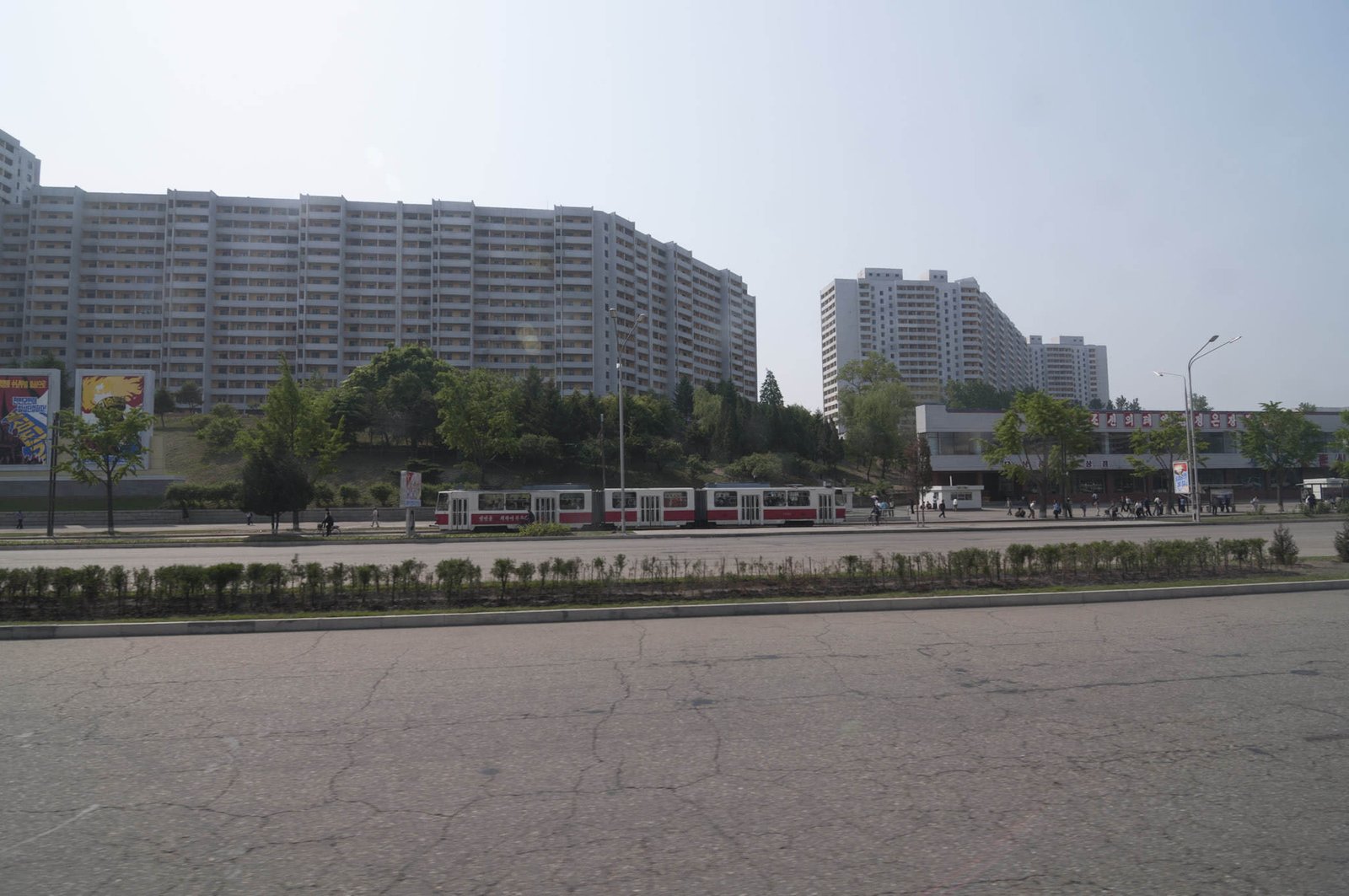
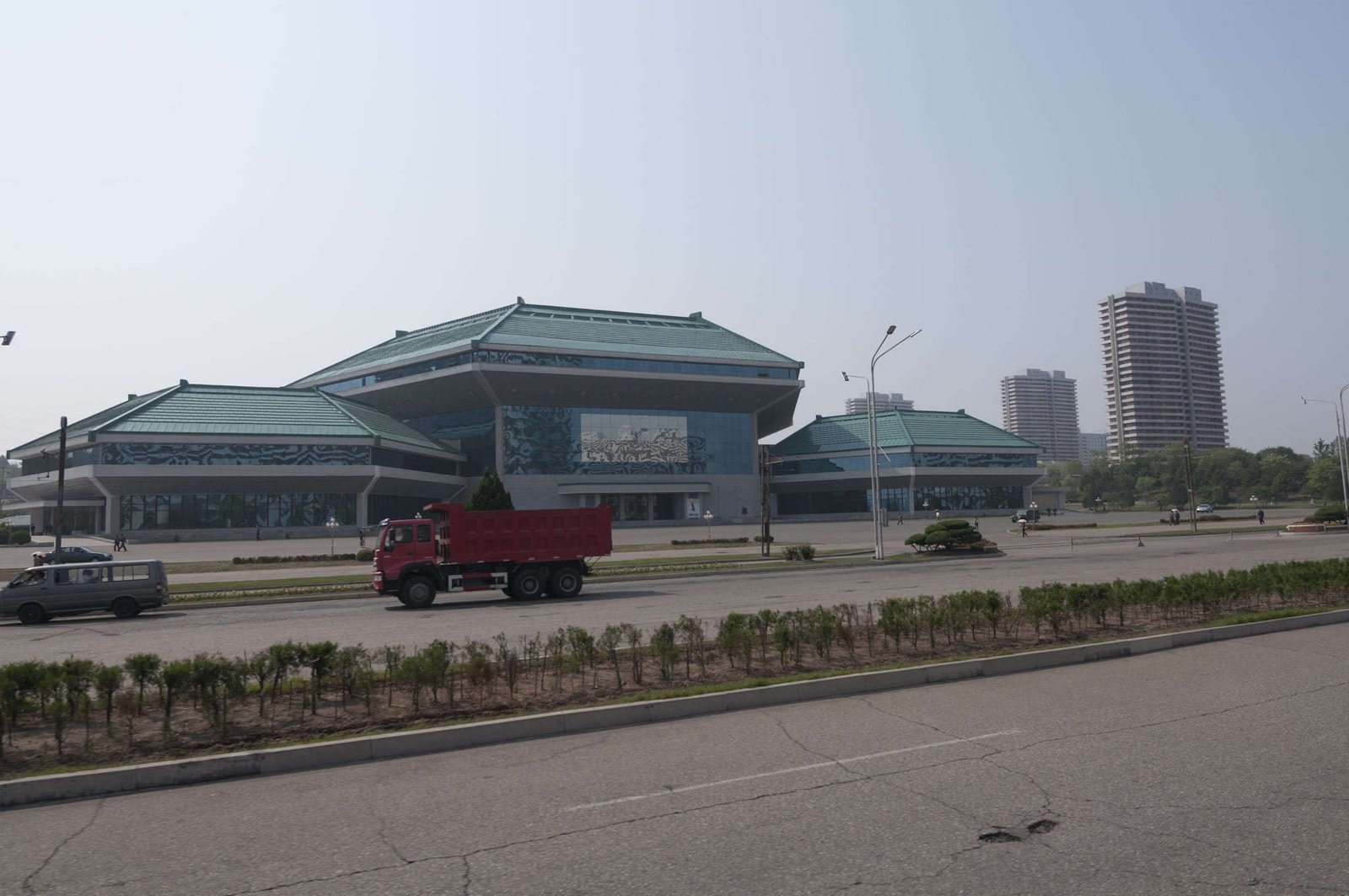
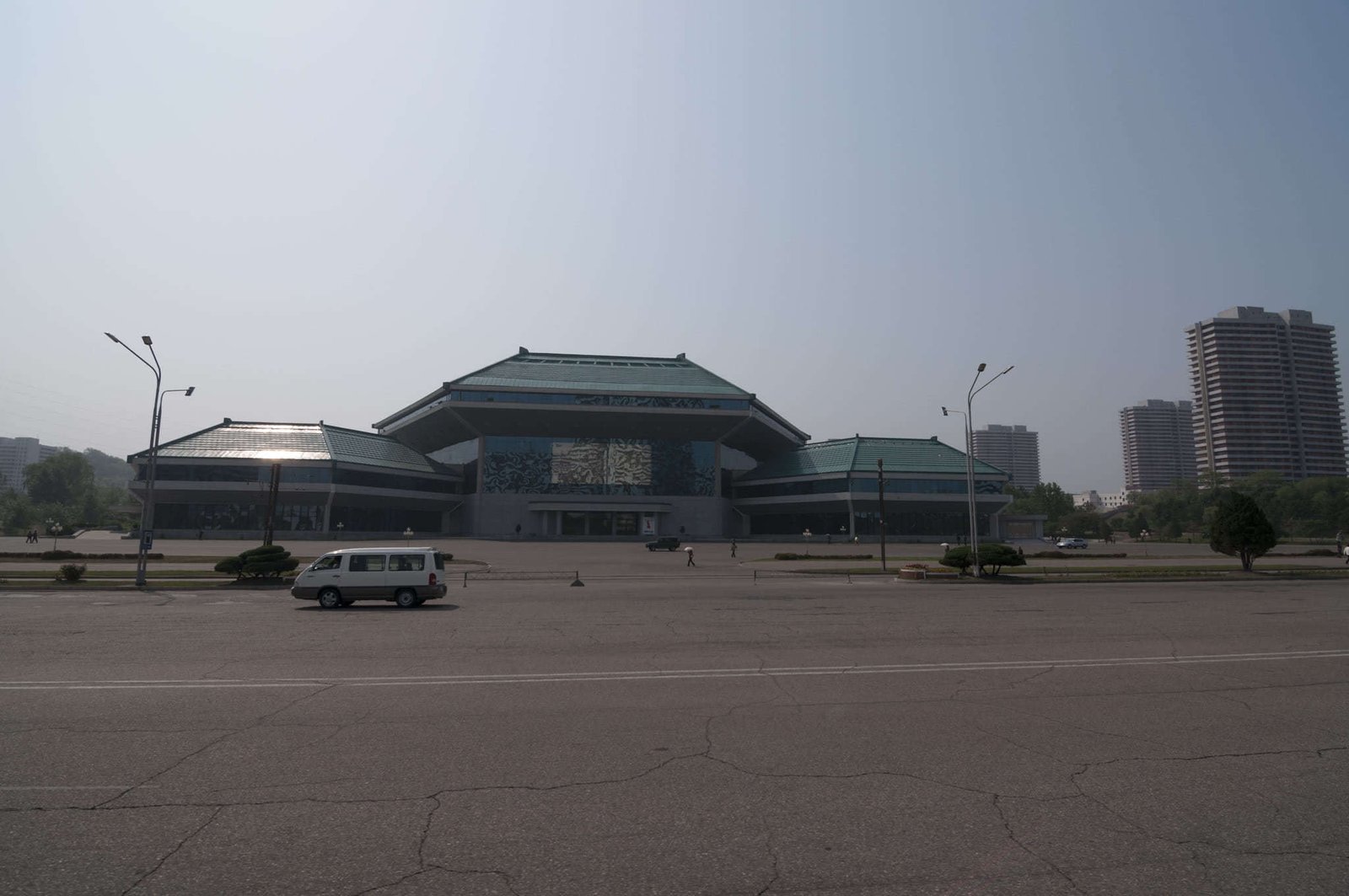

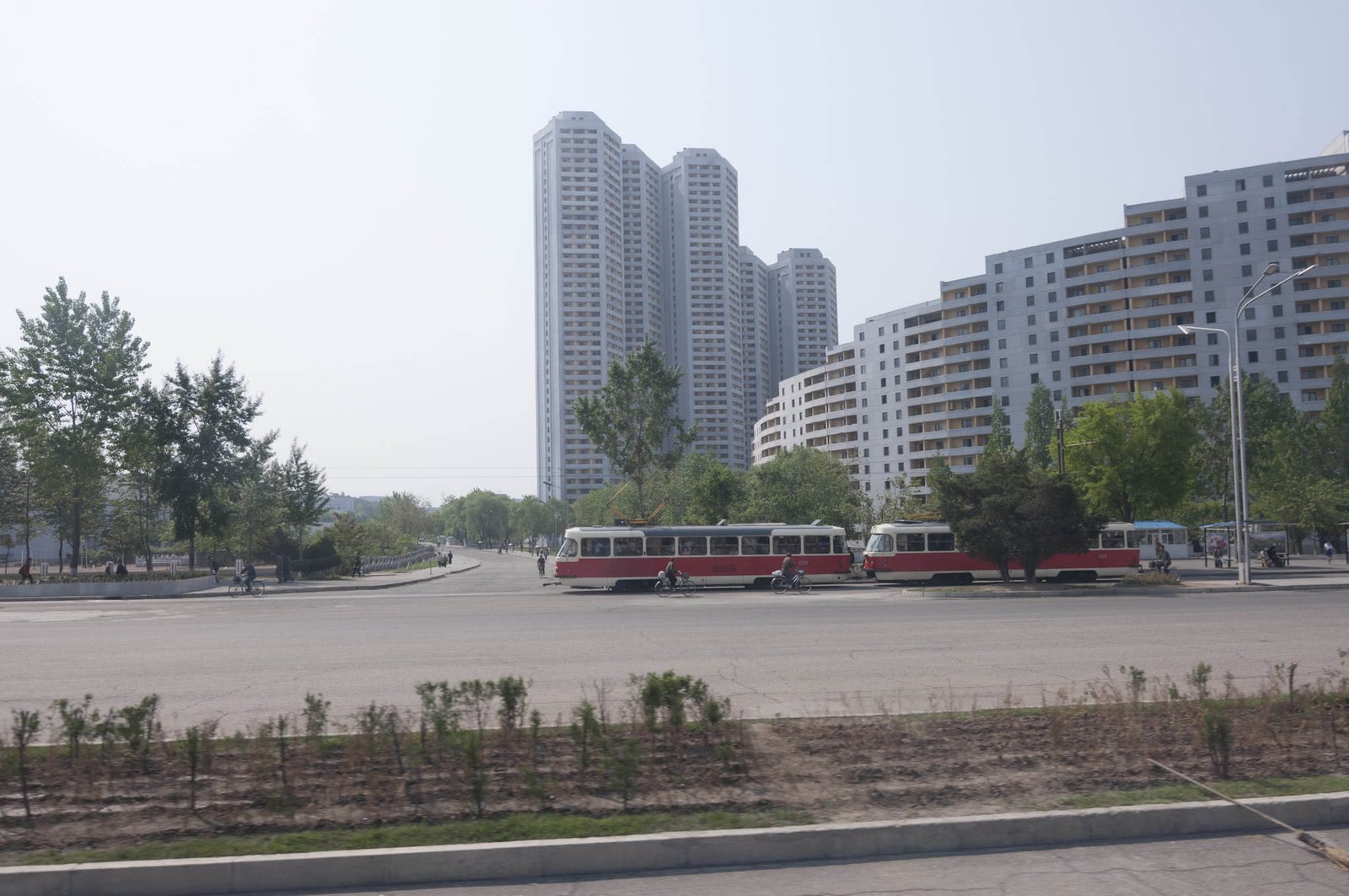
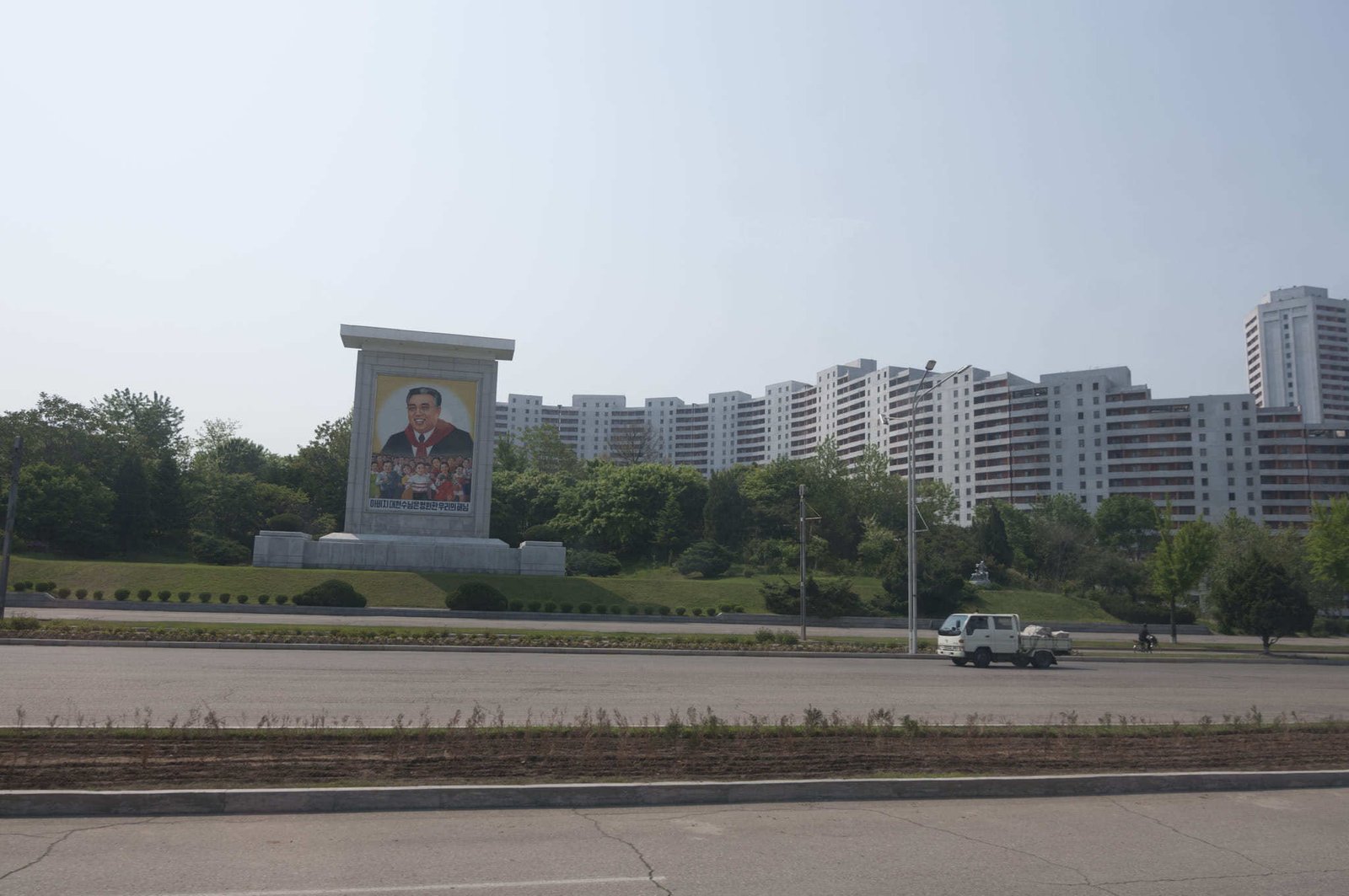
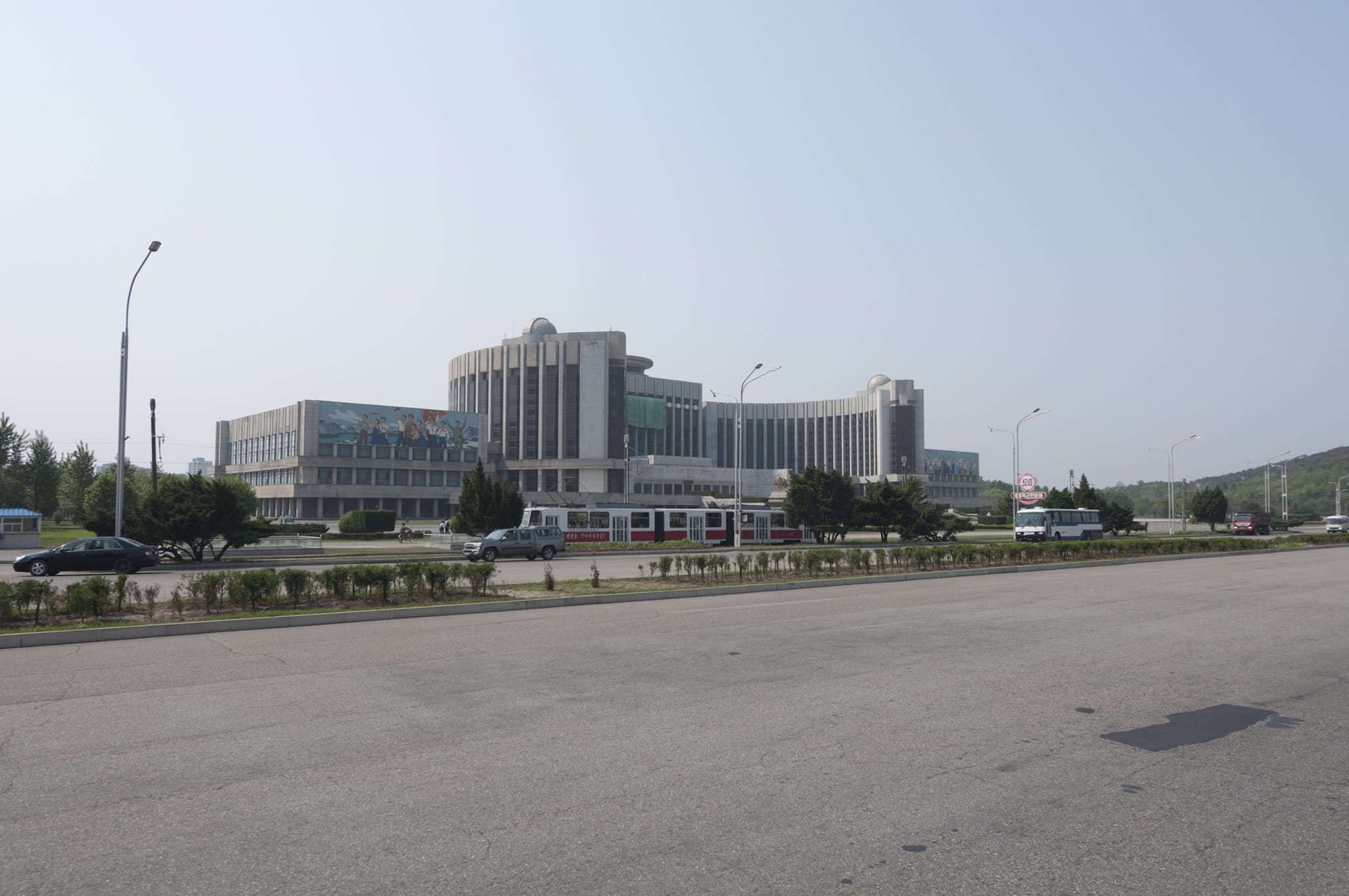
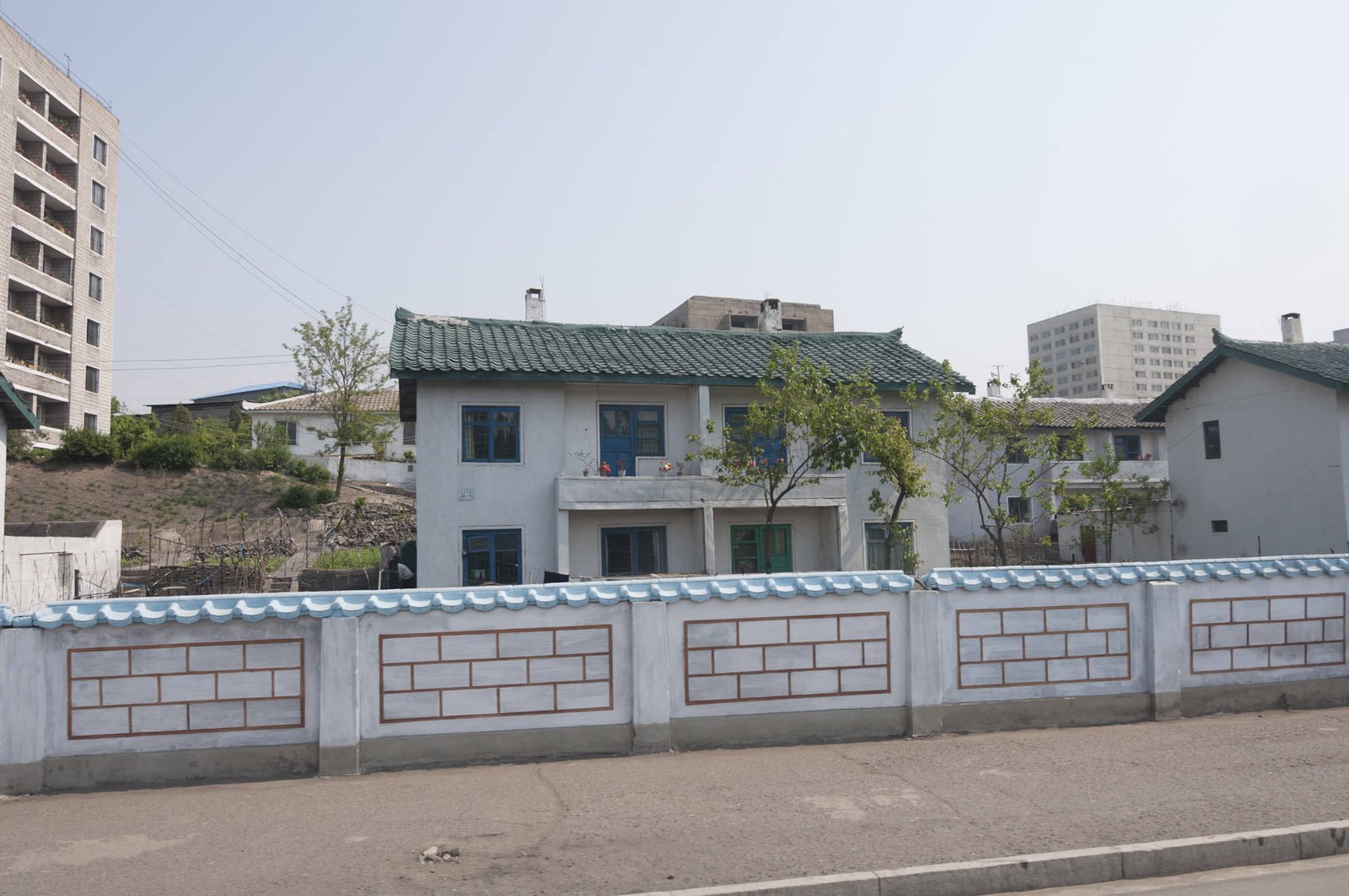
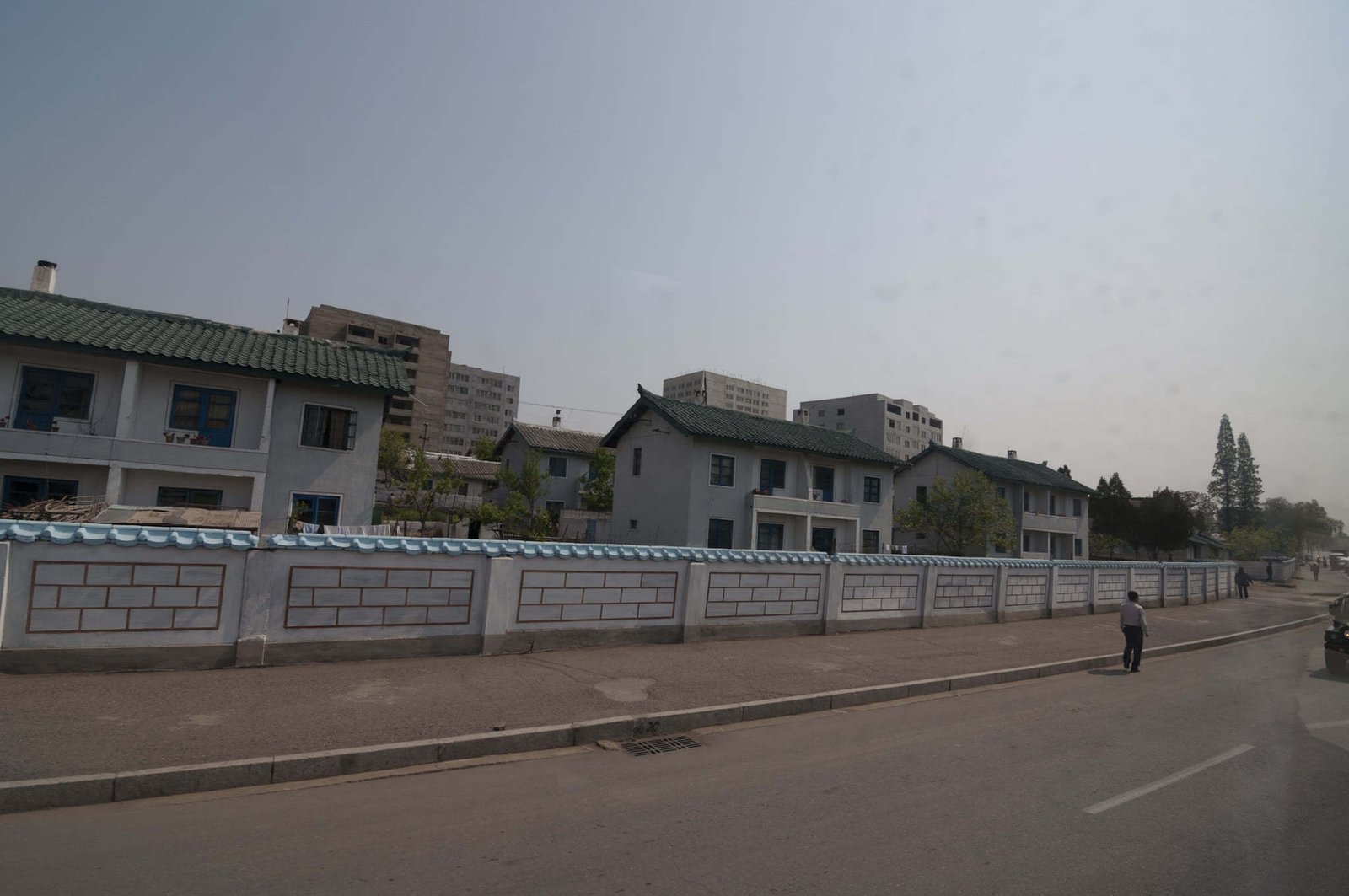

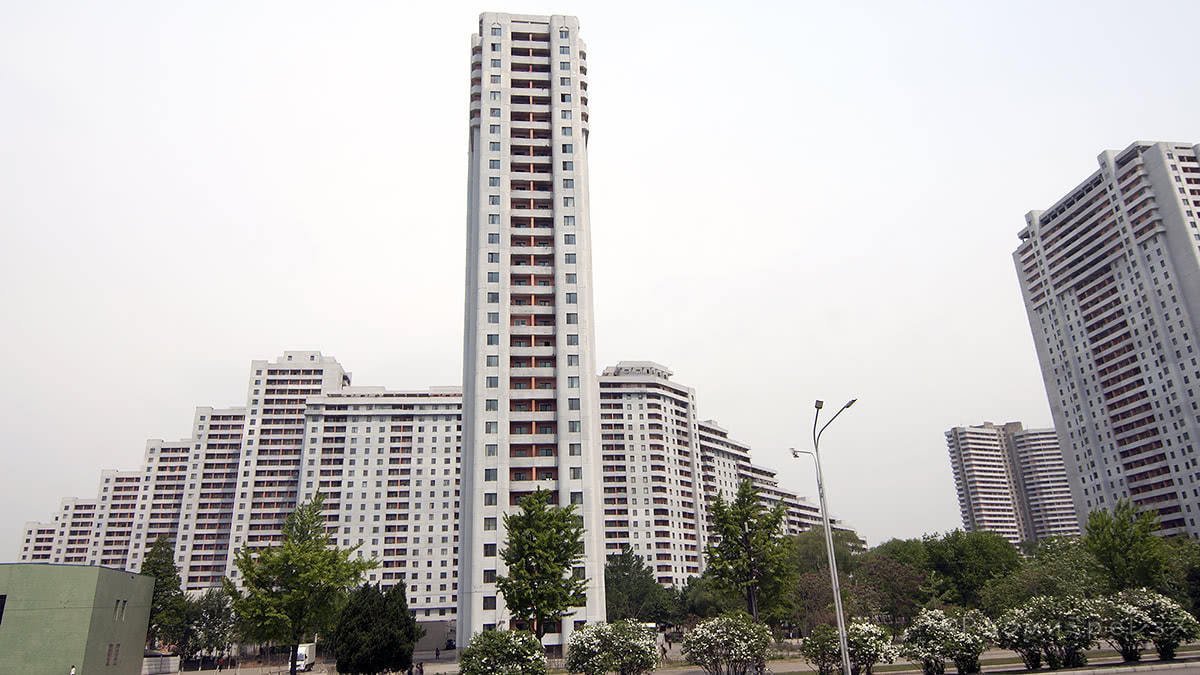
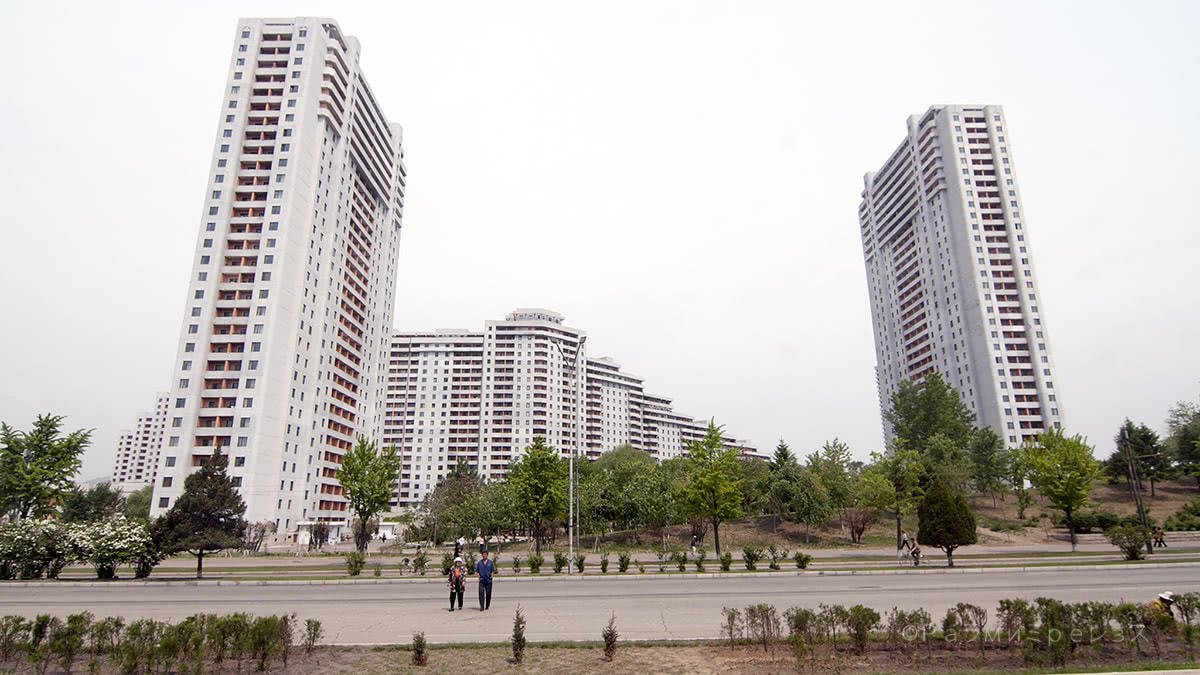
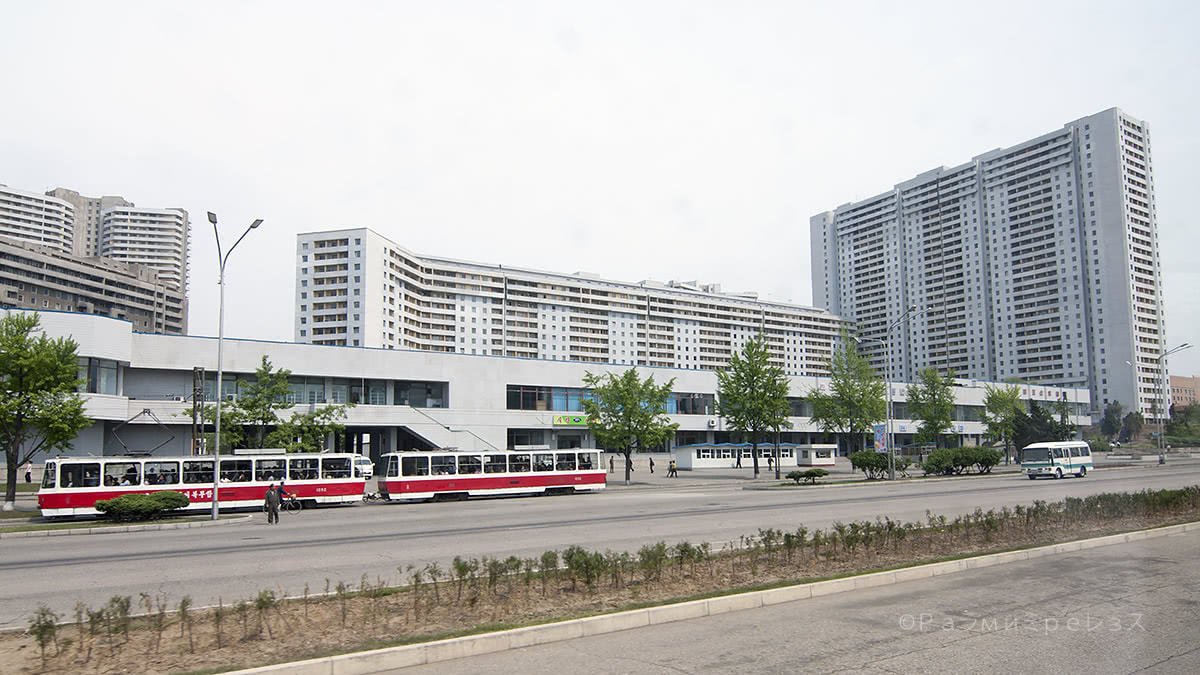
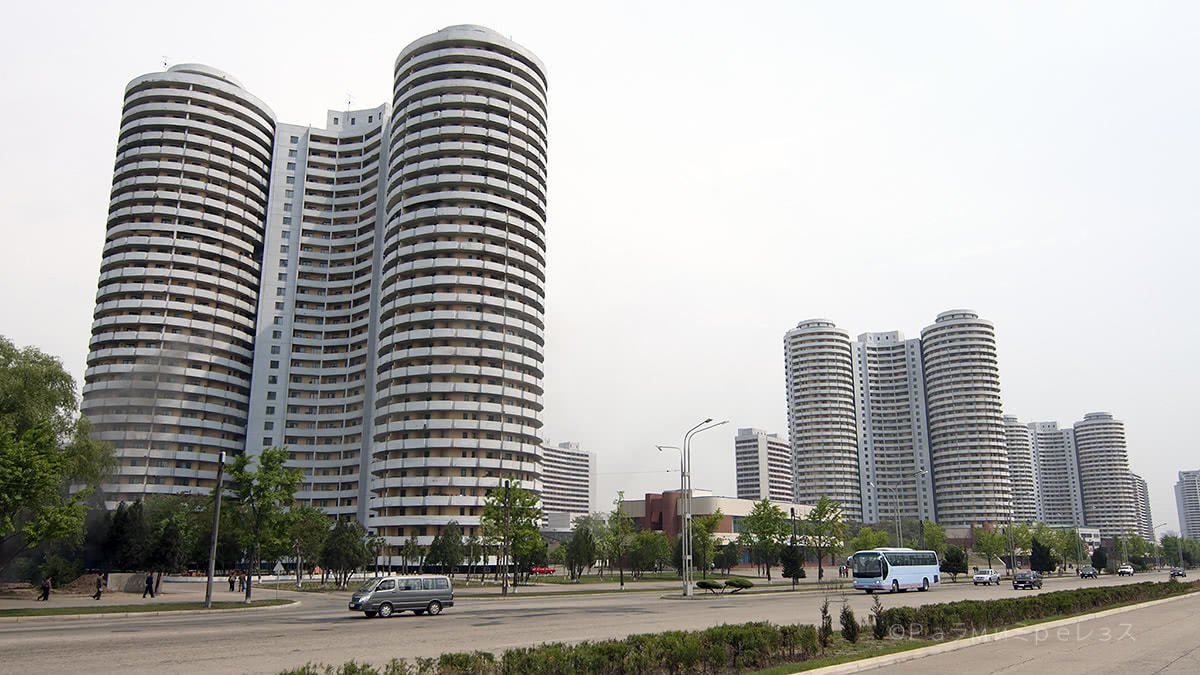
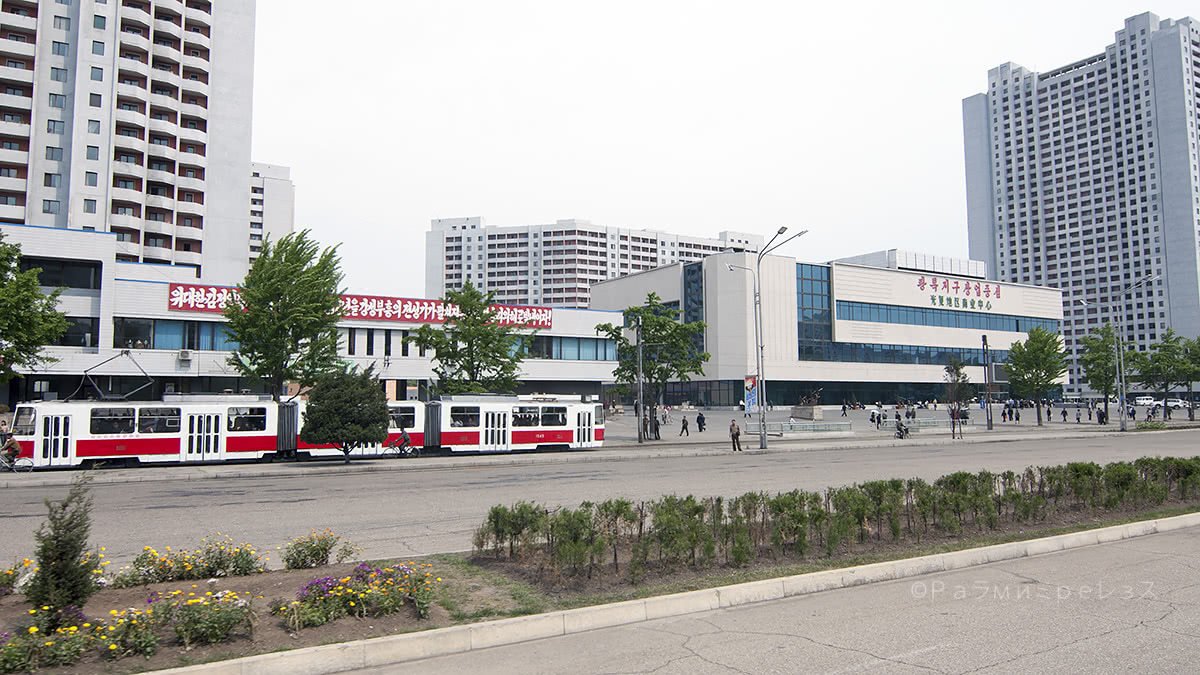
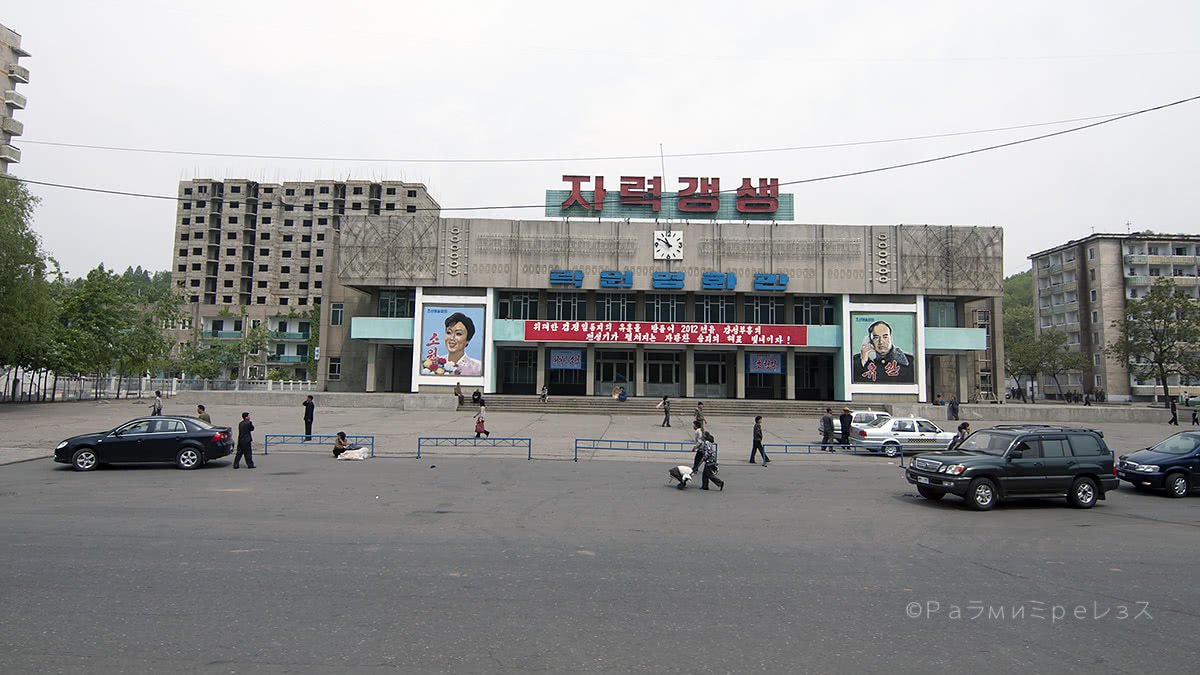
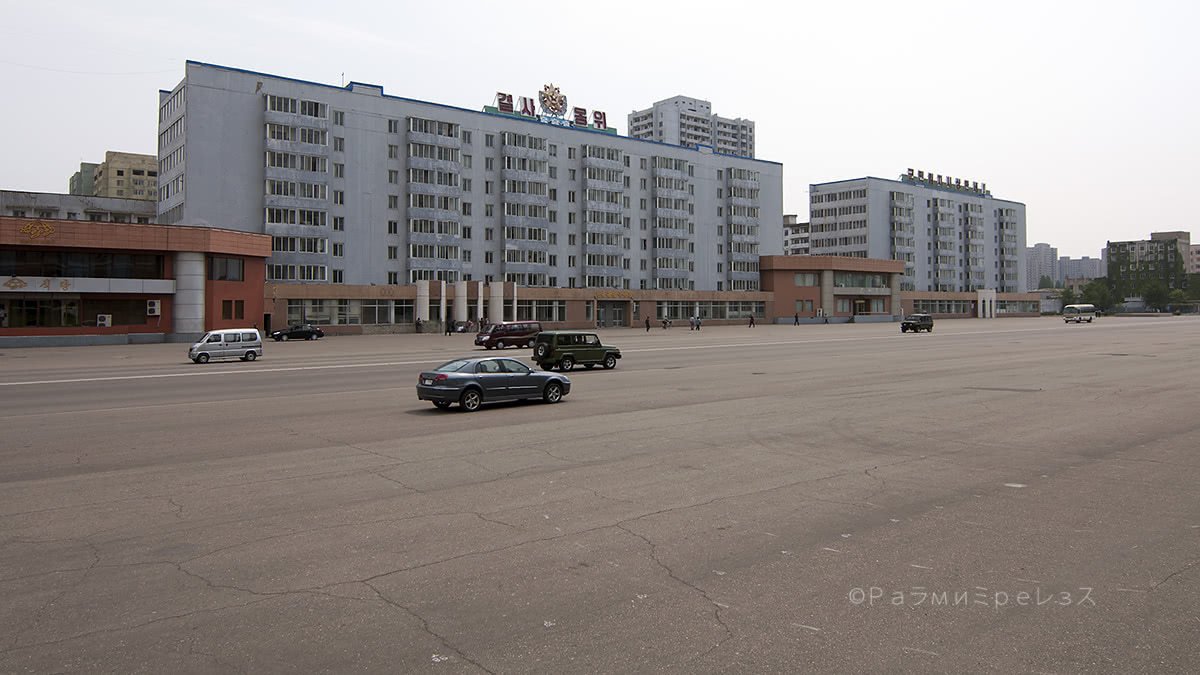
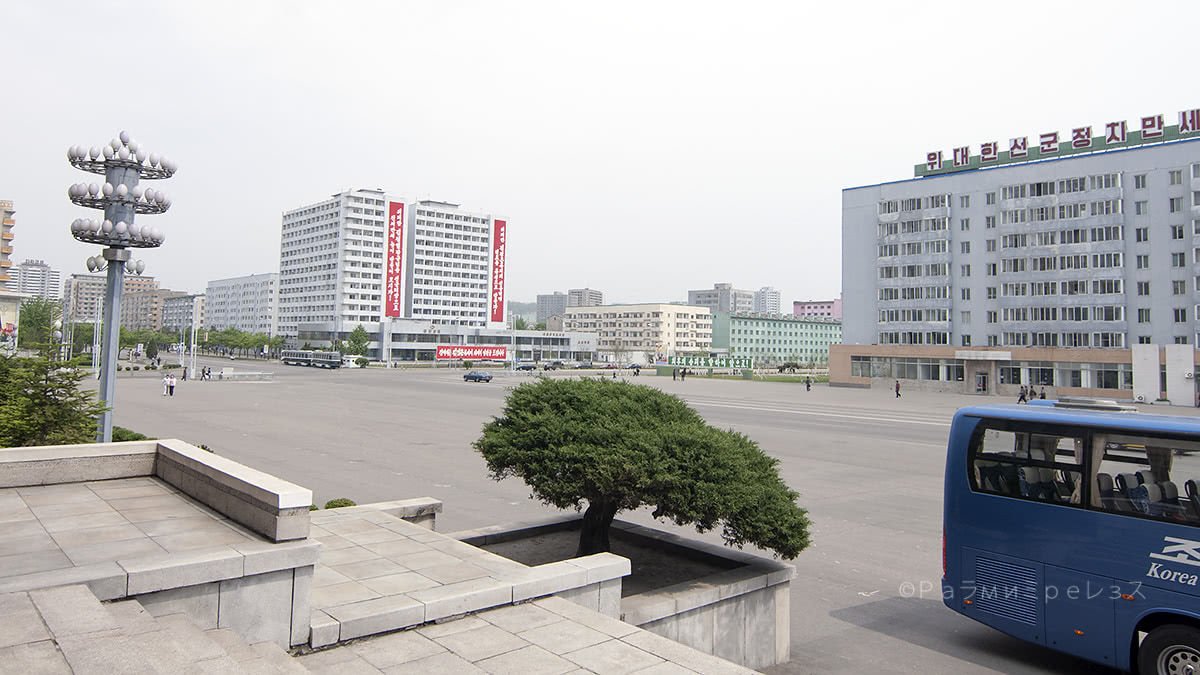
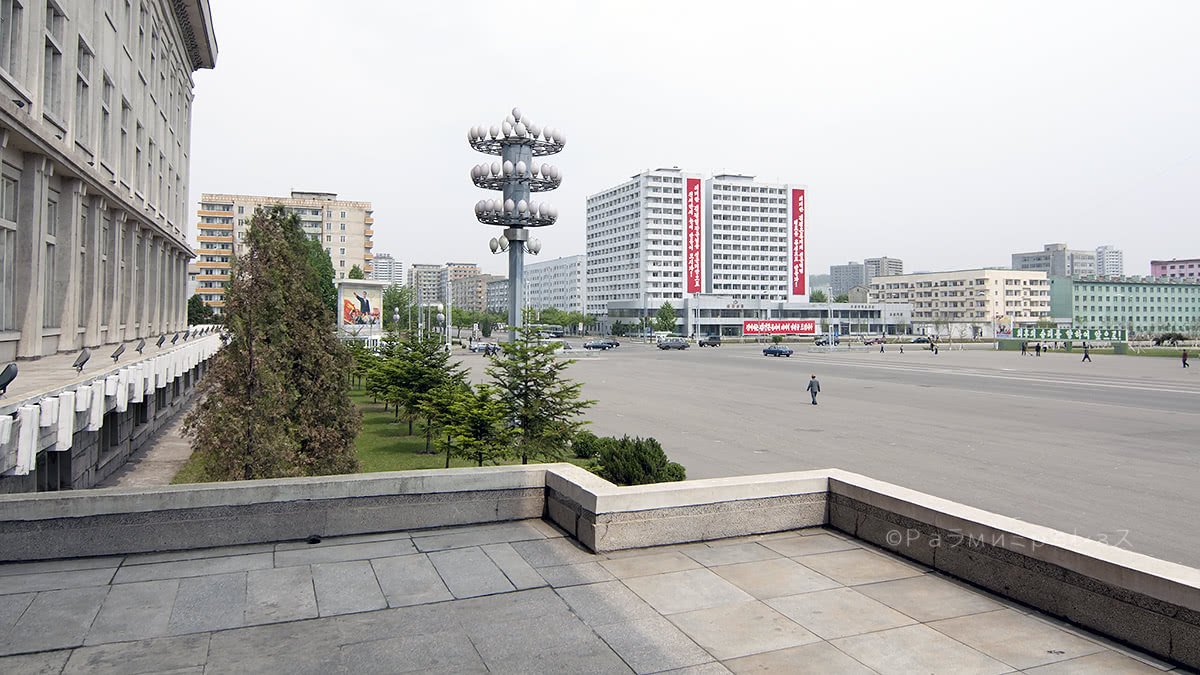
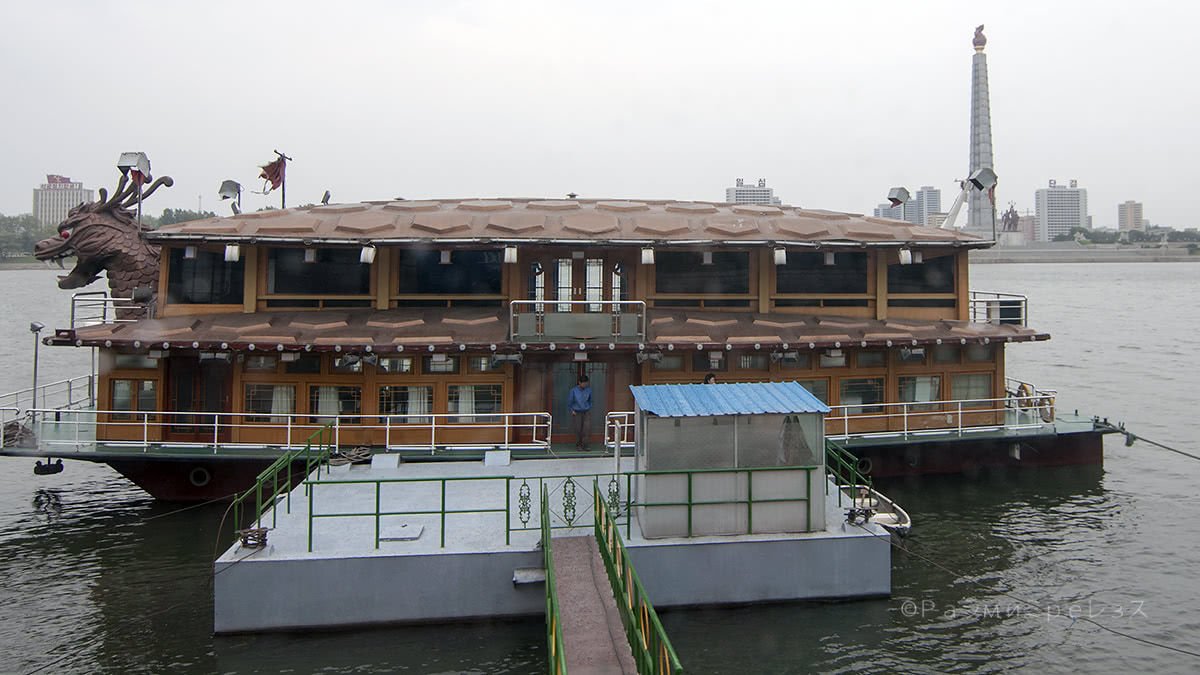

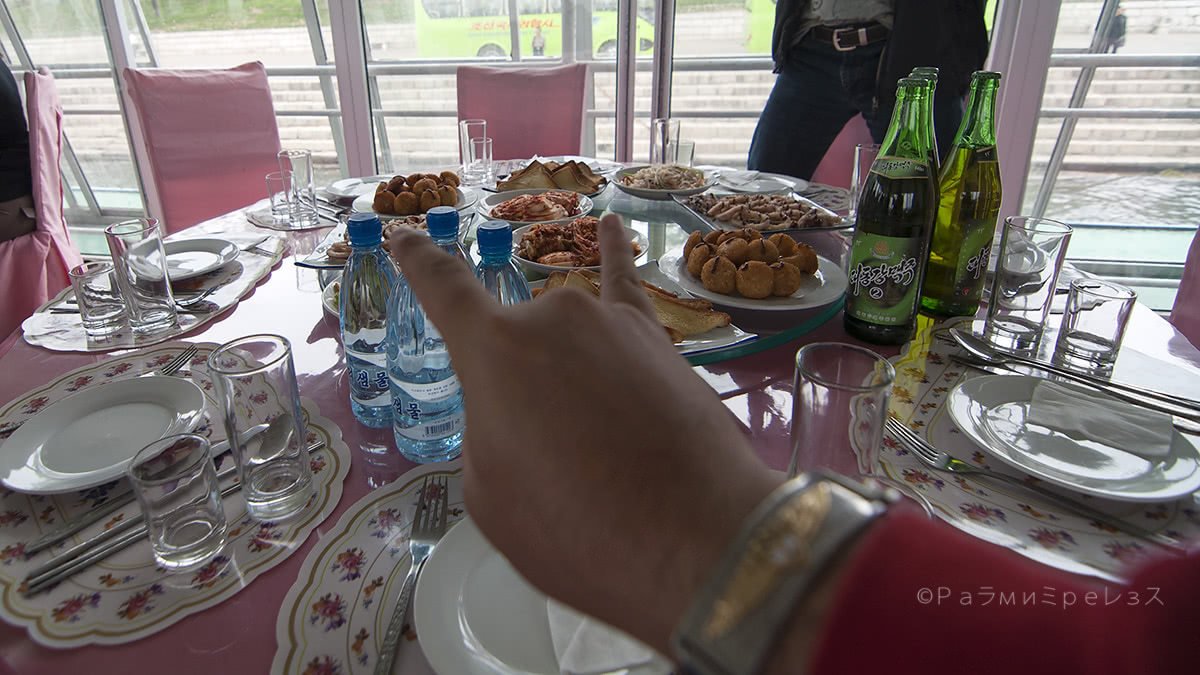
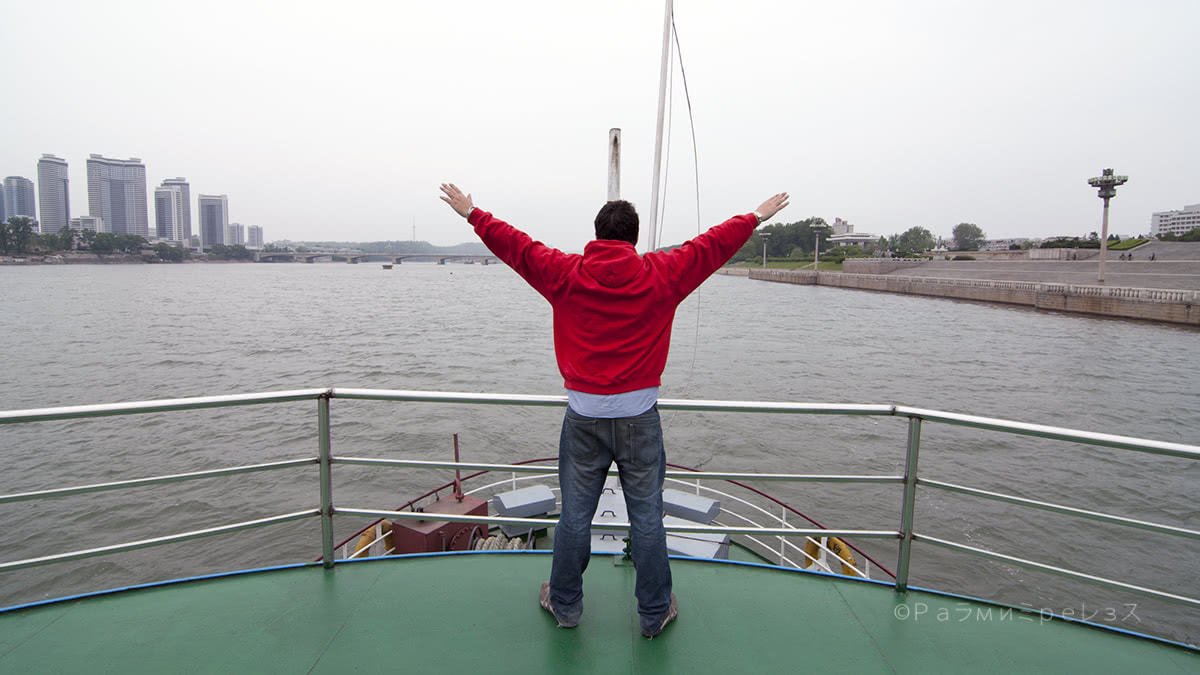
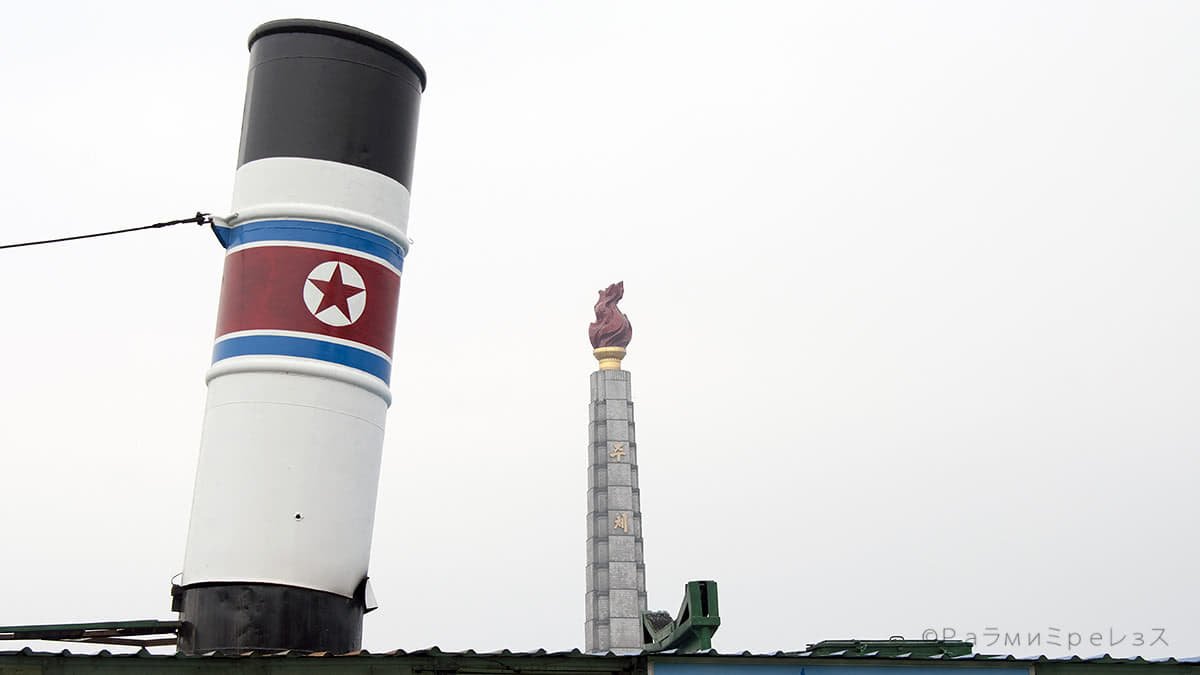
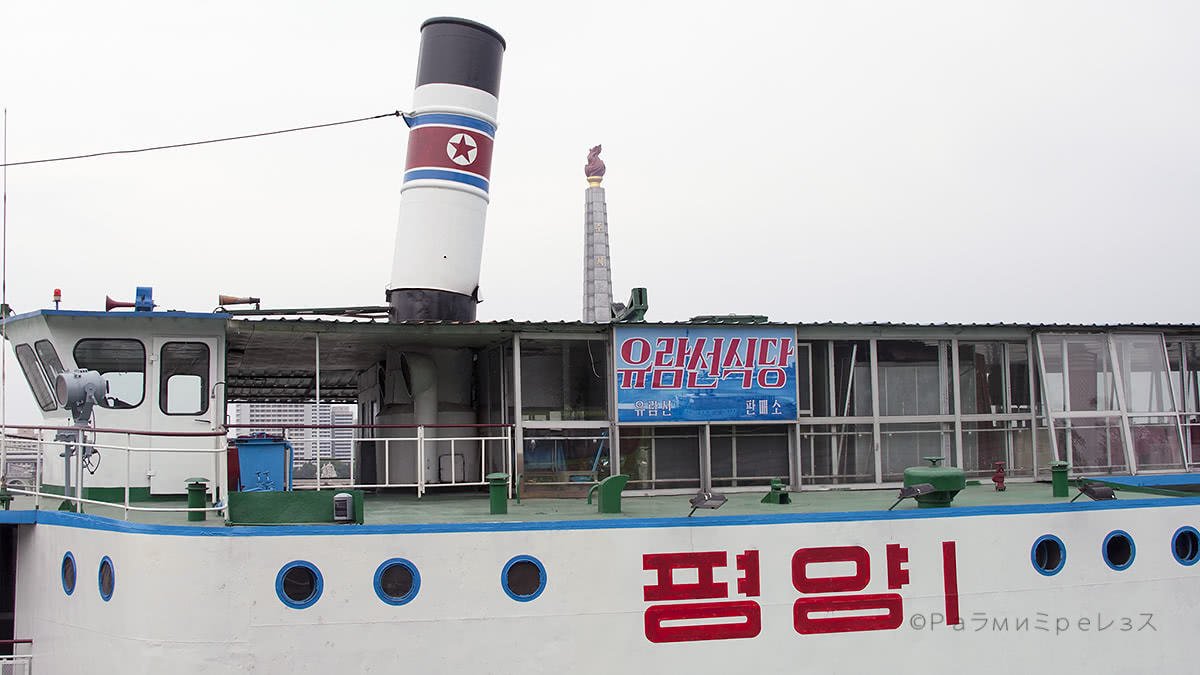
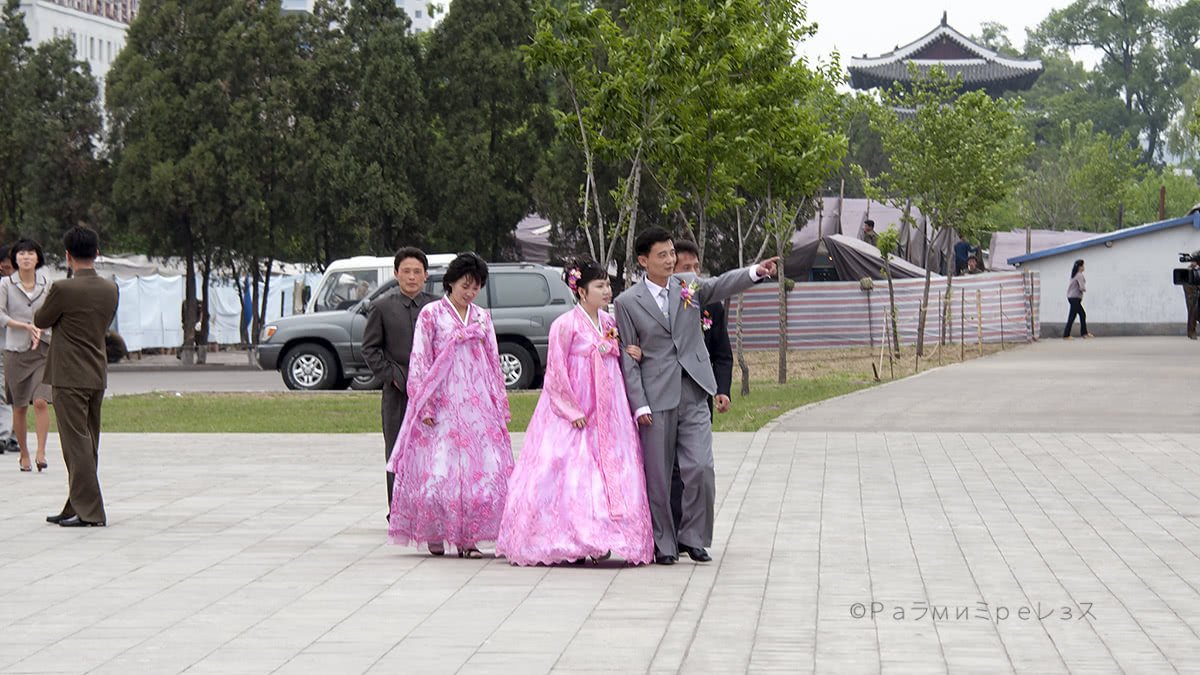
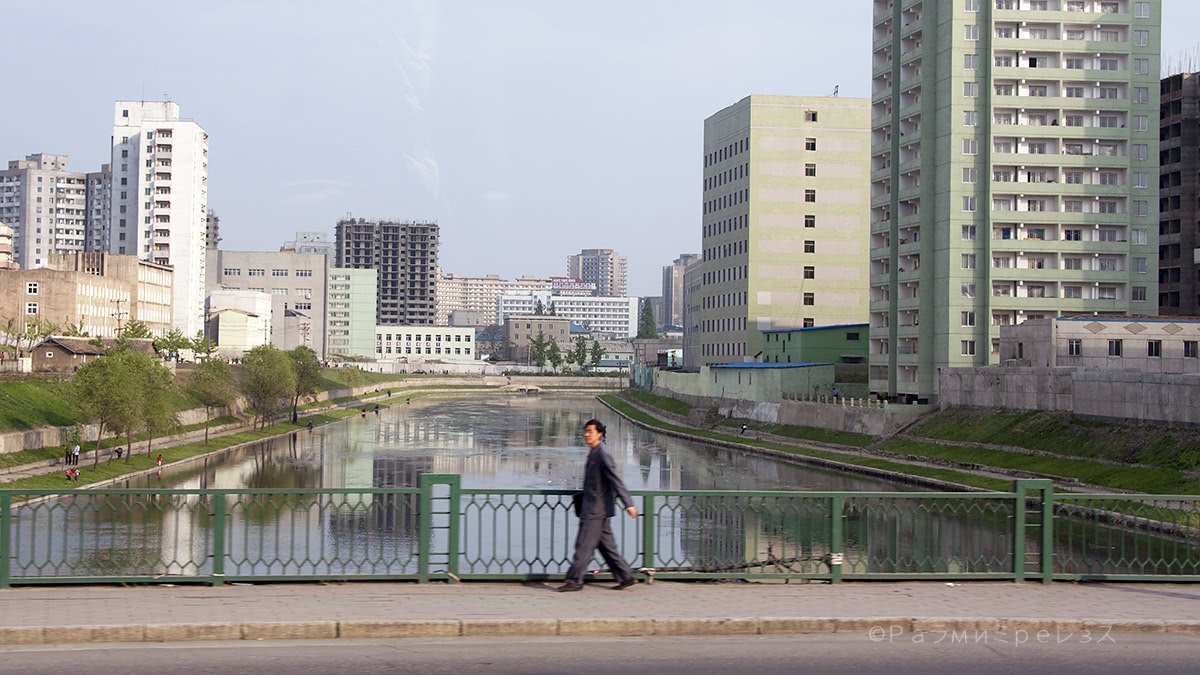
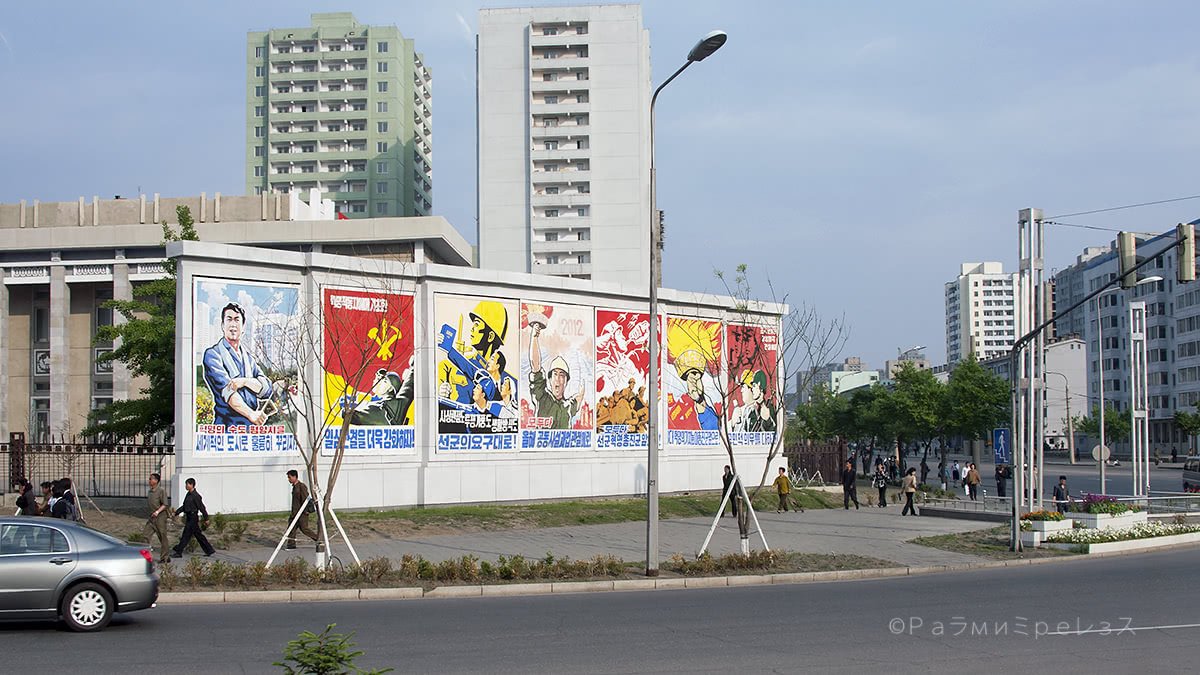
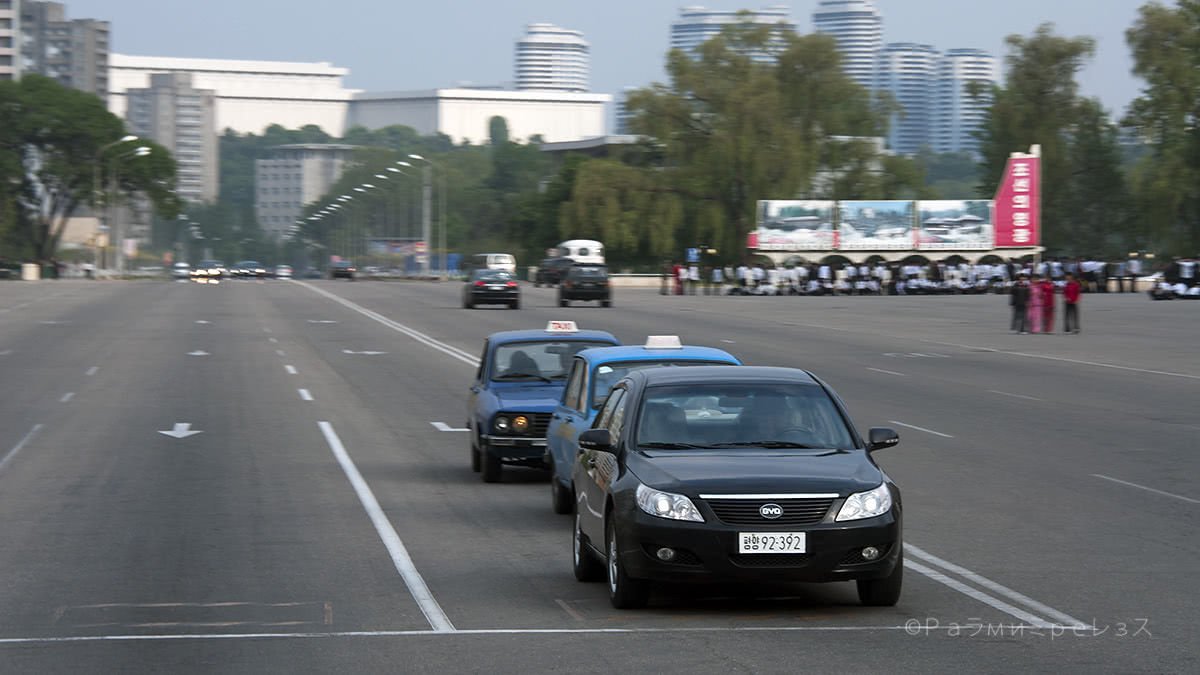
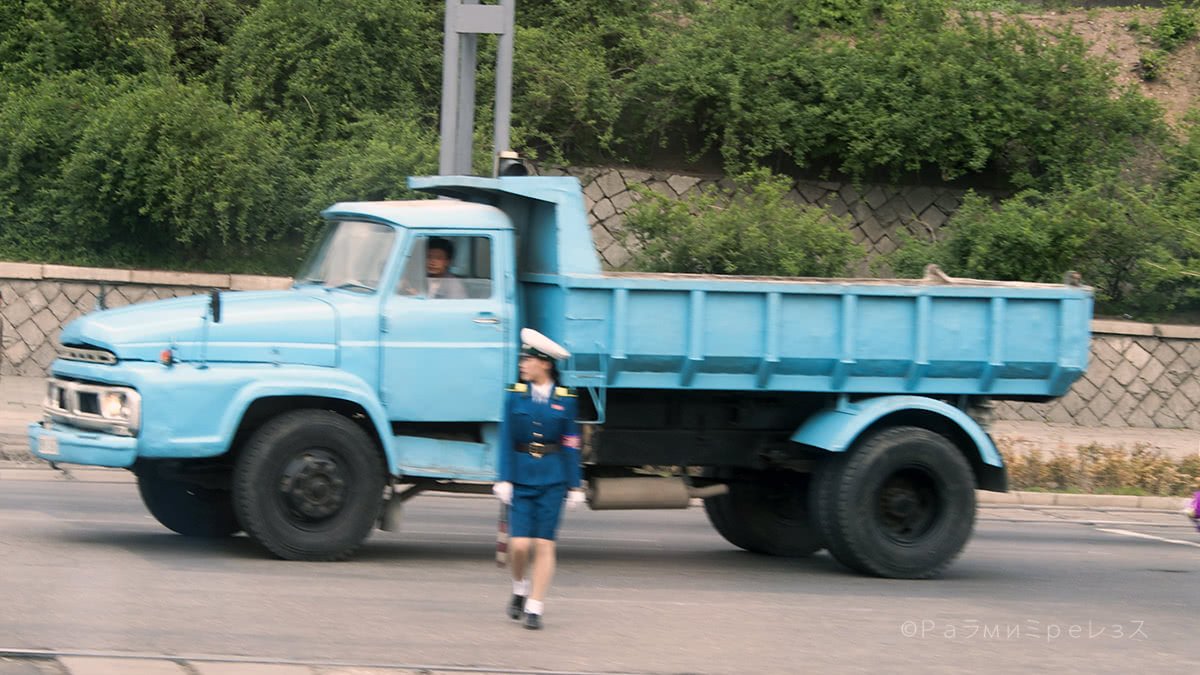
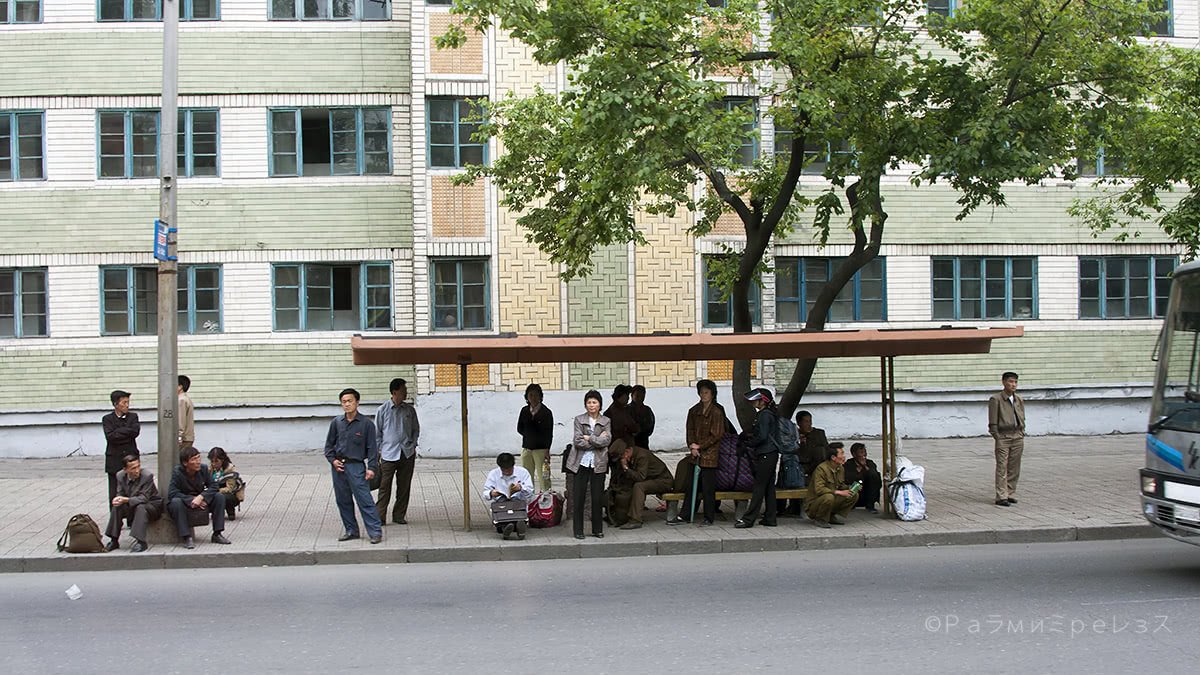
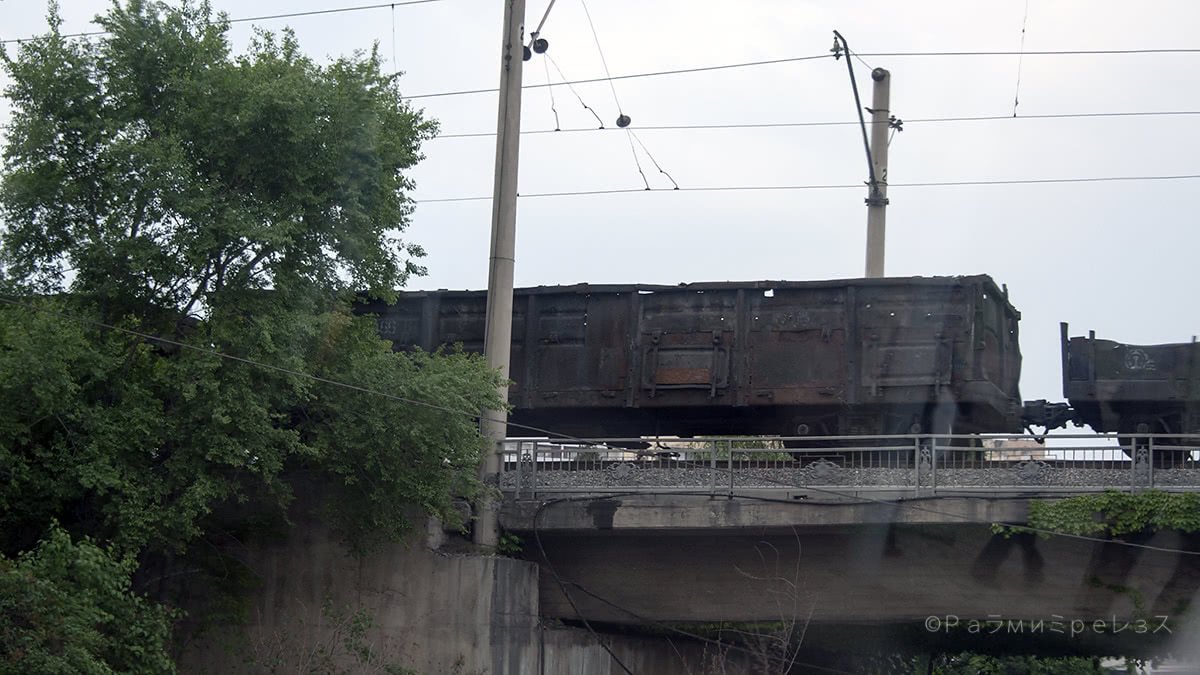
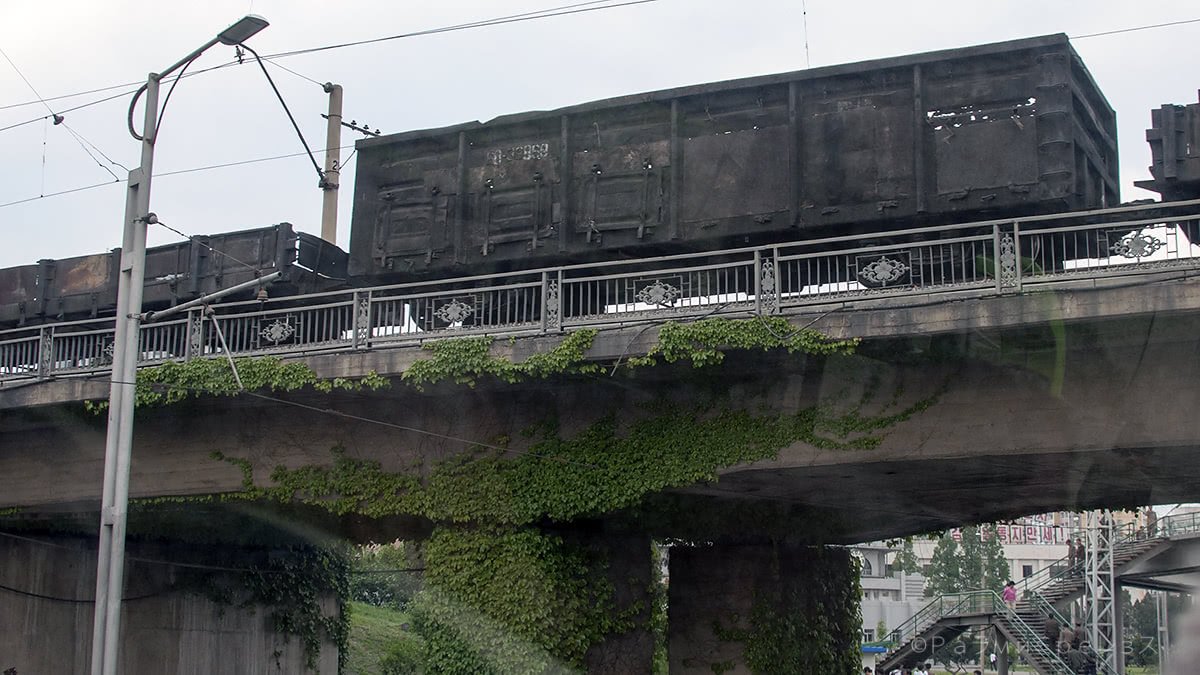
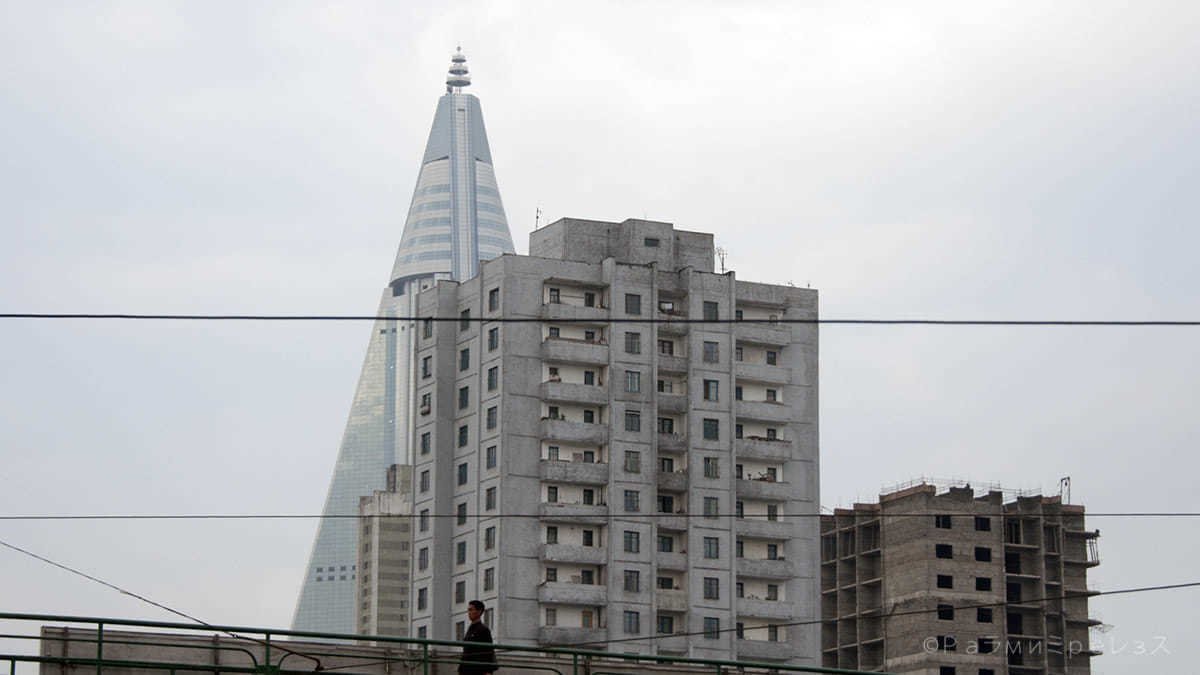
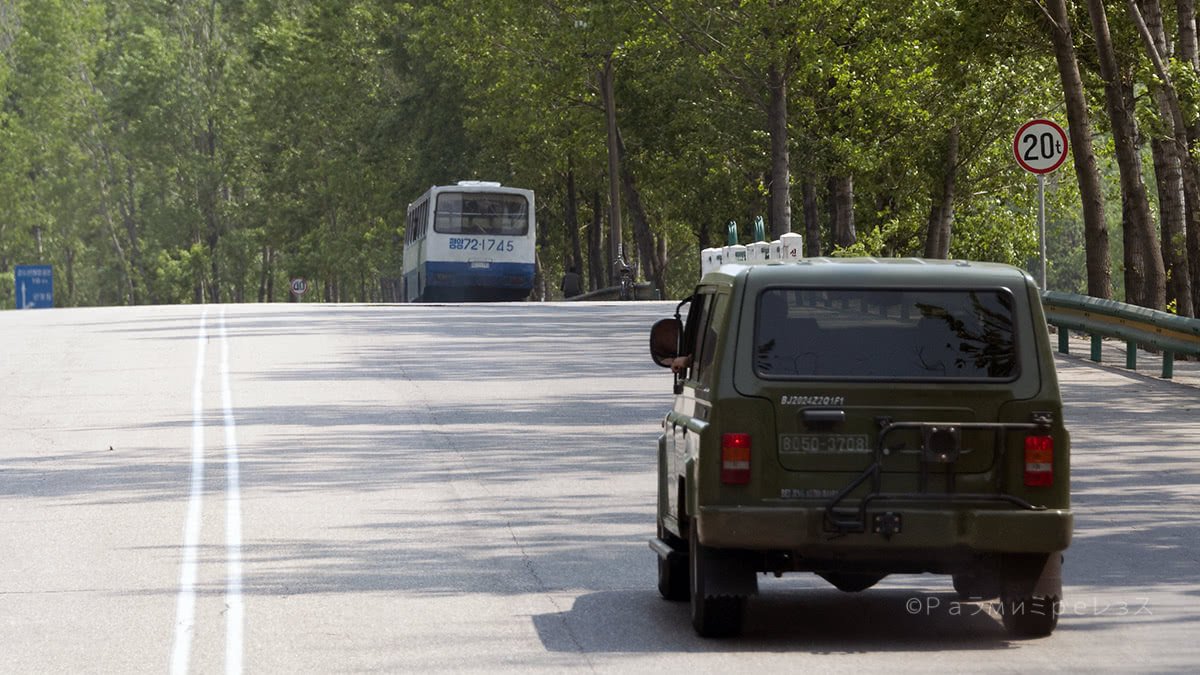
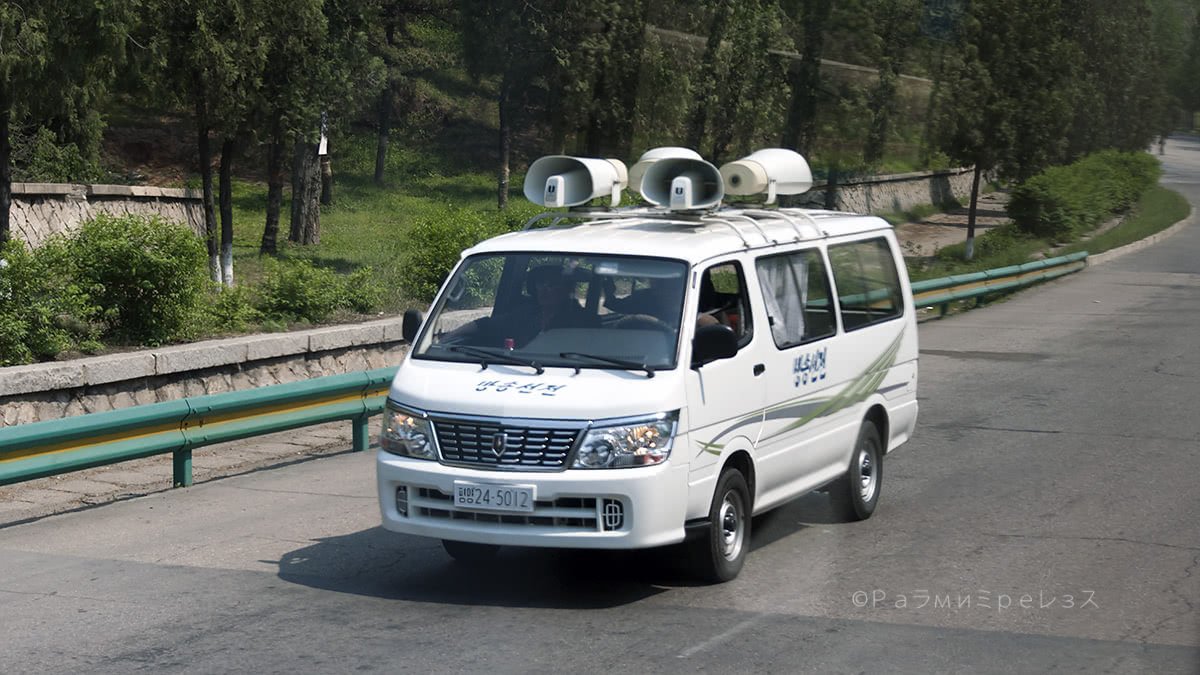
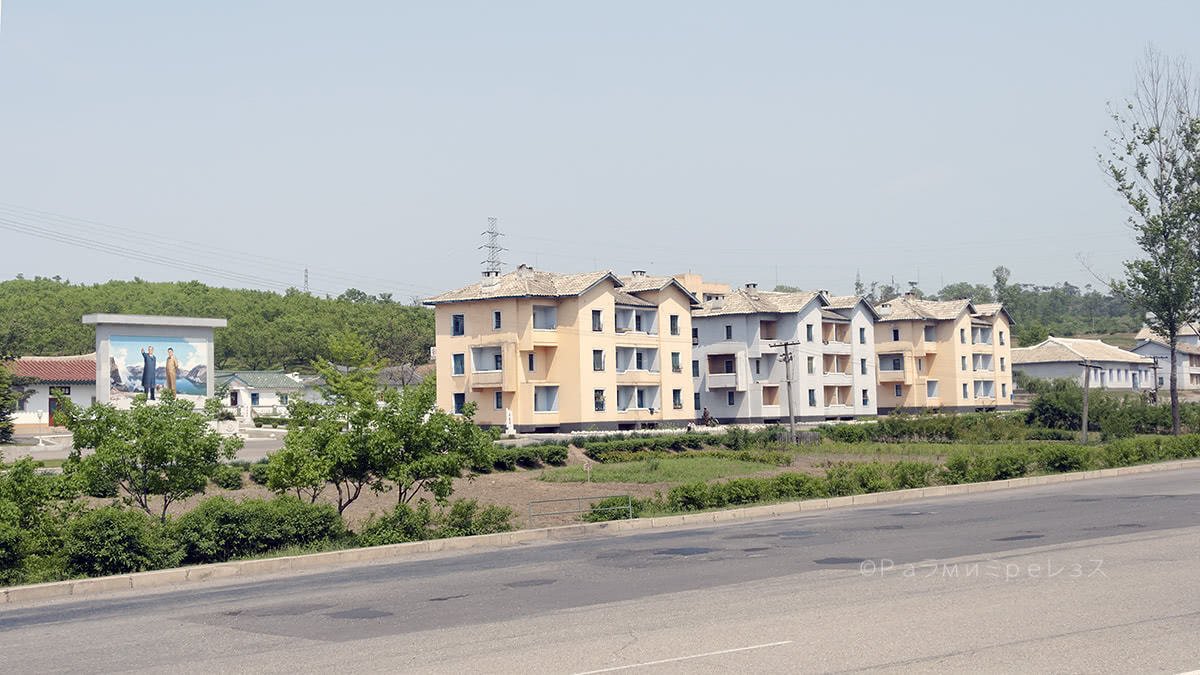
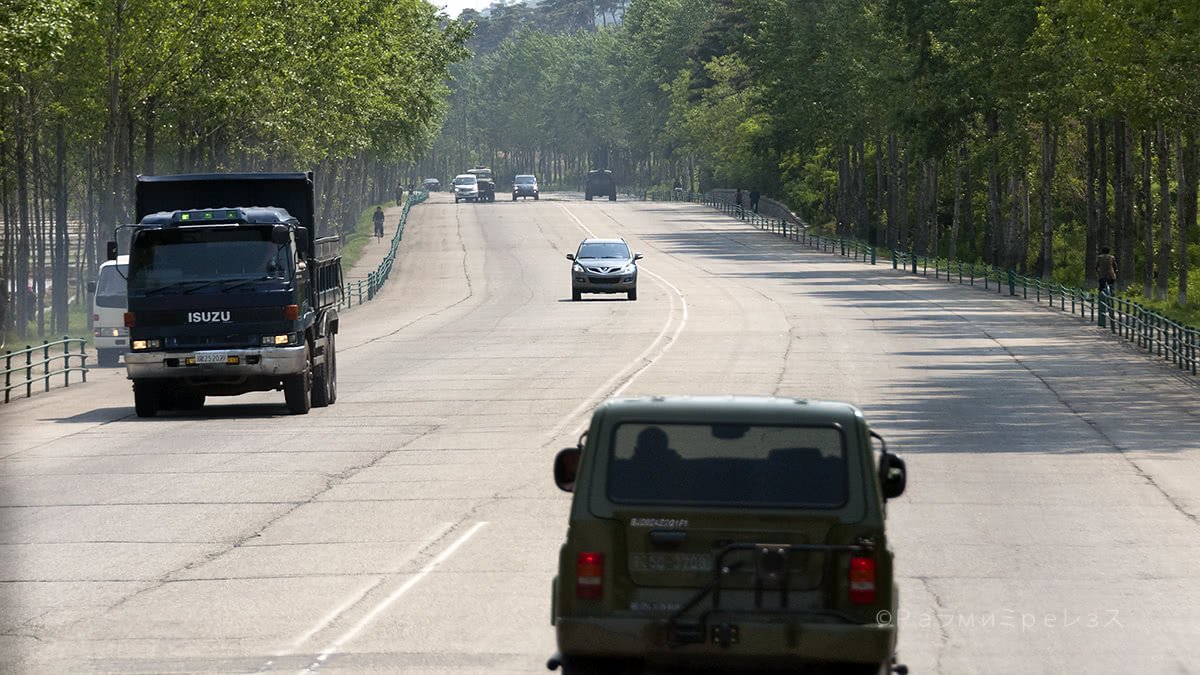
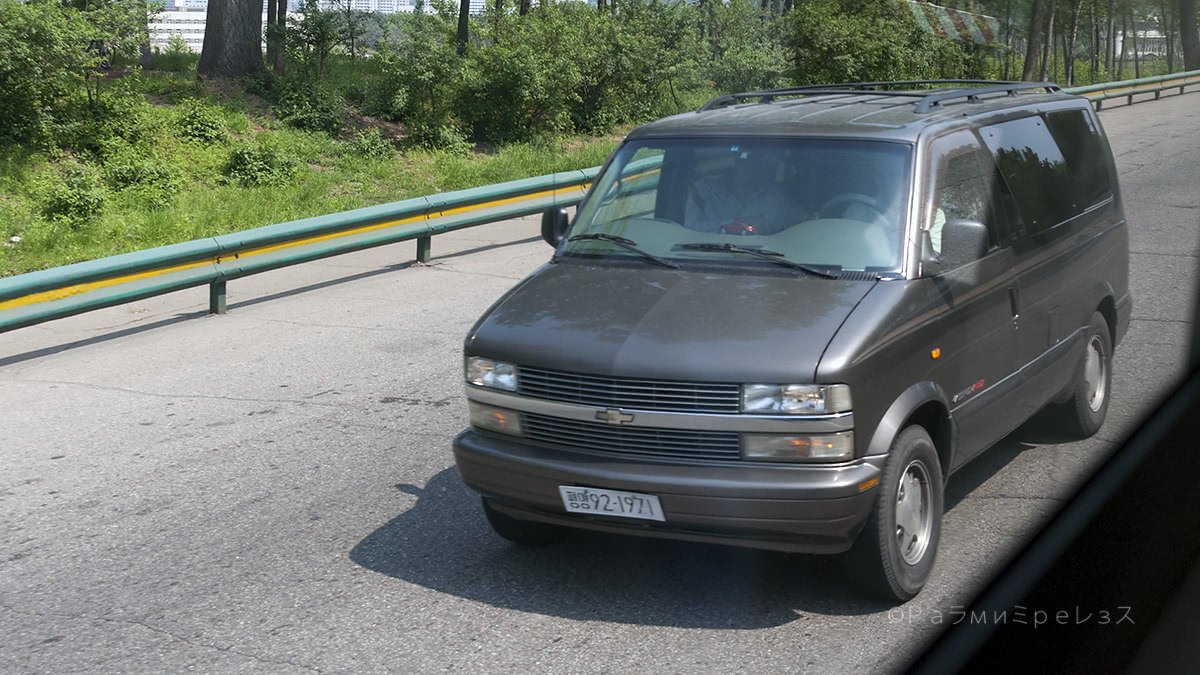
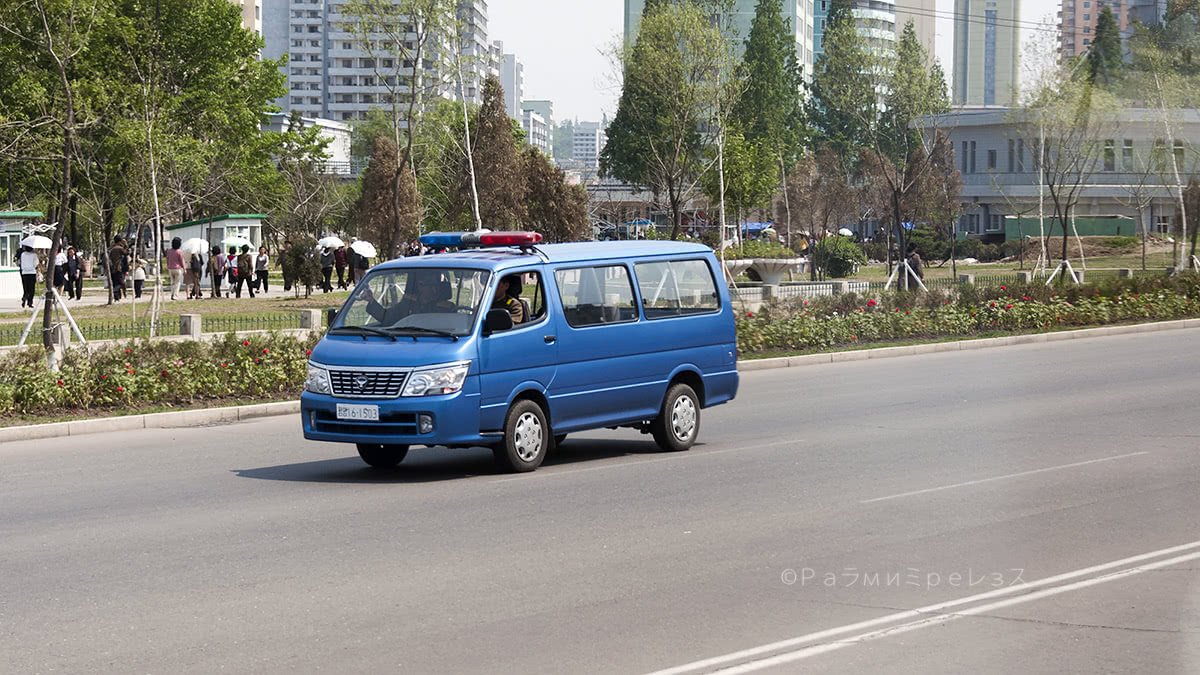

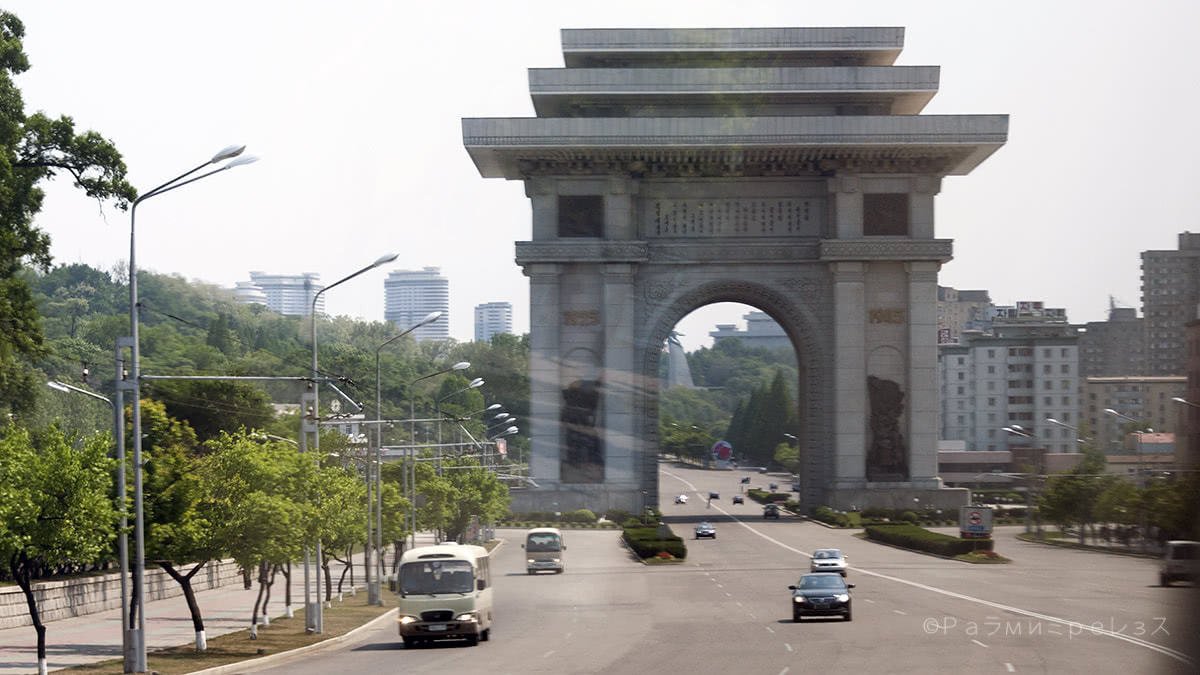

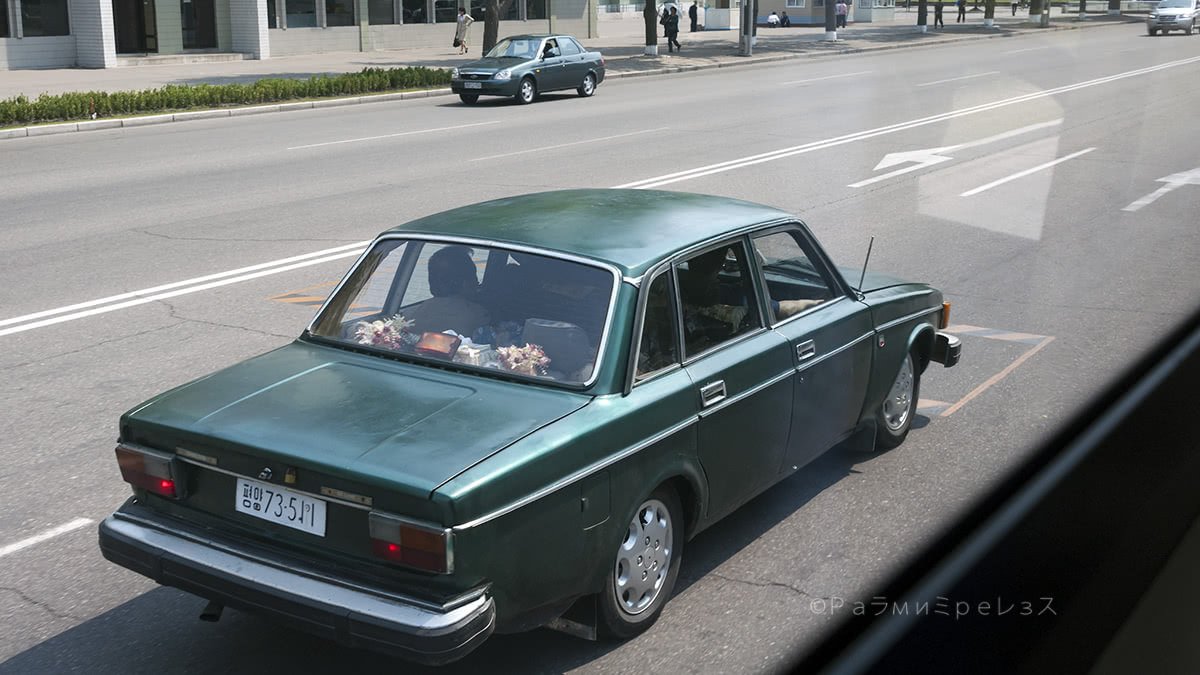
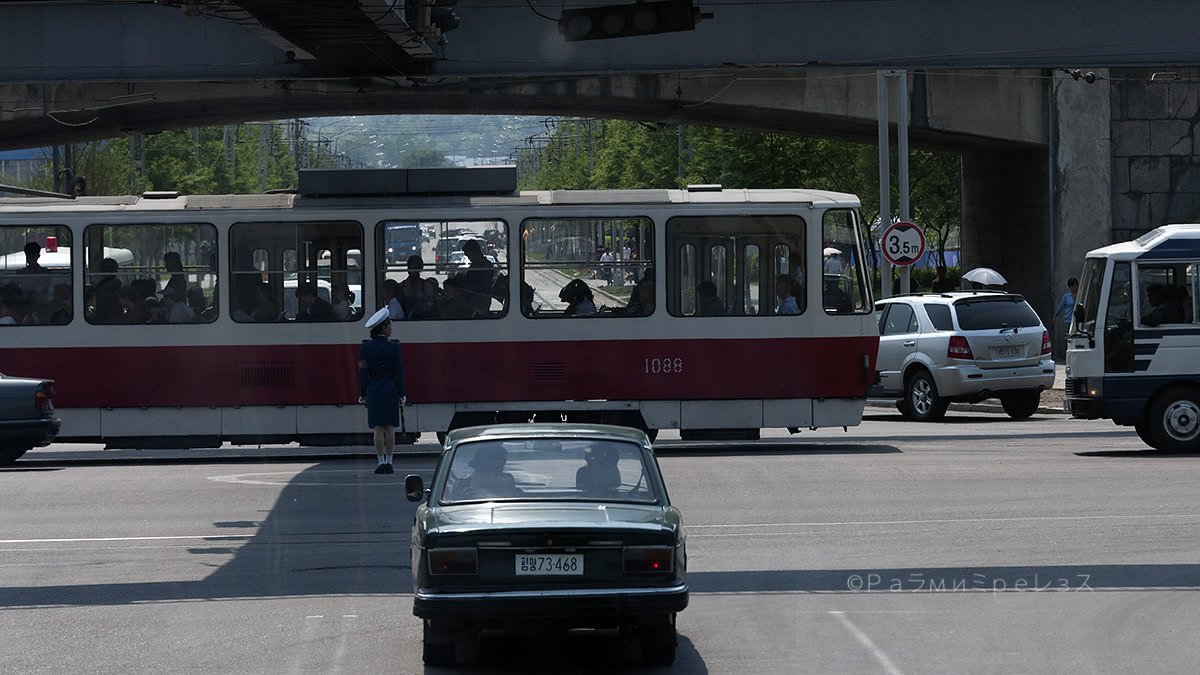
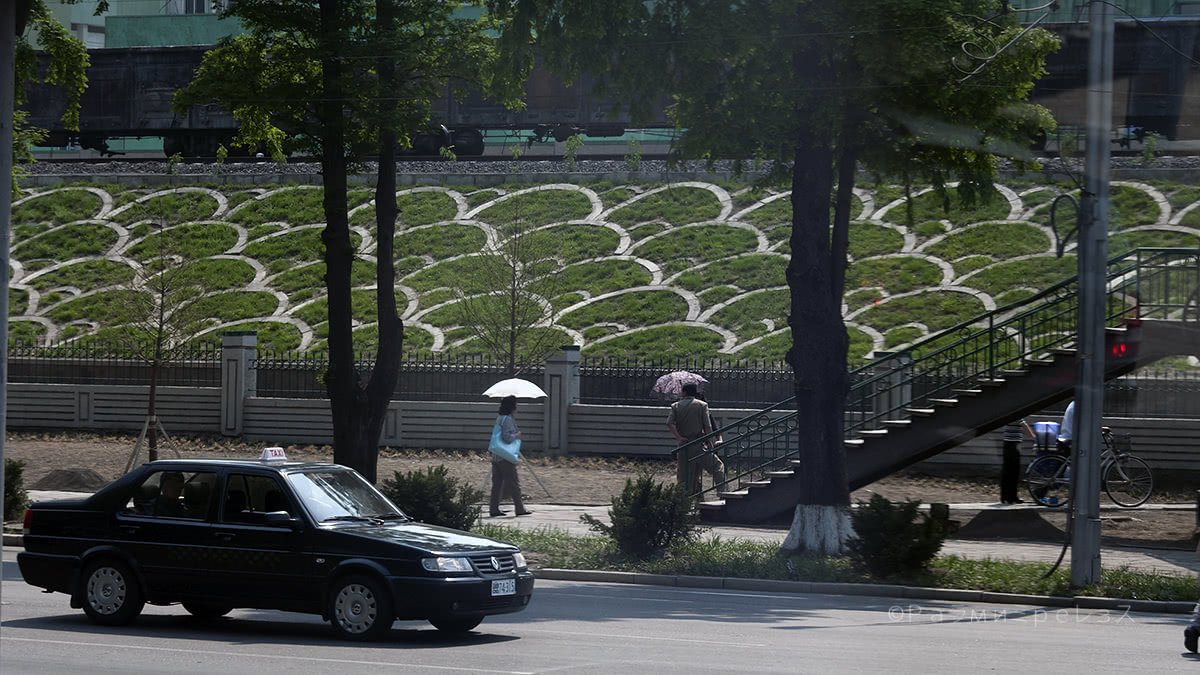





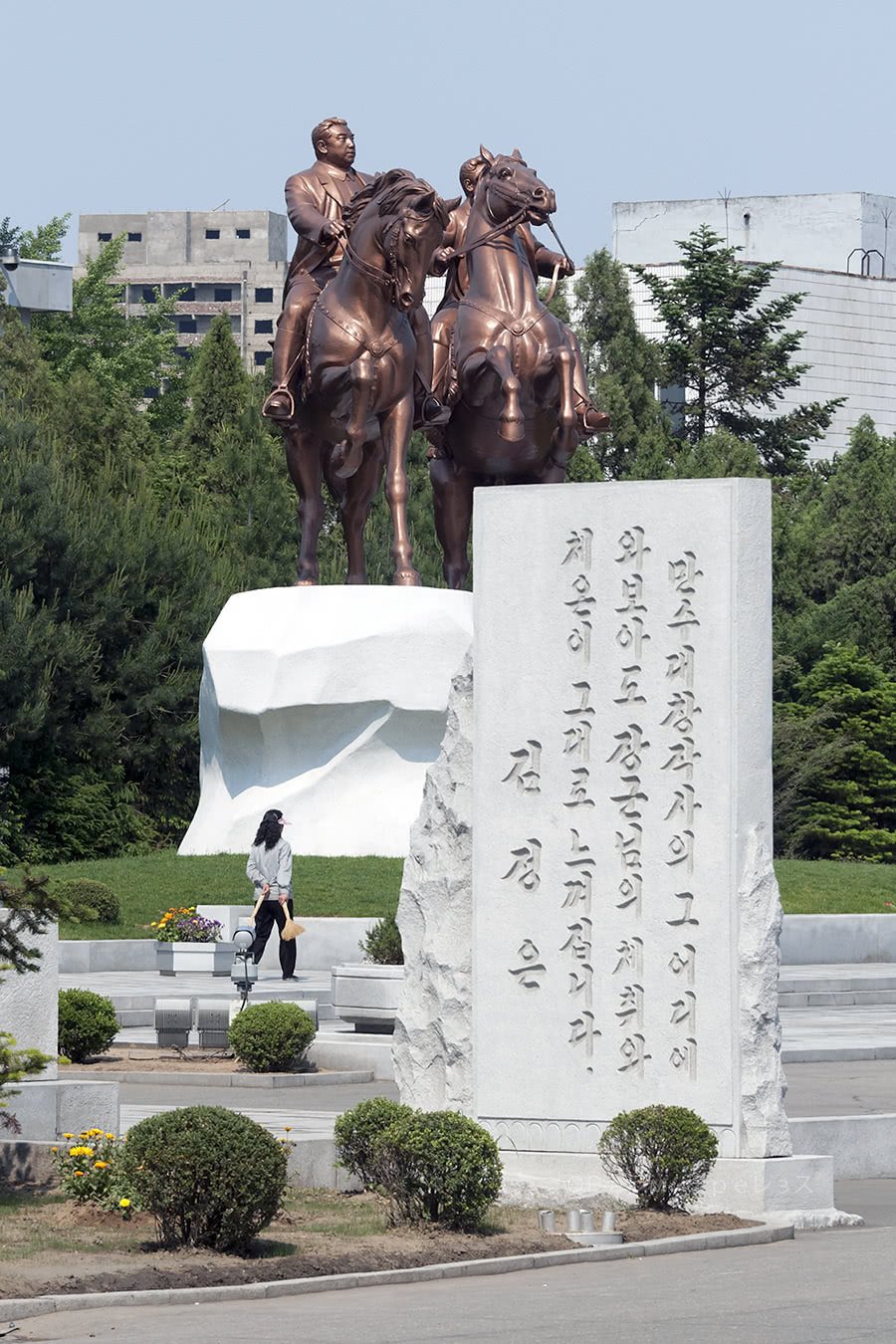
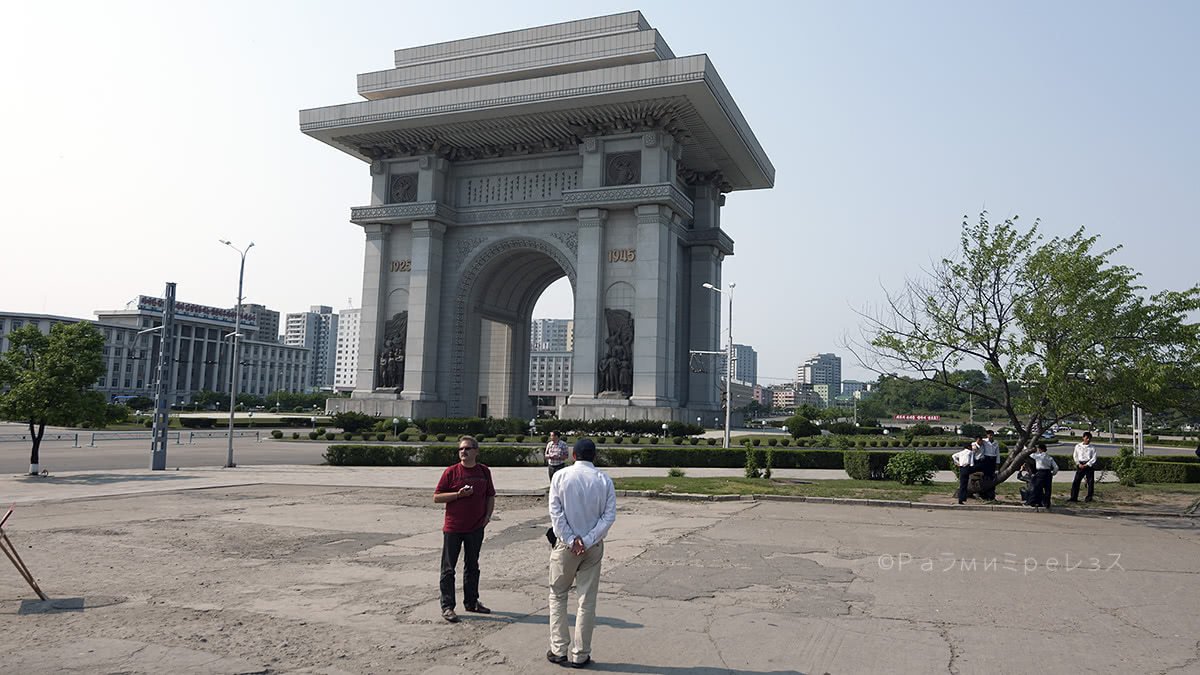
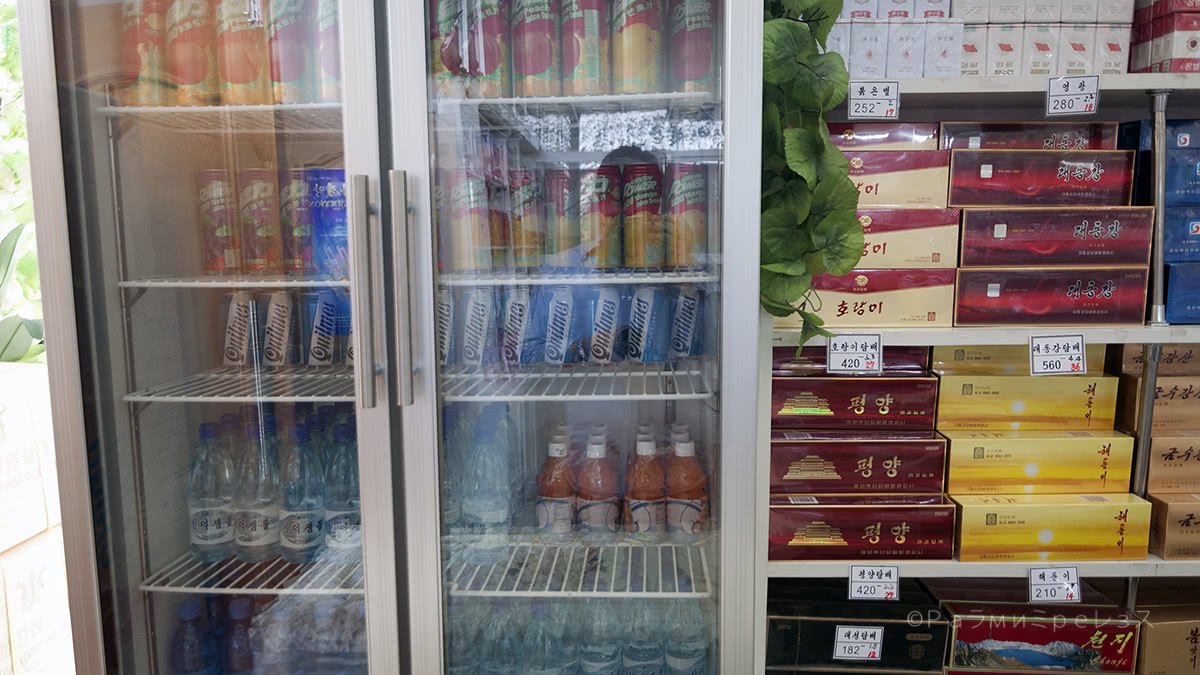
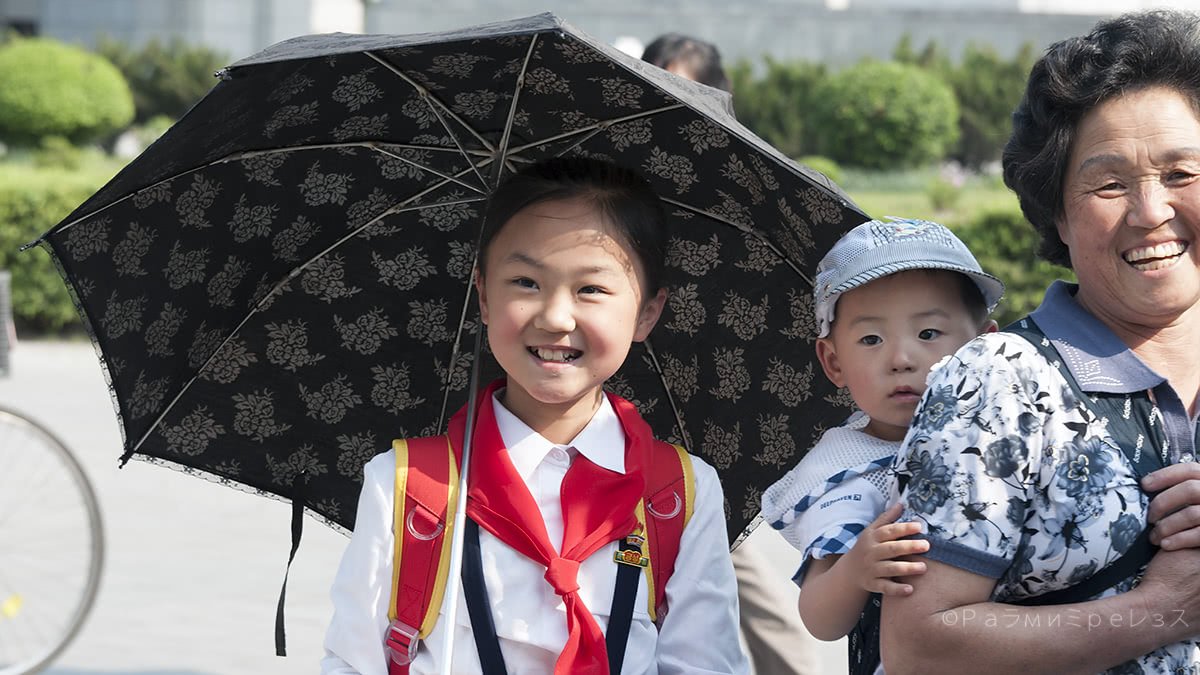
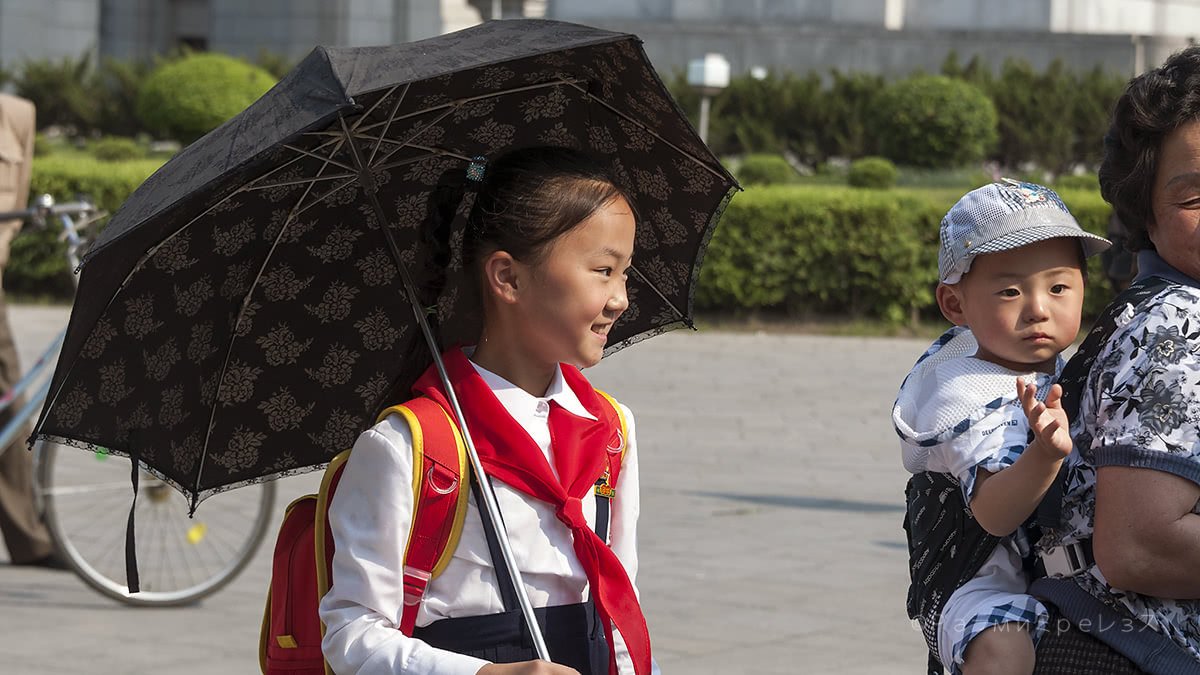
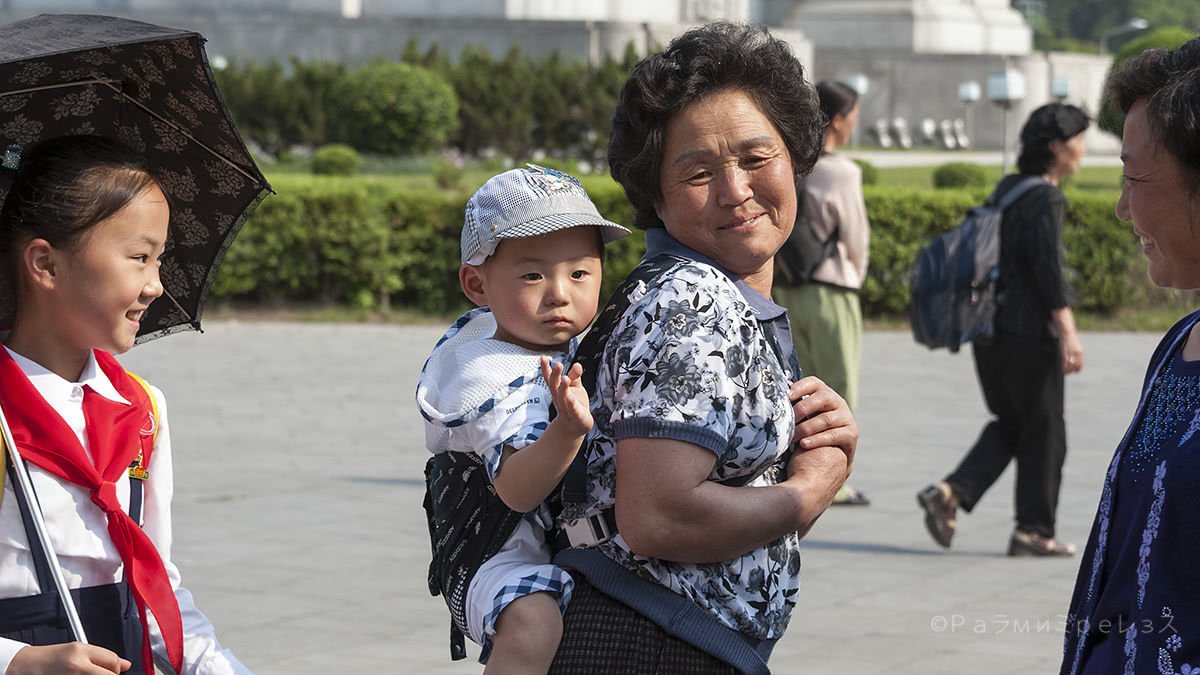

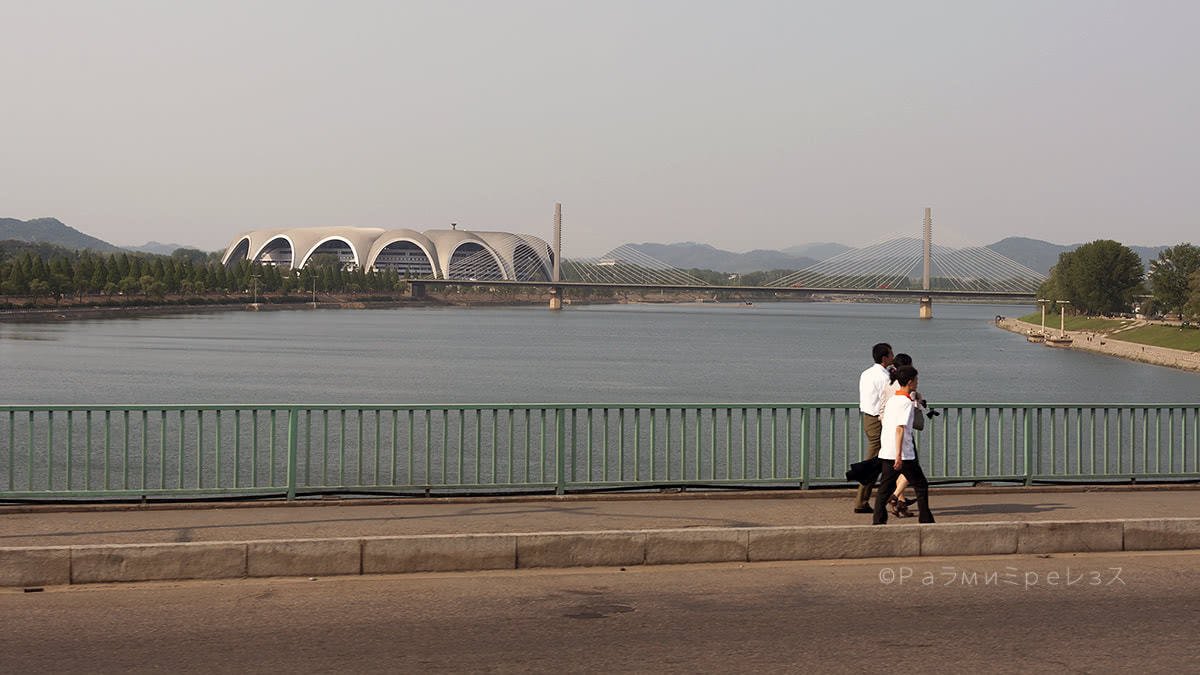

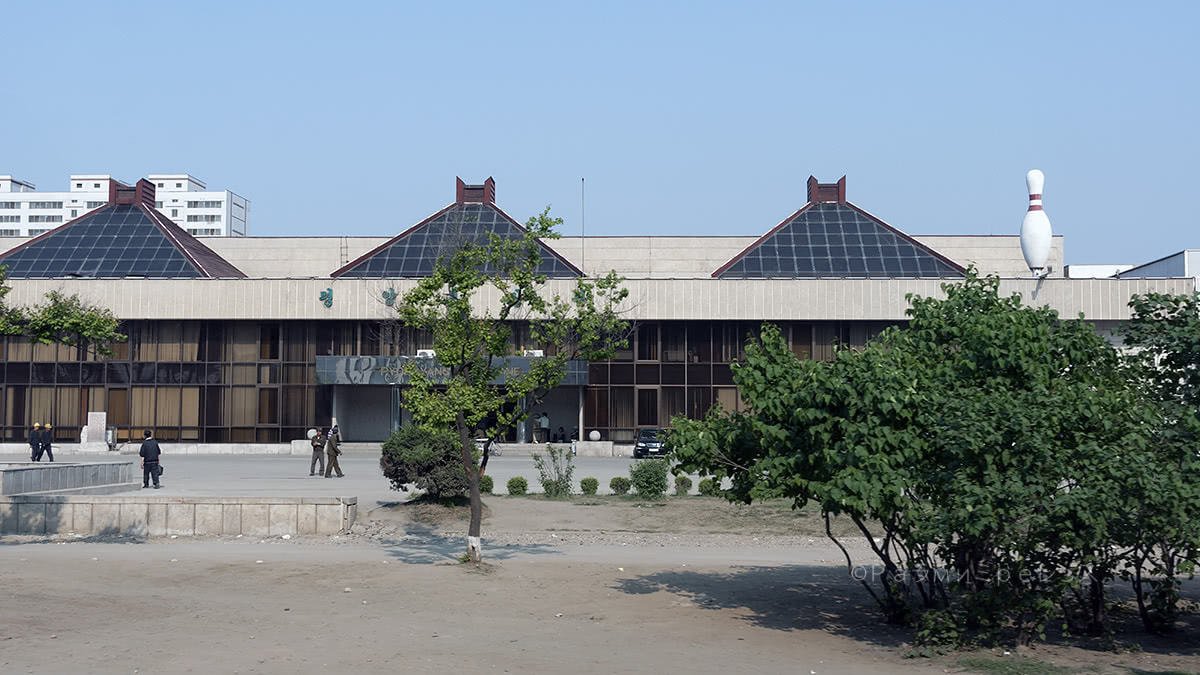
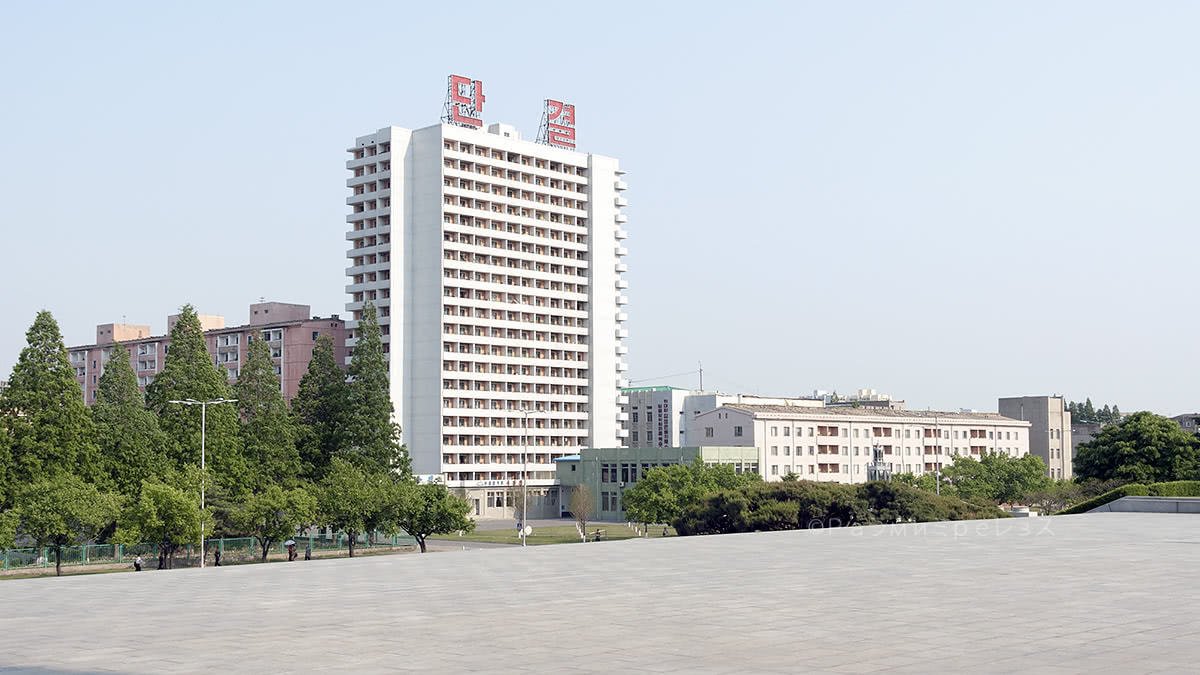
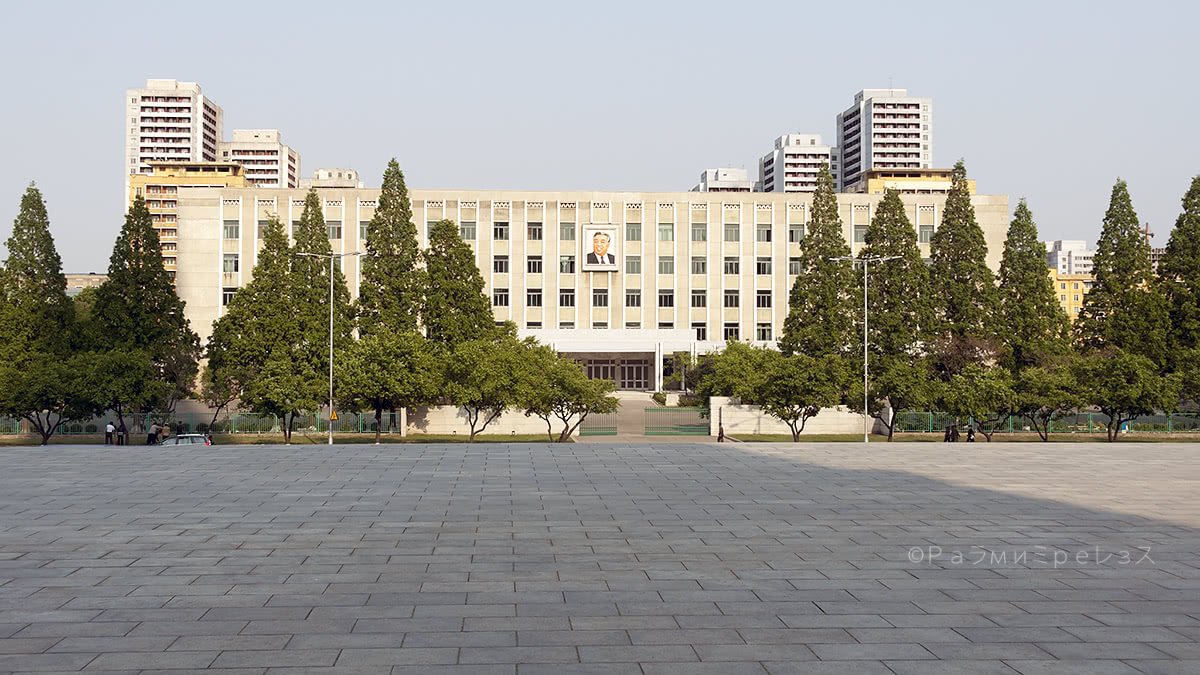
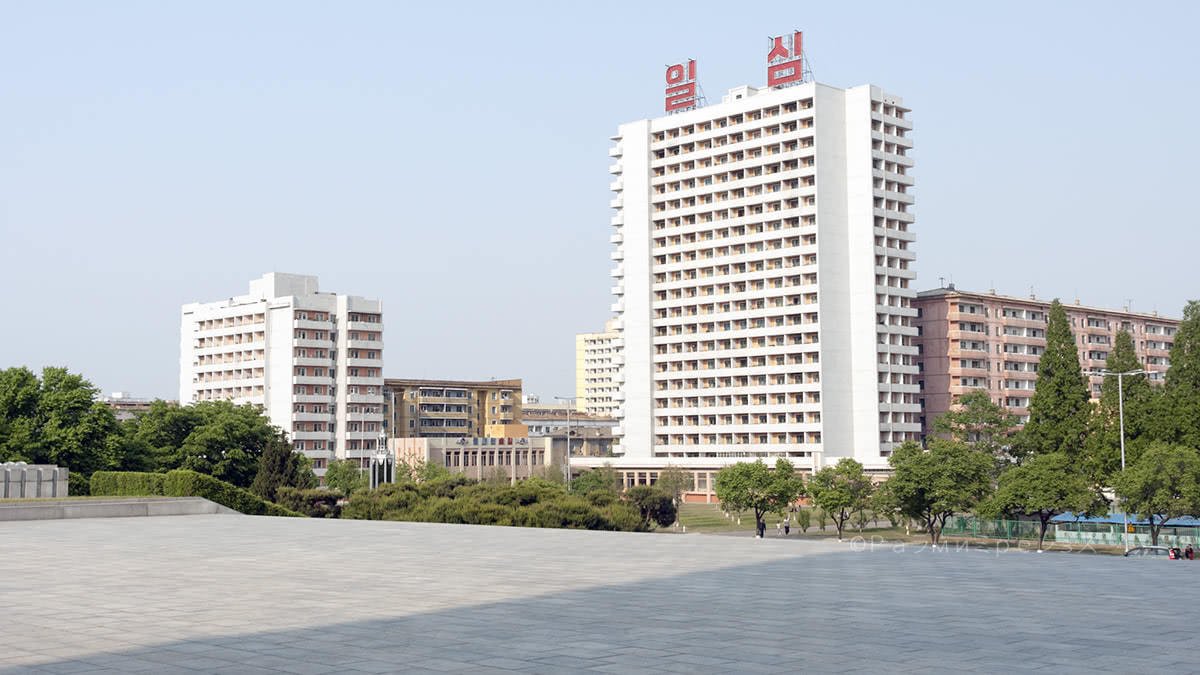
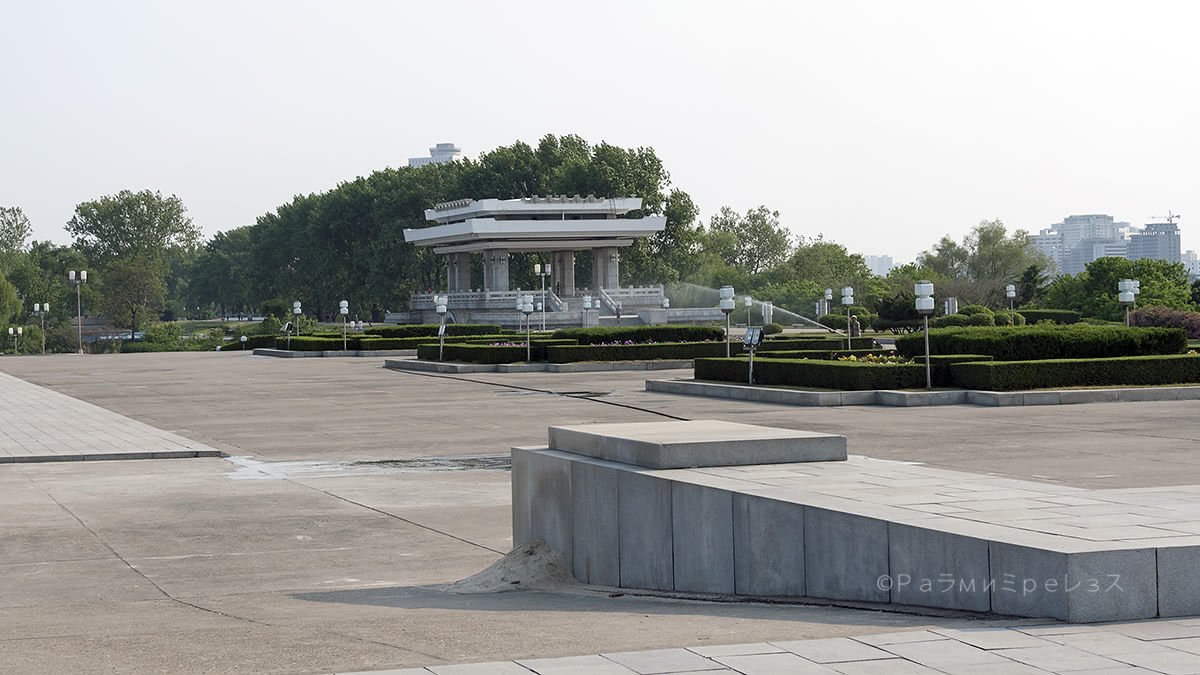
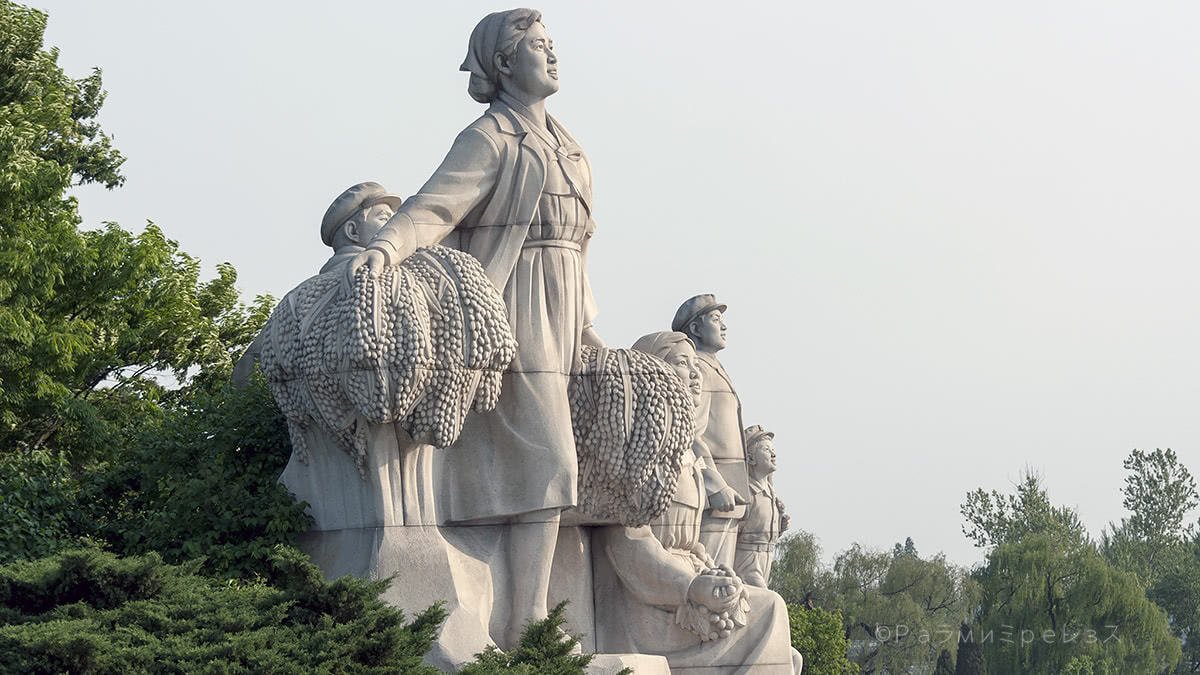
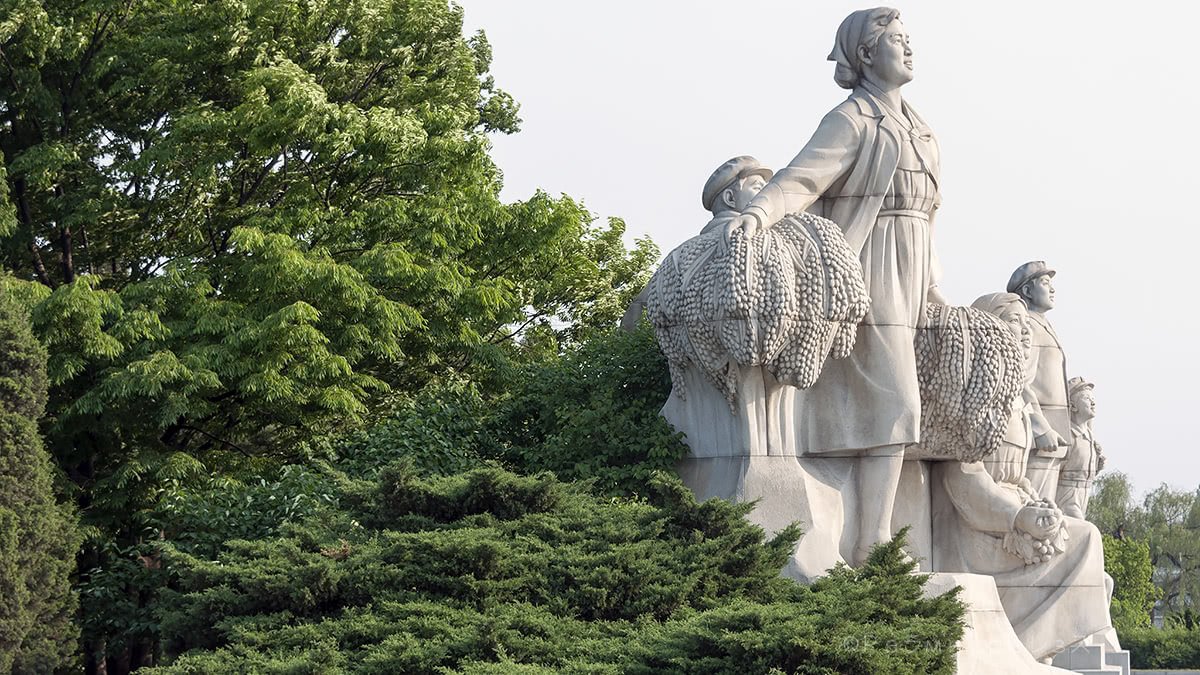
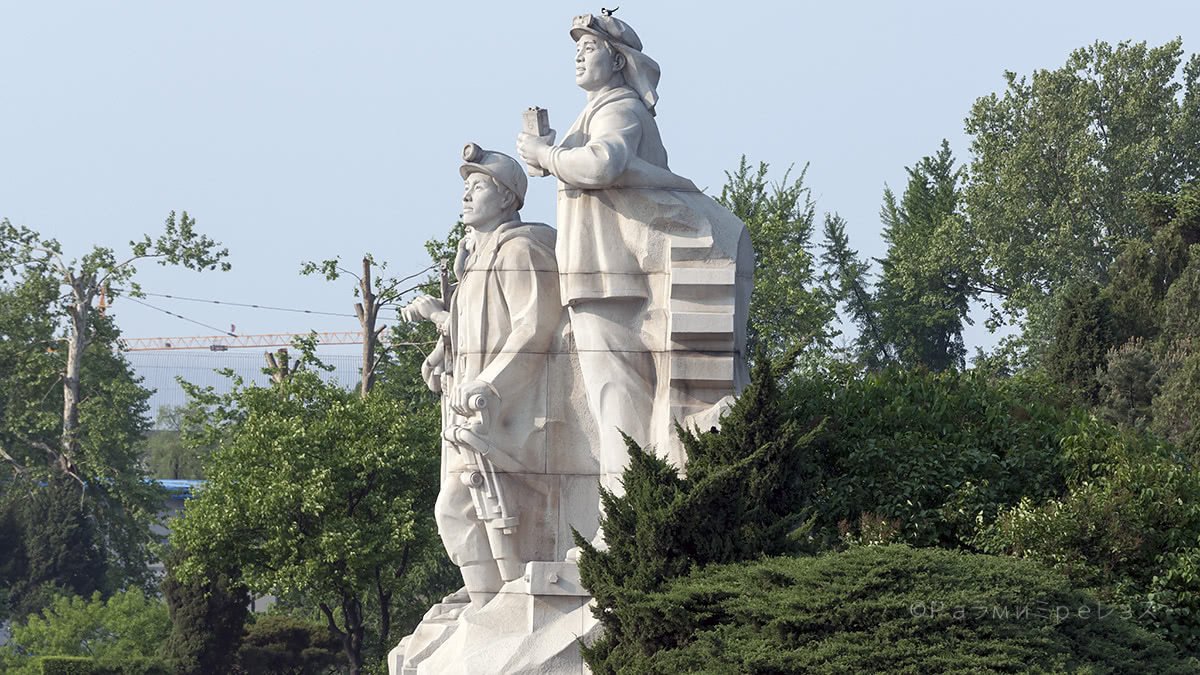
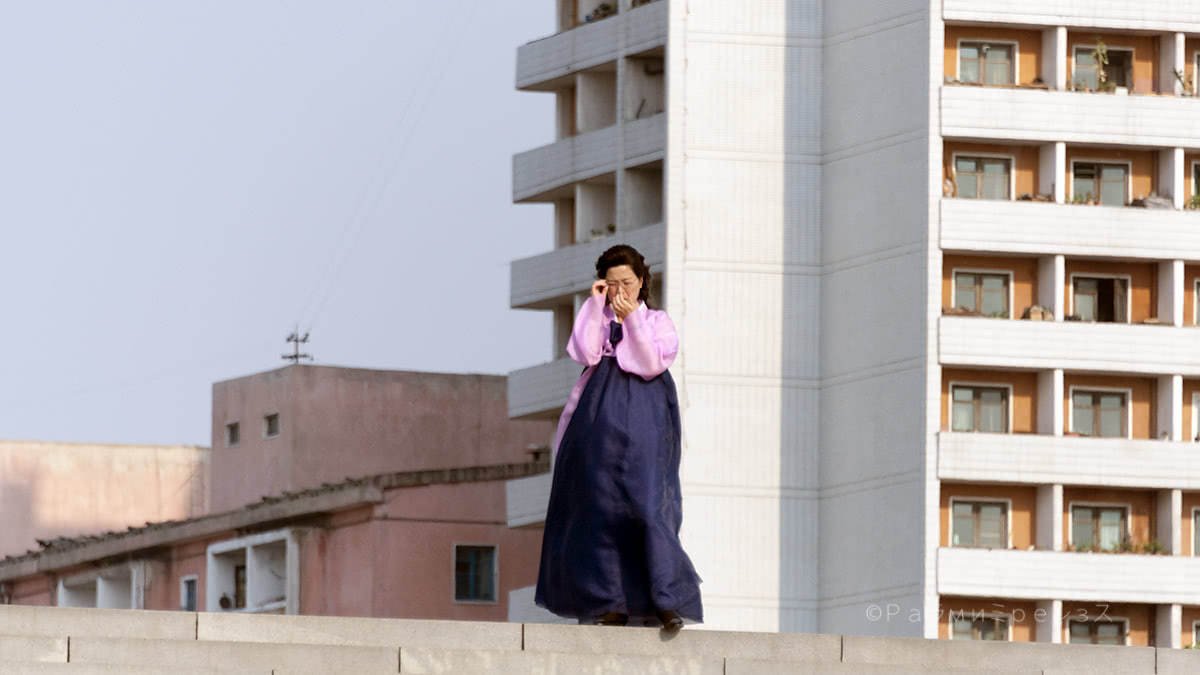
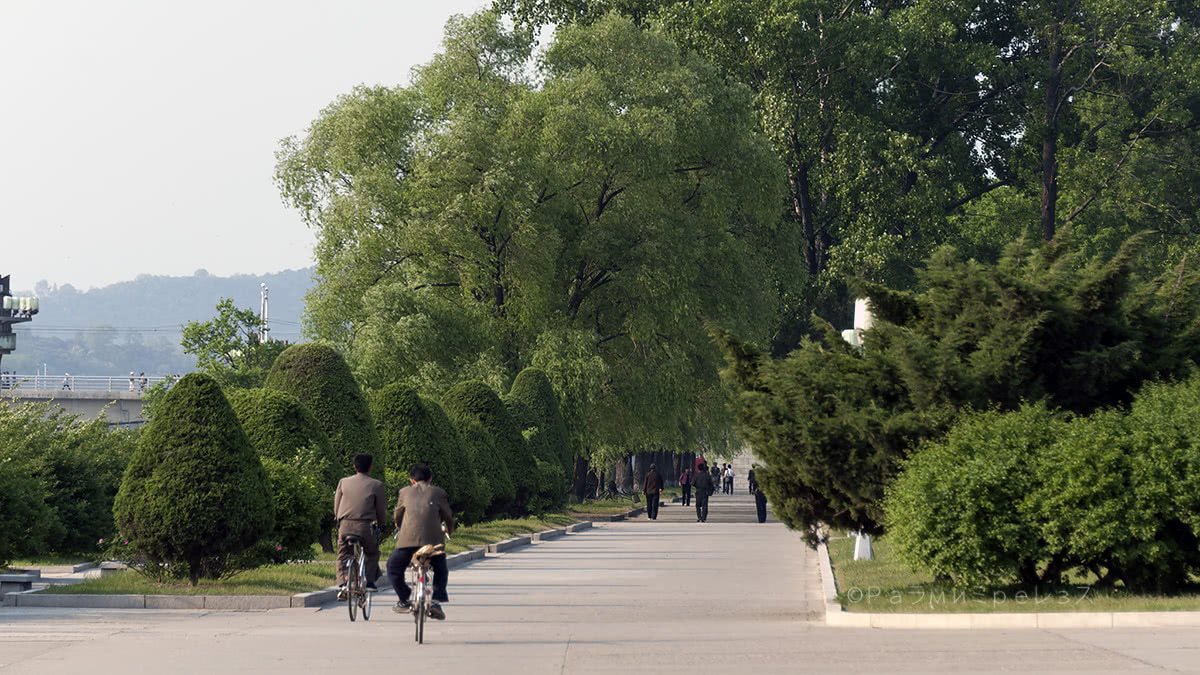
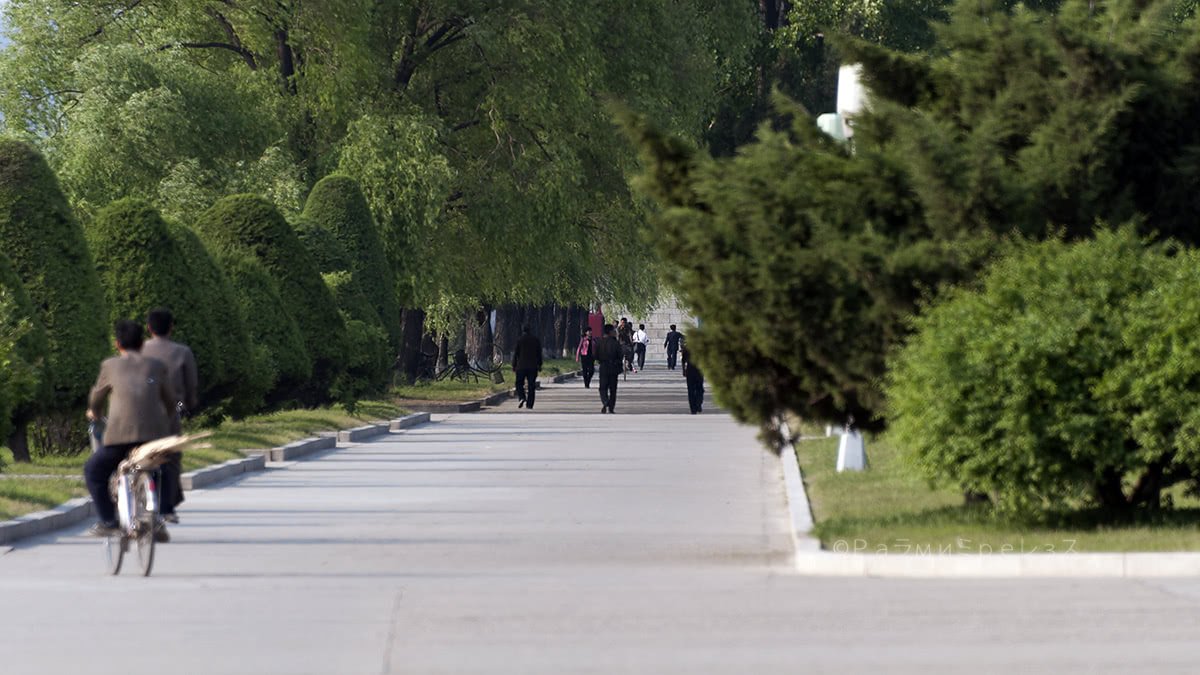
Other Pyongyang photos. The photos can be of any place or moment really, and do not have an established order.
This North Korea article is kind of long and thus is divided into seven (7) parts. You have just finished reading part three (3). Choose here any other part you may want to go to: | One (1) | Two (2)| Four (4) | Five (5) | Six (6) | Seven (7) |